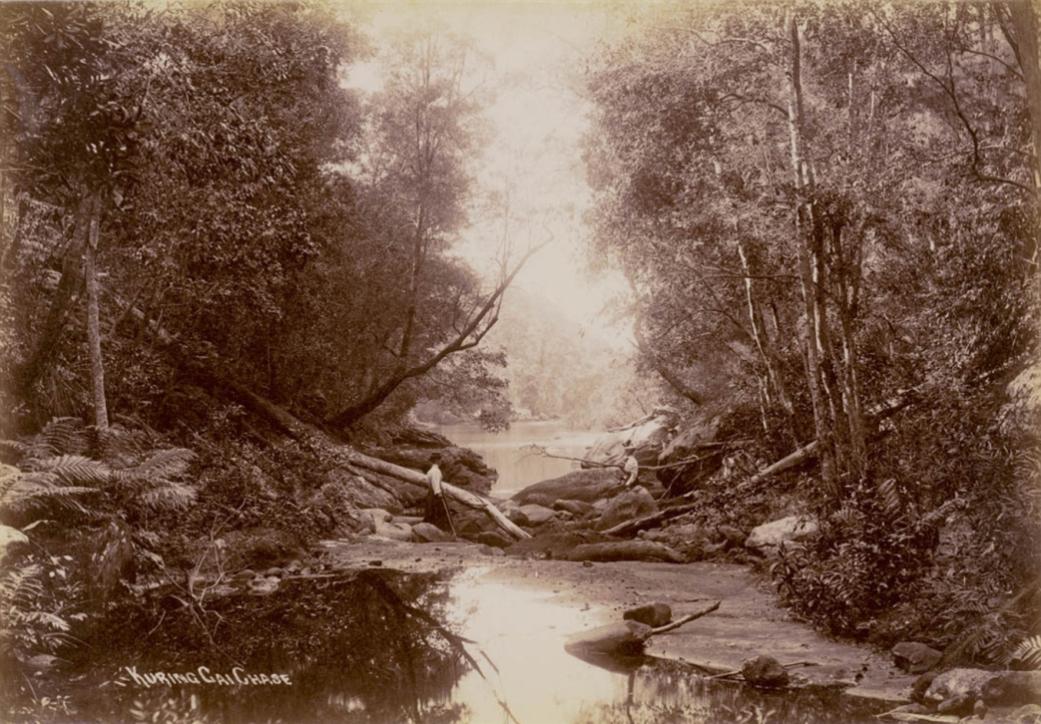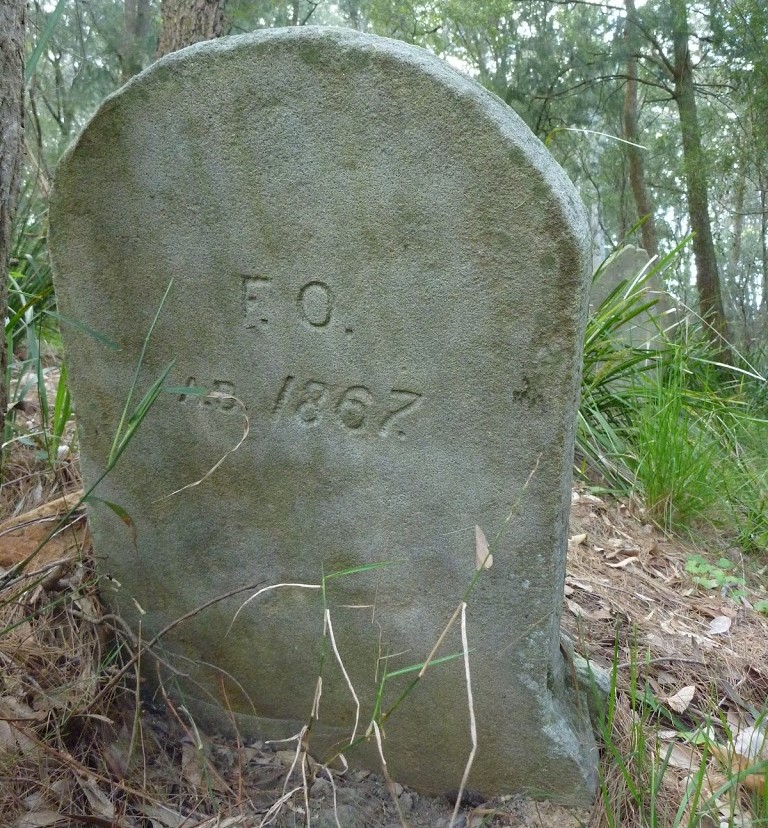January 13 - 19, 2019: Issue 389
Pittwater Summer Houses: Rocky Point And Elvina Bay Peninsula - A Place Of Holiday Songs And Operas In Ventnor, Fairhaven, Trincomalee And Maritana

'Scotland Island, Newport, Pittwater, N.S.W.', photo by Henry King, Sydney, Australia, c. 1880-1886. and section from to show cottage on neck of peninsula at western end with no chimneys through roof. From Tyrell Collection, courtesy Powerhouse Museum



'Orange Orchard' by Charles Kerry, circa 1887-1888. From Tyrell Collection, courtesy Powerhouse Museum

'At Pittwater' by Charles Kerry, circa 1887-1888. From Tyrell Collection, courtesy Powerhouse Museum

'Pittwater, Broken Bay' by Charles Kerry, circa 1887-1888. From Tyrell Collection, courtesy Powerhouse Museum
A slice of even older Sydney is shown in that the grandfather of two of the 1890's developers, E.E. A and F. A Oatley, is James Oatley, the gentleman who was paid £75 to provide the 'town clock' for the Hyde Park Barracks, while Joseph Washington Flood the other landholder, had a mother, Charlotte (nee Hannam), wife of Edward Flood MLC, who first met Mary, the mother of James' sons Frederick and James Jnr. when a child aboard the Northampton that arrived in Sydney Town on June 18th, 1815.
The Flood-Oatley connections don't end there - Edward Flood was later a witness to James Oatley's Will in 1839 and lived with Jane Oatley (nee Weedon), wife of Frederick Snr., as he aged and that the Flood, Oatley Weedon and Hannam families were getting Land Grants beside each other from the 1820's on - more on that below. News this week that the Hyde Park Barracks is to close at the end of this week, and that the clock James Oatley built is being allowed to wind down for the first time in 200 years is just one of the stories that coincides with the first look into Elvina-Rocky Point Pittwater Summer Houses for 2019.
Arthur Brascombe Wood's 'Maritana' dates from earliest times too. Named for a very popular opera this conjures up resonances of music and fine song floating across the water. A generation on, one of the wonderful summer homes built for enjoyment by Walter Gibson, youngest son of that Gibson & Foy connection, simply for enjoyment of our pristine waterways and tranquil, and called 'Maritana' still, has just come onto the market and is currently listed by L J Hooker Mona Vale - details and great pictures here.
'Maritana' isn't the only instance of song floating across those waters - at Rocky Point the house built by James Booth for Arthur Stevens - Arturo Steffani, had a higher room for music and he too was involved in teaching music, as well as being famous for hosting great parties to which some of our earliest brilliant Painter Artists came. Known as 'The Red House' by locals then this became the holiday idyll of a few others before passing into the hands of members of the Foy family too.
The 2019 listing of 'Maritana' follows on from the selling in March 2018 of 'Ventnor', one of the original cottages and once of just a few rooms, on that peninsula.
These wouldn't have been the only instances of 'music floating across the water' in this locality:
"Now we shall go up McCarr’s Creek to a little inlet called Brown’s Bay. George Brown and his family were the owners of the 41 acres estate "Waterside", a grant made in 1880. His house of weatherboard stood on the hillside, reached by a zig-zag path from the little stone jetty. The estate extended right to the head of the bay, where there is a gully, clad in various kinds of flora interesting to the botanist. Two old peach trees grew in front of the verandah, which was supported on pillars and at the head of the bay, passion-fruit vines grew over the rocks and trees. A track from Church Point led to it and on the way round exquisite glimpses of the creek were obtained through the gum-trees. I often stayed with the Browns at this old house and in the years 1909-10, it was a sequested spot, quite isolated even from the few inhabitants of Church Point.
More than forty years ago the visitor drifting along in his boat would have heard the trains of the piano adding glamour to the peaceful night. Our hostess is playing an old hymn or some melody of bye-gone days and an atmosphere that is almost Victorian is imparted to the drawing-room. Outside the bush is dark and dreamy and mysterious insect voices accentuate the sense of loneliness. Now that old home has disappeared and the motorist travels to Coal and Candle Creek over its site, quite heedless of those halcyon days." - JSN Wheeler, Some Old Families Of Pittwater, n.d. - republished in Manly Warringah Journal of Local History, v.4, no.1, Sept 1991, p.20-32
George Brown and his family had some troublesome as well as delightful times:
METROPOLITAN DISTRICT COURT. Wednesday; In this case John Sumersgill, of Albert-street, Redfern, sued George Brown, of Church Point, .Pittwater, for £200 damages for wrongful seizure, verdict for the defendant, without costs. METROPOLITAN DISTRICT COURT. (1892, May 26). The Sydney Morning Herald (NSW : 1842 - 1954), p. 3. Retrieved from http://nla.gov.au/nla.news-article13868674
BROWN-TAYT.- June 25, 1902. at St. Thomas' Church, North Sydney, by the Rev. Stephen D. Childe, B A, George Brown of Waterside, Pittwater, third son of the late William Brown, to Emilly Matilda Elanor, youngest daughter of the late Captain William Tayt, of North Sydney. Family Notices. (1902, July 26). The Sydney Morning Herald (NSW : 1842 - 1954), p. 1. Retrieved from http://nla.gov.au/nla.news-article14471685
A seven-roomed cottage, owned and occupied by Mr George Brown, of McCarr's Creek. Pittwater, was destroyed by fire on Sunday evening. Rats gnawing at wax matches is the supposed cause of the fire. GLEANINGS. (1912, March 7). Singleton Argus (NSW : 1880 - 1954) , p. 1. Retrieved from http://nla.gov.au/nla.news-article80059234
By Order of the PERPETUAL TRUSTEE CO., Limited, ADMINISTRATORS of the Estate or the Late GEORGE BROWN. NORTH SYDNEY. 1.-A CORNER BUILDING SITE, part of Lot 17, Section 12, of tile St Leonards Township 2.-AN ORIGINAL HALF-ACRE BLOCK. Lot 1, Section S3, St Leonards Township, having 66ft towest side of Wr-.-STIIEET and 330it to PALMERSTREET, extending back to FLAT (late Abbott) STREET, to which it has 66ft frontage. 3. McCARR'S CREEK. PITTWATER. 41 ACRES, being Portion 26. parish of Narrabeen, fronting McCarr's Creek, with deep water off portion of the frontage. Only a SHORT DISTANCE SOUTH of CHURCH POINT. RICHARDSON and WRENCH, LTD. (in conjunction with PERCY WOODS, Cremorne Junction), will sell by auction, at His Rooms, 92 Pitt-street on FRI-DAY, 5th SEPTEMBER, at .11..10 a.m. The above Lairds at North Sydney and Pittwater. Plans on view at the Rooms. Torrens Titles..Advertising (1919, August 23). The Sydney Morning Herald (NSW : 1842 - 1954), p. 21. Retrieved from http://nla.gov.au/nla.news-article28096590
An even older insight shows in the stories of those European settlers reporting meeting with the original inhabitants and in the Aboriginal petroglyphs that are still to be found on the rock platforms above this green and blue world. That too is related to 'song'.
The first European land holder on the peninsula was William Oliver, born in 1805 to Henry and Margaret Oliver. Henry had a 45 acre grant of land on present Pacific Highway, Killara, opposite the turn-off to Fidden’s Wharf. The Olivers were engaged in cutting timber, and as the land was cleared it was cultivated. William looked further afield, and found good stands of timber on the shores of Pittwater in the 1830s and had obviously taken land to farm and hired men to cut timber from by at least 1837:
CAPTURE OF THE BRISBANE WATERS BUSHRANGERS.
The three men, Joseph Bennett, T. Weeks, and William Noblett alias Smith, all prisoners for life, per Lady Kennaway, (2) class convicts) who escaped from Goat Island, on the 14th of March, having been captured, were placed at the bar of the Police Office, yesterday, when the following evidence was elicited.
William Shields, a constable in the Police, and district constable at the North Shore, deposed that on Wednesday the 3rd of April, he was in pursuit of the prisoners with constables Hogan, Brofit, and Lovell ; they saw them in a boat, near Mullet Island, but lost sight of them. On the following day they saw Weeks standing sentry over a boat, with a gun in his hand, they went towards him, and, he ran up the rocks, when several shots, were fired at him, but without effect, witness still pursued, and found him concealed under a rock, the gun lying at his feet ; he took him into custody, the gun was loaded with a musket ball, and a quantity of buck shot and powder, a percussion cap was on the nipple, and a box of them was found in his pocket. He took possession of the boat with a quantity of stolen property in it, consisting of blankets, clothes, tea, sugar, wheat, &c. The place where they captured Weeks was about a mile up Moonee Moonee Creek, off the Hawkesbury, three days journey from Sydney. The boat belonged to Sullivan, the property to Mr. Oliver. He then manned both boats, and they pulled up the creek, to capture the other runaways, but did not fall in with them at that time.
Constable Brofit deposed, that he was left with Weeks in custody, at Mr. Peak's, the corner of the Creek and the Hawkesbury. On Monday last, he was informed by a native black that the two men were on the Island, near the house, he went after them, and found upon landing on the Island, they were leaving it upon a raft, they had made; he followed and coming up with them on the main, ordered them to hold up their arms or he would fire, they said they had no arms, and he made them prisoners. They had nothing with them but two knives, and were dressed in clothes that were claimed by Mr. Clark.
Mr. Clark, a settler, deposed that on the 15th May his wife told him that a man had been at his hut, and wanted some provisions ; he went down to the creek, and, saw Weeks upon the other side ; he said he wanted something to eat, and had come all the way from Newcastle ; Clark told him he could not accommodate him, and that he had better go to a man who lived near, who was a good kind of man ; he told Weeks that the Mounted Police were in the neighbourhood, looking after two blacks, who replied, " Aye, aye," and went away ; on the 17th he left his hut, his wife being then in Sydney, and had scarcely been about four minutes absent, when, upon returning he found Weeks and the two other prisoners coming out of the house laden with his property ; Weeks had his gun, and upon asking him where they were going, he said, " d — it ; what's that to you ; " witness dog commenced barking, and Weeks presented the gun at him ; thinking it might be presented to himself, he said nothing ; they took away property valued at £20, and among the rest two gallons of rum, which they told him, since they were captured, was very good.
William Lowe, a resident at Pittwater; was robbed of some of the property now produced ; could not say by whom.
Michael Sullivan, lived at Pittwater, to the north of Melville's farm, near Murrumjoca; he was robbed of a boat on Saturday week last, which he had left at Foley's farm.
William Oliver, lives at Lane Cove, but has a farm at Pittwater, to the west of Melville's; he was robbed of a pig and pistol, wheat, tea, sugar, flour, &c.
Andrew Hogan, living at Mr. Oliver's farm, Pittwater, stated, that on a Saturday night he was in bed about eleven o'clock at night, when he heard a knock at the door; he asked who was there ; they said open the door, or they would soon break it open, they were constables ; it was opened by a man who slept in the back room ; Bennet entered with a gun in his hand, and stationed himself at the fire-place; Weeks searched the place, and had a candle ; there was is a third man, but he could not recognise him as he held down his head ; one of the men said he wished to see Mr. Oliver, as he was very fond of taking bushrangers; (this related to Mr. Oliver's praiseworthy conduct in capturing Louis Barra, the bushranger in that district.)
Joseph Field, remembered all the three men coming to Mr. Oliver's, hut and robbing it; he recognised each of them, and remembered the expression relative to Mr. Oliver.
Mr. Ryan identified them as the men per Lady Kennaway, each for life, and second class convict, belonging to Goat Island, without irons.
Walter Scott, Superintendent of Goat Island, deposed to their absconding.
The whole of them were, committed, and then asked what they had to say for absconding? Weeks replied, through the tyranny at Goat Island, and the danger of being flogged. They were convicted of absconding. Sentence stayed. CAPTURE OF THE BRISBANE WATER BUSHRANGERS. (1837, April 15). The Sydney Gazette and New South Wales Advertiser (NSW : 1803 - 1842), p. 2. Retrieved from http://nla.gov.au/nla.news-article2210427
The Quarterly Transfer of Licenses took place on Tuesday last, when the following transfers were consented to by the Bench :— … the Sawyers' Arms, Lane Cove, from Thomas Johnson to William Oliver... No title (1836, October 7). The Australian (Sydney, NSW : 1824 - 1848), p. 2. Retrieved from http://nla.gov.au/nla.news-article36856955
In a double wedding on 25 February 1833, John Johnson married Charlotte Oliver, and Daniel Bullock, sawyer, married Bridget Oliver. Bridget was the sister of William Oliver and the unmarried mother of Charlotte. William’s other sister, Margaret, married Peter Joseph Duffy in 1836. John Johnson, Daniel Bullock and Peter Duffy were all involved in 1844-45 with the illicit distillery at McCarr’s Creek.
Johnson moved to the new Sawyer’s Arms, a long slab and bark hut on Henry Oliver’s grant, opposite Fidden’s Wharf Road. He held a licence there from 1834 to 1838, and then moved to the George Inn, on the corner of Market and Castlereagh Streets, Sydney, in 1839 and 1840. Finally on 1 January 1841 he took a lease of McIntosh’s 200 acre grant at present Bayview, for £20 per annum.
William Oliver held the licence for the Sawyer’s Arms in 1836, 1837 and 1840, as well as farming his land at Pittwater.
Daniel Bullock held the licence for the Sawyer’s Arms in 1839, and later moved to the New Inn at Lane Cove, holding that licence from 1843 to 1845. Bullock supplied yeast to the distillers, and later received the illicit rum. - An Illicit Still At McCarr’s Creek By Shelagh Champion OAM, 2012
On 22 October 1838 William Oliver of Pitt Water applied for permission to purchase 25 acres of land, “bounded on the east by the waters of a small bay about one mile south west of Scotland Island ...” He added, “My intention is to convert the same into a market garden. His application was approved on 9 January 1839, but he does not appear to have proceeded with this purchase. [AO Reel 1169] Instead, on 28 December 1839 William Oliver purchased 50 acres of land at the Basin from Robert McIntosh II for £50. [LTO Book Q No.489] He sold this land to William Small for £300 on 5 December 1854. [LTO Book 35 No.78] [2.]
William Oliver’s first grant of land at Elvina was 30 acres at the head of Elvina Bay, which he purchased on 9 March 1842 for £45. This Notice is interesting for the fact that land at Bathurst was selling for £2 per acre, while at Manly and here it was 12 shillings which would change to £341.02 or around $700.00 in 2000:
Colonial Secretary's Office
Sydney, 8th March, 1842.
SALE OF LAND.
AT Eleven o'Clock of WEDNESDAY, the 9th instant, the Colonial Treasurer will put up to AUCTION, at the Colonial Treasury, on the tferitis authorised by Government, the undermentioned PORTIONS OF LAND, which have been more fully described in the Notice from this Office, dated 8th February last.
8. Cumberland, 50, Fifty acres, parish of Broken Bay, at the Basin, Pitt Water. Upset price 12s. per acre.
9. Cumberland, 30, Thirty acres, parish of Broken Bay, opposite Scotland Island, at Pitt Water. Upset price 12s. per acre.
10. Cumberland, 50, Fifty acres, parish of Broken Bay, at the Basin, Pitt Water. Upset price 12s. per acre.
By His Excellency's Command, DEAS THOMSON. SALE OF LAND. (1842, March 8). New South Wales Government Gazette (Sydney, NSW : 1832 - 1900), p. 385. Retrieved from http://nla.gov.au/nla.news-article230661044
According to Thomas Oliver, the family moved to Pittwater in 1844, before he was one year old. At first, they lived on this grant, and also worked the land at the Basin.
William conveyed the Elvina Bay land to Thomas Oliver for £100 on 28 November 1881. [LTO Book 238 No.125] Thomas, farmer and master mariner, conveyed part to Arthur Wood, Master of Petersham Public School, for £40 on 7 May 1884. [LTO Book 291 No. 547] He also conveyed 31 acres (of the nominal 30 acre grant) to John George Cousins on 4 November 1885, for which he received £523. [LTO Book 329 No.477]
Louis Johnstone v. Thomas Oliver.— The parties to this suit are residents of Pittwater, and the claim was a small one for wood supplied,and an additional £55 for an alleged assault. A verdict was given for £20 and costs. Mr. W. T. Shorter was solicitor for plaintiff, and Mr. J. Lowe appeared for defendant. DISTRICT COURT. (1890, March 21). The Daily Telegraph (Sydney, NSW : 1883 - 1930), p. 3. Retrieved from http://nla.gov.au/nla.news-article235719869
William Oliver’s second land grant was 40 acres at Lovett Bay, adjacent to his Elvina Bay land. He became the purchaser by Conditional Sale for £40 on 4 March 1862, and it was formally granted to him on 27 September 1866. [LTO Vol.34 Fol.84]
Other sources indicate that in 1871 Frederick Fahl made a Conditional Purchase of 40 acres, Portion 111, at McCarrs Creek on the south point of Elvina Bay. In 1889 this Portion is granted to Arthur Branscombe Wood and shows on a slightly later cartographic map as 'Maritana' and sometimes is spelled 'Meritina' after a then very popular opera. Mr. Woods also owned 40 acres at 'Woods Point'.
'Maritana' was sold to Walter Gibson, youngest son of William Gibson after Mr. Woods wife died in 1920 - see Maritana section below.
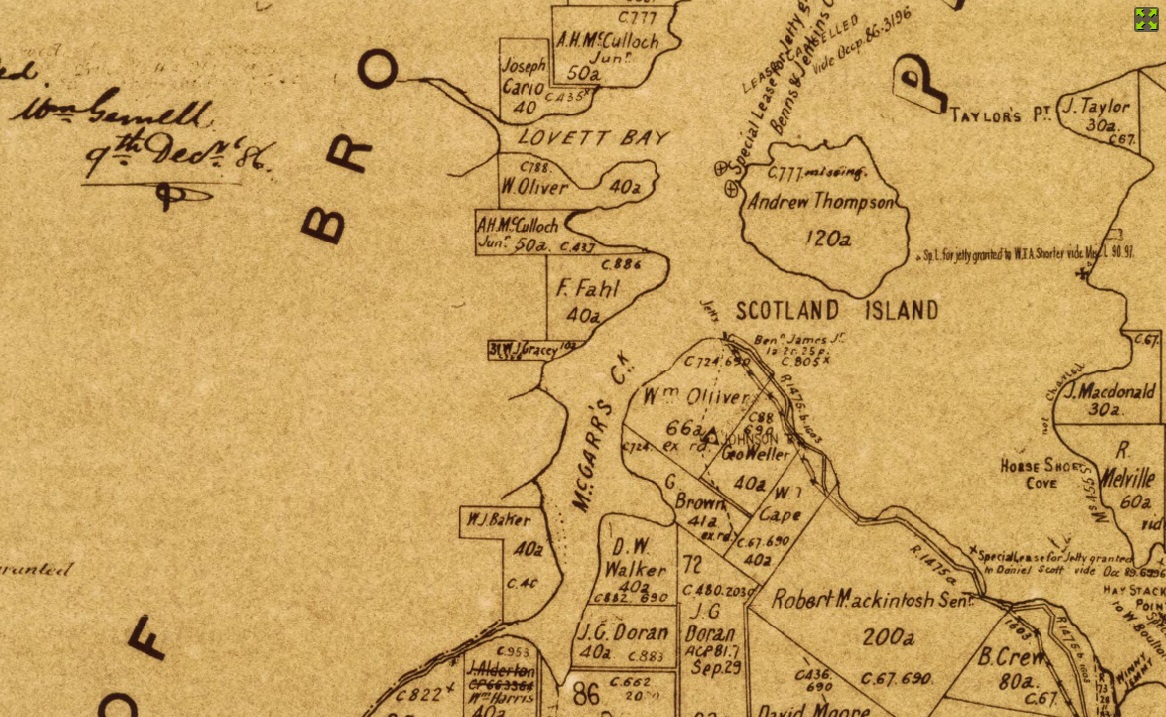
Section from Parish of Narrabeen, County of Cumberland [cartographic material] : Metropolitan Land District, Eastern Division N.S.W. December 9th, 1886. MAPG8971.G46 svar (Copy 1). Courtesy National Library of Australia - showing Elvina section landowners
In 1882 the first 30 acres was advertised for sale:
PITTWATER. NORTH OF MANLY BEACH. OLIVER'S WATER-FRONTAGE FARM of 30 ACRES. on the WEST SIDE of the BAY, about 1 ½ mile from BOULTONS HOTEL, in the TOWNSHIP OF NEWPORT, and the STEAMERS' WHARF.
The Improvements comprise a Cottage of TWO ROOMS, about 7a. are cleared and partly cultivated, portion being an orchard of orange and other fruit trees, and the residue partly timbered land. The Farm is well watered by two creeks that run through it.
RICHARDSON and WRENCH have received instructions to sell by public auction at the Rooms, Pitt-street,' on FRIDAY, 19th MAY, at 11 o'clock, The ABOVE-DESCRIBED 30-ACRE FARM at Pittwater, within easy distance- 1 ½ mile -of the Newport STEAMERS' WHARF. Terms at sale. Advertising (1882, May 17). The Sydney Morning Herald (NSW : 1842 - 1954), p. 11. Retrieved from http://nla.gov.au/nla.news-article13511387
These Notices, where a record of William Oliver passing away is recorded, run shortly after the above advertisement. In 1882 he seems to have lost two of his sons in an accident in a boat in Pittwater, William and Henry being lost. Whether this occurred prior to the land sale and before he passed has not been able to be determined:
Sudden Death
A man named William Oliver, about 74 years of age, a very old resident of Pittwater, died suddenly, about 8 o'clock last night at the North Shore Hotel, near Circular Quay. After having his tea, apparently in his usual state of health he retired to the hotel parlour, where he was seen sitting alone for some time. At about '10 o'clock 'Mr'. Gerard, the hotel-keeper, went into the room and found Mr. Oliver quite dead, and his body cold. The matter has been reported to the city coroner. Sudden Death. (1882, May 31). Evening News (Sydney, NSW : 1869 - 1931), p. 5. Retrieved from http://nla.gov.au/nla.news-article108205379
A man named William Oliver, residing at Pittwater, but who was staying at the North Shore Hotel, near Circular Quay, died suddenly at that house on Tuesday evening. Mr. Garrard, Landlord of the public-house, has reported to the police that Oliver had been out on business, and returned to tho hotel about 6 o'clock in the evening. After partaking of tea he sat down on a chair in the parlour. No particular notice was taken of Mr. Oliver, who appeared to fall asleep, until 10 o'clock, when Mr. Gerrard went to wake him as he thought, and found that he was dead. NEWS OF THE DAY. (1882, June 1). The Sydney Morning Herald (NSW : 1842 - 1954), p. 5. Retrieved from http://nla.gov.au/nla.news-article13512532
His wife passed away on July 12th, 1879, aged 75 years. They were both interred at the Church Point Cemetery.
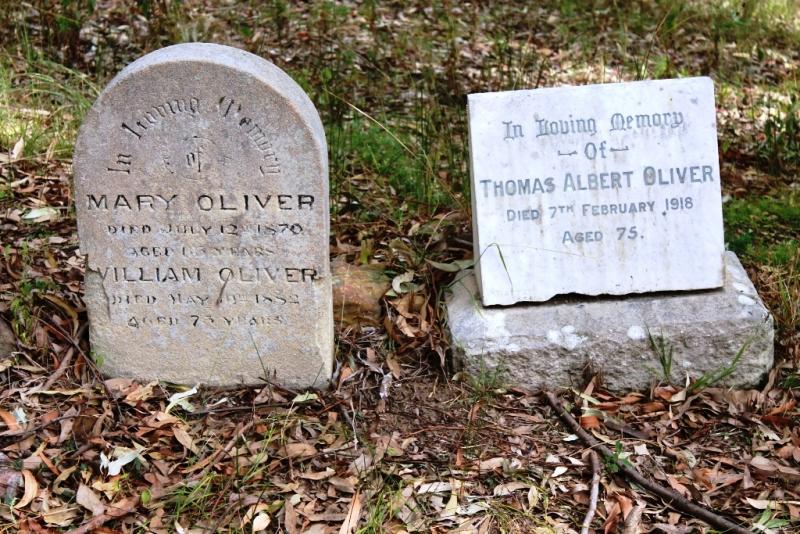
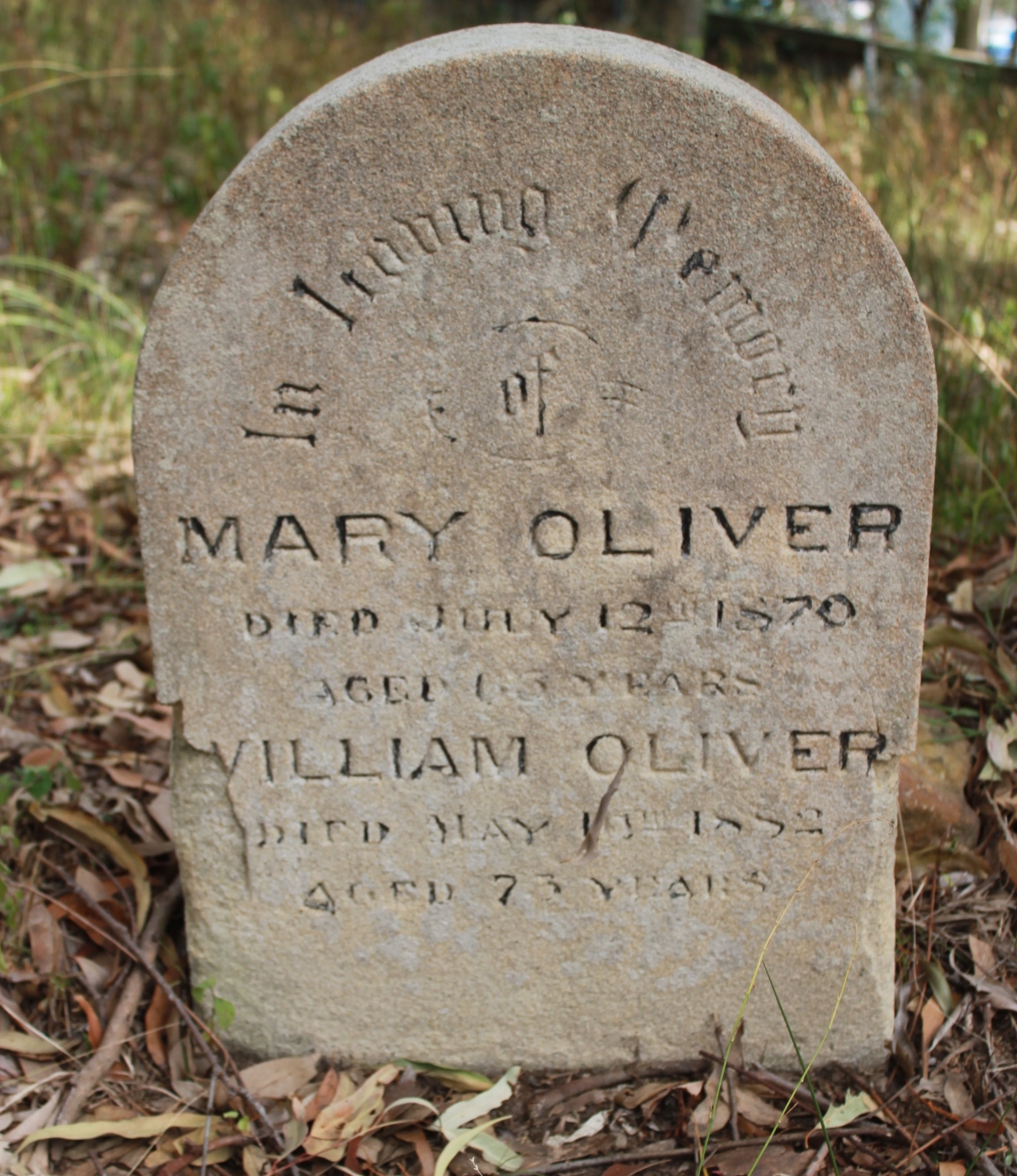
Some sources state ownership of the Oliver land on the Elvina peninsula was transferred to Samuel Crawford on 15 July 1881;
William Oliver’s farm was on what is now called the Peninsula. There he brought up a large family. The younger members, no longer young, tell of blackfellows who stole (or, as they call it, “bandicooted”) a whole paddock of potatoes, and of fierce looks and threats which frightened the little ones. Mrs. Oliver generally took care that an old musket should be plainly visible from the open door, before she sat down to talk to her children in her scanty leisure. One son and a grand-child died and were buried on the Peninsula. The great hole where William Oliver watered the bullocks which drew his produce by Lane Cove to Sydney may still be found, as well as many of the trees he planted.
When the Peninsula was first divided, it passed into the hands of two brothers (Crawford), who had brick-works on the land. They came to Pittwater only occasionally, and found the absence from town inconvenient, because there was no way of communication with the city, except by means of the man who carried the mail to Newport, and sometimes dropped a bag at the place where the track led towards Church Point. The task of meeting the Newport mail often fell to a daughter of Mr. Collins, and Mr. Crawford applied for a post office to be established on Mr. Collins ’ farm and for the appointment of Miss Collins as post mistress, a position which she held for more than half a century, later as Mrs. Roche. A name had to be found for the new post office and Mr. Crawford decided on Bayview, not then so hackneyed and commonplace as now. [4]
The Crawford's apparently called the Oliver cottage "The Retreat".
The Elvina peninsula then passed to Thomas William Willians on 16 June 1886. Others state that it was utilised by John Redman Snr. and then was purchased by Mr. Willans after his death. Legal documents show Mr. Willans had a Certificate of Title dated from February 1888, shortly before Mr. Redman's death.
In a letter to the Manly, Warringah and Pittwater Historical Society dated October 5th 1938 James Booth stated that
"A Mr. Redman bought the cottage from William Oliver and built the brick house; the bricks were made on the property from clay about 200 yards behind the house and towards the waterfall. Mr. Redman died 26/4/1888 and his home was bought by a Mr. Williams who had Surveyor Mocatta make a survey of the land and subdivided it into 30 allotments to form the ''Ventnor Estate'' in 1890. In the previous year Mr. Williams laid a water service through the area. From a pool at gthe top of Linda Falls a water supply was obtained by a two-inch pipe running down from the top of the cliff and along the whole length of the peninsula to a huge concrete reservoir. With the constant flow of water this was always full. In times of drought a supply was reticulated to the three homes on the peninsula, viz, -- "Trincomalee", "Fairhaven" and "Ventnor" from this reservoir."
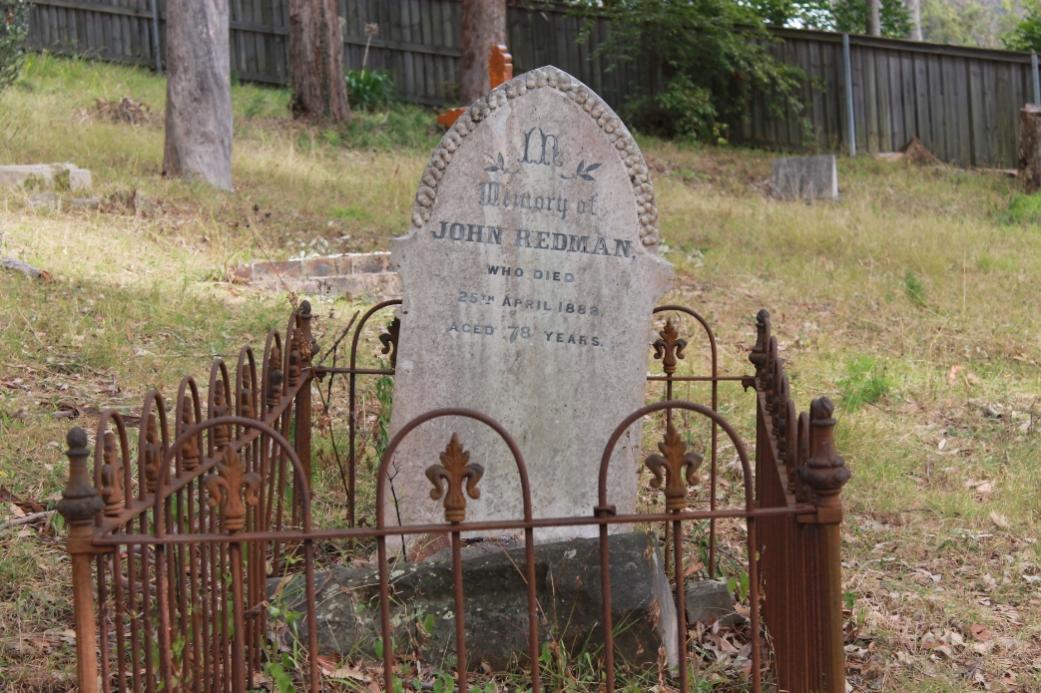
Mr. Redman is one of those whose tombstone may still be seen in the Church Point cemetery.
In the Supreme Court of New South. Wales.
ECCLESIASTICAL JURISDICTION.
In the will of John Redman, late of Pittwater, near Sydney, in the Colony of New South Wales, Esquire, deceased.
NOTICE is hereby given that after the expiration of fourteen days from the publication hereof in the New South. Wales Government Gazette, application will be made to this Honorable Court, in its Ecclesiastical Jurisdiction, that probate of the last will and testament of the abovenamed deceased, who died on or about the 24th day of April, 1888, may be granted to Benjamin James, of Sydney, Esquire, and John Redman, of the same place, gentleman, the two executors in the said will named.—Dated this 1st day of May, a.d. 1888.
STEPHEN, JAQUES, & STEPHEN, Proctors for the said Executors, 81, New Pitt-street, Sydney. ECCLESIASTICAL JURISDICTION. (1888, May 4). New South Wales Government Gazette (Sydney, NSW : 1832 - 1900), p. 3195. Retrieved from http://nla.gov.au/nla.news-article222760791
John Redman of Pittwater purchased 23 acres at Church Point on the point overlooking Pittwater from Jane James (nee Buist), the wife of Benjamin James (married 1868) on February 4th, 1888. Formerly the land was part of William Oliver’s land grant of 66 acres. On this property was a 3 room weatherboard cottage. After his death, the land now 17 ¼ acres, not 23 acres, is advertised in the Sydney Morning Herald (August 13th) for Auction on 15 August 1888.
Either way, Thomas W. Willans had possession of the Elvina peninsula.
Mr. T. W. Willans was born in Leeds, Yorkshire in 1854, the second son of Obadiah, textile mill owner in Dublin, and Clerk of Petty Sessions of New South Wales, and Annabella (nee Geoghegan). The family emigrated in 1861, when he was 7 years old, arriving per the 'Akbar' on April 19th, 1861. He trained as a surveyor and engineer.
WILLANS — JOHNSON. — December 2, at All Saints', Woollahra, by the Rev. H. Williams, assisted by the Rev. George North Ash, Thomas William, second son of O. Willans, Queanbeyan, to Emily Isabel, eldest daughter of Whittingdale Johnson. Family Notices (1885, December 19). The Sydney Mail and New South Wales Advertiser (NSW : 1871 - 1912), p. 1320. Retrieved from http://nla.gov.au/nla.news-article162823041
DISSOLUTION OF PARTNERSHIP.
NOTICE is hereby given that the partnership hitherto subsisting between us, the undersigned Thomas William Willans and John Haydon Cardew, carrying on business as surveyors and consulting engineers, under the style or firm of "Willans & Cardew," at 163, King-street, Sydney, has this day been dissolved by mutual consent. All debts owing to or by the firm will be received and paid by Mr. W. S. Buchanan, of 17, O'Connell-street, Sydney.—As witness our hands, this 1st day of June, 1886.
T. W. WILLANS. J. H. CARDEW. Witness,—E. Herbert Crossman, Solr., 177, Pitt-street, Sydney. DISSOLUTION OF PARTNERSHIP. (1886, June 4). New South Wales Government Gazette (Sydney, NSW : 1832 - 1900), p. 3887. Retrieved from http://nla.gov.au/nla.news-article221685633
It seems Mr. Willan was the gentleman responsible for installing the water supply to at least three earliest houses on Elvina and for a bigger home and more sheds at the Oliver cottage. The 'residence' described below appears to be the that said by some sources to have been built by Mr. Flood in 1890 - Mr. Flood was Joseph Washington Flood, a son of the Hon. Edward Flood and therein the Flood-Oatley ownership marks the turning point for the Elvina peninsula and the change to becoming the 'Ventnor' estate.
'Ventnor' was/is a seaside resort and civil parish established in the Victorian era on the south coast of the Isle of Wight, England. It lies underneath St. Boniface Down, and is built on steep slopes and cliffs leading down to the sea.
Closer examination of the photos atop this page shows the tree that has fallen into the bay at the head of the peninsula is in the same place and of the same size, so the 'improvements' shown in the structure in both photographs would date from between February 1888 and September 1888.
Two years after purchasing the acreage Thomas Willans was advertising:
TO SPECULATORS, INVESTORS, and GENTLEMEN in search of a WATERSIDE RESIDENCE.
That valuable property at PITTWATER known as THE PENINSULA, having an area of 40 ACRES, with one and a quarter mile WATER FRONTAGE.
The Estate can be easily irrigated by gravitation from an inexhaustible supply of PURE RUNNING WATER.
THE RESIDENCE Is built in a position from which magnificent views are obtained on all sides, and contains 12 rooms, and out-buildings, also RUSTIC COTTAGE, containing 4 rooms.
THE ORCHARD consists of 2000 TREES, viz.. ORANGES, LEMONS, ALL SUMMER FRUITS, OLIVES, FIGS, and FIJI BANANAS, and will shortly be yielding an annual income of £1000.
DUFF and COLLINS have been favoured with instructions from T. W. WILLANS, Esq., on account of his intended departure for Europe, to sell the above by public auction, at their Rooms, 109, Pitt-street, on MONDAY, SEPTEMBER 10. at 11.30 sharp.
BLACK and CO.'S Coach will meet 9 o'clock boat to convey intending purchasers to the property.
TITLE, TORRENS. NO RESERVE.
N.B.-Printed particulars, plans, and photographs, can be obtained from the Auctioneers. DUFF and COLLINS, Auctioneers, 109, Pitt-street. Advertising (1888, September 7). The Sydney Morning Herald (NSW : 1842 - 1954), p. 11. Retrieved from http://nla.gov.au/nla.news-article13696011
The property did not sell. In this 1889 article, penned by Manly resident Patrick Edward Quinn, the brother of poet Roderic Joseph Quinn, describes the Elvina or the Lovett peninsula:
A RUN TO PITTWATER
BY VIATOR.
"For what reason do the tall pine and the white poplar love to associate their branches in a hospitable shade?" was the question put by one of old who knew how to enjoy the good things of life to his friend Dellius. To the epicurean no verbal answer was necessary. The friendly trees made this grateful shade so that he might lie upon it in remoto gramine per dies festos and drink the good Falernian. This is the true way to look at life, as only the men of a fairer day knew it. For them-true beauty worshippers - the sea danced and laughed in the sunlight, the fleecy clouds were blown across the clear blue of those astounding skies, and the winds made a pleasant susurrus in the deep woods, and the birds sang, and the bees made sleepy music and sweet store of honey : for them the cataract roared, the grass grew and the violet crept across it, and the whole world lightened on its way simply to add to their pleasure. And all the wisdom garnered since by this wise old world shows that they were, in this right, by reason of philosophy, as simpler people were by intuition, who did the same. The other day I had an opportunity of spending a few dies festi on one of the many arms of Broken Bay.
To those who have not journeyed to Pittwater it is, perhaps, necessary to say that the route via Manly Beach is the most convenient way of reaching it. When the passenger arrives at Manly the Pittwater coach awaits him, and a drive of an hour and a half will land him at his destination. If the weather is gray and cold the trip should not be at- tempted. To be seen at its best Pittwater should seen in sunlight. There are several houses of accommodation about which offer the traveller all the necessary comforts. For my part I put up at the house of a friend who has one of the loveliest spots on the coast. Part of his land forms a peninsula, with deep, rich soil, in which the fig, the lemon, the orange, the olive, and the vine flourish to full perfection. There was at one time some excellent timber growing along the Pittwater road, tall, straight, sound, close-growing trees, which have for the most part disappeared under the woodman's axe within the last five years. This is a pity, but perhaps it could not be otherwise. The forest was too close to Sydney to escape the attention of wood merchants. There is still, however, quite sufficient native woodland to give the proper rustic air to these regions. How long this will be so under our present reckless system of forest destruction it is impossible to say, but those at least who own mighty tracts of virgin land along this road should endeavour to protect the native growths as far as possible from annihilation. We will regret our apathy in the matter of preserving our woods some day, when it is too late, perhaps, as the Herald has often pointed out, for anything but regrets. ...
After a journey there is nothing more pleasant than the after-tea gathering about a glorious wood fire, sipping the mellow liquid that glimmers in polished glasses, while every head is dimly seen bulking through a nebulous halo of aromatic smoke. My host had Theosophistic tendencies, and before long the conversation turned on the doctrines of the esoteric Buddhists. It is curious that quite a number of intelligent young Australians appear to be opening their mouths to swallow this many-humped camel of the Orient. Men who scorn the faith which accepts the Christian miracles are willing to receive as truth the tremendous miracles of the Theosophist, and do this without any apparent sense of the incongruous. Theosophism, however, can only be a vogue. It will never lay hold of Western minds as it has fastened on the men of the East. It has its foundation in the mind and not in the heart, and consequently it is a system and not a religion. But it is curious to note that it is growing here - most curious to hear its strange esotoric doctrines discussed in the spirit of a disciple in this isolated cottage, with all about it the mild growth of Australian life. How near we are to primitive nature is evidenced by the presence of a little black lizard, which, attracted by the warmth, comes out of some secret hiding-place and creeps towards the strange and beautiful fire which lures it to its doom. Outside, the southern stars blaze in the lucent night with a brilliance undimmed by a day of smoke. The dark waters sleep beneath, tranquil and secret.
There is a philosophical foreigner inhabiting these regions whose wont it is to row out on the water in his boat and fill himself up with whisky. His last wilful acts are to set the sails of his boat and then lie down to sleep, letting his bark go whithersoever the winds of heaven list. For hours this fatalist drifts hither and thither before his boat is driven to land. It is a whimsical enjoyment truly, but one that instinctively commands respect. He in his boat and we on the shore are in much the same position, drifted hither and thither, willy nilly, by winds and currents known not of till our boats ground upon the shore. ....
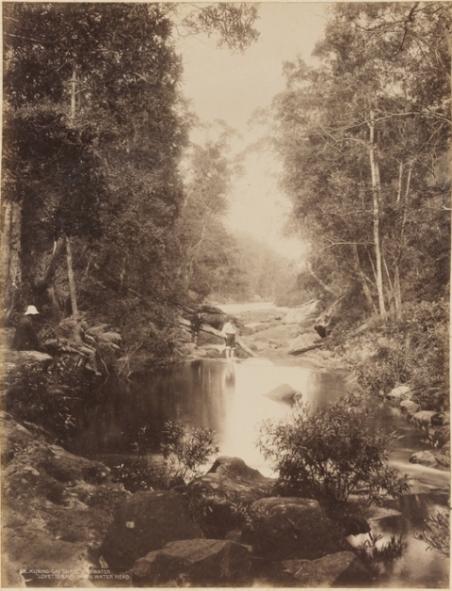
Head of Lovett Bay - from Photographs - New South Wales, 1879 - ca. 1892 / N.S.W. Government Printer. Image No.: 294068h, courtesy State Library of NSW.
In the cool early morning I took a stroll through the garden and orchard surrounding the house, on whose trees late oranges and lemons of unusual excellence were still pendant. Down by the waterside were millions of oysters, whose careless profusion suggested a flouted industry. A well-worn path under giant gums and sassafras trees led to a noted part of the grounds. Here was a waterfall tumbling fifty foot in smoke-like spray. The whole face of the cliff which was watered by the spray was covered with clinging plants, ferns, and funny looking creepers. About this spot the vegetation was as beautiful and luxuriant as I ever remember having seen it in the mountains. There were fern trees, as tall as the stateliest in the mountain gullies. Bangaloes of magnificent size, and 40ft, upon the trunk of a glorious blue gum there was a mass of Staghorn ferns as big as small cottage. From the trees the rope-like Supple jack descended, and the bushes about fairly blazed with blossoms. So thick was the growth that it was impossible to force a way through it. A fairer spot there is not on the coast anywhere in the vicinity of Sydney.
A huge Government reserve runs, back from the shores of Pittwater to Gordon, and this also was unusually brilliant with all kinds of our beautiful, barbarously-named bush flowers. Tearing through this vegetation was splendid work, if somewhat trying to the clothes; and on reaching the elevated ground overlooking Cowan Creek: the guerdon was well worth the pleasant travail. Hundreds of feet below, blue as turquoise, Cowan Creek nestled in dark green environing hills. It is sea-blue in colour as well it might be, for it is an eccentric arm of the sea, which winds its way far into the bowels of the, land, being, in fact, the longest arm of Broken Bay. Anyone, however, would mistake it for a fresh-water river. On those breezy heights the draughts of fresh air to be inhaled are delicious. Over miles of eucalyptus leaves a deep balsamic gale rushes up charged with the health-giving qualities that the old settlers found so soon in the eucalyptus woods. After a long and arduous climb, of several hours I found almost instant recuperation in this elevated air, interfused with forest perfumes. It would be hard to be sick under the influence of this " balsam of the forest". A medical friend informed me that he got rid of an unusually persistent cough of many months duration by going to the mountains and chewing the young eucalyptus leaves every day. The virtues of the "gum-tree " are not unrecognised, but are not all known yet, and its place in medicine is, perhaps, destined to be one of great importance.
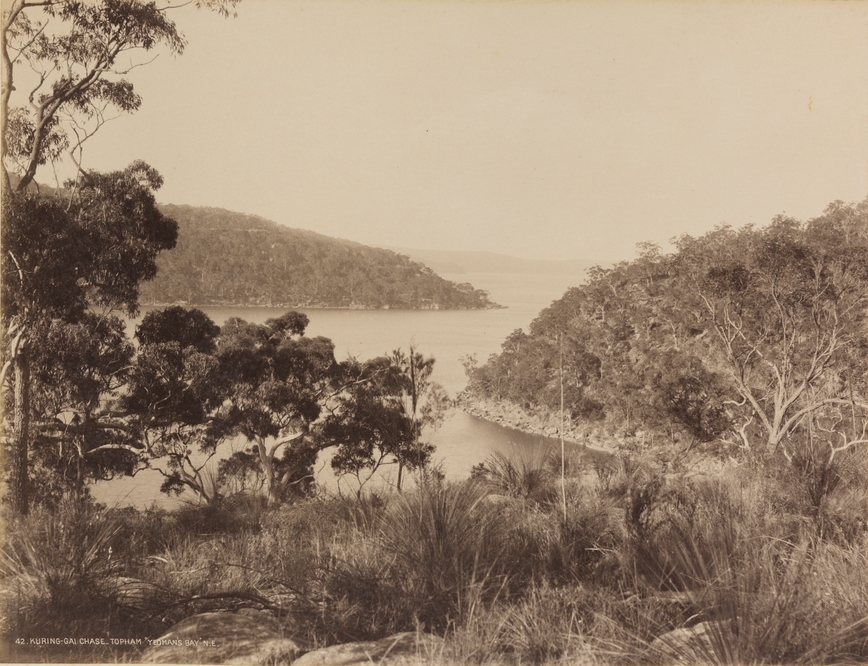
Topham - Yeomans Bay, from NSW State Library Album - Photographs - New South Wales, 1879 - ca. 1892 / N.S.W. Government Printer. Image No.: a924070h, courtesy State Library of NSW
On the rock beneath my feet were some curious drawings. A glance revealed them to be specimens of the initial artistic efforts of the Australian aboriginal. There were two figures - a bird and a fish - clumsy enough in all faith, but not without a close resemblance to the living originals. Some day they will have a deep interest to Australians, as relics of the old inhabitants and their totemistic religion. Beside the art glories of perfect Greece, how poor they are; and yet, as mythologists tell us, many of the religious rites and legends of the ... Australian blackfellow have their counter- parts in Greek myth. Truly, there is nothing new under the sun, and man is always man. The same instinct which moved the chisel of Phidias and the pencil of Apelles directed the pointed flint of the dusky artist of these rude rock sculptures.
As the setting sun fires splintering crag and bush-grown hill, and flings a purple glow over far inflowing waters, the birds twitter in one choral burst of song, and then grow still; and all the voices of Nature but one are still. The mists troop forth from their hiding-places and sit on the vacant thrones of the sunlight, and a dull insistent moaning down the bay tells us that the sea's sleep is disturbed by dreams of coming storm. The dawn sees us once more on our way to the "big smoke." A RUN TO PITTWATER. (1889, September 21). The Sydney Morning Herald (NSW : 1842 - 1954), p. 7. Retrieved from http://nla.gov.au/nla.news-article13739295
Ventnor
Two years later Mr. Willans was one of the hosts for the turning of the water at the then named 'Ventnor Estate', which had been installed in 1889:
Ventnor Waterworks.
MANLY-PITTWATER, RAILWAY WANTED,
At the invitation of Messrs. Willans, Flood, and Oatley, a large party of gentlemen visited Pittwater on Friday last, for the purpose of witnessing the opening of a waterworks at that place, to be known as the Ventnor Waterworks. The party represented the political, commercial, and other interests of the colony, and was conveyed in five coaches from Manly to Charity Point.
The works consist of a dam at a waterfall about a mile to the east of the residence of Mr. Willans, and the construction of mains run throughout the Ventnor Estate, which it is intended to supply. The waterfall in question has never been known to fail in any season. Ample and elaborate provision had been made for the entertainment of the guests, who were shown over the estate, which is beautifully situated, and from which many beautifully views are obtained.
Amongst those who accepted the invitation were Mr. F. Adams, of the A.J.S. Bank, Mr. W. P. Woolcott, Dr. Hanson, Mr. Barnett, Mr. Cresswell, Mr. Kirkpatrick, Mr. M'Mahon, Mr. J. H. Gillies, Mr. Orr (Union Bank), Mr. A. G. Milson, Mr. Whittingdale Johnson, P.M., Mr. A. Macintosh, and Messrs. J. E. Street, Waddell, J. F. Burns, J. F. Cullen, and Jas. Inglis, Ms.L.A.
Mr. Burns, at the request of the hosts, turned on the main, in the presence of the invited guests and a large number of local people, amidst great cheering. The volume of water was remarkable, rising some 30ft in height. Many of the guests were astounded at the beauty of the district and the amount of settlement, and when informed that at the present time two lines of coaches were running successfully, the majority of them remarked how greatly the district would be improved by the construction of a tram or railway. The Sydney portion of the company returned to Manly by moonlight, highly delighted with the enjoyable day which had been afforded them. Ventnor Waterworks. (1890, August 8 - Friday). Evening News (Sydney, NSW : 1869 - 1931), p. 2. Retrieved from http://nla.gov.au/nla.news-article113331605
Leon Houreaux commenced a run of coaches to Pittwater in March 1890:
MANLY-PITT WATER COACH SERVICE.
Through the enterprise of Mr. Leon Horeaux, proprietor of the Rock Lily Hotel, Narrabeen, a new line of coaches was inaugurated on Saturday last. At the invitation of that gentleman a few influential residents of Manly and district assembled at Manly Pier on Saturday morning, where three of the new coaches were in waiting to convey them to the hotel.
After a delightful drive, the company sat down to a sumptous dinner, Mr. J. F. Burns, M.L.A., occupying the chair. The usual loyal toasts having received justice, the chairman proposed " Our Host", and in doing so referred in high terms to Mr. Houreaux's marked ability, and hoped that the venture would be as beneficial to him as it would be to the general public. Mr. Horreaux suitably replied. After other gentlemen having spoken in favor of Mr. Houreaux and his good lady, and a few more toasts having been proposed and responded to, the party were driven into Manly once more, each and all having enjoyed the day's outing very much. MANLY-PITTWATER COACH SERVICE. (1890, March 17). The Australian Star (Sydney, NSW : 1887 - 1909), p. 7. Retrieved from http://nla.gov.au/nla.news-article230623272
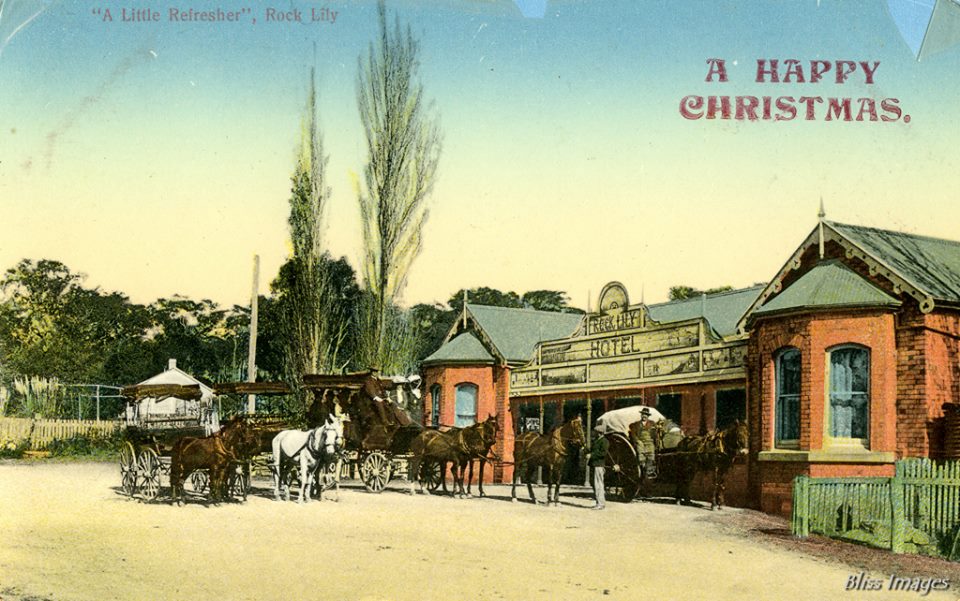
Rock Lily circa 1895 - 1905 - Christmas postcard.
There was also Joseph Black:
COMMENCING from next SATURDAY AFTERNOON, BLACK and CO., the Manly Coach Proprietors, propose to run a regular weekly trip to PITTWATER (Bayview), and return on every MONDAY MORNING in time for the 8.45 boat from Manly to Sydney. Stables next Pier Hotel. Manly. Advertising (1885, September 23). The Sydney Morning Herald (NSW : 1842 - 1954), p. 2. Retrieved from http://nla.gov.au/nla.news-article13598758
In October 1890 deposited plan 2545 subdivided the land to create the lane of 15 links wide and an area of land for what we call today the Rocky Point Reserve and what was then to make permanent the access via a wharf to the peninsula. By 1891 a wharf had been built:
Department of Lands,
Sydney, 20th October, 1891.
LEASES FOR SPECIAL PURPOSES.—OBJECTIONS CALLED FOR.
IT is hereby notified, for general information, under the Crown Lands Regulations, that it is proposed to grant Leases, as hereunder specified, in accordance with the 89th section of the Crown Lands Act of 1884, of sites for the purposes hereunder stated, without right of purchase.
Any objections lodged within four weeks from the date of this notice will receive due consideration, and all persons interested are hereby called upon to lodge such objections at this Office, on or before 17th proximo.
WILLIAM HOUSTON,
Under Secretary,
6663 Thomas W. Willans
County of Cumberland, parish of Broken Bay, at Pittwater; Commencing on the high-water mark of Pittwater at a point bearing north 88 degrees 30 minutes east, and distant 8 chains 60 links from the south-west corner of applicant's property; and bounded on the south-west by a line bearing south 12 decrees 45 minutes east 6 feet; on the north-west by a line at right angles bearing south-westerly 8 feet; again on the south-west by a line at right angles bearing south-easterly 18 feet; again on the south-east by a line at right angles bearing north-easterly 8 feet; again on the south-west by a line at right angles bearing south-easterly 30 feet; again on the north-west by a line at right angles bearing south-westerly 14 feet; again on the south-west by a line at right angles bearing southeasterly 15 feet; again on the south-east by a line at right angles bearing north-easterly 30 feet; again on the north-east by a line at right angles bearing north-westerly 15 feet; again on the northwest by a line at right angles bearing south-westerly 7 feet; again on the north-east by a line parallel to the first-mentioned boundary bearing north-westerly about 54 feet to the said high-water mark; and again on the north-west by that high-water mark southwesterly, to the point of commencement. About 4 perches – for do… – Annual rent £2. LEASES FOR SPECIAL PURPOSES.—OBJECTIONS CALLED FOR. (1891, November 11). New South Wales Government Gazette (Sydney, NSW : 1832 - 1900), p. 8885. Retrieved from http://nla.gov.au/nla.news-article219924056
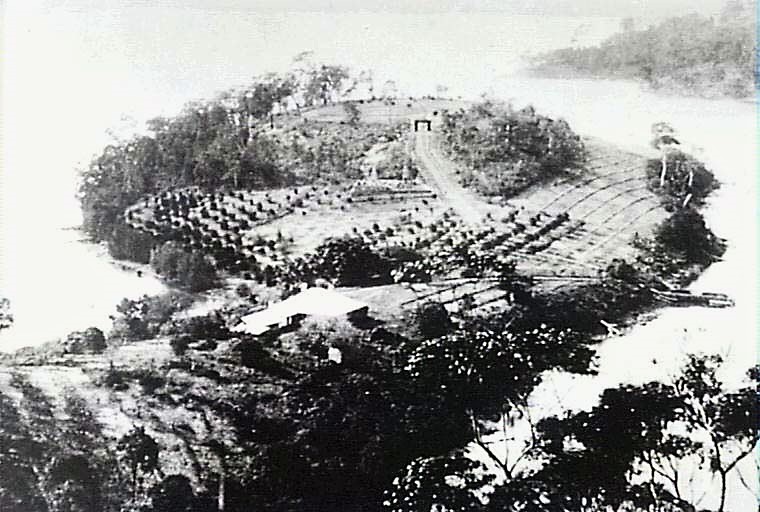
This photo, circa 1887-1890, shows the locality of the wharf and 'road' constructed and the foundations of the larger 'dwelling'.
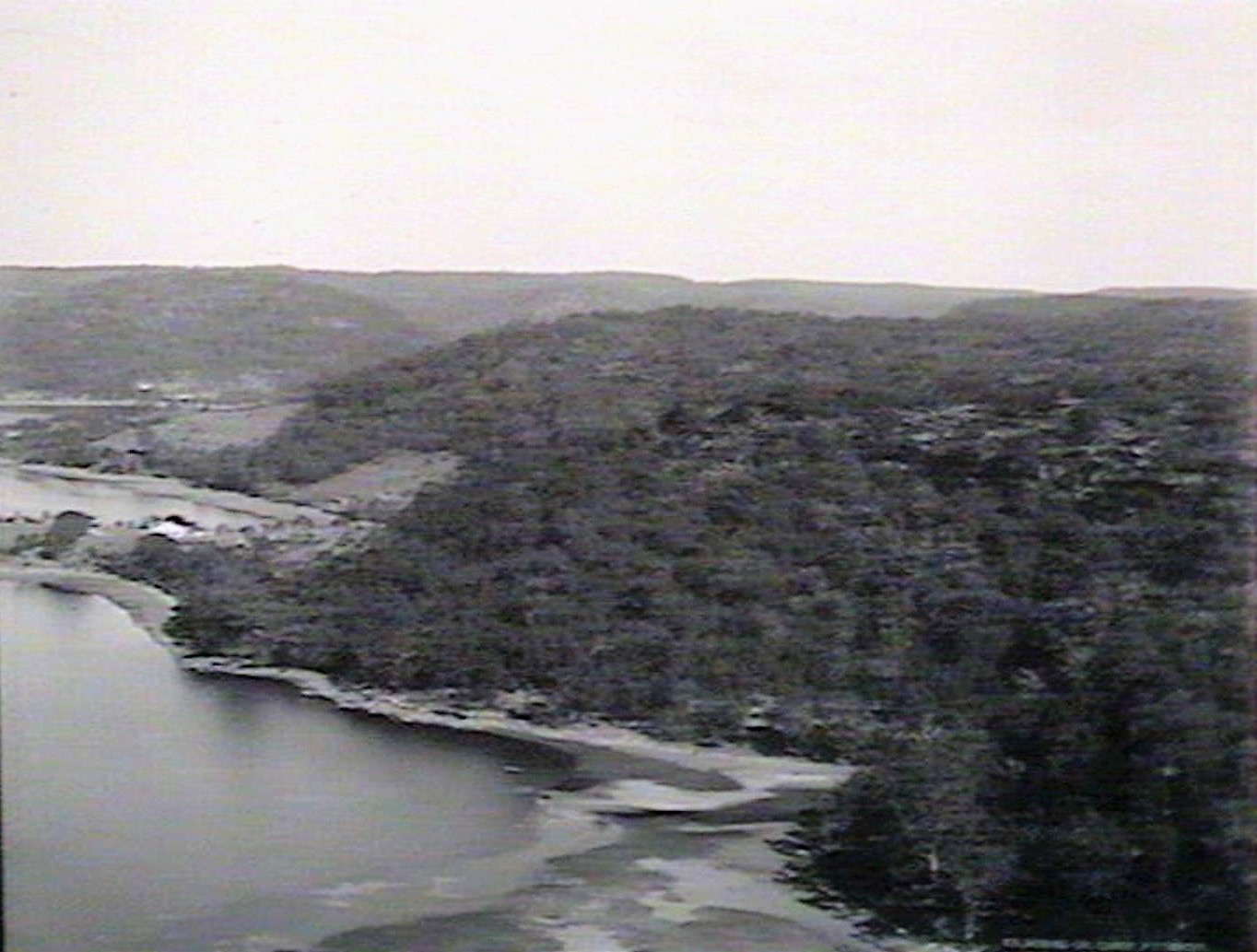
Panorama of Lovetts Bay from Flagstaff Hill, Image No.: d1_08836h, courtesy State Library of NSW. This shows the back of the peninsula behind the Oliver Cottage, circa 1900-1908
Department of Lands,
Sydney, 31st December. 1891.
LEASES GRANTED FOR SPECIAL PURPOSES.
IT is hereby notified, for general information that the undermentioned persons have been permitted to lease the lands specified in the annexed Schedule, under the 89th and 90th sections of the Crown Lands Act of 1884.
The rent for each year must be paid in advance on or before the 31st December of the year preceding, otherwise penalties for late payments will be incurred, and the leases will be liable to forfeiture; the land is to be used only for the purposes for which the lease is granted; the leases confer no right to purchase the land,
HENRY COPELAND.
Willans Thomas W. Ventnor, Bay View P.O. Pittwater, Broken Bay – Wharf on Piles – 4 perches. LEASES GRANTED FOR SPECIAL PURPOSES. (1891, December 31). New South Wales Government Gazette (Sydney, NSW : 1832 - 1900), p. 10156. Retrieved from http://nla.gov.au/nla.news-article219927971
While on that wharf, and all homes with 'swimming areas' in the vicinity also putting in nets around these:
A Shark at Pittwater.
Mr- E. B. M'Kenny, of Ventuor, Pittwater, near Manly, writes to us as follows:
I write to give you particulars of the capture of a monster shark at Pittwater on Saturday morning. The brute had been haunting the wharves and foreshores of Ventuor for some time past, and had broken several lines which had been set for him, but on Saturday morning he was safely hooked by Mr. Geo. Gates off the Ventuor Wharf. The monster pulled the boat all about the bay, and it was a merry time for over half an hour, several boats joining in the chase. Eventually the boats made fast to one another, and the shark was pulled on to the flats and killed. He proved to belong to the grey nurse species, and measured 11ft in length. A Shark at Pittwater. (1896, March 9). Evening News (Sydney, NSW : 1869 - 1931), p. 5. Retrieved from http://nla.gov.au/nla.news-article109915565
The Grey Nurse Shark (Carcharias taurus) also known as the sand tiger shark or spotted ragged-tooth shark, is one of four species belonging to the family Odontaspididae. The species has a large, rather stout body and is coloured grey to grey-brown dorsally, with a paler off white under belly. They have been recorded even recently as attacking humans.
The genus name Carcharias comes from the Greek carcharo, meaning sharp pointed or jagged, and refers to their dentition.
Sharks have the same five senses as humans; taste, touch, sight, hearing and smell, but in addition have a sixth sense; electroreception. The underside of the Grey Nurse Shark's snout is dotted with pores. Each of these leads to an organ (ampula of Lorenzini) which can detect electricity. Due to this sharks can detect very weak electrical currents. This extra sense gives sharks the ability to detect and attack prey at close range without needing to see the prey item. This can be advantageous in murky water or if the shark is a bottom feeder which relies on finding prey buried in the sediment.
Note the variant spelling of Ventnor in this report.
Unfortunately Mr. Willans did not hold onto the 40 acres for too long. Although two blocks of land had clearly sold, he could not meet demands from the creditors he secured during the weeks after the turning on of the water and with continued discussion about a tram or train to Pittwater fuelling speculators to buy land in anticipation of a future 'marine resort', the property was seized and put up for sale:
In the Supreme Court of New South Wales.
Sherriff’s Office, Sydney, August 8, 1892.
UNDERWOOD v. WILLANS, T. W.
ON MONDAY, the 12th day of September, 1892, at noon, unless the writ of fieri facias herein be previously satisfied, the Sheriff will cause to be sold by public auction, under the verandah, Supreme Court, King-street, Sydney, all the right, title, and interest of THOMAS WILLIAM WILLANS, the Defendant herein, of, in, and to all that the equity of redemption, and all other, the right, title, and interest (if any) of him, the said Thomas William Willans, of, in, and to;
All that piece or parcel of land containing by admeasurement forty acres, more or less, situated at Pittwater, parish of Broken Bay, county of Cumberland, and bring the land comprised in Certificate of Title dated 27th February, 1888, and known as the Ventnor Estate, save and excepted thereout lots 4 and 19 of division A of the said estate, on deposited plan No. 2545.
The above described land is subject to a mortgage to secure the repayment of £3000, dated the 10th September, 1890, No. 170,029, and to a further mortgage dated 10th September, 1890, to secure the repayment of £660.
Both mortgages registered 18th September, 1890, vol.872, folio 106.
Terms, Cash. Cheques not taken.
CHARLES COWPER, Sheriff. H. White, plaintiff’s attorney, 108 Pitt-street Advertising (1892, August 9). The Sydney Morning Herald(NSW : 1842 - 1954), p. 3. Retrieved from http://nla.gov.au/nla.news-article13874530
Lot 19, on Rocky Point, had sold to Arturo Steffani (Arthur Stevens) in 1890, where a holiday home dubbed 'The Red House' was constructed by James Booth in 1891- see below. Lot 4 had the Ventnor cottage on it.
NOTICE OF FORECLOSURE UNDER REAL PROPERTY ACT.
In the matter of Frederick Augustus Oatley and Joseph Washington Flood, mortgagees under memorandum of mortgage from Thomas Williams Willans, No.: 170,029, dated 10th September, 1890, over the residue of the land comprised in certificate of title, registered vol. 872, folio 106; a second mortgage, No. 170,030, dated 10th September, 1890, from the mortgagor to Edward Holland, having also been given over the land in the said certificate as hereinbefore particularised.
WHEREAS the abovenamed mortgagees have made application for an order of foreclosure of the mortgage above referred to accompanied by such evidence of default for six months and other facts, as required by section 113 of the Real Property Act Notice is hereby given, by direction of the Commissioners to whom such application has been referred, pursuant to the said Act that the land comprised within the said mortgage, as hereunder particularised, is offered and will remain open for sale until the 25th January, 1894, which date the said Commissioners have appointed as the time upon or after which the Registrar General may issue to the applicants an order for foreclosure, which will exclude all claim by the abovenamed second mortgagee as well as by the said mortgagor, unless in the interval a sufficient amount has been realised by the sale of such land to satisfy the principal and interest moneys due, and all costs and expenses occasioned by such proceedings, and interest up to the time of such sale.
Description of Property.
The residue of the land comprised in certificate of title, vol. 872, folio 106, situated at Pitt Water and Lovett Bay, parish of Broken Bay and county of Cumberland.
Amount to be realised. £3,071 19a. 6d., being principal and interest, together with costs and expenses. Interest up to time of sale to be added. Last day limited for Payment. 25th January, 1894.
A plan and further particulars may be obtained by application at the Land Titles Office, Elizabeth-street, Sydney. Dated at Sydney, this 15th day of December, 1893, at the Registrar General's Department.
CHARLES PINHEY,
[9864] Registrar General. NOTICE OF FORECLOSURE UNDER REAL PROPERTY ACT. (1893, December 15). New South Wales Government Gazette (Sydney, NSW : 1832 - 1900), p. 9454. Retrieved from http://nla.gov.au/nla.news-article220975264
Thomas Willan was out and the Oatley family and Flood family were the owners. Frederick and Edwin Oatley had possession of the back half of the peninsula and Joseph Washington Flood the front portion.
Pittwater: Forming stone causeway, 8ft wide, along foreshore, from entrance of chase to deep water, Lovett's Bay, 135 yards, and building substantial stone wharf at same. Scrubbing and forming pathway along foreshore from causeway to head of Lovett's Bay, on north side, and continuing same on south side to boundary of Flood and Oatley's Estate, Ventnor. Scrubbing and forming zigzag pathway from above foreshore, north side, up to flagstaff, 500ft high ; ditto, paths to Flat Rocks ; and many minor surveys and connections ditto ditto causeway, 6 chains 15 links ; to head of Lovett's Bay, 45 chains 70 links ; to Ventnor, 41 chains ; Zigzag to Flagstaff, 40 chains ; to Flat Rock, 37 chains 30 links ; to or Flat Rock, 10 chains 15 links. Total, 180 chains 30 links — 2 miles 20 chains. Kuring-gai Chase Trust. (1896, August 6). Evening News (Sydney, NSW : 1869 - 1931), p. 2. Retrieved from http://nla.gov.au/nla.news-article111041737
Now situated on the neck of this peninsula between Elvina and Lovett Bays is an old brick and timber squat cottage named “Ventnor,” with low verandahs, and at the rear is a quaint chimney situated on the outside. The giant fig tree that collapsed early in 1934 can be seen in the below 1909 Allen Family Album photos - it was one of several that had been planted there. - J.S.N.Wheeler
Edward Flood had passed away in 1888 leaving his son Joseph Washington Flood and the sons of Frederick Oatley, Edwin and Fredrick Augustus Oatley in charge of his Estate, worth over £400, 000. He had served on the first ever old Sydney Town Council and then went on to serve at a State level in government, and was still there when he passed away. The Flood-Oatley alliance brought in people who had contact with not only the old families of Sydney Town after settlers came here, but also all those who had arrived since and worked at a 'in government' or 'in service' level to grow Australia.
With all these connections it is a great surprise that the land at glorious Lovett Bay and Elvina could not be sold. Vendors continued to try to sell parcels of land, but even in the below advertising material you can see there are still very few cottages on the peninsula - a stark contrast to 100 years later!
Records below show that by the time the 1915 'Flood's Peninsula Estate' land sales commence all of the original benefactors in J. W. Flood and the Oatley brothers have passed away. Nevertheless the name of the gentleman who allowed them to invest in Mr. Willan and thus invest in Pittwater, is retained by name for the estate.
Anniversary Day, Tuesday, the 26th instant, will mark the auction of one of the loveliest holiday resort estates yet placed on the market. This is Flood's Peninsula Estate, Pittwater, which Messrs. Arthur Rickard and Co. Ltd.. will sell on their usual easy terms, and presents immense advantages to those who pick a holiday haven. This peninsula Is well known by tourists, who regard it as the loveliest spot to be seen anywhere in the world. REAL ESTATE. (1915, January 9). The Sydney Morning Herald (NSW : 1842 - 1954), p. 10. Retrieved from http://nla.gov.au/nla.news-article15545082
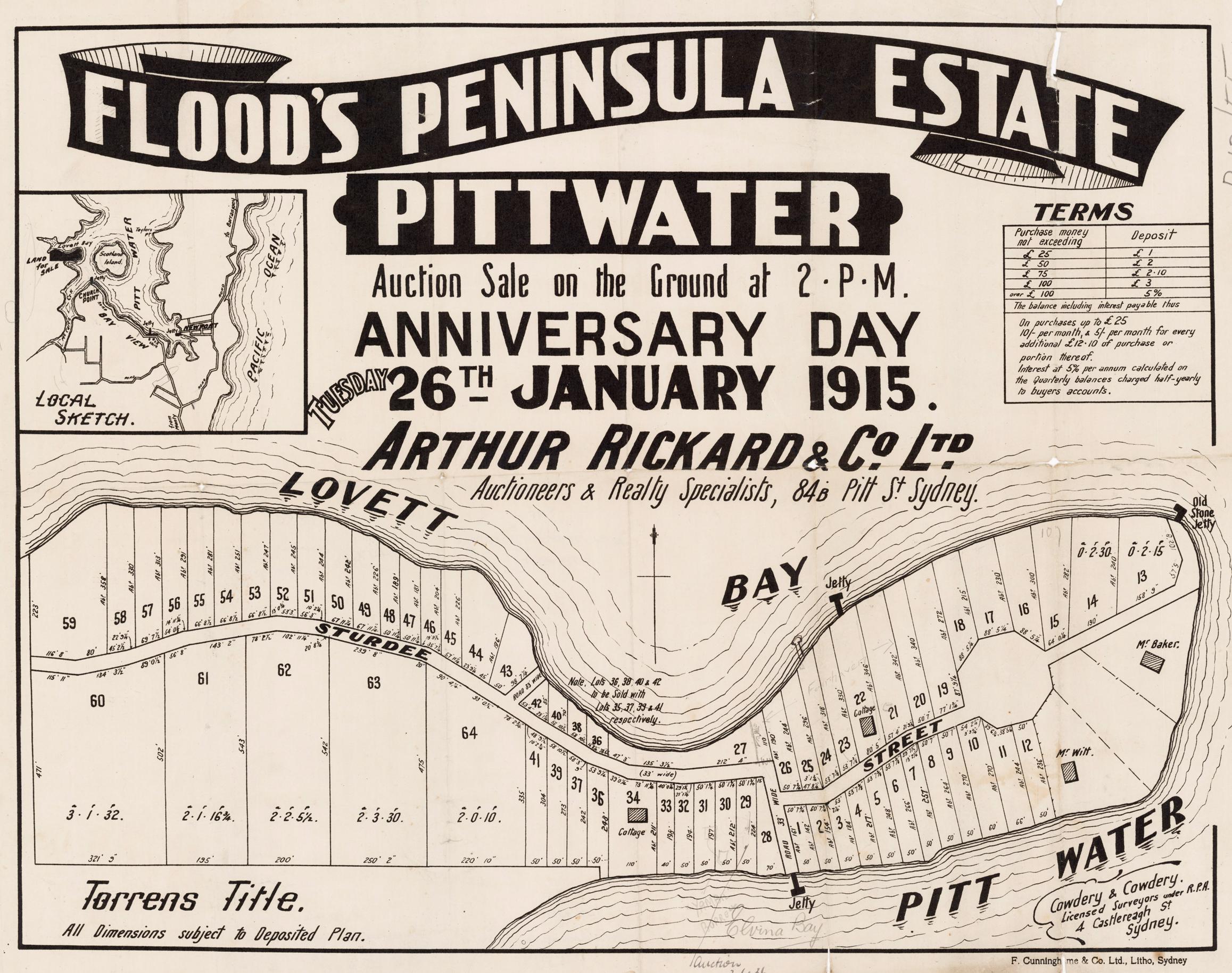
Flood's Peninsula Estate of 1915, Image No.: c053460077, courtesy State Library of NSW
Eleven lots and cottage in Flood's Peninsula Estate, at Pittwater, realised £135.5/18/4. Bonnie View lots (Balgowlah) sold for £35, …Brock's No. 2 Estate, at Mona Vale, realised £45/5/, and a similar sum was paid for ACRES AND LOTS MARKET (1915, January 31). Sunday Times (Sydney, NSW : 1895 - 1930), p. 15. Retrieved from http://nla.gov.au/nla.news-article120810033
... while three in Flood's Peninsula Estate at Pittwater were obtained for £107/3/6. ACRES AND LOTS (1915, February 7). Sunday Times (Sydney, NSW : 1895 - 1930), p. 15. Retrieved from http://nla.gov.au/nla.news-article120792493
Pittwater: Flood's Peninsula Estate, lots 13, 14, £285 … RECENT SALES. (1915, March 27). The Daily Telegraph (Sydney, NSW : 1883 - 1930), p. 16. Retrieved from http://nla.gov.au/nla.news-article238825628
PITTWATER, The Eden of Seaside Retreats -Flood's Peninsula, close to Church Point, 50ft Lots, from 20/6 per foot Good Money in Land Now. Inspect without delay.
Choose wisely, and you'll make big profit. Easy Terms: £1 down, 10/ month, for every £25 of purchase money.
...
PITTWATER.
A SPLENDID STONE COTTAGE, on the Peninsula Estate, opposite Church Point, in a glorious position, with enchanting views on every side. The land, 110 x 211 feet, is fertile, and is an absolute water frontage ...
The Cottage contains 5 rooms, with all conveniences.
A PARTICULARLY GOOD CHANCE for week-enders or anyone desiring to lead a retired life.
BARGAIN PRICE, £550.
£25 Deposit, Balance EASY TERMS.
ARTHUR RICKARD AND CO., LTD.,
Realty Specialists, 84B Pitt-street. Advertising (1917, January 10). The Sydney Morning Herald (NSW : 1842 - 1954), p. 15. Retrieved from http://nla.gov.au/nla.news-article15715234
Seaside blocks were in demand, and a number of choice sites changed hands at Woy Woy and Pittwater. Pittwater: Flood's Peninsula, £63/15/. REAL ESTATE (1917, August 5). Sunday Times (Sydney, NSW : 1895 - 1930), p. 11. Retrieved from http://nla.gov.au/nla.news-article122797995
Pittwater— Flood's Peninsula, £72/3/9, £76/5/ and £99; REAL ESTATE (1918, January 6). Sunday Times (Sydney, NSW : 1895 - 1930), p. 5. Retrieved from http://nla.gov.au/nla.news-article123130896
At auction on Thursday, Messrs. Raine and Horne sold in the Government subdivision at Bondi 11 allotments at from £4/15/ to £7.....and a cottage at Pittwater, £1300.
Arthur Rickard and Co.. Ltd., report that... A good number of these sales were made at Ettalong Beach, Woy Woy, Como, and Flood's Peninsula Estate, Pittwater. REAL ESTATE. (1919, January 18). The Sydney Morning Herald (NSW : 1842 - 1954), p. 9. Retrieved from http://nla.gov.au/nla.news-article15820756
TOURIST RESORT RAPIDLY INCREASING IN POPULARITY
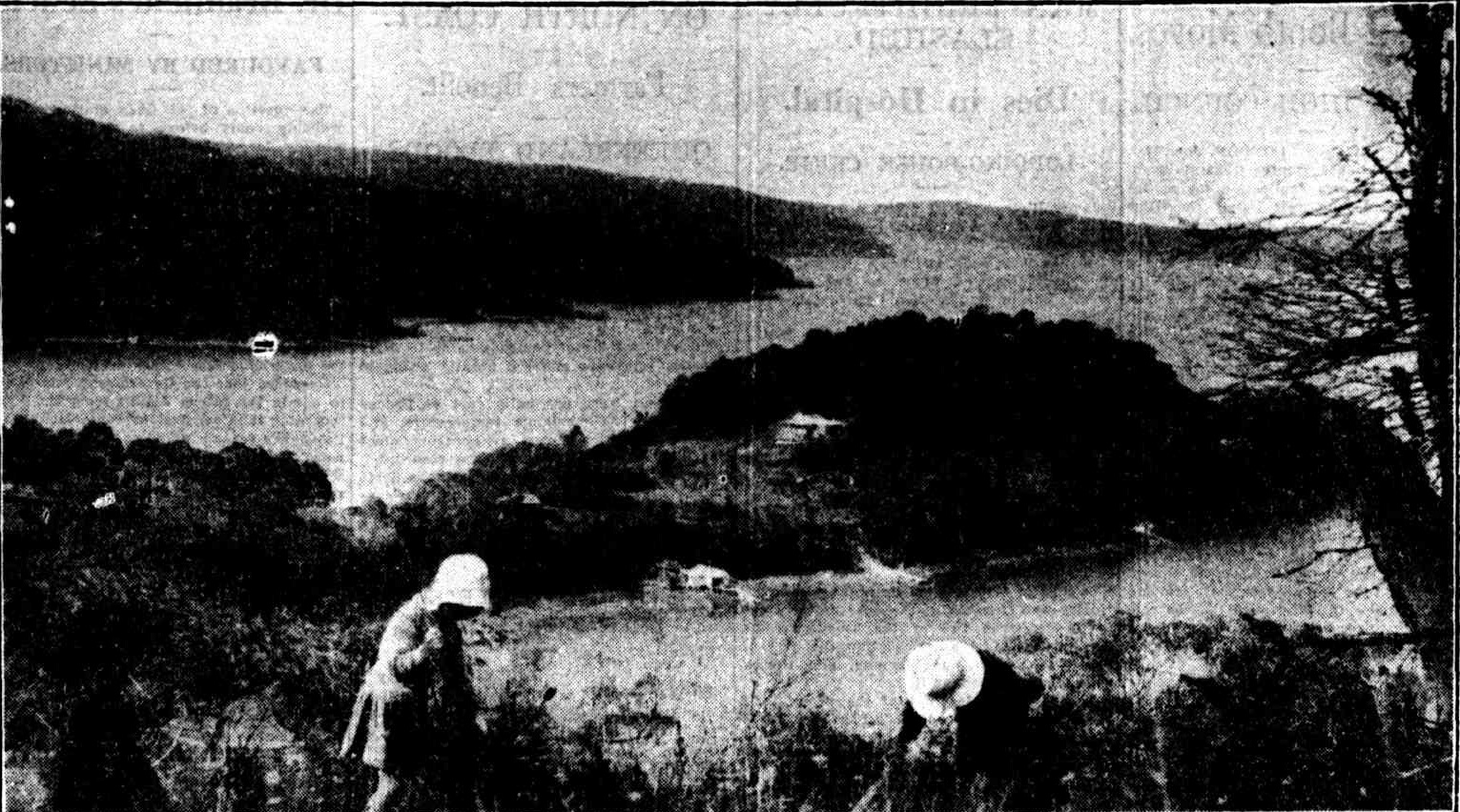
A VIEW OF PITTWATER FROM KURING-GAI CHASE.
During the recent holidays tens of thousands of people visited the locality.
TOURIST RESORT RAPIDLY INCREASING IN POPULARITY. (1929, January 21). The Sydney Morning Herald (NSW : 1842 - 1954), p. 12. Retrieved from http://nla.gov.au/nla.news-article16525194
By 1933 new Fairhaven Estate advertisement show much of the land is still held by the 'Assigned Estate'.
In the Warringah Council Meeting 10/6/1941 - Item 14. states Mrs. E. Malcolm, 29/5/41, offering to give the Council five blocks of land in Flood's Peninsula Estate, Pittwater. Resolved; That the Works Committee make an inspection as opportunity offers, and submit a report on the offer. (Crs.Nicholas, Batho).
Last year Ventnor the cottage changed hands again. In the Sales brochure through Ken Jacobs - Christie's International and P.M.C. Hill Real Estate, Church Point, a cottage dating from 1862 is described with three bedrooms and an attic study, lounge, dining, family and sitting rooms and kitchen. The home includes original features such as the iron stove, old fireplace and wraparound sandstone verandahs. It sits on 3163 square metres of land with water views both ways, still.
There is still a boatshed, although now it has been made bigger and transformed into a self-contained waterside caretaker's quarters. There's a private jetty, deep water pontoon, slipway, sandy beachfront, and sprawling grassed gardens framed by established trees, barbecue terrace, multiple sheds and rainwater tank, still!
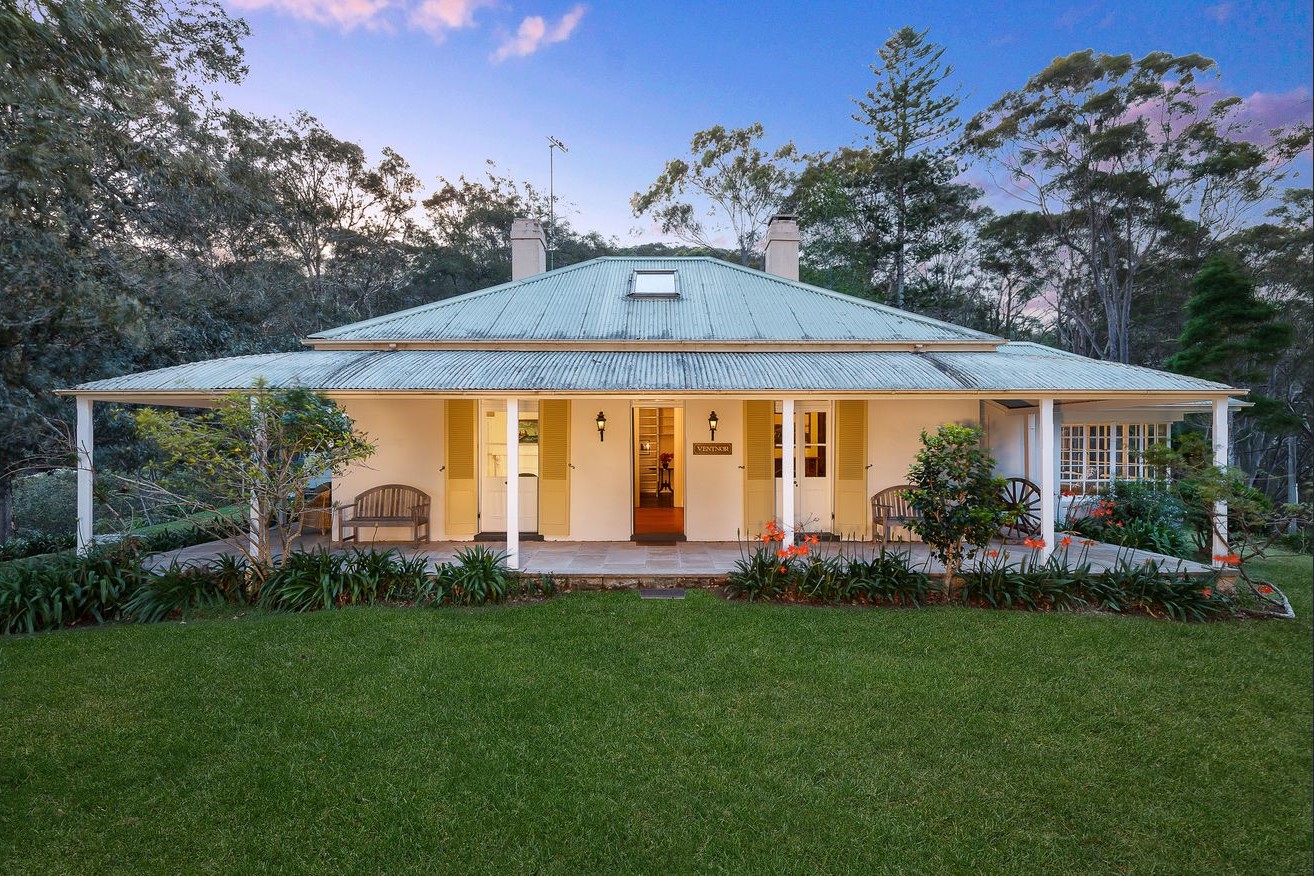
Ventnor as the cottage was in 2018 - Visit P.M.C. Hill Real Estate for more insights and pictures into this cottage, visit this link
Fairhaven
Fairhaven was the name given to the Potts Point home of Florence (nee Suttor) and Joseph Washington Flood.
From early on, soon after the Ventnor estate is divided up into parcels of land to sell, one larger structure is visible in photos towards the Rocky Point end of the peninsula. On enlarging one particular photo, 'Ten Mile View', a ferry of then as well as a larger cabin cruiser can be seen pulling up to a substantial wharf with a larger boatshed.
The ferry looks like an earlier version of an 'The Elvina' type of boat. Incidentally, The Elvina is still going and looked after still by the Church Point Ferry Services. You can read about her HERE
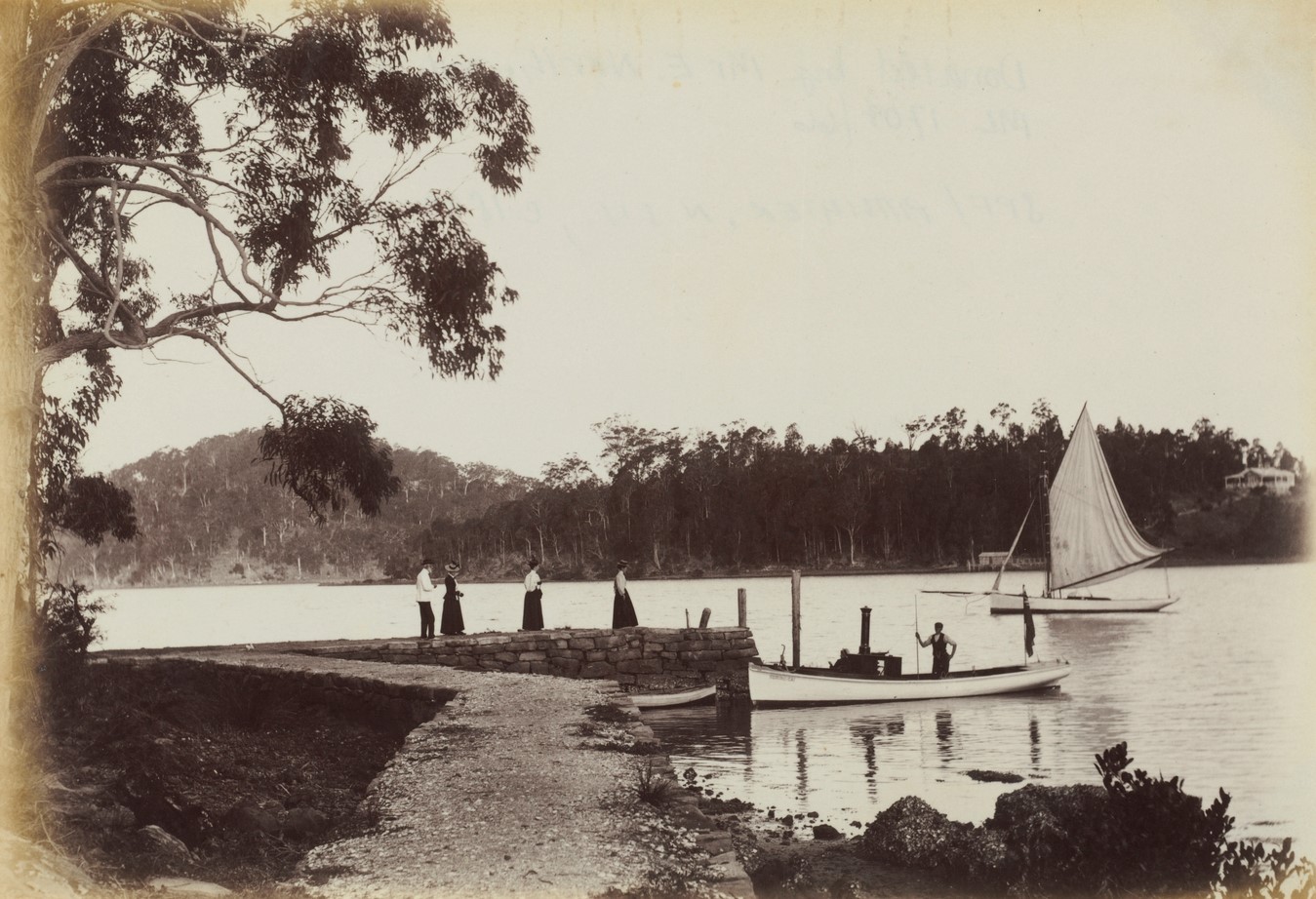
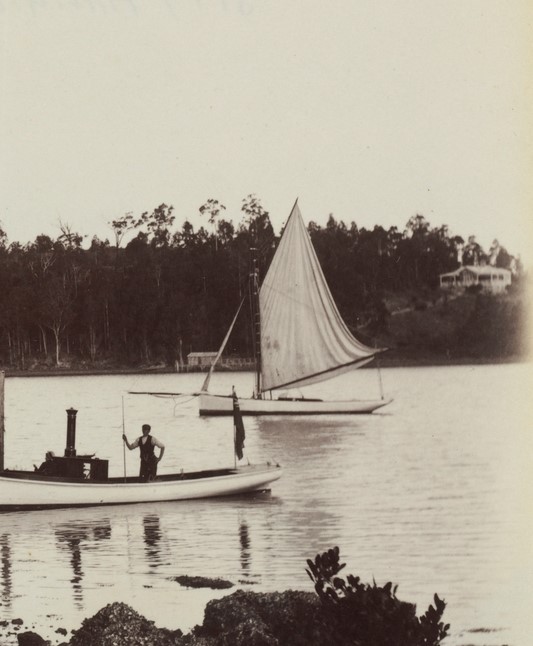
Lovett Bay, Ku-Ring-Gai Chase causeway, circa 1900 and section from to show dwelling. Image No.: a4367001h, courtesy State Library of NSW
The section enlarged from 'Ten Mile View, Pittwater' postcard - this is placed in whole at base of page:
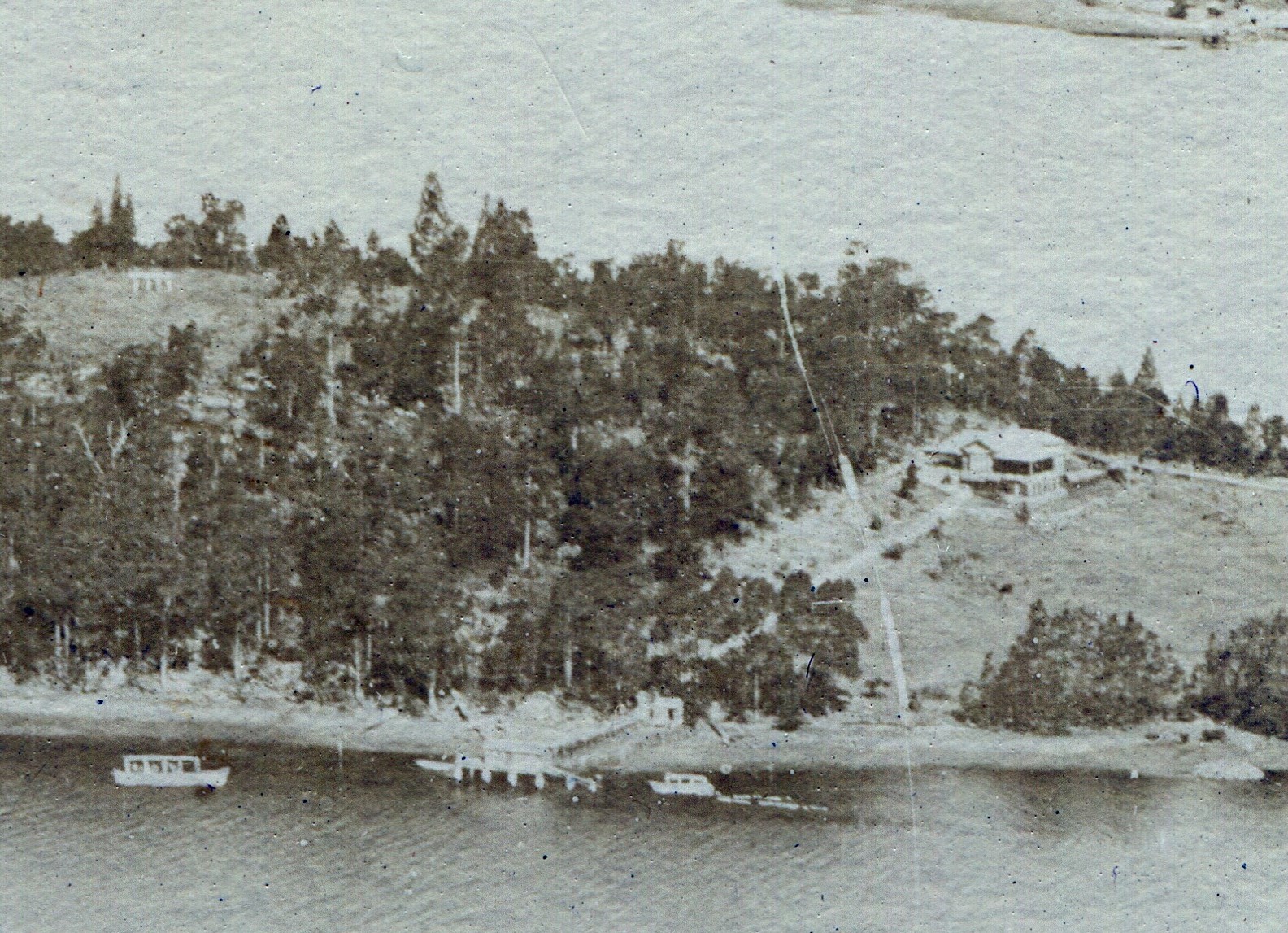
.jpg?timestamp=1547583139562)
Section from Section from 'Ten Mile View Pittwater' circa 1900- 1915, Postcard courtesy State Library of NSW
-659x550.jpg?timestamp=1547591276057)
Side View: Above: from Album 50 Allen album 1909 - Sunday, 15th of August, 190 Caption reads; 'Harley Hickson's House' Enarlged from Image No.: a3286021h, courtesy State Library of NSW
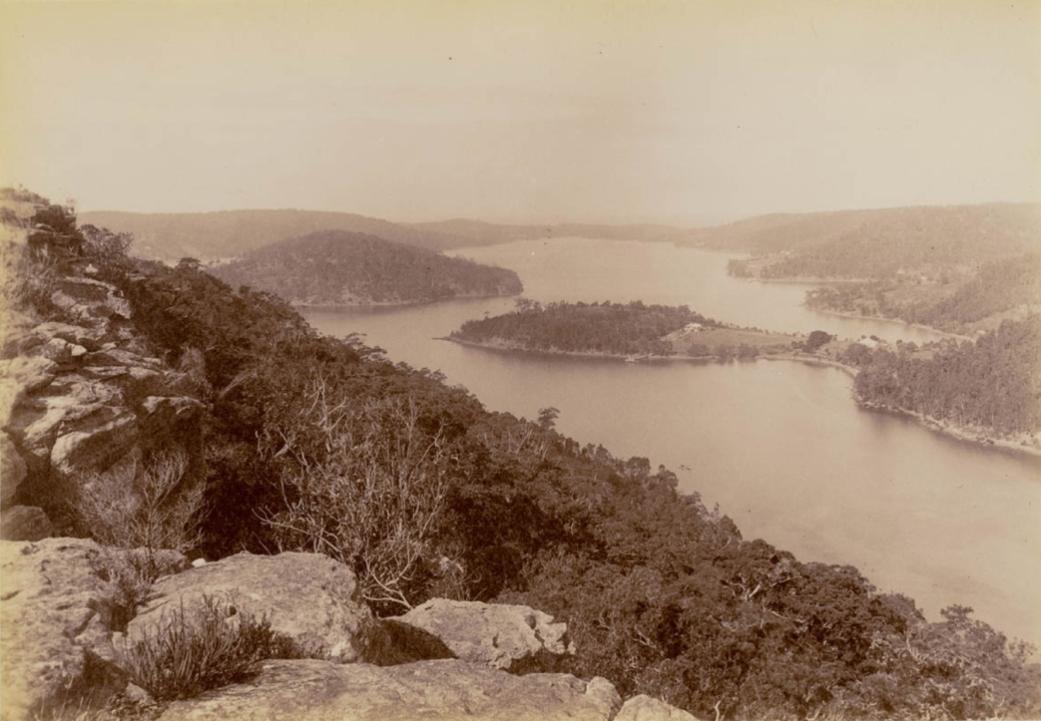
In Thomas Willans original advertisement of September, 1888, just days before securing a mortgage with Mr. Flood and Oatley, he advertises the Ventnor cottage and a residence described as:
THE RESIDENCE Is built in a position from which magnificent views are obtained on all sides, and contains 12 rooms, and out-buildings, also RUSTIC COTTAGE, containing 4 rooms.
THE ORCHARD consists of 2000 TREES, viz.. ORANGES, LEMONS, ALL SUMMER FRUITS, OLIVES, FIGS, and FIJI BANANAS, and will shortly be yielding an annual income of £1000.
DUFF and COLLINS have been favoured with instructions from T. W. WILLANS, Esq., on account of his intended departure for Europe, to sell the above by public auction, at their Rooms, 109, Pitt-street, on MONDAY, SEPTEMBER 10. at 11.30 sharp.
BLACK and CO.'S Coach will meet 9 o'clock boat to convey intending purchasers to the property.
TITLE, TORRENS. NO RESERVE.
N.B.-Printed particulars, plans, and photographs, can be obtained from the Auctioneers. DUFF and COLLINS, Auctioneers, 109, Pitt-street. Advertising (1888, September 7). The Sydney Morning Herald (NSW : 1842 - 1954), p. 11. Retrieved from http://nla.gov.au/nla.news-article13696011
.jpg?timestamp=1547340669554)
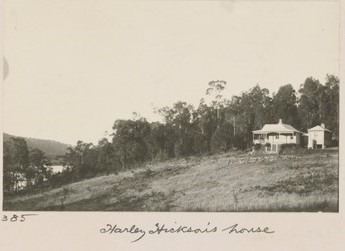
Above: from Album 50 Allen album 1909 - Caption reads; 'Sunday, 15th of August 1909' After Lunch (at La Corniche Bayview) Monty Walker took Mr & Mrs De LaSalle, Jarvis Alison and myself to Church Point & from there to Ventnor where Mr & Mrs Harley Hickson used to live.' Image No.: a3286021h, courtesy State Library of NSW
Olive Agnes Flood was the youngest daughter of Joseph Washington Flood and his wife Florence (nee Suttor). They married in 1877 and Olive was born in 1879.
In 1885 one of the earlier training exercises for naval aspirants brought to Pittwater:
ON BOARD THE WOLVERENE. 1885
For the first time in the history of the colony a colonial naval force took part in the Easter manouvres, and their doing so contributed largely to the interest of the proceedings. When the Naval Volunteer Artillery were formed people were found to sneer at the idea, as they had done in the case of the land volunteers, of their becoming efficient, but the sham fight yesterday and the drills which preceded it have effectually proved that our men are able to play their part by sea and by land as defenders of hearths and homes. The plan of naval operations was that a squadron, composed of the Wolverene, Ajax, Captain Cook, Juno, and Neptune, should rendezvous in Broken Bay at 11 a m yesterday, and at noon proceed to sea, where they would engage with an imaginary enemy in the offing, and, after a sharp fight, retreat slowly to Port Jackson, under shelter of the batteries, and that the combined efforts of the military and naval forces and of the torpedo corps would completely vanquish the attacking cruisers. The hopper barges Juno and Neptune were manned entirely by the Naval Volunteer Artillery, the others by the Naval Brigade. The full strength of the brigade is 327 petty officers and men and it is a gratifying evidence of their interest in their work that 308 of them reported themselves for duty, 208 being allotted to the Wolverene, 60 (being the Newcastle contingent) to the Ajax, and 50 to the Captain Cook. The others on the corvette were Commander Lindeman, R N , in command of brigade, Lieutenants Deloitte, Jackson, and Partridge, R N ; sub-Lieutenants Gilfillan, Oatley, Milson, and Broomfield, Midshipmen Jacobs, F.W. Hixson, H Hixson, S. Day, and W. Day, and Cadets Street, Wright, M'Farlane, Traier, Lamb, and Harley Hixson, ...
Broken Bay was full of craft, among them being the schooner-yacht Red Gauntlet, the Waitangi, the launch Ena, and a launch chartered by a band of jolly bachelors. ....
The guns on the different ships were then secured and covered. On board the Wolverene the men were beat to quarters, and Captain Hixson, addressing the Naval Brigade generally, and all who had taken part in the squadron manouvres, said that he fell he should be wanting in his duty if, before dismissing them to their homes, he did not acknowledge the very efficient manner in which they had manned and fought the Wolverene and the other vessels. He thanked the Brigade for the good discipline they had maintained, and the other forces for the cordial co-operation they had given him, which two things had enabled him to carry out the wishes of the Government. The Brigade had fought the guns and manned the yards in a manner that would not disgrace a man-of-war, and he felt sure that it an enemy were to come here and try to dispossess us of this country, he could go out and meet him in the manner in which Englishmen were wont to meet their foes. They had a line of defence, and as long as we could go out there and meet our enemies, he did not think we were in the position some of our friends thought we were in. He would not make a longer speech, but would content himself with thanking them again. (Cheers.) Cheers wore given for Captain Hixson, for Commander Lindeman, and the other officers of the Naval Brigade, and for Captain Taylor; and the proceedings terminated with cheers for the Queen. The men could not at once disembark, without incurring the expense of hiring watermen's boats, for the tender engaged to convoy them to Fort Macquarie was considerably behind her time in ranging alongside the Wolverene. ON BOARD THE WOLVERENE. (1885, April 7). The Sydney Morning Herald (NSW : 1842 - 1954), p. 3. Retrieved from http://nla.gov.au/nla.news-article13579326
Harley Hixson (sometimes spelled incorrectly in following articles as 'Hickson') was the youngest son of Captain Francis Hixson - the gentleman responsible for getting a light on the Barrenjoey Headland.
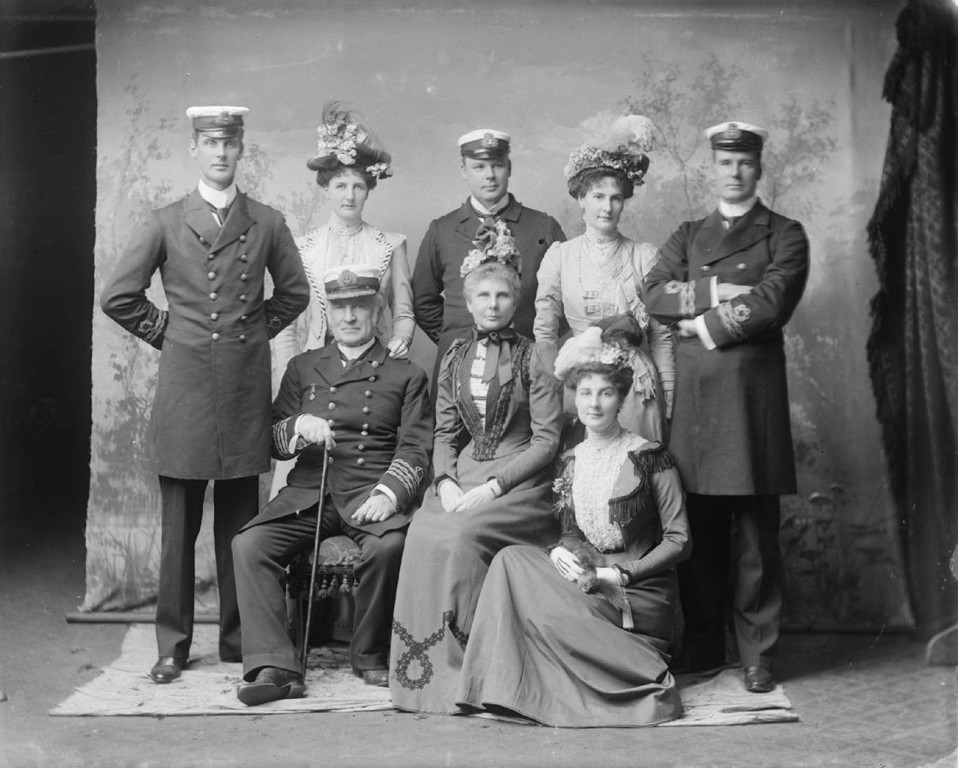
Taken just prior to leaving for Singapore - Boxer Uprising 1900 (Some sources indicate another son, Edward, was serving with the Queensland Naval Contingent, and this is why is is not present in this family photograph.) Back Row, Left to right - (Back): Harley, Annie, Herbert, Mabel Francis William. Front Row; Francis (Snr.), Sarah, Florence.
In 1900 Olive and Harley married:
HIXSON—FLOOD.—November 28, 1900, at the Church of St. Mark, Darling Point, by the Rev. G. North Ash, M.A., chaplain Mounted Brigade, N.S.W., assisted by the Rev. Willoughby Flower,. M.A., rector, Harley Lord, youngest son of Captain Francis Hixson, R.N., Officer Commanding Naval Forces N. S. Wales, to Olive Agnes, youngest daughter of the late J. W. Flood, of Sydney. Family Notices. (1900, December 8). The Sydney Morning Herald (NSW : 1842 - 1954), p. 1. Retrieved from http://nla.gov.au/nla.news-article14348659
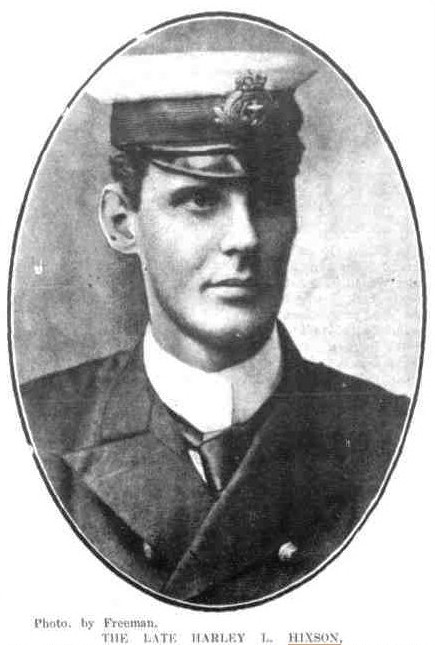 BOUDOIR CONFIDENCES. (By "PORTIA.")
BOUDOIR CONFIDENCES. (By "PORTIA.")
SYDNEY, Saturday.
The wedding of Miss Olive Flood and Mr. Harley Lord Hixson was a very fashionable affair. Miss Flood is the youngest daughter of Mr. J. W. Flood, of Ocean-street, Woollahra, one of our "old families," and Mr. Hixson is a son of Captain Hixson, who commanded the New South Wales Naval Contingent as far as Hongkong.
The wedding came off at St. Mark's, Darling Point, which is quite the most swellish church for the purpose in the colony, and which on this occasion was profusely decorated with lilies and hyacinths, the altar being smothered in these flowers. The bride was given away by her brother-in-law, and was charmingly attired in rich ivory satin, flounced with lovely point lace, the shoulders supporting a court train of brocade. She also wore a coronet of orange blossoms, and carried a magnificent bouquet.
The bridesmaids were Misses Ethel Mackenzie, Florence Hixson, Kathleen French, and Irene Marks, and all were attired in white Swiss muslin, trimmed with lace. The after ceremony took place at Mrs. Flood's residence, when guests were entertained to the number of two hundred. The Naval Brigade Band played on the lawn, by permission of the bridegroom's father. BOUDOIR CONFIDENCES. (1900, December 3). Newcastle Morning Herald and Miners' Advocate (NSW : 1876 - 1954), p. 3. Retrieved from http://nla.gov.au/nla.news-article136236404
It is worth remembering that sisters of Harley married Fairfax sons, some of whom had residences at Woollahra, where the Oatleys lived. A read through of the surnames of those who attended her sister Florence's wedding in 1897 is also like a long list of early settlers next generation.
Harley Hixson came off the ships to do what he had been trained to do prior to his marriage:
NOTICE OF PARTNERSHIP.
I beg to announce that I have this day admitted Mr. HARLEY LORD HIXSON as a PARTNER in my business of Stock and Share Broker. In future the business will be carried on at the same address under the name and style of PARTRIDGE and HIXSON. May 1,1894. G. H. PARTRIDGE. 112 Pitt-street. Advertising (1894, May 1). The Sydney Morning Herald (NSW : 1842 - 1954), p. 2. Retrieved from http://nla.gov.au/nla.news-article28259512
The couple had a daughter, who came home with them from London in late 1901:
HIXSON — September 9, at 'Frogpool', Chislehurst, England the wife of Harley Lord Hixson, of a daughter. Family Notices (1901, September 12). The Sydney Morning Herald (NSW : 1842 - 1954), p. 1. Retrieved from http://nla.gov.au/nla.news-article14409248
The following are passengers by the R.M.S. Ormnz. from London, via ports:— For Sydney. Brisbane, and New Zealand: Mr. A. H. Nicholson and valet. Mrs. Hendy. Mrs. Hannay. Mrs. Deffei. Mr. and Mrs. Vivian and 2 children. Miss Cox. Mr. and Mrs. Harley Hickson, infant, and nurse. …. MARITIME MISCELLANY. (1901, December 30). Evening News (Sydney, NSW : 1869 - 1931), p. 2. Retrieved from http://nla.gov.au/nla.news-article112576331
This shows the couple were regular visitors to where the Suttors had their old home and lands, as well as listing yet more old names of old Sydney Town including Oswald Watt of Bilgola.
The Bong Bong Races.
The annual Bong Bong Picnic Races took place on January 19 and 20, and though the traces of the recent bush fires wore visible,/ the permanent buildings had fortunately escaped injury On the first day the president of the club, the Hon. H. E. Kater, entertained His Excellency the Governor and a number of other guests to luncheon In a large marquee, the tables being decorated with yellow flowers and ribbons.
A number of pretty summer toilettes were worn by the visitors. Mrs. Harrison Smith wife of the Governor's private secretary, wore cream muslin with touches of cerise, and a hareen suite; Mrs. Oswald Watt, pale green taffeta voile, and a green mushroom hat; Miss Nan Dangar, pale heliotrope muslin; Mrs. Conset Stephen, pale pink blouse, white skirt, am black feathered hat; Mrs. Harley Hickson amethyst muslin, and hat to match; Mrs. Herbert Marks, white muslin and violet hat; Mrs Chris Bennett, a pale heliotrope muslin, ant black hat; the Misses Blomfield wore dark blue and white muslin respectively; Mrs. Donkin, grey and white floral muslin; Mrs. Rothe, a white costume; Mrs. Murray Campbell, pale blue and white voile, a black and cream hat; Mrs. W. Manning, white linen costume, straw hat with pink roses; Mrs. P. S. Mitchell, white linen costume, and mushroom hat; Miss E. Morse, white costume with green and white hat; Miss Von Arnheim, a crash dress and white hat; Mrs. P. M. Osborne, white linen dress and blue hat, etc.
There were also present Mr. Wyatt Rawson, Mr. Harrison Smith, Captain Wilson, Mr. Frank Throsby (vice-president), Mr. Chris Bennett (vice-president), Mr. T. A. P. M'Carthy (secretary), Dr. Ewan Frazer, Mr. and Mrs. Broadhurst Hill, Mr. and Mrs. Hope Osborne, Mr. Consett Stephen, Mr. and Mrs. Roy Green, Captain Dorien Smith, Mrs. E. Jenkins, Mrs. Holdship, Mr. and Mrs. H. Fairfax, Mr. Keigwin, Mr. H. Osborne, Dr. Stevenson, Mrs. Simpson, Mr. G. Martin, Mr. Gardiner, Mr. M'Court, Mr. M. Walker, Mr. Pat Osborne, Mr. Harley Hixson, Mr. O. Watt. Mr. P. Badgery, Mr. J. Lamb, Mr. M. Campbell, Mr. Westmacott, Mr. De Lauret, Mr. J. Alison, Mr. P. S. Mitchell, Mr. Leonard, Mr. D. L. Watt, and others. The Bong Bong Races. (1905, January 25). Australian Town and Country Journal (Sydney, NSW : 1870 - 1907), p. 43. Retrieved from http://nla.gov.au/nla.news-article71498112
These kinds of events, far from Pittwater, are where the conversations and the visits to here that resulted, that aren't recorded anywhere but in family diaries and photo albums, took place. The Allen family were also regular visitors to Oswald Watt's 'Bilgola House', even taking yet another famous Australian songstress there for 'lunch' on Wednesday 23rd of September, 1914 - Dame Nellie Melba.
Harley passed away when only 40 years old (born January 9th, 1868) - he had been suffering from ill health:
Death of Mr. H. L. Hixson.
Quite a gloom was cast over the district on Saturday morning last when it became known that Mr. Harley L. Hixson, the youngest son of Captain Francis Hixson, R.N., had peacefully passed away at his late residence, "Hawthorn," Moss Vale, on Friday night last. Mr. Hixson was a member of the Sydney Stock Exchange, and until recently an alderman of Moss Vale. He was amongst the first members of the Moss Vale Golf Club and held the position of treasurer at one time, and filled a similar position in connection with the Bong Bong Picnic Race Club. For many years he was an officer in the Naval Brigade, in which body he took a keen interest, and retired with the rank of commander. His death is much regretted, as he was well known and highly respected, and always took an active interest, so far as his health allowed, in all local matters.
The remains were interred in the Bong Bong Cemetery on Sunday afternoon, the Rev. Joseph Best, rector of Moss Vale, officiating. A large number of representative men attended as a mark of respect and by special request the departed one's favourite hymn, Lead, Kindly Light,' was sung during the service. The chief mourners were Messrs. F. W. and H. O. N. Hixson (brothers), Messrs. G. E. and J. O. Fairfax (brothers-in-law). Amongst others present were - Mr. S. . F. Osborne, Dr. F. C. Stevenson; Mr. O. Z. Throsby, Mr. Chris. Bennett, Mr. E. E. Row, Colonel Taunton, Colonel G. R. Campbell, Mr. H. W. Fairfax, Mr. Gavin George, Mr. T. A. F. McCarthy, Mr. F. J. Lytton Hitchins, Mr. F. H. Throsby, Mr. A. H. Garraway, Mr. J. R. Scroggie, Rev. W. Fisher, Mr. E. H. Badgery, Mr. I. S. Ponder, Mr. A. G. Miller, Mr. W. Jones, Mr, W. McKenzie, Mr. F. E Bassingthwaiglite, Mr. J. W. Cunningham. Many beautiful wreaths were sent, including one from his Excellency the Governor and Miss Rawson. Death of Mr. H. L. Hixson. (1908, November 18). The Scrutineer and Berrima District Press (NSW : 1892 - 1948), p. 2. Retrieved from http://nla.gov.au/nla.news-article124097532
Death of Capt. Hixson R.N.
Captain Francis Hixson, late R.N., died-at his residence, Wordsley, Double Bay, on Tuesday morning. In November last one of his sons (Mr. Harley Hixson) died, and the Captain never quite recovered from the shock of that bereavement.
He is survived by three daughters, Mrs G. E Fairfax, Mrs. J. O. Fairfax, and Mrs, M'Cay (wife of Dr. M'Cay, of Calcutta) and three sons, Messrs. F. W. E. M., and H. O. N. Hixson.
Captain Hixson belonged to the type, of British sailor which has made the Empire famous. He was born at Swanage, Dorsetshire, in 1833. As a youngster he joined the navy, and soon gave indication of more than ordinary ability.
Captain Hixson was awarded the Royal Humane Society's silver medal, in 1858 for his plucky rescue, ate an-. A B. who fell overboard in Shark Bay, Western Australia. The danger of sharks was a commonplace, but the captain, who was then acting as second master on the Herald, jumped overboard, and supported the drowning man till a boat arrived.
Captain Hixson left the Imperial Navy in 1863 to take up the appointment of Superintendent of Pilots and Lighthouses for New South Wales. It was Captain. Hixson's connection with the New South Wales Naval Brigade that brought him most, prominently before the public. He was its father, and watched it grow from infancy till it attained a high state of efficiency.
The Naval Brigade |was enrolled in 1863, shortly after Captain Hixson relinquished his connection with the navy.
He was sworn in as its first officer, and the Government of the day appointed him to the command.
With Lady Hoskins, Captain Hixson organised the Royal Naval House, and was a member of the committee of that institution. He was the chairman of the board of the Sydney Sailors Home, a position be held, for over 40 years, and it is largely owing to his exertions that the institution has been such a financial success, whilst being a home for shipwrecked sailors.
He also was one of the originators of the Royal Shipwreck Relief and Humane Society of New South Wales, and for some years held the position of president.
The remains were interred in St. Thomas burial ground, North Sydney, on Wednesday, and the funeral procession was largely of a naval and military character. Death of Capt. Hixson, R.N. (1909, March 6). The Scrutineer and Berrima District Press (NSW : 1892 - 1948), p. 4. Retrieved from http://nla.gov.au/nla.news-article128660441
Many old friends of the Eaton family in Wagga and the surrounding district will read with interest the account of the marriage in London of Hugh Seymour Eaton, only son of the late Horace Eaton, a grandson of the late Mr. Henry Eaton and of Sir Hugh Dixson, of Abergeldie, Summer Hill, Sydney. When Mrs. Eaton was in Sydney visiting relatives she was accompanied by her son; who possessed a very charming personality and made friends wherever he – went. The pretty bride of the wedding, which was solemnised by the Rev. Prebendary Gough of the Holy Trinity Church, Brompton, London, was also -Australian-born and both parents claimed Sydney as their birthplace. Mrs. H. Eaton was Miss Colleen Harley Hickson, only daughter of the late Mr. Harley Hickson (a brother of Mesdames G. and J. O. Fairfax), her mother being a Miss Flood, a member the Suttor family, Bathurst. The bride, who looked very dainty in her bridal robes of white, and silver tissue and rare old lace, was given away by her step-grandfather, Colonel Philip Whiston, and was attended by Miss Isabel Maclagan (another Australian) daughter of Major-General and Mrs. Maclagan, and granddaughter of the late Major General French. It is like a glimpse of Sydney twenty years ago; to meet so many of one's girlhood friends; remarked one of the guests at the reception, held at the Hans Crescent Hotel by Colonel, and Mrs. Percy Owen (aunt of the bride). Many handsome presents, as well as cables, were received from Australian friends at home and abroad by the young couple, who spent their honeymoon in Scotland. SOCIAL GOSSIP. (1924, December 27). Daily Advertiser (Wagga Wagga, NSW : 1911 - 1954), p. 1. Retrieved from http://nla.gov.au/nla.news-article143338936
The photos of 'Ventnor' seen above show that small cottage has been extended by sections to accommodate more visitors to what was to be a holiday place. As can be seen in the Allen Family Album photo of above, and on the Sale Brochure showing the blocks of 1915, Lot 22 has a substantial cottage on it. Local historians such as Mr. J.S.N. Wheeler state in their reminiscences, some passed on via local anecdote, that Mr. Flood built the first house on the peninsula in 1890. Mr. Willans is also advertising a 'residence' in 1888 of substantial proportions.
Mr. Allen states this is where Mr. and Mrs. Hickson used to live - Harley Hixson and his wife Olive (nee Flood) being whom he is referring to. The Allens and Hixsons and Floods would have crossed paths socially.
It may be this property was given to the newly married couple as a 'marriage portion' as was the custom in the family of Suttor, Olive's mother, as much as the Estate of Joseph Washington Flood making provisions for his wife and daughters. A Marriage Portion was that settled on a woman when she marries - the word 'dowry' also applies, even if that custom is largely defunct today.
ROXBURGH
89 Trustees of Mrs. W. B. Suttor, formerly Miss S. C. Suttor, Six hundred and forty acres, parish un-named, at Clear Creek Promised by Sir Ralph Darling, on 17th February, 1830 ; and possession authorised on the 6th September, 1830, as a marriage portion. Quit-rent £5 6s 8d sterling, per annum, commencing 1st January, 1838. Government Gazette. (1836, August 23). The Sydney Gazette and New South Wales Advertiser (NSW : 1803 - 1842), p. 4. Retrieved from http://nla.gov.au/nla.news-article2206175
As 'Fairhaven' is still part of an 'Assigned Estate' (Flood-Oatley per Edward Flood) when it is advertised for sale in 1931 and 1933, it seems more likely that Harley Lord Hixson's illness brought the couple to Pittwater to reside for a while to hopefully recover. Olive died in 1922, so the Fairhaven cottage at Rocky Point may have then passed to her and her husband's daughter, Colleen.
A small insight into who is socialising with whom in 1891 and 1892 (and where so many romances begin). Music is here once more of course, it would be hard to associate that place offshore, so filled with wondrous tree and windsong, as well as birdsong, with anything else once a few of those who were making music offshore is known. Those who came here to dwell in Summer residences would certainly have not only made music here but been attracted to this place because of its lyrical beauty.
NB: The 1892 item is all from the one 'social' report linked to below:
SOCIAL ITEMS
Mrs. J. W. Flood entertained a number of ladies and gentlemen at a musical 'at home' on Friday, December 11, at her residence, Fairhaven, Potts's Point. Mrs. Vanderveer Green sang ' Hush-a-bye,' by Penya and 'An Old Garden;' Miss Thorne,'Unspoken Words ' and 'A Day Dream ; Miss Gertrude Richardson giving a cavaidna on the pianoforte with good expression. The dresses of the various guests were of a cool and summery nature, handsome elegant toilettes were worn. Mrs. Wrench and the Misses Throckmorton, Mrs. W. H. Suttor, Colonel and Mrs. Mackenzie, Captain and Mrs. M'Neill, Miss Gore, Mrs. W. Mitchell, Mrs. Macnamara, and the Misses Hill, Mrs..H. E. Macarthur, Mr. and Mrs. A. M. Severn, the Misses, Mooes, Miss Dangar, Miss Broomfield, Miss Chisholm, Miss Cropper, Miss Dowdell, Mr. L. Andrews, Major Churchward; Miss Kathleen Moore, who contributed to the entertainment of the guests by her singing, Captain Mounsey, Mrs. H. E . Cohen, Mrs. Murray Oram, and other ladies and gentlemen were present. The rooms were tastefully ornamented with flowers, and looked cool and tastefully appointed. Afternoon tea ices, and other light refreshments were partaken of during the evening. SOCIAL ITEMS. (1891, December 19). Evening News (Sydney, NSW : 1869 - 1931), p. 7. Retrieved from http://nla.gov.au/nla.news-article111994779
SOCIAL ITEMS
Mr. and Mrs. F. A. Oatley, of 'Gladwyn,' Concord-road, entertained from 60 to 70 friends at a picnic on Monday last, the first of August having been for some years set apart for such a festivity by the host and hostess. In view of threatening weather, special provision was made for the protection of the guests on the journey from Circular Quay to Middle Harbour, but this fortunately was unnecessary, and the day proved all that could be desired. Figtree Point was the spot selected, and in the pavilion there an excellent luncheon was served under the superintendence and catering of Mr. Baumann, of Pitt-street. Mr. Oatley presided ; and the vice-chair was occupied by Mr. J. W. Flood. When the good things provided had been well discussed, Colonel Macenzie proposed the health of the host and hostess in very genial terms, to which Mr. F. A. Oatley responded, and proposed the health of Mr. Flood, with many complimentary references to the business capacities of that gentleman. Mr. Flood duly returned thanks. The ladies were toasted by the junior bachelor present with all honours, and Mr. Buchanan replied on behalf of the fair sex. Dancing, to the music of a good band, quoits, and other games, with songs by Mr. Oatley, Mr. Robinson, Mr. Galbraith, and Mr. Bird, made the afternoon pass pleasantly, and when tea had been served a start was made for the homeward journey, the company returning safely to town by 6 o'clock, after a very enjoyable outing! In addition to the gentlemen named above and the hostess, there were present Mrs. J. W. Flood, Mrs. Douglas M'Kenzie, Mr. and Mrs. James Broughton, Mr. and Mrs. Charles Broughton, Mrs. Robinson, Mrs. Galbraith, Mrs. R. A. Newman and Miss Newman, Mrs. and Miss Bull, Mr. and Mrs. E. B. M'Kenny, Mr. and Mrs. T. E. L. Newman, Mr. and Mrs. Truman, Mr. and Mrs. T. Garrett, Mr. M'Mahon, Mr. Claude Newman, and Mr. Morcombe.
A most charming musical 'At Home' was given by Mrs. J. W. Flood at her residence, Fairhaven, Potts Point, on Friday, 29th ultimo, when upwards of a hundred and twenty ladies and gentlemen assembled, many going from the polo ground directly tea was over.
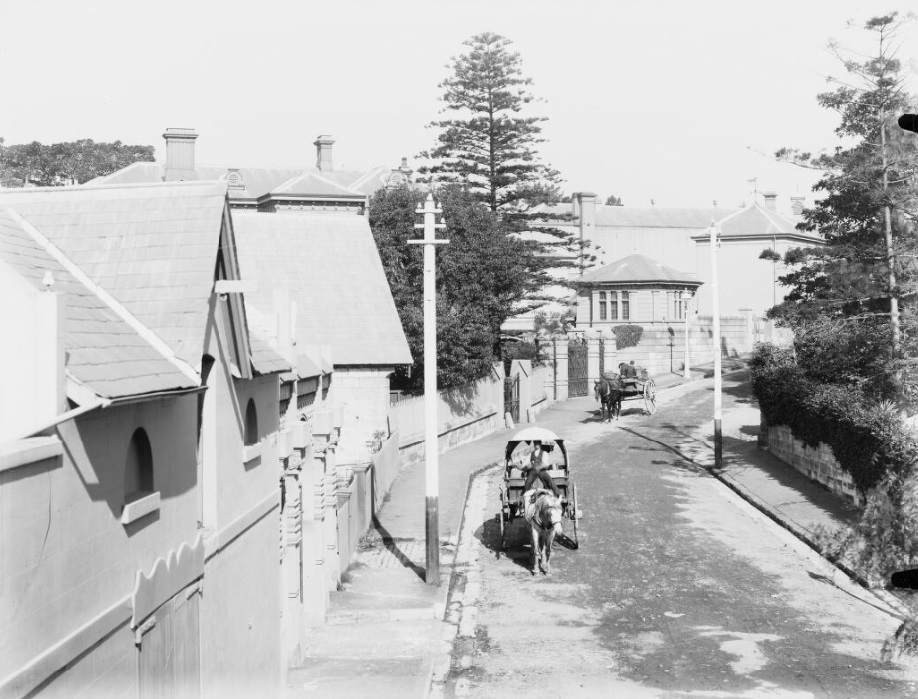
(1890). Coach houses to Clopee, Fairhaven and Wyldefel, Wylde Street, Potts Point, Sydney, ca. 1900, 2 Retrieved from http://nla.gov.au/nla.obj-141876266 - courtesy National Library of Australia.
At the polo grounds;
Lady Jersey, on Friday, 29th ultimo, accepted the invitation of the members of the Polo Club to afternoon tea at the grounds. The play was watched with much interest by the large assembly of guests, amongst whom were several on horseback. Lady Jersey was accompanied by the Ladies Margaret, Mary, and Beatrice Villiers, and the Hon. Arthur Villiers, and amongst the company were Sir George and Lady Innes, Mrs. P. B. Suttor and Miss Suttor, Mrs. and Miss Pilcher and Miss Austin, Mrs. and Miss Burdekin and Miss Blomfield, Miss Hixson, Mrs. Rupert Clarke and Miss O'Loghlen, Mr. and Mrs. Arthur Macarthur, Miss Gowlland, Miss Laidley, and Miss Broomfield, Mr. Mrs. and Miss Morgan, Mrs. Septimus Stephen, the Misses Stephen, and Miss. Osborne, Mrs. A. J. Brady and Miss Campbell, Mrs. George Allan and Miss Wilson, Mrs. and Miss Docker, Miss Salomons, Miss Dibborn, Miss Cox, Miss May Maxwell, Mr. Alison, Mr. Belleville, Mr. H. S. Bradshaw, and Mr. Charles Ryley.
and:
On Saturday evening last his Excellency the Governor and the Countess of Jersey, attended by Mr. Goschen, were present at the entertainment arranged by Miss Myra Kemble for the benefit of the destitute women and children of Sydney. The audience was thoroughly representative and appreciative, and included the Chief Justice and Lady Darley, his Excellency the Admiral and .Lady Charles Scott, the Mayor of Sydney and Mrs. Manning; Sir Julian and Lady Salomons, Lady and Miss Windeyer, Lady and the Misses Martin, Mr. and Mrs. F. E. Joseph, Mrs. John Marks, Miss Marks, Dr. and Mrs. L. S. Bowker, Dr. and Mrs. Murray Oram, Mr. and Mrs. Arthur Macarthur, Mrs. S. Browning, Miss Lamb and Miss Gowlland, Mr. and Mrs. Flood, Mr.' and Mrs. Robinson, Mrs. Douglas Mackenzie and Miss Hill, Hon. C. J. Roberts, Mrs. and Misses Roberts, Hon. W. J, Trickett and Miss Trickett, Mr. and Mrs. B. F. Marks, and very many other well-known Sydney residents.
Events of the Week. (1892, August 6). The Sydney Mail and New South Wales Advertiser (NSW : 1871 - 1912), p. 303. Retrieved from http://nla.gov.au/nla.news-article162191119
The cottage, of weatherboards on sandstone foundations, is already on the land in photographs that date from their 1900 marriage year and show up in articles lauding the wonderfulness of the great Kuring-Gai Chase National Park, which perhaps date from earlier, confirming Mr. Wheeler's statements that the bungalow was constructed in 1890:
KURING-GAI CHASE. TO THE EDITOR OF THE HERALD.
Sir,-The trustees have had the opportunity of paying an interesting official visit of inspection to the Chase. Accepting the well-known hospitality of the Hon R.H.D. White, they left Farm Cove in his steam yacht the White Star on Friday at 5pm. The trustees present were -The Hon H Copeland (president), Dr J C Cox, Messrs. E Du Faur, J. de V. Lamb, the Hon R. H. D White, M L C, the Hon F A Wright, M L A , and the hon secretary (Mr E J Siervern. The remaining trustees-the Hon Sir Joseph Abbott, Messrs T A Dibbs and W J Lyne-were unavoidably prevented from attending but Messrs Edmund Barton and Robert McMillan accompanied as guests.
After camping on Friday evening at the Basin, Pittwater, they proceeded to Lovett’s Bay (near Bay View), and inspected the works which have been carried out during the last year, under the Superintendence of Mr Du Faur. These consist of a substantial stone wharf, erected by consent of the owner of portion 17 and of the Lands Department, on the foreshore of portion 17, between high and low water marks, to deep water and a stone causeway, 8ft wide and 200ft long, from the wharf to the entrance of the Chase, which, owing to the shallowness of the upper part of the bay, was inaccessible without this concession from the adjoining freeholder. From the entrance to the Chase a path about 8ft wide has been cleared and formed through what was previously an impenetrable scrub to the head of the bay, where there is an abundance of fresh water crossing this, a similar path has been formed along the southern side of Lovett’s Bay to a charming nook at the back of "The Peninsula," Mr Oatley’s property. Here the water falls, except during such a dry season as the present, over cliffs about 80ft to 100ft high into a rock dell, where cabbage-tree palms and other vegetation luxuriate. These paths are about a mile in length.
Returning to the northern side of the bay, at a point about 12 chains from the end of the causeway, the party then descended by a zigzag path, which has been laid out to the summit of a hill which towers over the bay at a height of nearly 500ft, to a flagstaff, which is less than 800ft, on a base-line from the starting-point. Notwithstanding the difficulty of overcoming such a grade, and an absolutely perpendicular escarpment of over 100ft near the summit, the pathway is of gradual and comparatively easy ascent: it has been visited by many ladies, and from its summit a splendid view is obtained over Pittwater, Newport, and the ocean on one side, and the rugged features of the Chase on the other, a description of which must be left for another occasion. From the Flagstaff another path has been scrubbed for rather over a mile, to the Flat Rock; a peculiar formation, of which a graphic description has already appeared in the press. The trustees returned to the yacht by noon highly gratified with what they had seen, and expressing their astonishment at the amount of work done, and the facility of access afforded over so large a tract of country, previously inaccessible, at an expenditure including wharf and causeway of less then £200. KURING-GAI CHASE. (1896, February 11). The Sydney Morning Herald (NSW : 1842 - 1954), p. 7. Retrieved from http://nla.gov.au/nla.news-article14036808
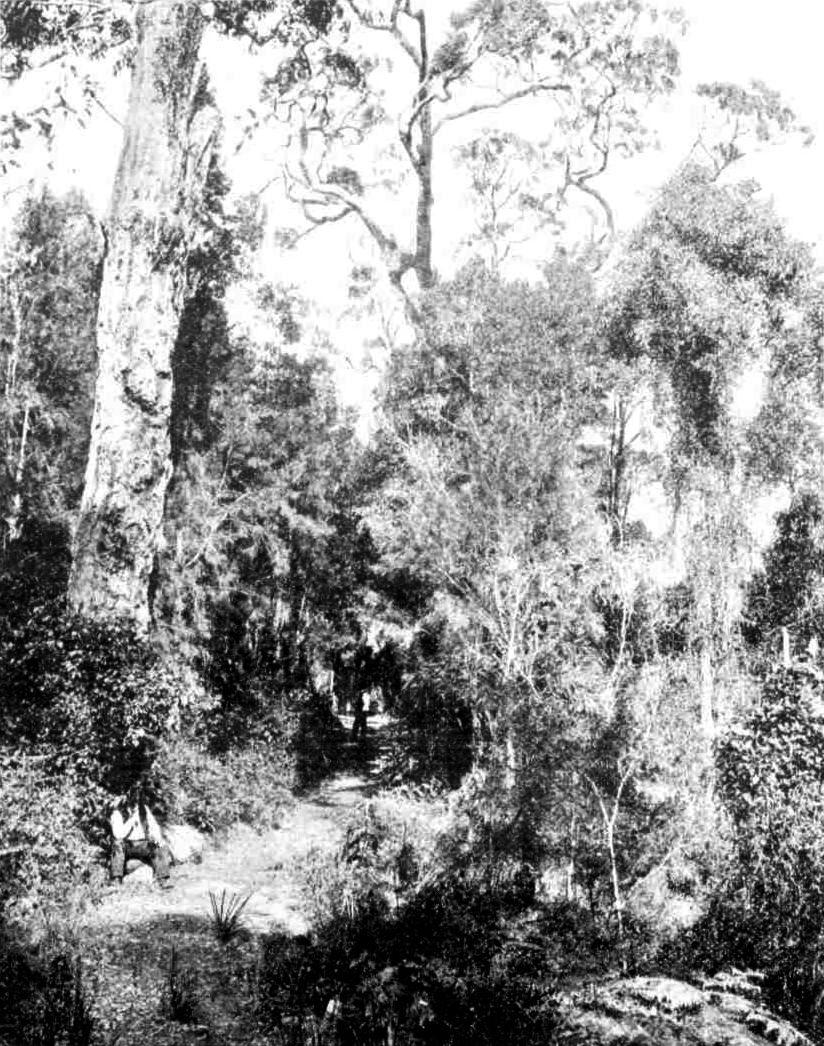
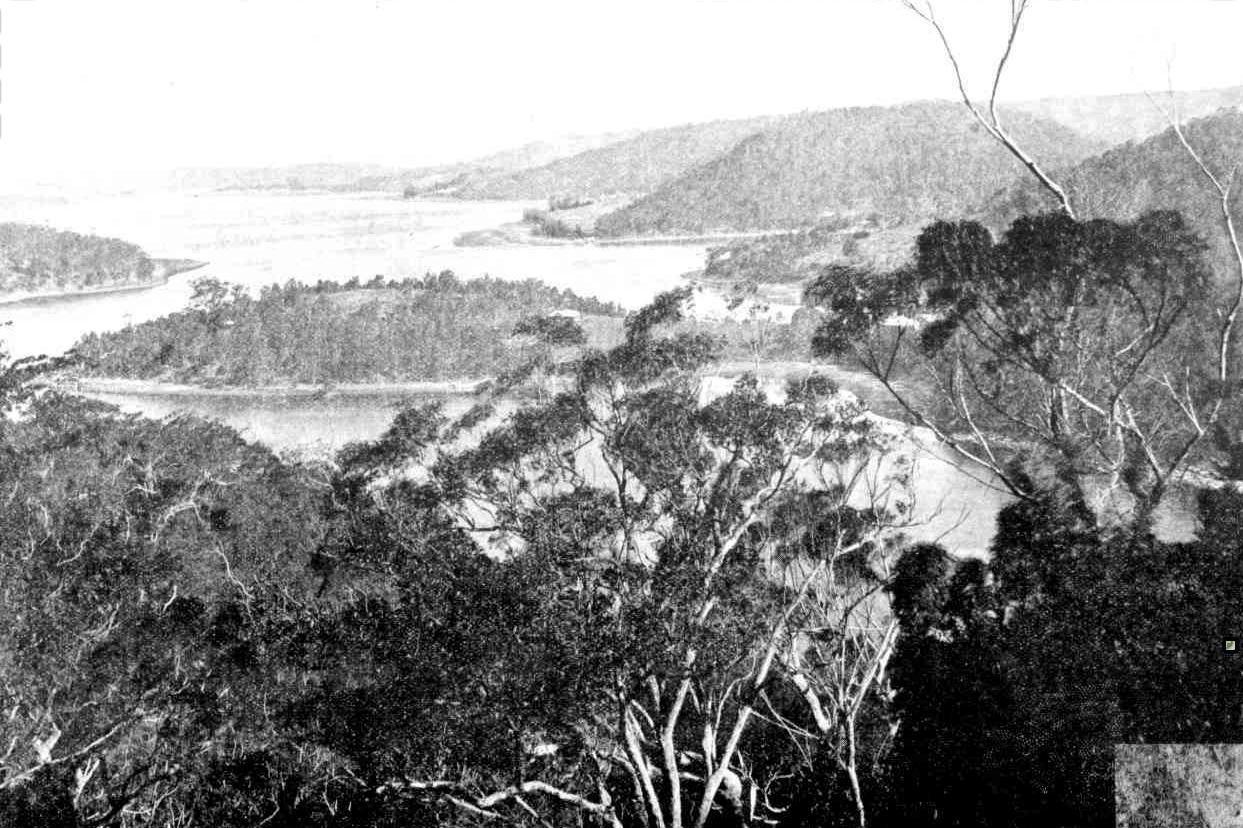
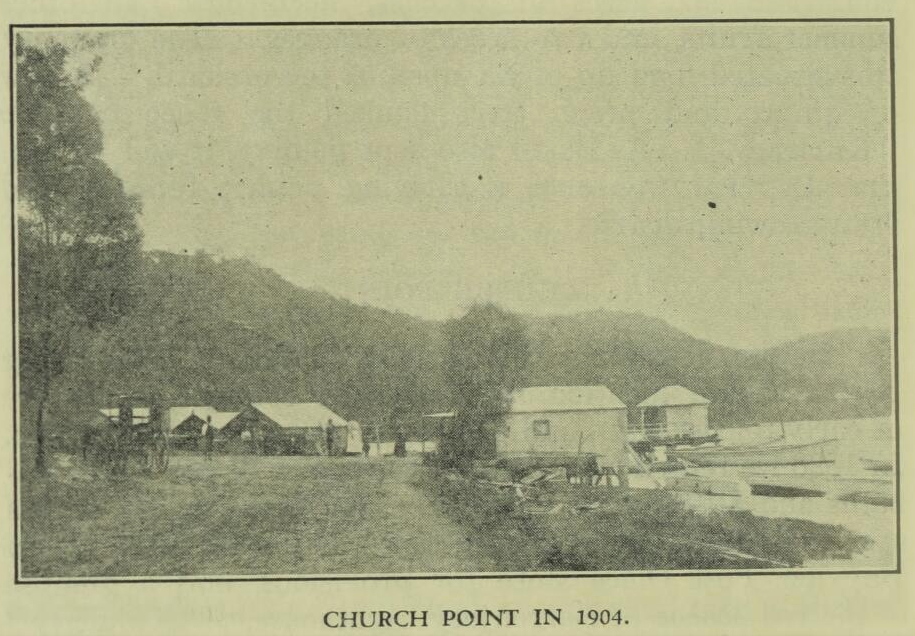
Church Point in 1904 - from The Early Days of Bayview, Newport, Church Point and McCarr’s Creek, Pittwater By J. S. N. WHEELER. Appears in Journal and proceedings / Royal Australian Historical Society Vol. 26 Part. 4 (1940)
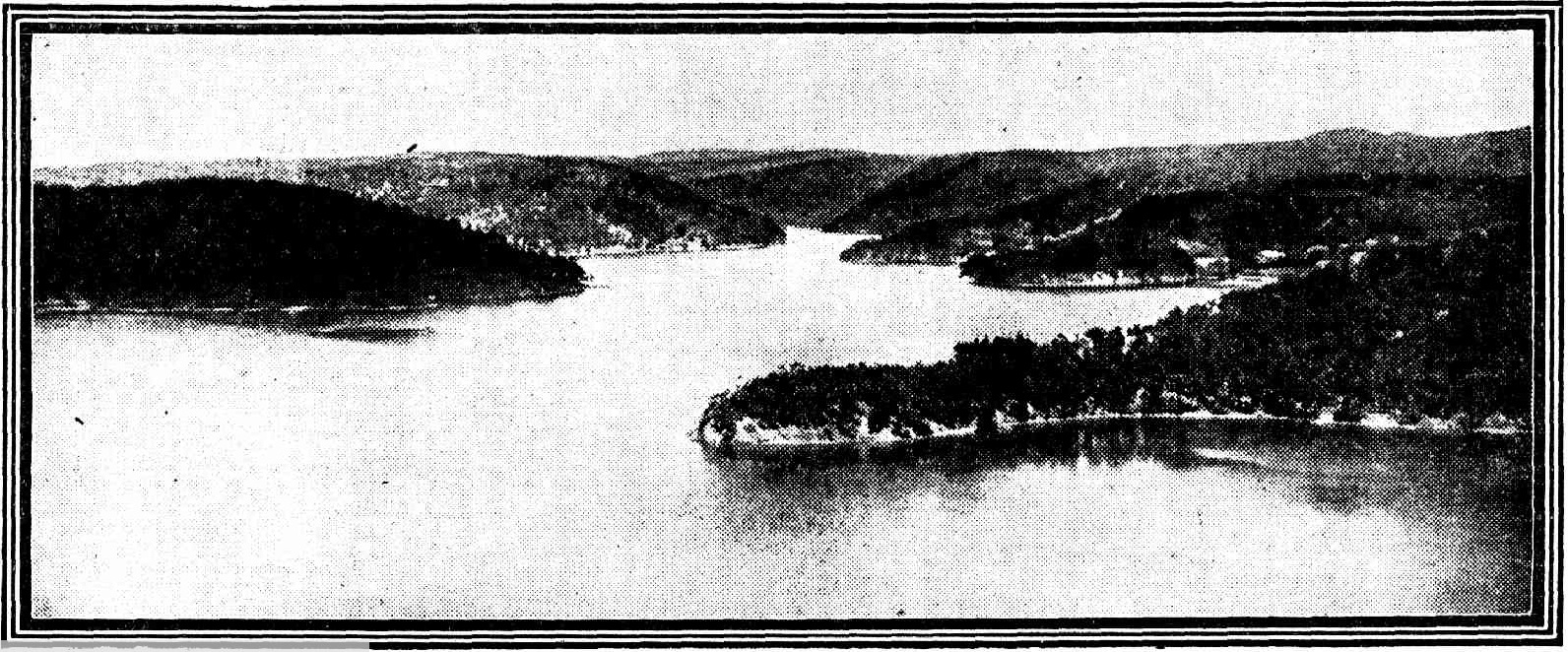
.jpg?timestamp=1547430714993)
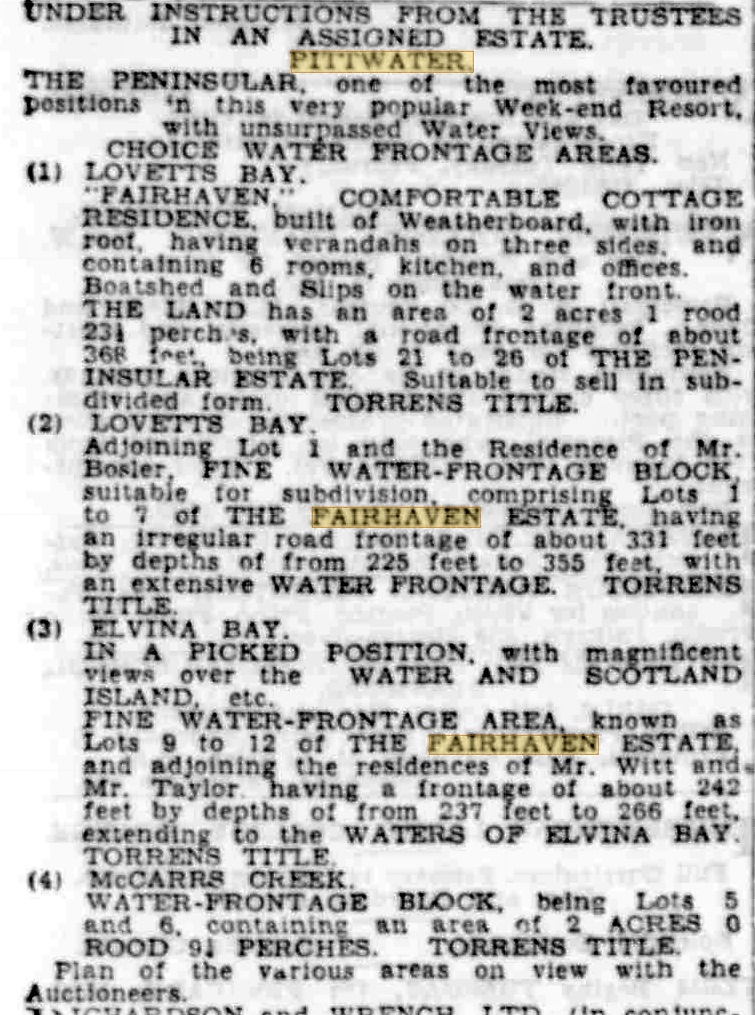
Advertising (1933, January 7). The Sydney Morning Herald (NSW : 1842 - 1954), p. 20. Retrieved from http://nla.gov.au/nla.news-article16943780
Mr. Bosler also acquired more land on the Flood Peninsula as Warringah Shire Council's Meeting 1st of February, 1944 shows. The Meeting also records where much of all that old stone that once fronted the waterfronts possibly disappeared to. These items also show that a cow for milk, or cows plural, were still on the land during 1944:
37) A. Bosler, stating he recently bought Lots 21/6, Lovett Bay, Pittwater, that he is unable to procure barbed wire for the fencing of the land, and requesting permission to put a plain wire fence across Sturdee Lane, an unused road, to assist in keeping cattle off the land. Resolved, - That he be informed the Council cannot grant such permission. (38) E. Y. Mills, 21/1/44, reporting that certain persons Elvina Bay have been removing dressed atone work from the approach to the wharf wharf in Elvina Bay, Pittwater, for use on their own property in constructing slipways, etc, that the wharf is consequently becoming a danger, and requesting Council to compel the offenders to replace the stone work, etc, in a proper workman- like manner. Resolved, - That the matter be referred to the Police with a View to prosecution. (Crs. Spicer, Dunbar)
PITTWATER. — LOVETT'S BAY, "FAIRHAVEN,"
Weatherboard Cottage, together with boat-shed, on the water-front, wooden Jetty and enclosed bathing area. Mortgagee's sale. Advertising (1936, December 11). The Daily Telegraph (Sydney, NSW : 1931 - 1954), p. 20. Retrieved from http://nla.gov.au/nla.news-article246982031
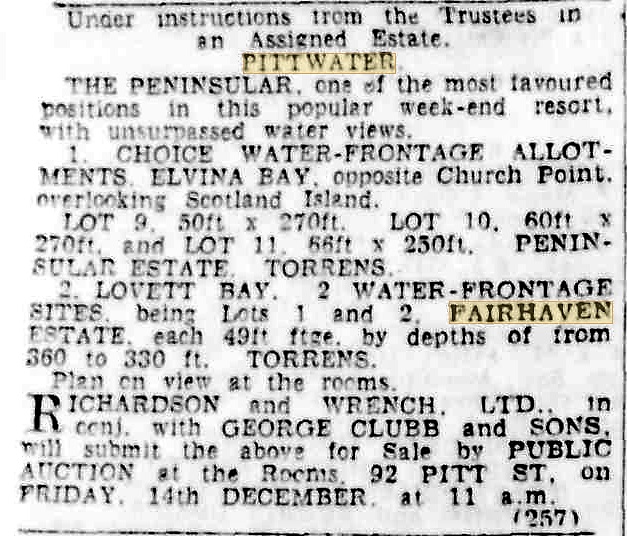
Advertising (1945, November 28). The Sydney Morning Herald (NSW : 1842 - 1954), p. 15. Retrieved from http://nla.gov.au/nla.news-article17961310
The Red House - Wyandra - Trincomalee
At the point of Flood’s Peninsula (Rocky Point) on the rise above the water westward of Scotland Island lies the solid stone and timber residence once known as the “Red House.” It was built in 1891 by J. Booth for Signor Stefani, artist and teacher of music. [3.]
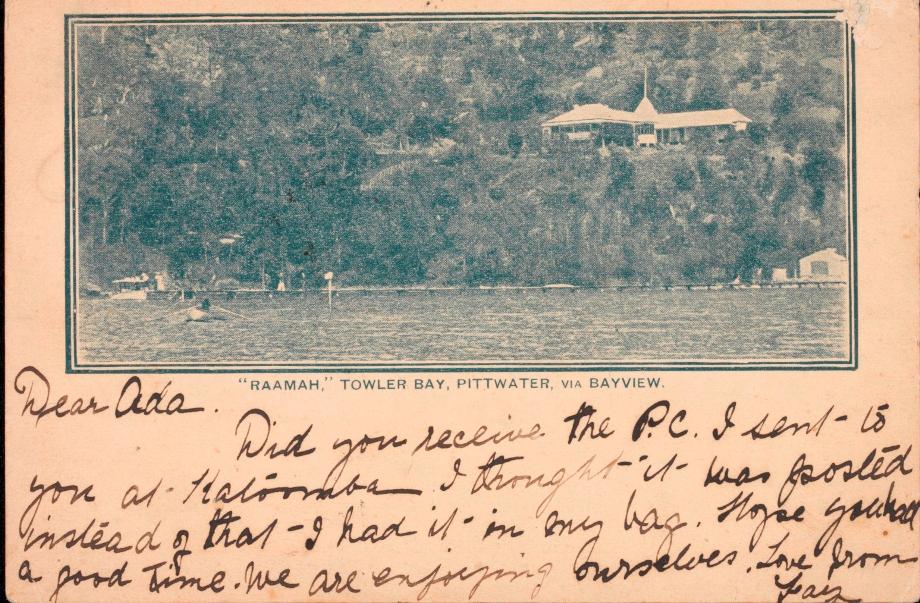
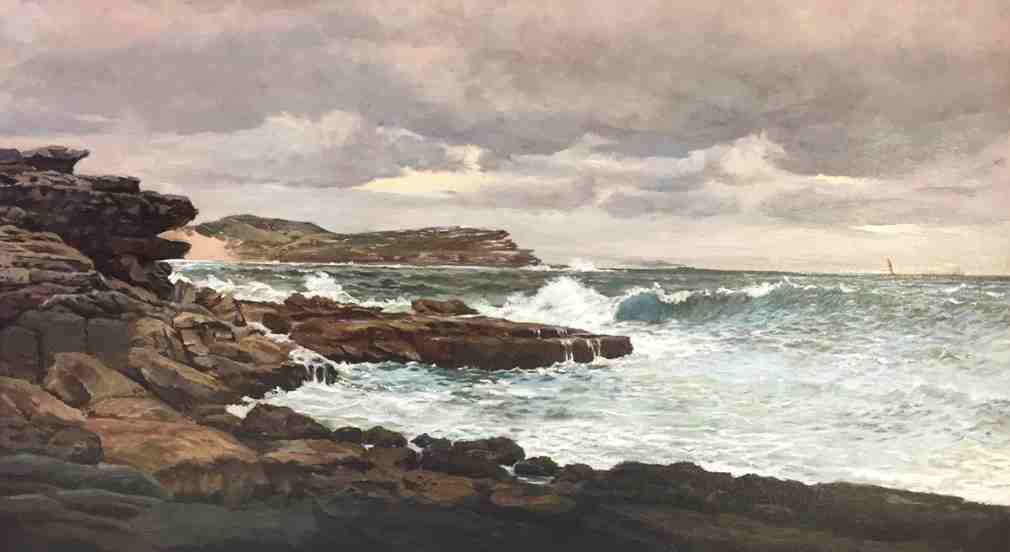
MR. STEFFANI'S Pittwater residence to LET, Furnished, for a term. Contains every convenience found in a town house, including permanent fresh water supply by gravitation, large swimming bath, boat shed, flower and kitchen garden. 56 Elizabeth-street. Advertising (1898, June 26). Sunday Times (Sydney, NSW : 1895 - 1930), p. 2. Retrieved from http://nla.gov.au/nla.news-article125519293
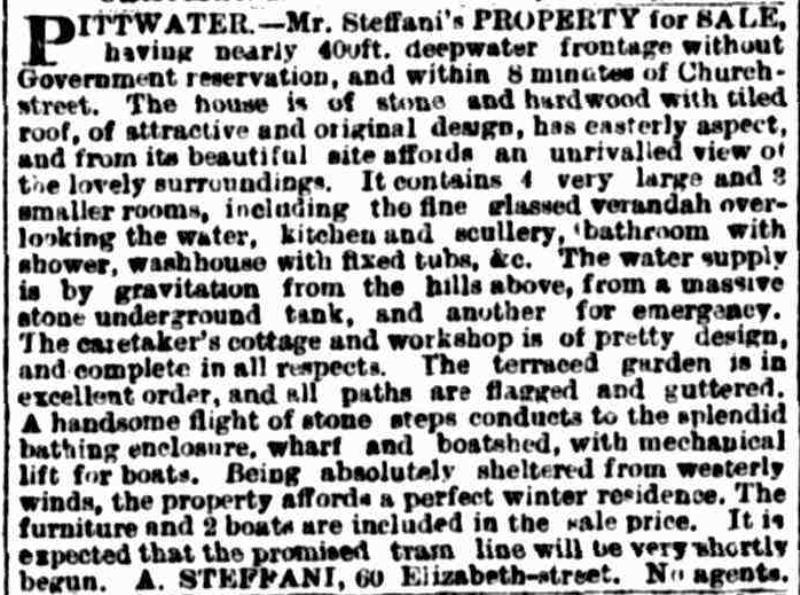
Mr. J. Longstaff has just completed a fine portrait of Sir Frederick Darley.- He is now engaged on a portrait of Mr. Francis Foy's late wife, and a study of the children of Mr and Mrs. J. J. Smith. There was a large attendance at the New Gallery, Regent-street, on Tuesday, when the private view was held of the Society of Portrait Painters. The show includes a display of sculpture by Messrs. Basil Gotto, John Tweed, A. G. Walker, and F. Derwent Wood. The latter is the husband of the well-known Australian singer, Miss Florence Schmidt; his principal exhibit is a bronze head of Signor Arturo Steffani, which is an exceptionally fine piece of work, and an excellent likeness. Signor Steffani, it will he remembered, was Mrs. Wood's teacher. Mr. Basil Gotto shows a small head in marble of Mrs. Arthur Burberry, a very handsome Tasmanian, and daughter of Mr. W. Guesdon, of Hobart. PERSONAL NOTES FROM LONDON. (1904, December 21). The Daily Telegraph (Sydney, NSW : 1883 - 1923), p. 3. Retrieved from http://nla.gov.au/nla.news-article237833315
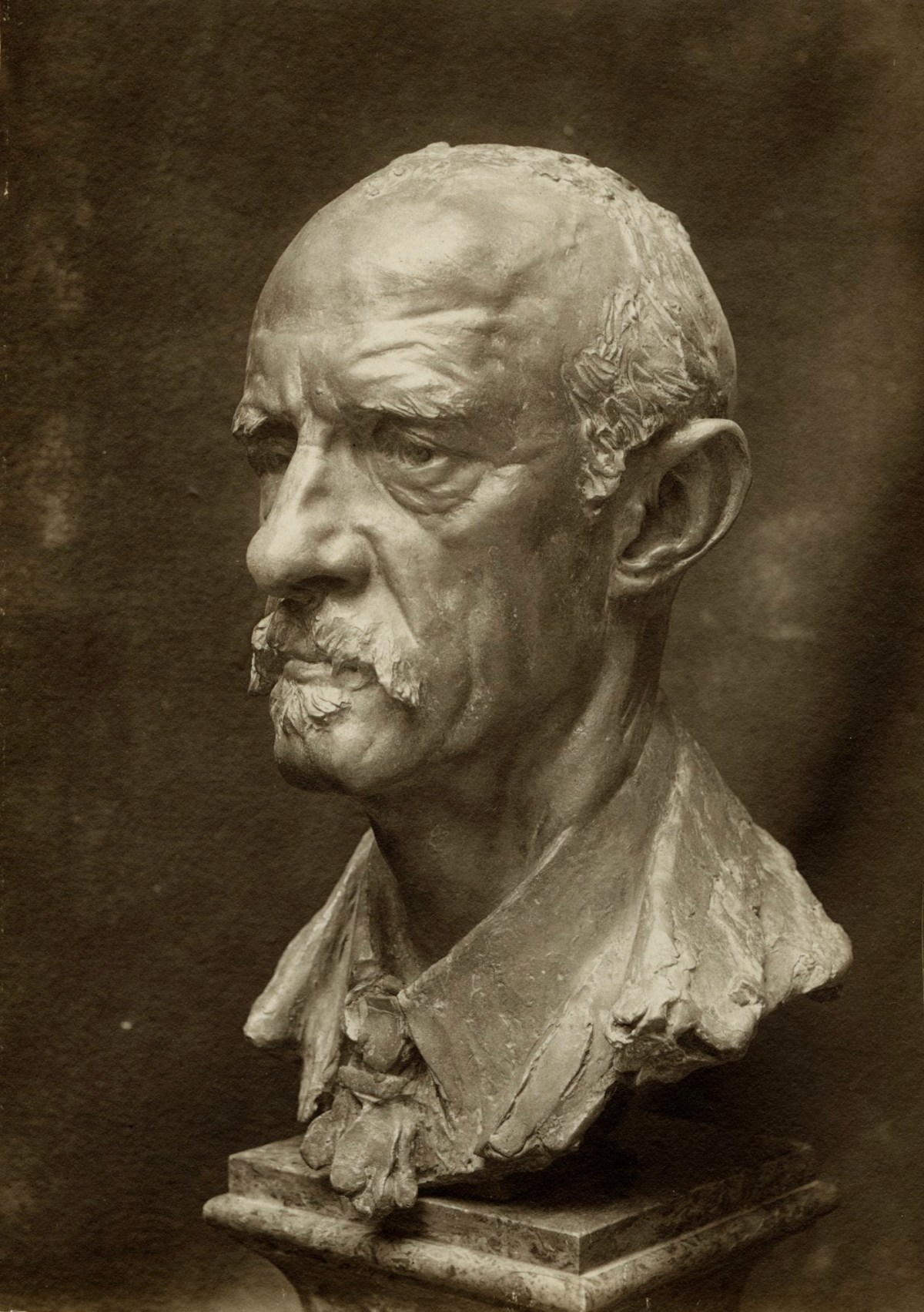
Arturo Steffani, 1906 - F. Hilaire d'Arcis (1845 - 1931) Royal Academy Collection: Art. Photograph of a bronze portrait bust of Signor Arturo Steffani. The bust was exhibited at the Royal Academy of Arts in 1904, (cat.1716) and again in 1927 when it was included in the Derwent Wood memorial exhibition, cat.7. One of a collection of 67 photographs of sculpture by Francis Derwent Wood R.A. which belonged to Kineton Parkes
The Steffani house at Rocky Point was purchased by William Henry Speechley, an inventor, whose son Frederick Charles graduated from the Hawkesbury Agricultural College:
Diploma Day at H.A. College
We were last week compelled to hold over the list of prizes and diplomas presented at the H. A. College. The Minister for Agriculture made the presentations, of which the following is a list:— Diploma Students, 1905.
… F. C. Speechley (Pittwater), piggery certificate ; Diploma Day at the H. A. College (1905, April 22). Windsor and Richmond Gazette (NSW : 1888 - 1954), p. 1. Retrieved from http://nla.gov.au/nla.news-article85891449
ATTENTION is directed to the notification in the- "Government Gazette" of this date of APPLICATIONS made for SPECIAL LEASES, as hereunder mentioned. Any objections lodged in writing at this office on or before April 17, 1907, or before the Local Land Board 6hall have concluded its inquiry at the hearing of the respective applications for such Special Leases, will be duly considered; and any objections lodged after that period will not be entertained. T. V. FURBER, Metropolitan District Surveyor.
Applicant; Wm. Henry Speechley. locality: Co. Cumberland, Ph. Broken Bay, Rocky Point, Pittwater. Area:8 ½ p. For boathouse, jetty, and bathing-place.
Applicant: Bernard J. Newmarch. Locality: Co. Cumberland, Ph. Narrabeen, Scotland Island, Pittwater. For wharf.
Advertising. (1907, April 13). The Sydney Morning Herald (NSW : 1842 - 1954), p. 6. Retrieved from http://nla.gov.au/nla.news-article28151646
About thirty-five years ago Mr Speechley, of Speechley and Bennett, engineers, bought the place with its spacious grounds and named it “Wyandra.” It had a good baths, wharf, and tennis-court. A pleasing feature is the Italian balustrade flanking the stone steps leading to the grassy banks in front of the house. The dining room had windows right along facing the bay. [3.]
.jpg?timestamp=1547010620191)
Section from Plan of Bay View and Pittwater district Image No.: c053460078, circa 1888 - 1905, courtesy State Library of NSW - note lower left hand side 'Meritana' - A Wood.
The 1915 'Flood's Peninsula Estate' sale map material shows a Mr. Baker now owns the cottage at Rocky Point. Mr. Speechley passed away the same year his wife did - 1914.
In 1919 Sophie (nee Foy) and James Joseph Smith, who changed the house's name from the Red House to Trincomalee – meaning 'a view from three points' – after they holidayed in Ceylon, acquired the holiday home. Mr. Smith was on Pittwater Regatta Committees and offered a prize for one of the events:
PITTWATER regatta
The following officials hnve been elected to control the sailing and yachting events at the Plttwater occulta on New Year's Day:— Commodore. Mr. J. J. Smith; vice-commodore, Mr. F. J, S. Young: starter. Mr. S. J. Keegan; judge, Mr, F. S. Adams; umpire, Mr. George Hawksley: timekeepers, Messrs; T. L Mulhall, S. D. McLaren and O. Lind. The various ladies' rowing clubs are to be asked to co-operate. PITTWATER REGATTA (1920, December 1). The Sun (Sydney, NSW : 1910 - 1954), p. 8 (FINAL EXTRA). Retrieved from http://nla.gov.au/nla.news-article222667182
…a similar trophy, the gift of the president of the regatta, Mr. J. J. Smith, for the coachhouse craft, has attracted fifteen entries. PITTWATER REGATTA. (1921, January 1). The Daily Telegraph (Sydney, NSW : 1883 - 1923), p. 6. Retrieved from http://nla.gov.au/nla.news-article239726440
...Wanderer was the winner and annexed the valuable cup donated by Mr. James J. Smith, president of the regatta. SUCCESSFUL PITTWATER REGATTA (1921, January 7). Arrow (Sydney, NSW : 1916 - 1933), p. 11. Retrieved from http://nla.gov.au/nla.news-article103427398
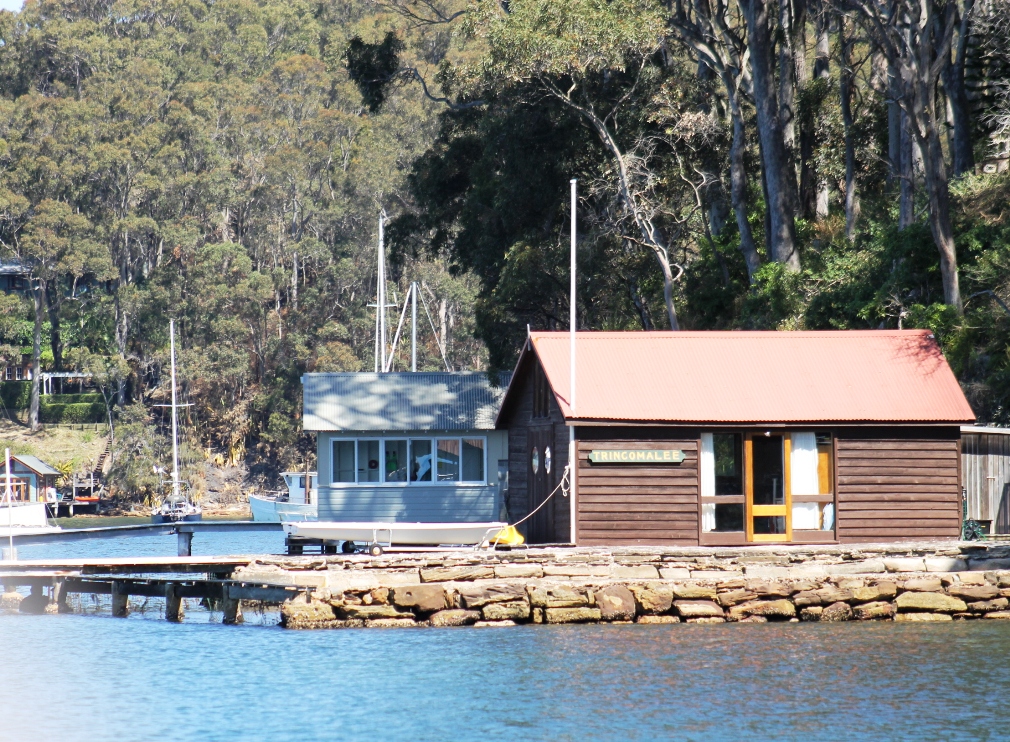
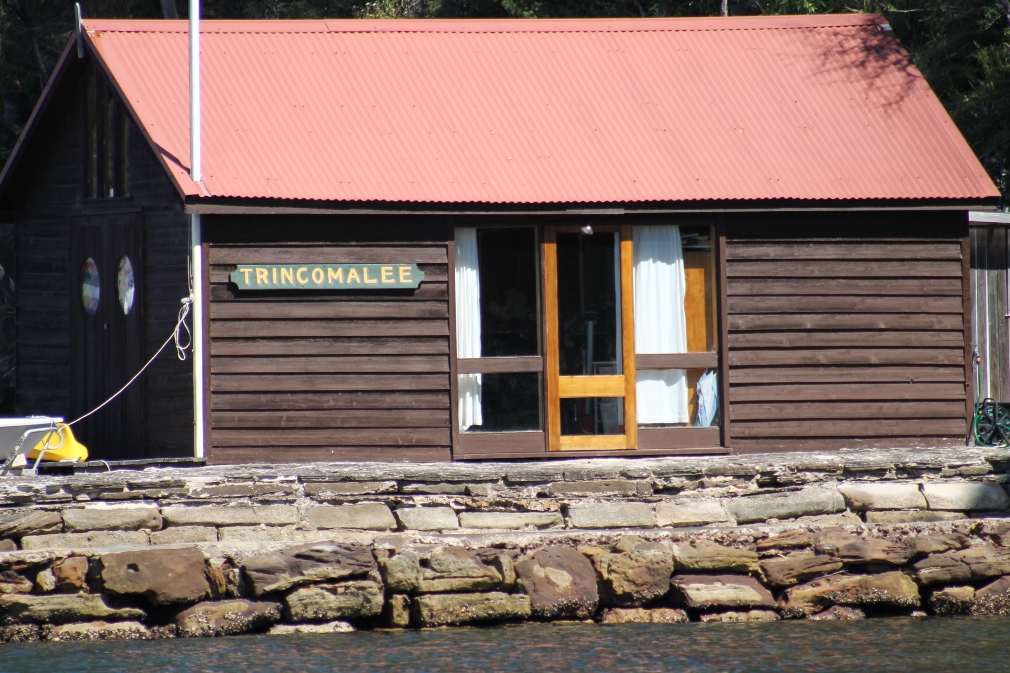
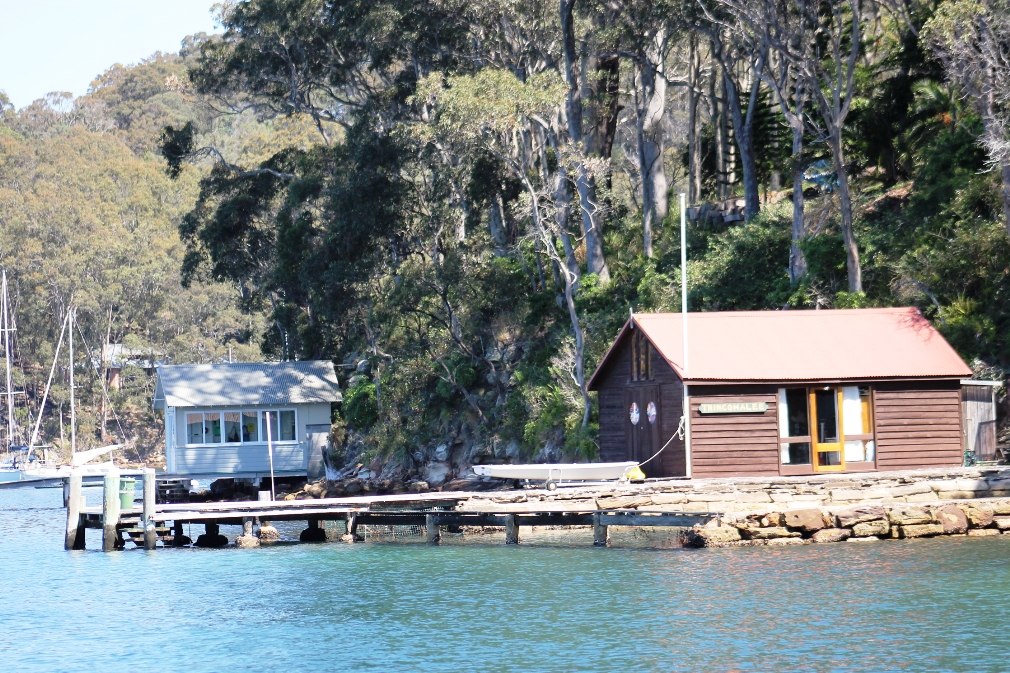
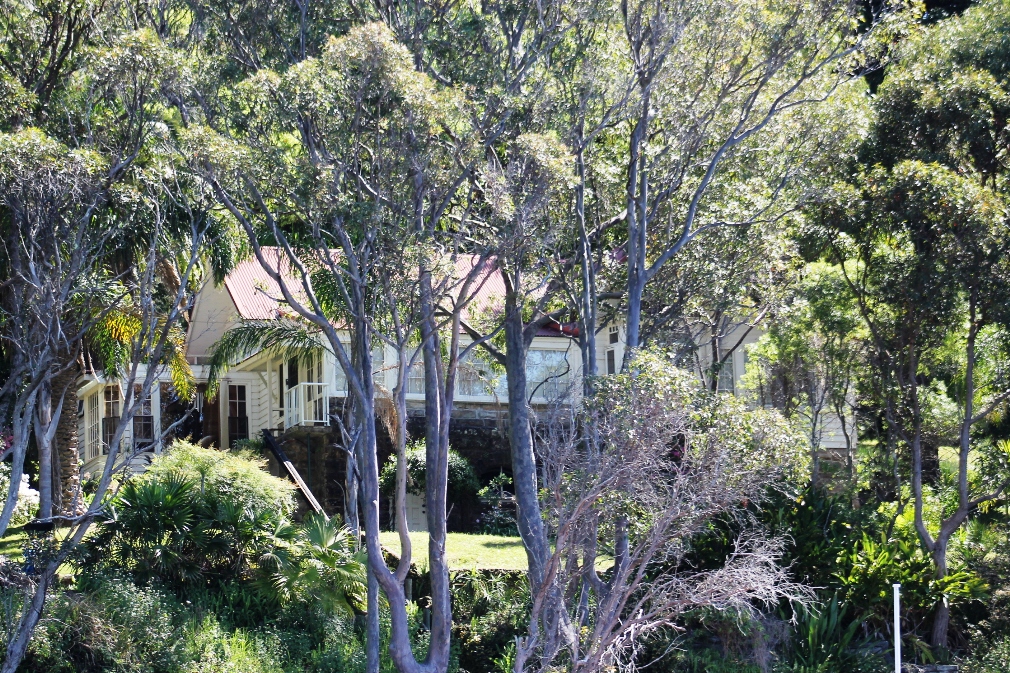
DEATH OF MRS. J. J. SMITH.
Mrs. J. J. Smith, wife of Mr. J. J. Smith, co-managing director with Mr. Mark Foy, of Mark Foy's, Ltd., died at her home, Cole-brook, Double Bay, yesterday evening. Mrs. Smith was 49 years of age, and for some time she had been in a low state of health. She was the youngest daughter of the late Mr. Mark Foy, and she is survived by her husband, two daughters, and one son, also by two brothers, Messrs. Mark Foy and Hugh Victor Foy (both of whom are at present in America) and one sister, Mrs. Ward, of Narrabeen.
The late Mrs. Smith was deeply interested in many philanthropic movements, but for a considerable time the state of her health pre-vented her from taking any active part in them.
There will be a requiem mass at St. Joseph's Church, Woollahra, at 9.30 o'clock to-morrow morning, and the funeral will leave the church for the South Head Cemetery at 10.15 o'clock.
DEATH OF MRS. J. J. SMITH. (1919, May 30). The Sydney Morning Herald (NSW : 1842 - 1954), p. 7. Retrieved from http://nla.gov.au/nla.news-article15841082
THE LATE MR. J. J. SMITH.
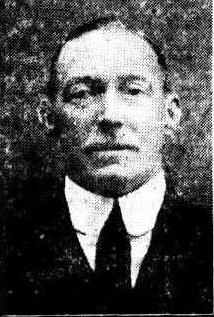 The death occurred at his residence, Colebrook, Double Bay, yesterday afternoon, of Mr. James Joseph Smith, chairman and managing director of Mark Foy's, Ltd.
The death occurred at his residence, Colebrook, Double Bay, yesterday afternoon, of Mr. James Joseph Smith, chairman and managing director of Mark Foy's, Ltd.
Mr. Smith died on the anniversary of his birth, which occurred in Dublin 57 years ago. He arrived in Australia when in his twenties, and soon afterwards entered the business of the late Mr. Mark Foy. He rose in the service until, upon the retirement of the late Mr. Francis Foy, he became general manager, being associated with Mr. Victor Foy. Mr. Smith had been suffering from illness for the past two months, and had been confined to the house for several days. He was exceedingly popular with all classes, and was of a very charitable disposition. He married Sophie, youngest daughter of the late Mr. Mark Foy. She died some years since, leaving two daughters and one son. The former have just returned from a trip to England. He married later, Miss Turner, of Hobart, who also survives him.
He was particularly fond of yachting and waterside recreation, being a member of the Royal Prince Alfred Yacht Club. He also spent a good deal of time at Pittwater. He was a member of the A.J.C.
Mr. Smith was the son of the late Mr. William Smith, a large army contractor in Dublin.
THE LATE MR. J. J. SMITH. (1921, July 22). The Sydney Morning Herald (NSW : 1842 - 1954), p. 10. Retrieved from http://nla.gov.au/nla.news-article15929913
Neil Donovan Smith was the son of Kathleen Sophie Smith (nee Foy - known as 'Sophie', a daughter of Mark Foy, founder of the retail chain Mark Foys) and James Joseph Smith (above). His Aunt Alice had a holiday home at Collaroy and was grandmother to Patron of the Avalon Beach Historical Society and former Judge, James J. Macken, of Coasters Retreat still, while his Uncle, Mark Foy, had a place just around the corner, 'The Cabin' of Bayview - just opposite where the current BYRA clubhouse is. Walter Gibson, who would soon own Maritana (see below) the old Arthur Branscombe Wood property on the head of Elvina Bay, was the youngest son of that earlier partnership between the patriarch of these Foys, Gibson & Foy. There are other Foy descendants still present in Pittwater as well, and many that visit for Summer-Christmas get togethers.
When Sophie passed away the bulk of her Estate was bequeathed to her son and daughters. Neil worked in the family business, hard work despite being well off was the obvious family motto, as well as looking out for and after others, and when he wanted to relax it was here, and salt air and messing about in boats that was most attractive. 'Moonmist, built by Cedric Vincent Williams at Bayview Wharf and launched on Pittwater, is among one of these boats. His name appears among many Pittwater Regatta results as 'N. Smith' or 'N.D. Smith'.
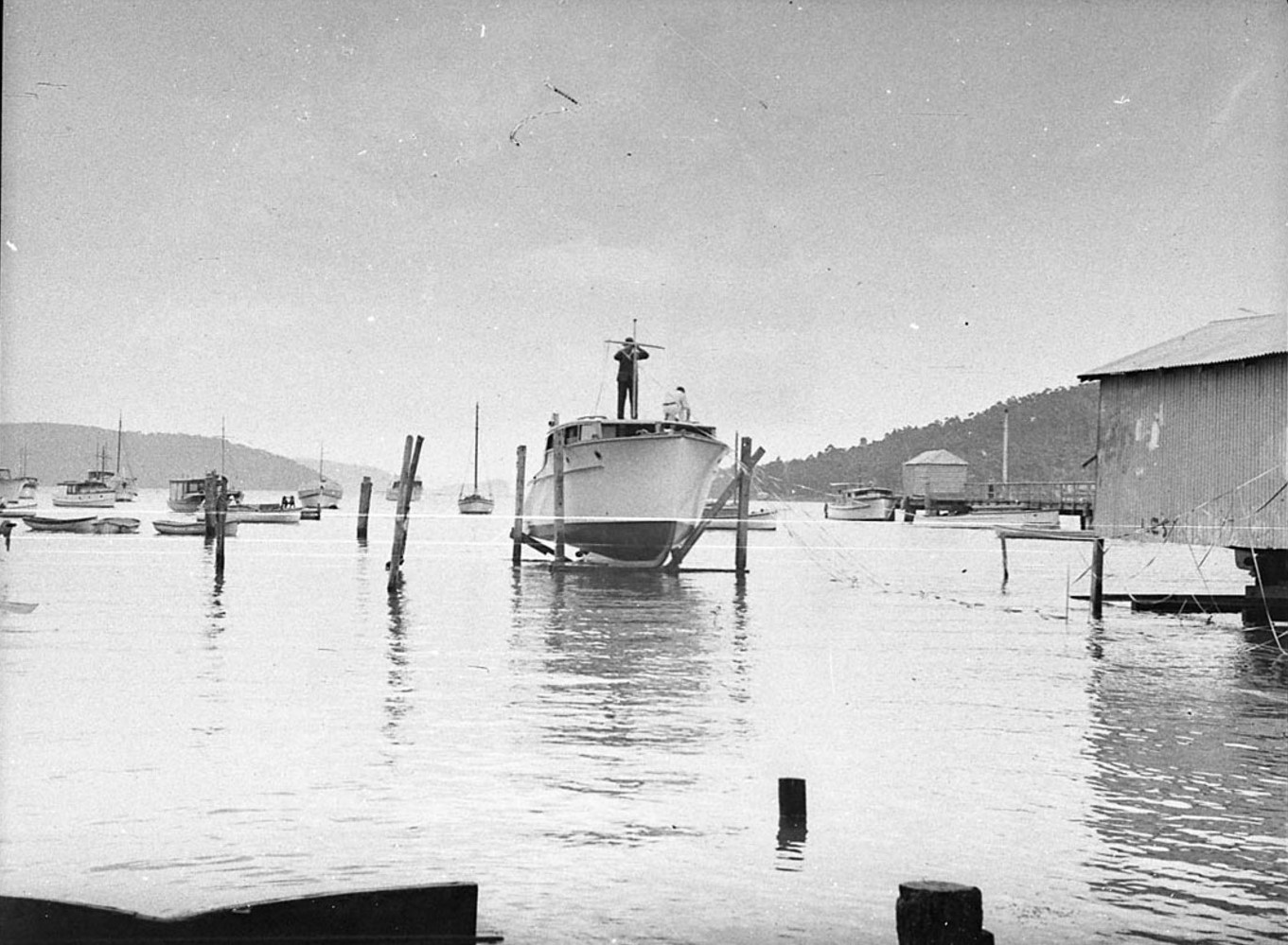
Mr. Smith's cabin cruiser Moonmist on the slipway, Pittwater by Sam Hood, Image No.: hood_08373h, courtesy the State Library of New South Wales.
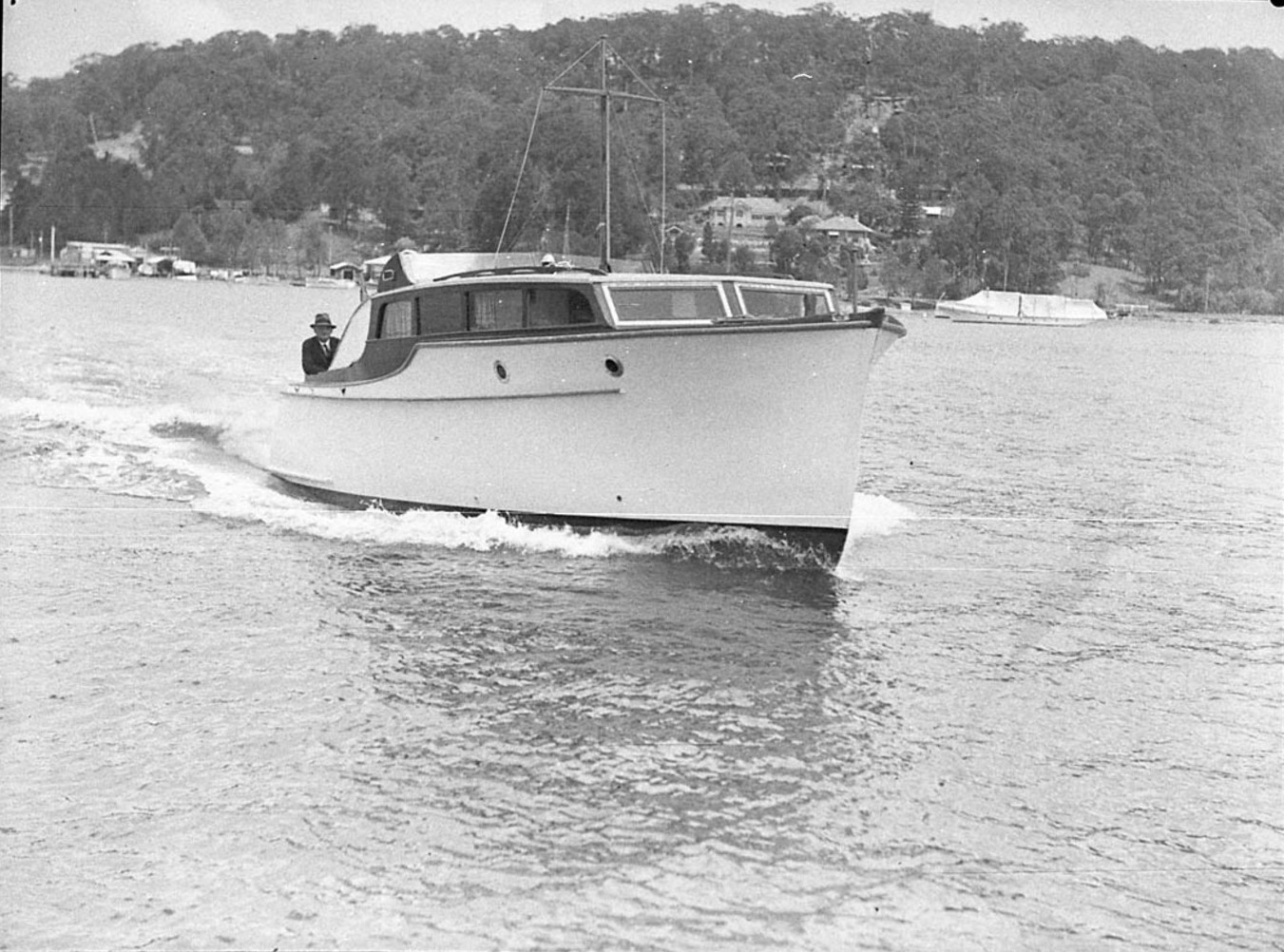
Moonmist, Newport (was a Launch and this is the Launch day/party: 28/1/1937) photo by Sam Hood, Image No: hood_08380h, courtesy the State Library of New South Wales.
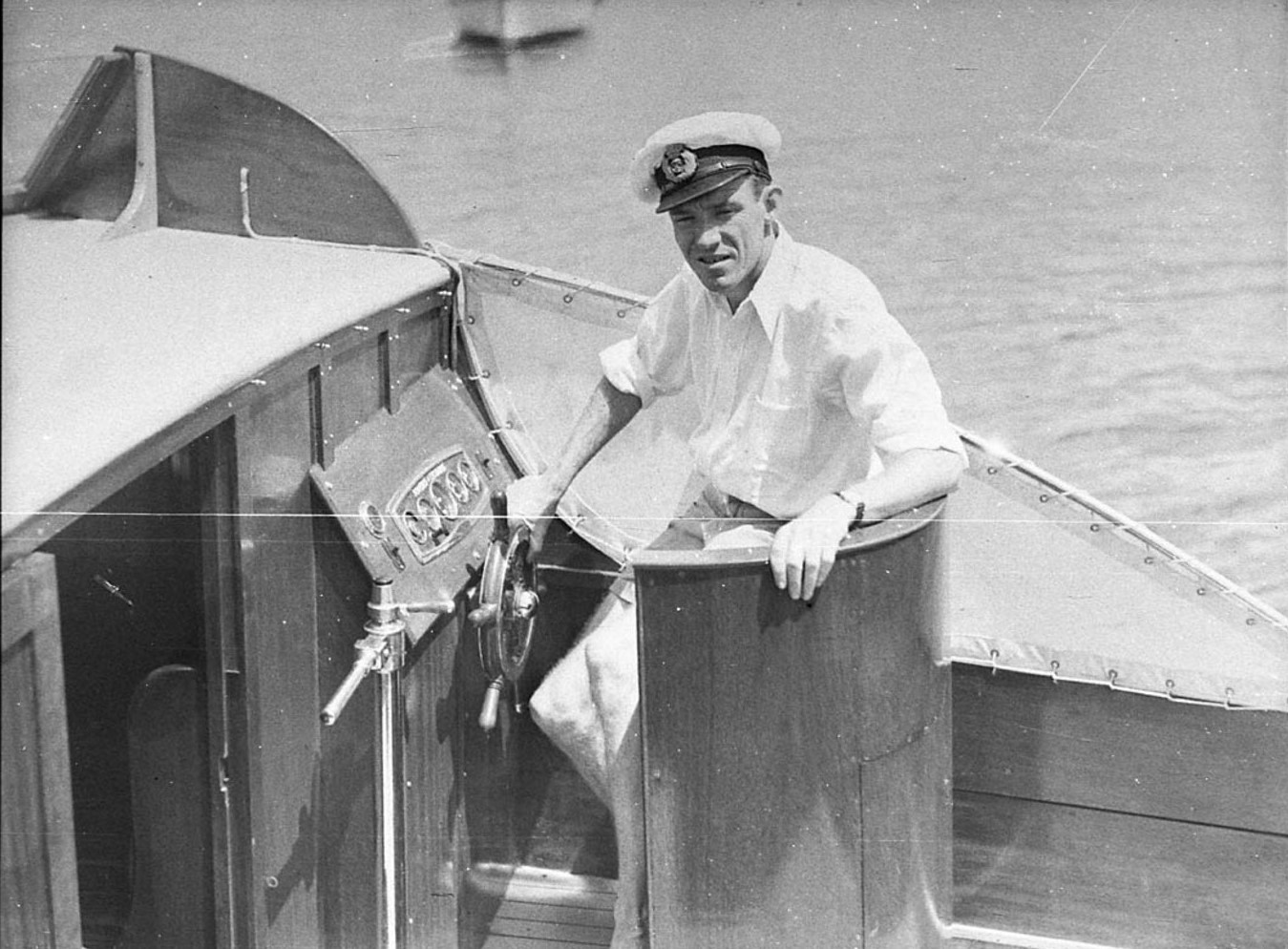
Mr Smith at the controls on his cabin cruiser Moonmist, Launch Party, 28/1/1937, photo by Sam Hood, Image No.: hood_08380h, courtesy State Library of New South Wales.
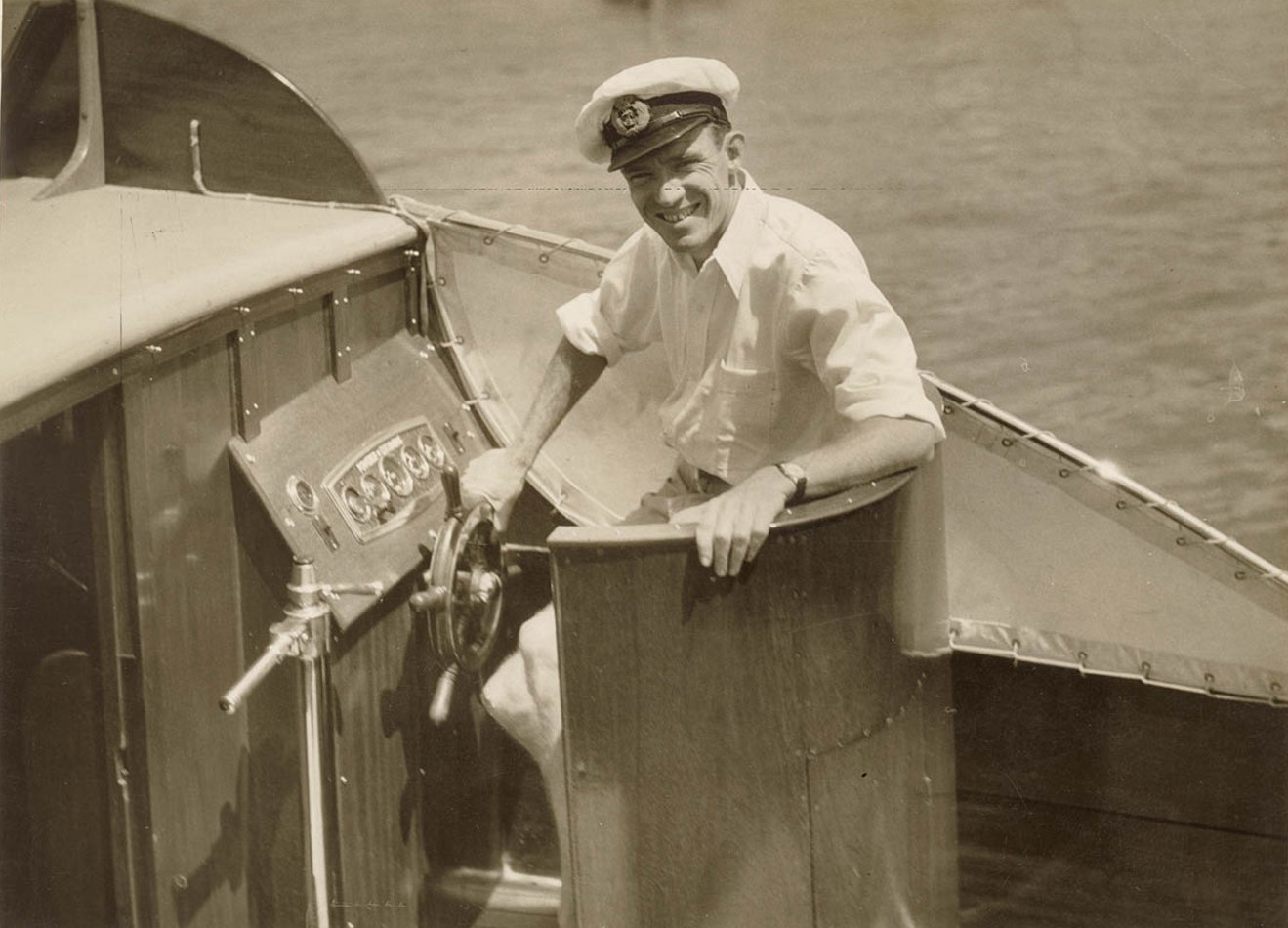
Mr Smith at the controls on his cabin cruiser Moonmist, Launch Party, 28/1/1937, photo by Sam Hood, Image No.: a409026h, courtesy State Library of New South Wales.
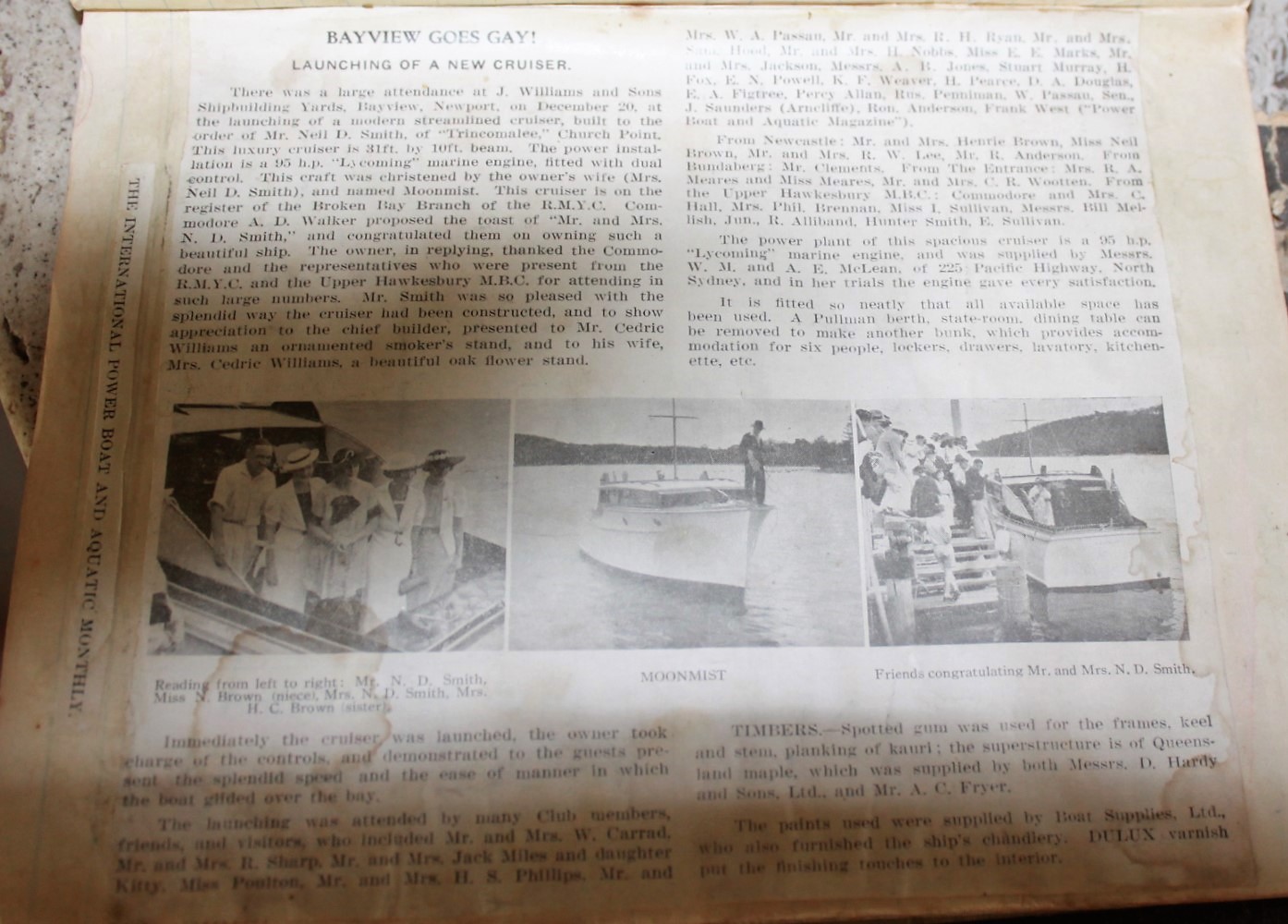
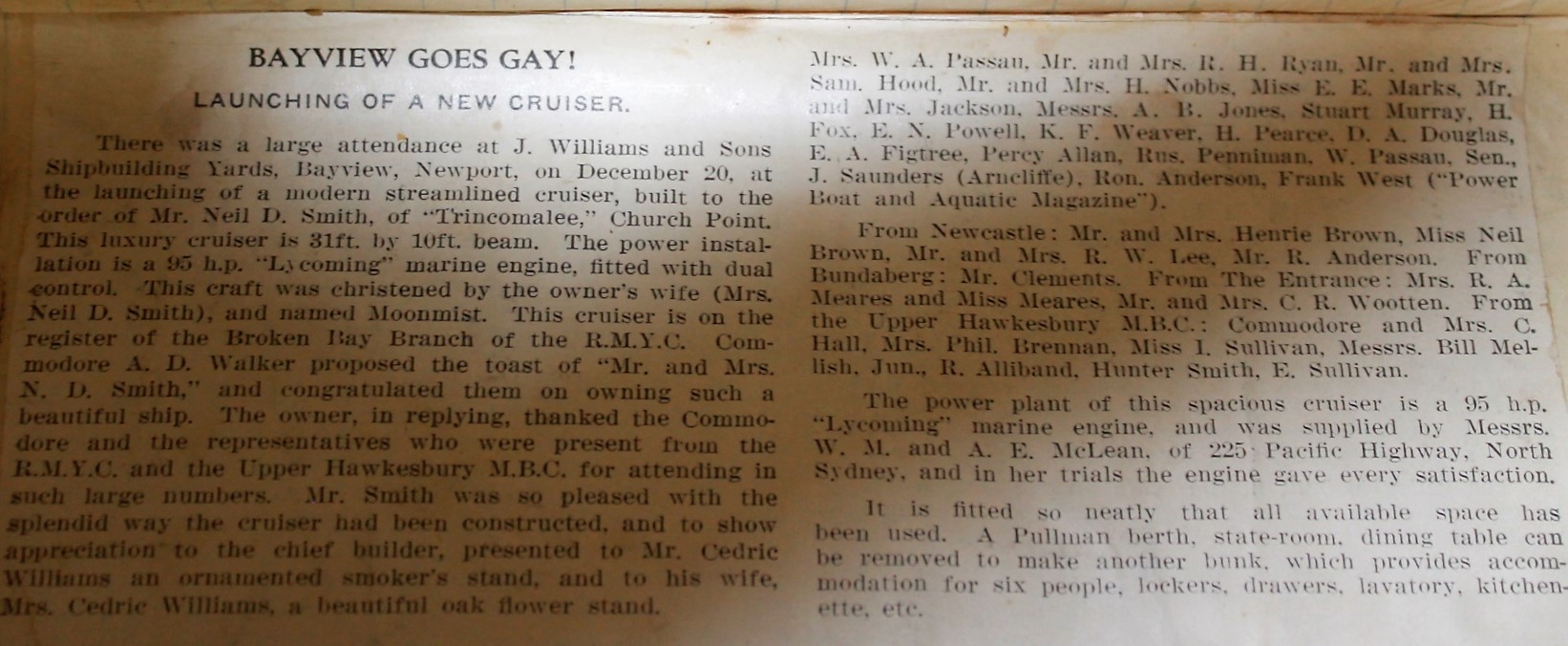
Mrs. E. Ward is entertaining a large house party at her sea-side home 'Kooringai,' Collaroy Beach, during the holidays. Most of her guests spent Boxing Day at the Pittwater Regatta, where Mr. Neil Smith was competing in his new boat. SOCIAL GOSSIP (1925, December 28). Daily Advertiser (Wagga Wagga, NSW : 1911 - 1954), p. 5. Retrieved from http://nla.gov.au/nla.news-article143372684
Delightful House Party.
Mrs. J. J. Smith and Mr. Neil Smith are entertaining a large party of friends at 'Trincomalee' Pittwater, these latter weeks. Mrs. Smith will not return to her flat at 'The Wellington,' Woollahra, for another month or so. She is a charming hostess, and is particularly good to the younger set. SOCIAL NEWS AND GOSSIP. (1925, December 31). The Catholic Press (NSW : 1895 - 1942), p. 22. Retrieved from http://nla.gov.au/nla.news-article114740613
Attention is invited to notice in the ‘Government Gazette’ of 19th October 1928, of application for extension of Special Lease 07/3 Metropolitan by Neil Donovan Smith, for boathouse, bathing place and jetty, being an area of about 17 perches, situated below highwater mark, Pittwater, fronting Allot 19 Ventnor Estate, Parish of Broken Bay, County of Cumberland. Objections may be lodged at Land Board Office Sydney up to 19th November, 1928. H.R. Matthews, Metropolitan District Surveyor. Advertising (1928, November 6). The Sydney Morning Herald (NSW : 1842 - 1954), p. 15. Retrieved from http://nla.gov.au/nla.news-article16507025
APPLICATIONS FOR LEASES FOR SPECIAL PURPOSES.
THE undermentioned applications have been received for Special Leases of the lands and for the purposes hereunder stated. It is the intention to grant the leases should no sufficient objection be found to exist after inquiry by the Land Board and consideration by the Minister. Any objections will receive due consideration if lodged in writing with the District Surveyor for the Land Board District in which the land is situated.
J. B. RENSHAW, Minister for Lands.
Parish Broken Bay, county Cumberland; extension of term of Special Lease 35-15, Metropolitan, for bathing place, boatshed, slip wharf and landing place. Land applied for—about 19 perches below high-water mark of Rocky Point, Pittwater, fronting allotment 19 of Ventnor Estate. Applicant—Neil Donovan Smith. Objections may be lodged at Land Board Office, Sydney.
Parish Narrabeen, county Cumberland; extension of term of Special Lease 36-47, Metropolitan, for boatshed, slip, bathing place and wharf. Land applied for—37 perches below highwater mark fronting allotment 49, deposited plan Scotland Island within Pittwater. Applicants—Martha Carson Hebden, Lindsay Thomas Crouch and Francis Badham Oliver, executrix and executors of the late George Henry Hebden. Objections may be lodged at the Land Board Office, Sydney. (7273) APPLICATIONS FOR LEASES FOR SPECIAL PURPOSES. (1950, October 27). Government Gazette of the State of New South Wales (Sydney, NSW : 1901 - 2001), p. 3192. Retrieved from http://nla.gov.au/nla.news-article220069865
APPLICATIONS FOR LEASES FOR SPECIAL PURPOSES
THE undermentioned applications have been received for Special Leases of the lands and for the purposes hereunder stated. It is the intention to grant the leases should no sufficient objection be found to exist after inquiry by the Local Uind Board and consideration by the Minister. Any objection will receive due consideration if lodged in writing with the District Surveyor for the Land Board District in which the lands are situated.
K. C. COMPTON, Minister for Lands.
Parish Broken Bay, county Cumberland, Special Lease No. 1962-85, Land District Metropolitan, for bathing place, boatshed, wharf, slip and landing place. Land applied for, about 19 perches, below high-water mark of Rocky Point, Pittwater, fronting Lot 19 of Ventnor Estate. Applicant, Neil Donovan Smith. Objections may be lodged at Land Board Office, Department of Lands, Sydney. (L.B. 62-1,980)
APPLICATIONS FOR LEASES FOR SPECIAL PURPOSES (1963, August 2). Government Gazette of the State of New South Wales (Sydney, NSW : 1901 - 2001), p. 2242. Retrieved from http://nla.gov.au/nla.news-article220335022
Trincomlee was sold when the Macorisons paid $135,000 in 1978 to the executors of the estate of the late Neil Donovan Smith, the father of Juanita Nielsen.
The home was then placed on the market again in 2011 and listed as having a self-contained cottage, studio, boatshed, jetty, sandy beach and rock pool, all in a pristine bushland setting and as an 1890s stone and timber house on 4,300 square metres at Lovett Bay, Pittwater. The Real Estate agents who looked after the then owners, P.M.C. Hill, and specialise water access only Real Estate in the Pittwater area, took a number of photos of the interior which show wonderful woodwork throughout the main home, including a few modifications, but the retaining of the original features throughout many rooms.
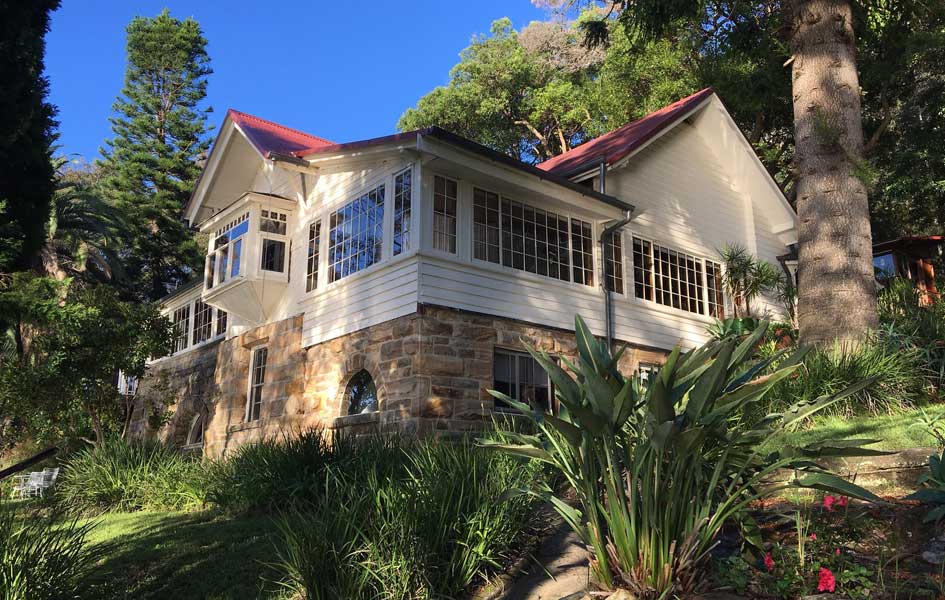
When the property last sold it consisted of four separate buildings: a gracious and character filled main residence, a dedicated artist's studio, a fully self contained guest or caretaker's cottage and a large waterfront boatshed and was set on 4701 square metres of land. The Real Estate description;
Set amongst the natural bushland, landscaped gardens and sandstone pathways, the main north east facing residence boasts magnificent water views and bathes in morning sunshine. A sandstone patio looks over the rambling grounds and Pittwater towards Palm Beach.
Built on solid sandstone block work, the two story interior exudes warmth with ornate rich timber work, wood panelling and polished Jarrah flooring, while an abundance of leadlight windows throughout, high ceilings and the original central fireplace add to the charm. The versatile configuration provides multiple living areas and ample accommodation for the extended family.
The gorgeous master bedroom flows into a conservatory with wide picture windows providing the perfect place to soak up the morning sun. The ensuite/bathroom comprises a spa, a separate spacious shower and a sauna.
A spacious solid timber kitchen which leads into a formal dining area, includes a breakfast bar, pantry, Ilve and Bosch appliances and a pot belly stove.
The waterfront facilities include a deep water jetty, a private rock pool with a sandy beach, a wide entertaining bbq area and a large boatshed with loft accommodation. A passenger inclinator make for easy access direct to the property and grounds.
Maritana (Meritanta) On Elvina Peninsula
.jpg?timestamp=1547010620191)
Section from Plan of Bay View and Pittwater district Image No.: c053460078, circa 1890 - 1905, courtesy State Library of NSW - note lower left hand side 'Meritana' - A Wood.
Arthur Branscome Wood was a teacher and instructor in music, who quite possibly knew Steffani (they were both part of the 'music scene' of then and both sent or accompanied the finest of Australian female singers to London. Mr. Wood acquired 40 acres of land at Towler’s Bay when a Conditional Purchase by Joseph Shaw lapsed. This was taken up by Arthur Wood, being granted to him on 10 July 1889.
The 30 acres of land he acquired at the head of Elvina Bay was William Oliver’s first grant of land at Pittwater, 'opposite Scotland Island', which he purchased on 9 March 1842 for £45. This was granted to him on 18 April 1842. This was where they lived when moving here in 1844 although they still worked the land at the Basin. William conveyed the Elvina Bay land to Thomas Oliver for £100 on 28 November 1881. Thomas, farmer and master mariner, conveyed part to Arthur Wood, Master of Petersham Public School, for £40 on 7 May 1884.
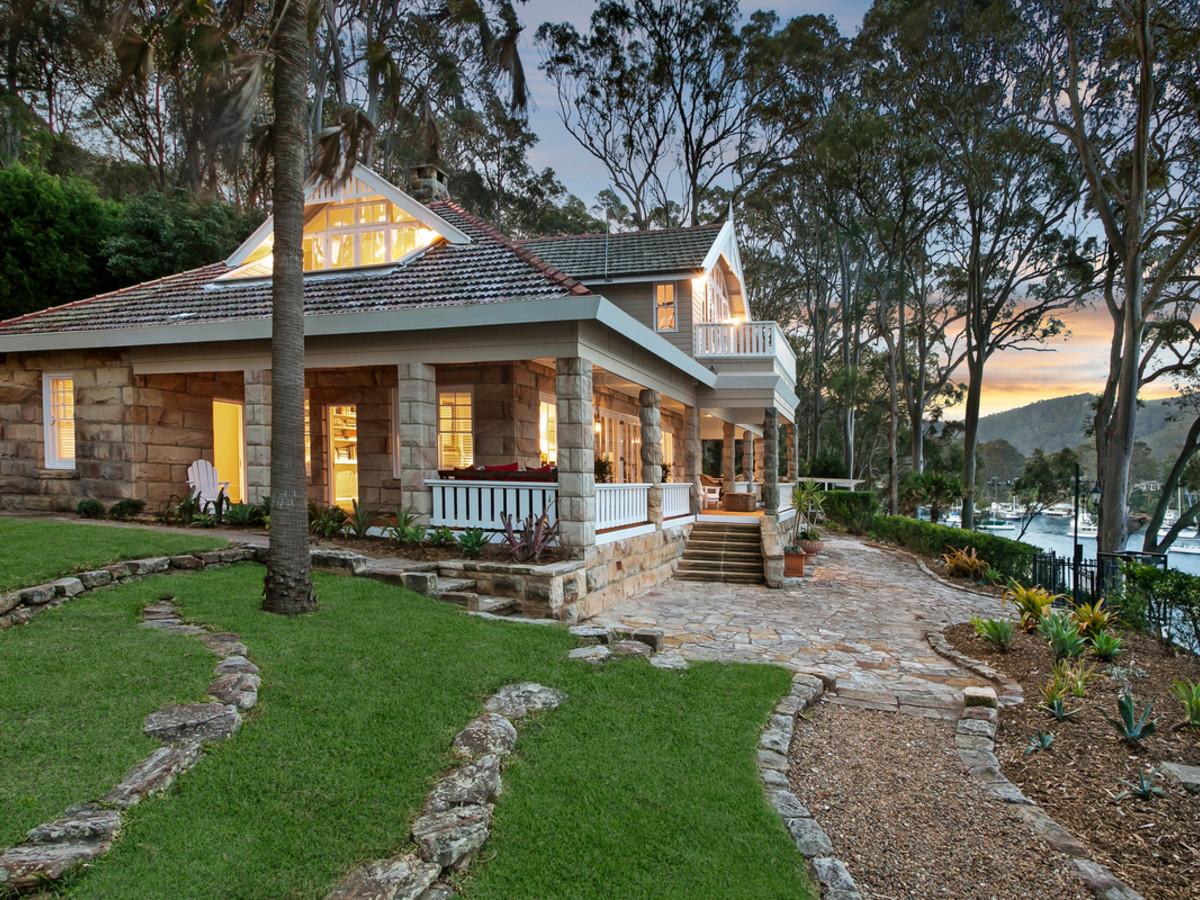
Maritana as the home is in 2019 - photo courtesy L J Hooker, Mona Vale - currently listed
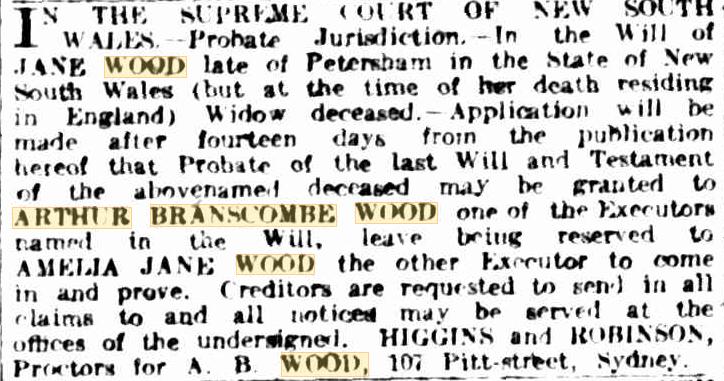
'Mr Walter Gibson, a son of Mr William Gibson, of Melbourne, arrived in Adelaide on Thursday, and is staying at the Grand Central Hotel. He spent the first three and a half years of the war in the Ruhleben Internment Camp at Berlin. He happened to be in Germany when the war broke out. Mr Gibson states that for the first six or seven weeks he was lodged in a convict prison, which was most unpleasant, but there was little to grumble at in the camp, where there were always from 4,000 to 5,000 persons. On January 1, last, he was exchanged, his health having failed.'
'Having returned to bed one day in November, 1914, from electric treatment in a sanatorium in Aberback, in the south of Germany, Mr Walter Gibson, a young Melbourne engineer, was confronted with German officers and revolvers. He was afterwards interned with some 4,500 prisoners in a camp at Ruhleben. After more than three years' confinement he regained his liberty, and is now looking to restoration of his health in Australasian lands. Mr Gibson is tho youngest son of Mr William Gibson, of Heyington Place, Toorak, and head of the firm of Foy and Gibson, Mr Gibson, senior, has been in London over since the outbreak of the war, Mr Walter Gibson, who was in Melbourne last week, has gone to New South Wales for the benefit of his health.
In an interview, before leaving for New Zealand, Mr Gibson stated that he was one of the last to see alive Captain Fryatt, of the steamship Brussels, who was shot by the Germans for endeavouring to ram a German submarine. As Captain Fryatt left the gates of a Berlin prison under guard to be shot Mr Gibson said 'Good night' to him, Mr Gibson expressed the opinion that Captain Fryatt knew what was going to be done to him; but he went away quite cheerful.
Mr Gibson had some liberty for a prisoner, as it was necessary for him to see a doctor at certain times, While under the escort of a German officer one day a German sailor who had been in the battle of Jutlund was met. 'Congratulations on our latest victory,' said the officer to the sailor. 'No congratulations from me,' replied the sailor. 'I was in the fight, and if we had not cleared out before the English heavies came up we would not have had a ship to tell the tale. Mr Gibson is an excellent German linguist, and this was a great advantage to him while he was a prisoner.
Speaking of the conditions of life in Germany, Mr Gibson said that when he left Berlin on January 2 the food was bad. While there was a lot of talk of internal trouble tho people were too much under military domination for anything serious to happen. Two meatless days were observed in each week, no sugar could be obtained, and delicacies were not thought of. They were sure of peace with Russia in January, and the finishing off of France and England in turn was contemplated. Nothing would shake the belief of the people of Germany that they would win the war. In the camp in which Mr Gibson was confined were different crews captured by the raider Moewe.
Every one in Germany was economising. In a shop in Berlin he was asked 70/ for a white shirt. For a small cake of soap, worth about 6d. in England, the people would give from 8/to 10/. He did not think that discontent in Germany would end the war, as tho people wore loyal to tho Emperor much as much so as we were to King George.
Describing prison life, Mr Gibson stated that when he was first taken to Berlin the prisoners were lined up in double file outside tho railway station with six gaolkeepers confronting them. Some of the prisoners - there were 350 in all - were smoking, and they wore told to take the cigarettes out of their 'gobs'. - The place of detention was the big convict prison, where they were kept in small isolated cells. When they awoke after their first night in this place the majority of them had swollen faces. The place was alive with vermin. A month afterwards they were sent to Ruhleben.' LIFE IN GERMANY. (1918, June 18). The Sydney Morning Herald(NSW : 1842 - 1954), p. 6. Retrieved from http://nla.gov.au/nla.news-article15780915
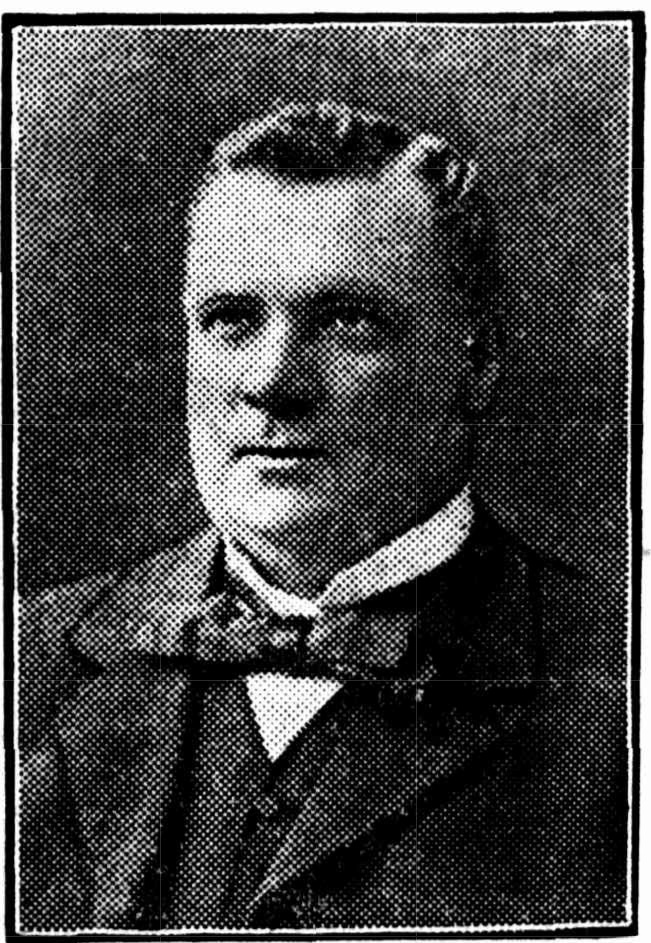
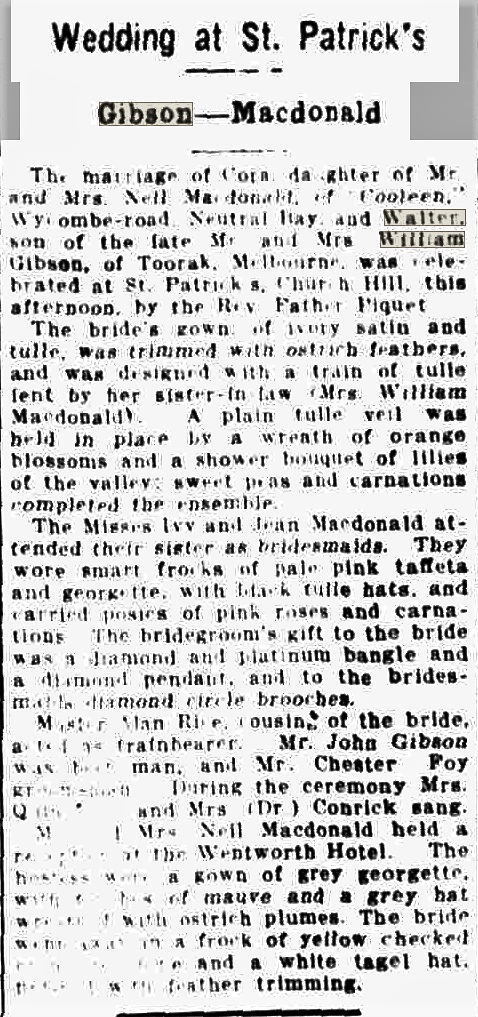
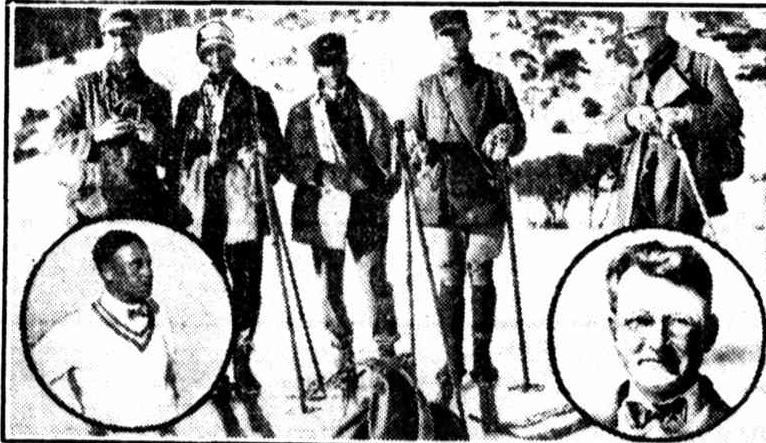
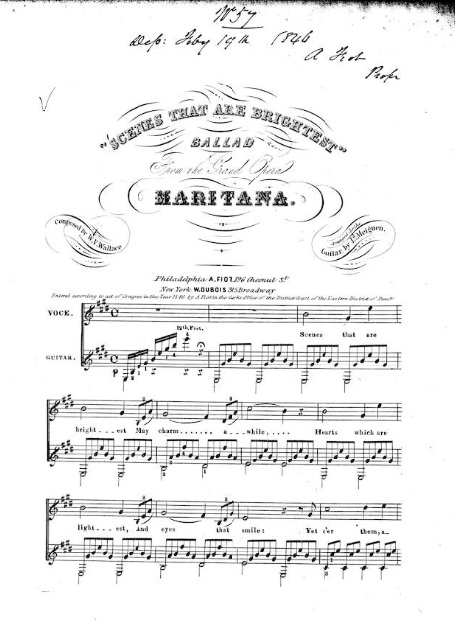
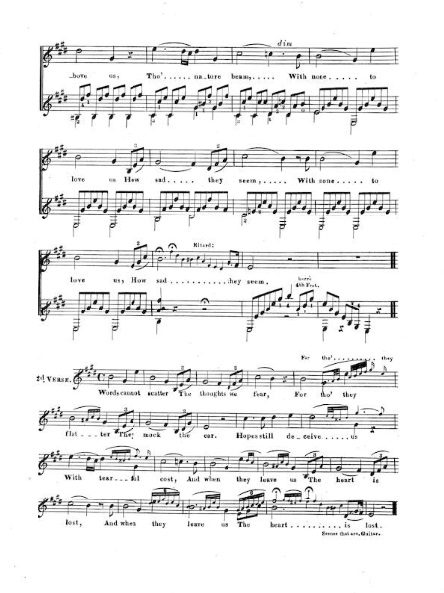
Act II, Song V, 2nd Verse:
"HEAR ME, GENTLE MARITANA."
The mariner in his barque
When o'er him dim clouds hover,
With rapture thro' tempest dark
Beholds one star above.
Sweet hope then his bosom swells,
His every care seems over,
Sweet hope then his bosom swells,
His every care seems over.
A smile as from heaven tells
Of home delight and love.
A smile as from heaven tells
Of home delight and love.
In Happy Moments
By William Wallace
Published 1860: First Verse
In happy moments day by day,
The sands of life may pass,
In swift but tranquil tide away
From time’s unering glass.
Yet hopes we used as bright to deem
Remembrance will recall,
Whose pure and whose unfading beam Is dear er then them all,
Whose pure and whose unfading beam Is dearer than them all.
Wallace, William Vincent, "In Happy Moments" (1860). Historic Sheet Music Collection. 729. Retrieved from https://digitalcommons.conncoll.edu/sheetmusic/729
There is also some belief that part of this opera was written in Sydney, underlining why it was so popular with many here, although other biographers state this is just legend:
SYDNEY STREETS
Some Historic Buildings
Where "Maritana" was composed
The following Is the concluding part of of Dr. A. Houlson’s paper on "King, Castlereagh, Hunter, and Pitt streets," which was read at the last meeting of the .Australian Historical Society, and the first portion of which appeared In last Fridays "Star":—
Brougham-place— now called Rowe-street, after Colonel Rowe, who was an architect, and an alderman of the City of Sydney— had a double row of old-fashioned houses, which were chiefly occupied by mechanics. One, however, was of some Interest, and, curiously enough, is still in existence— that in which Vincent Wallace composed part of the opera of "Maritana." The house was purchased by Mr. William Deane, and the materials were removed to Burwood, where It was re-erected in Its original form, and is called "Wal-de-Mar," from its former connection with Wallace and "Maritana."
On the southern corner of Brougham-place stood Hardie's bakehouse and shop. Between Brougham-place and King-street there were no than three public-houses. Possibly, the theatre, had something to do with this.
AN ILL-STARRED THEATRE.
Between Brougham-place and King-street was the Prince of Wales Theatre. This was erected in 1838 by Mr. Wyatt. It was burned down In October, 1860. I have a very vivid recollection of this fire, for It was the first big blaze that I had seen. The theatre was rebuilt in 1861, and named the Prince of Wales Opera House. In January, 1872, It was again destroyed by fire. This fire burned several of the old houses In Brougham-place, and some of the shops in King-street were destroyed by the falling walls of the theatre. The theatre was re-erected on the same site, and again burned down. It was again rebuilt, and is now known as the Theatre Royal.
The 'corner house' in King-street was occupied in 1833 as a public-house; the Fox and Hounds Hotel, by Henry Abrahams. Later on this became a registry office, kept by Mr. James Fawsey. There is not much of interest In the buildings, which occupied the northern side of King-street. They were mostly small shops, the only one of note being that of Thomas Trood, well known as the printer of many of our old books and pamphlets. The opposite side of King-street Is much more interesting, but that must be left for a subsequent. paper.
At the N.E. corner of King and Pitt streets' stood Toogood’s, Rose and Crown restaurant. Adjoining this, In Pitt-street, was Fisher's-terrace. Fisher was a boot maker, and carried on business in the last house of the row, that nearest King-street. Upstairs in that house were the offices of G.- R. Nichols and John Williams, and there Sir James Martin, the late Chief Justice, studied, law. Richard Driver also had offices in this building. Mr. Thurlow's offices were in the same terrace.
THE FIRST SIXPENNY RESTAURANT.
At the southern corner of Brougham-place and Pitt-street, stood an old-fashioned public house, not always reputable, but having; the credit of being the first restaurant to bring down the "shilling ordinary" to sixpence. A short distance along the street we come to Alexander's coach establishment and livery stables, adjoining which was the office of the "Australian Sportsman.'
The next house was the residence of Dr. Bland, who was exiled to Sydney for having taken part in a duel. Next to Wentworth, Australians are Indebted to him' for the political institution's she now enjoys. He died in 1868, and his mortal remains were the first ever conveyed from the Mortuary Station to the Necropolis, where a monument marks his grave.
A little farther on was the residence of John Hosking, who was the first Mayor of Sydney, in 1842. His house subsequently became a hotel, and was kept by Stephen Butts. The garden behind Black's-terrace, about which I have already spoken, was atached to this hotel. Adjoining was a long, low cottage, in which resided Dan Egan. To the north of this was Terry's Buildings, which were erected in the twenties. They stood on a block of land which Is now bounded on the northern side by Vickery's chambers, and on the south side by the offices of Messrs. Richardson and Wrench.
On December 1. 1827, the Australian Subscription Library, from which the Free Public Library in Bent-street has arisen, was opened in No. 1, the northernmost house in the terrace. It stood on the site where Messrs. Raine and Home's offices now are, the present number of which is 86 Pitt-street. The ground floor of the building was occupied by the committee for the management of the Sydney Dispensary, afterwards the Sydney Infirmary and Dispensary, now the Sydney Hospital.
LITERATURE AND MEDICINE.
The Library was on the first floor, and the upper storey was occupied by Peter Cooke, who acted in the dual capacity of librarian and dispenser, at a salary of £40 a year. These buildings appear to have been demolished In 1838, and a new row erected, as in that year Messrs. Chambers and Thurlow, solicitors, advertise that they have removed their offices to "Terry's New Buildings, in Pitt-street."
Lower down the street, on the present site of Vickery's Buildings, stood the old cottage, which has been so often called "Old Government House," but Mr. M'Guanne, In his paper on "Old Government House," after describing the exact position of that building, sums up the matter In these words:— "There is no word that It was ever situated elsewhere, and the quest is not worth pursuit."
Nearer Hunter-street was A. Donald son's office, and at the corner of Hunter-street the Union Bank, This building was commenced in 1839, but the old building was not completed until 1846. One other building and I have done. The City Bank, which was opened on Waters's Corner in February, 1864, was removed to the corner of Pitt and Moore streets in 1871. It was one of the buildings which were destroyed in the 1890 fire. "When we think of the places which I have described to-night, and then look at the marvellous change which has come over the block, we can realise that sometimes a great fire may be a blessing in disguise. SYDNEY STREETS (1908, November 5). The Australian Star (Sydney, NSW : 1887 - 1909), p. 4. Retrieved from http://nla.gov.au/nla.news-article229105553
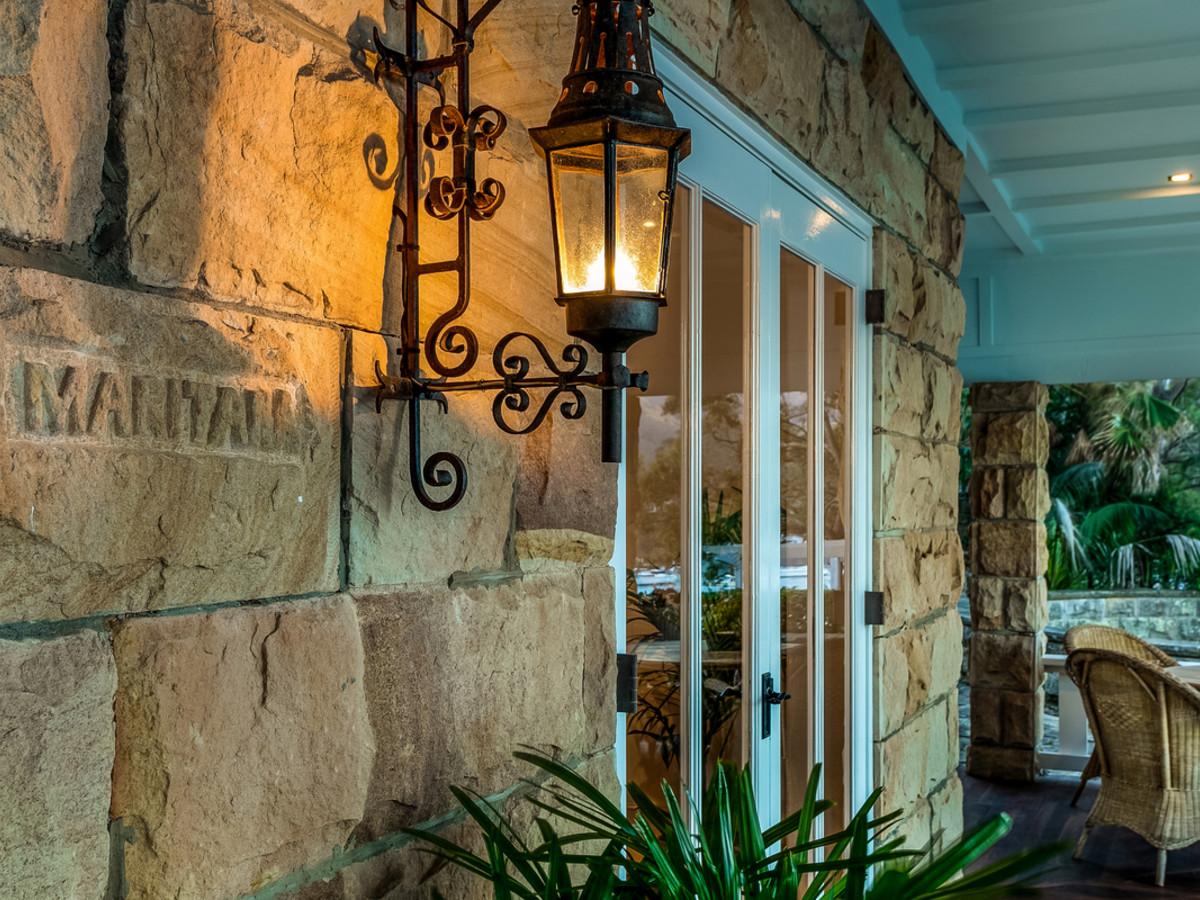
Elvina Bay
Mrs. Younghusband visit to Australia is her first out of New Zealand, but her own country she knows well, and she has sketched wherever she has been. She showed me three pencil and chalk sketches for pictures she made during last week-end at Elvina Bay, where she was staying with Miss Alison McDougall, the novelist. COLONY OF NEW ZEALAND WOMEN PAINTERS IN SYDNEY. (1937, December 2). The Sydney Morning Herald (NSW : 1842 - 1954), p. 26. Retrieved from http://nla.gov.au/nla.news-article17436499
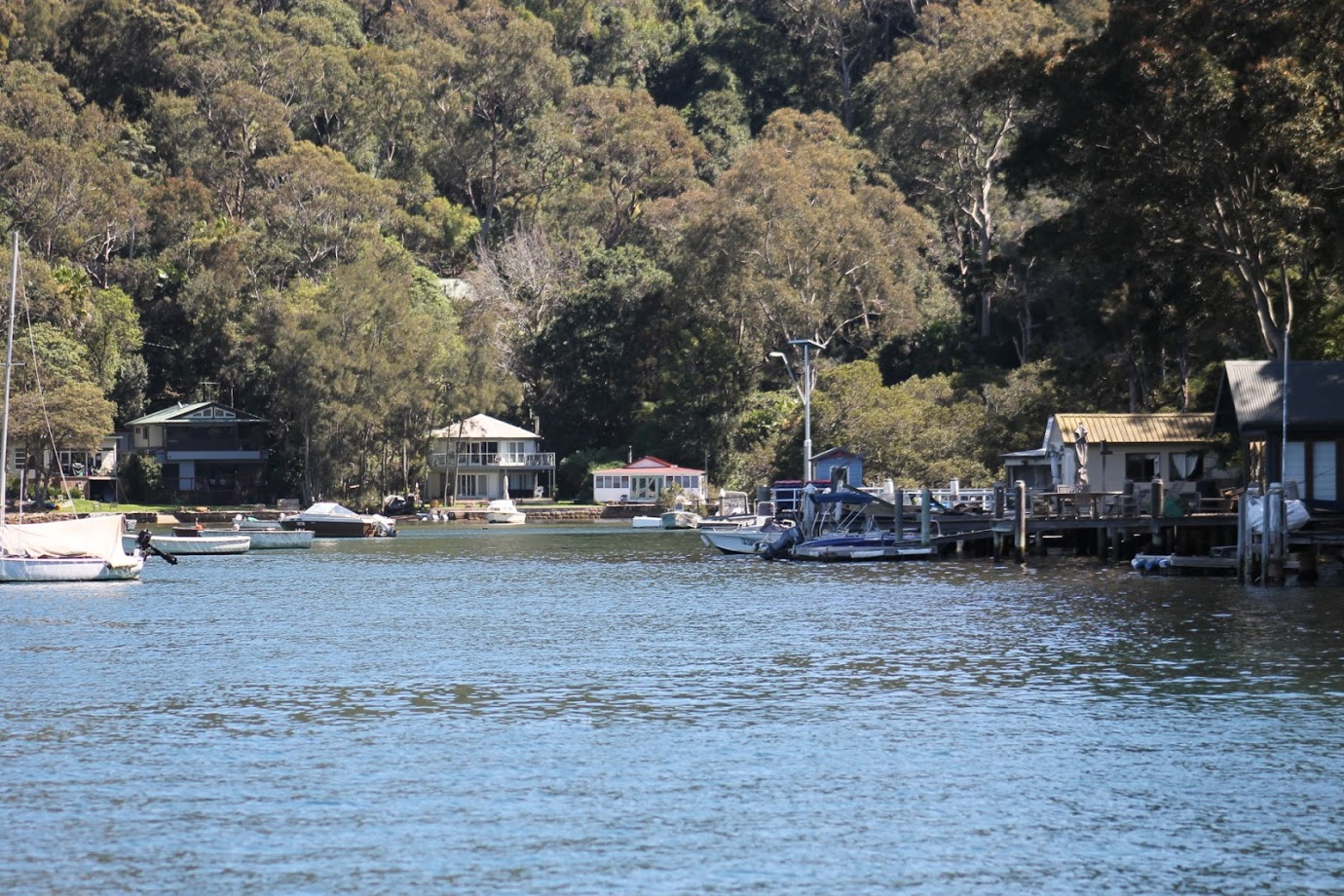
Elvina Bay today.
Learn About The History Of The Clock At The Hyde Park Barracks
Sydney Living Museums - Published on 28 Jan 2014
TIME STANDS STILL AT HYDE PARK BARRACKS
BY DR FIONA STARR SUNDAY 23 DECEMBER 2018 - Sydney Living Museums
Time is standing still for a while at Hyde Park Barracks, as we’ve allowed the turret clock to wind down for a much needed rest.
Convict clockmaker James Oatley, who built the clock in 1819, and Benjamin Lewis Vulliamy who rebuilt the mechanism in 1837, probably wouldn’t have been surprised to hear that after 200 years of ticking away, the clock needs a complete overhaul.
This highly specialised and painstaking work will take several months to complete, but we will aim to have Australia’s oldest public clock keeping time again as soon as possible in 2019.
Stay tuned for more details on the conservation work and its progress.
|| Mr. James Oatley, Overseer of Town Clock, to 31st March. | £4 | 14 | 1 |
D'ARCY WENTWORTH, Treasurer. GOVERNMENT AND GENERAL ORDERS. (1819, June 12). The Sydney Gazette and New South Wales Advertiser (NSW : 1803 - 1842), p. 2. Retrieved from http://nla.gov.au/nla.news-article2178758
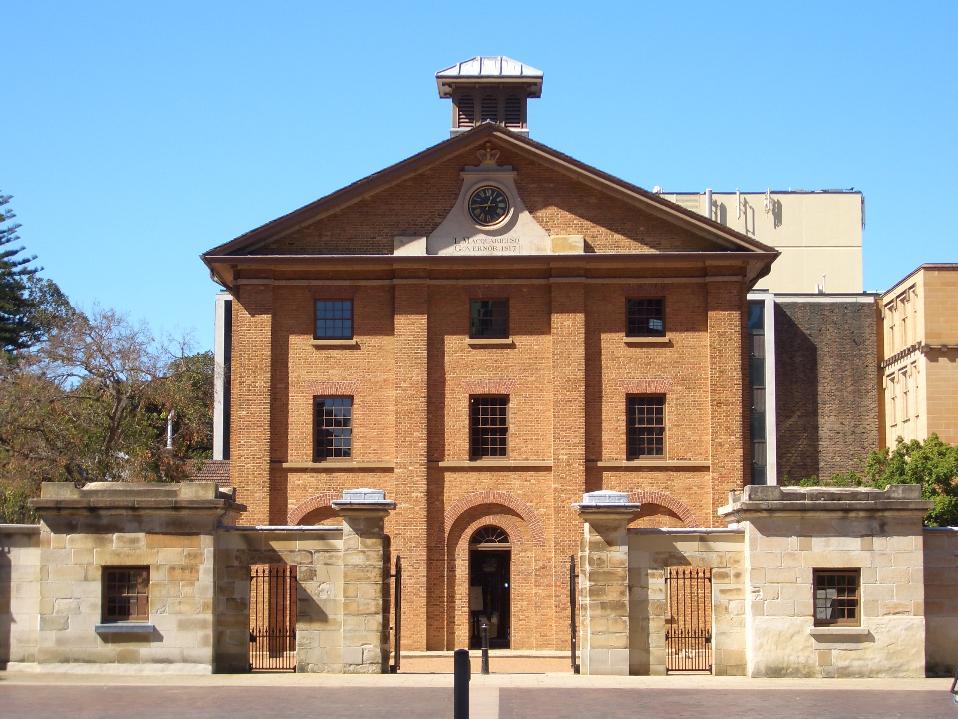
Photo: Hyde Park Barracks, Macquarie Street, Sydney, Australia. By and courtesy J Bar
References And Extras
 | LAND REGULATIONS 1935 Changes Land Grants Cease.pdf Size : 206.357 Kb Type : pdf |
 | Pittwater Bayview Church Point Land Grants 1816 On Government Gazzette Records.pdf Size : 137.105 Kb Type : pdf |
1. TROVE - National Library of Australia
2. Profiles of the Pioneers in Manly, Warringah and Pittwater - Shelagh Champion OAM and George Champion OAM, Revised version from 2013 - Also see extracts from this resource under 'William Oliver' below.
3. The Early Days of Bayview, Newport, Church Point and McCarr’s Creek, Pittwater By J. S. N. WHEELER. Journal and proceedings / Royal Australian Historical Society, Vol. 26 Part. 4 (1940) Pages 88, 7905 words. Call Number N 994.006 ROY Created/ Published Sydney : The Society, 1918-1964. Appears In Journal and proceedings, v.26, p.318 (ISSN: 1325-9261) Published 1940-08-01. Available Online: HERE
4. The Story of Pittwater by Maybanke Anderson, The Royal Australian Historical Society. JOURNAL AND PROCEEDINGS. Vol. VI. 1920. Part IV. Retrieved from Royal Australian Historical Society. (1918). Journal and proceedings Retrieved from http://nla.gov.au/nla.obj-593173333
Pittwater Local Environmental Plan 1993 (Amendment No 81)—Heritage Conservation: Schedule 9 Heritage inventory
Lower Western Foreshores and Scotland Island Locality - redone in 2009
Location Description Database No
Bona Crescent, No 37, Lot 3, DP 520115, Towlers Bay- Youth Hostel 2270043
Elvina Bay, Lot 26, DP 13449- Frederick Oliver’s Grave 2270051
Lovett Bay, north side, On parts of Lots 4 and 5, DP 590990, Nos 4 and 5 Portions, Lovett Bay - Road remnants 2270050
Lovett Bay, north side, site of former causeway, adjoining Lots 2 and 3, DP 584315, Lots 4 and 5, DP 590990 and Lot 6, DP 545717,
Nos 2–6 Portions, Lovett Bay - Stone Retaining Wall 2270049
Lovett Bay, No 8 Portion, Lot 2, DP 228812,
Lovett Bay - House “Tarrangaua” 2270044
Sturdee Lane, Elvina Bay - Nos 29, 31 and 33A Sturdee Lane,
Elvina Bay - Group of 3 cottages 2270441
Sturdee Lane, No 1 - Lot 2, DP 614614, Elvina Bay - House “Trincomalee” 2270008
Sturdee Lane, No 29, Lot 28, DP 8013, Elvina Bay - Cottage 2270442
Sturdee Lane, No 31, Lot 292, DP 1042095, Elvina Bay- Cottage 2270443
Sturdee Lane, No 33A, Lot C, DP 10157, Elvina Bay - Cottage 2270444
Sturdee Lane, No 38, Lot 6, DP 552628, Lovett Bay- House “Myuna” 2270082
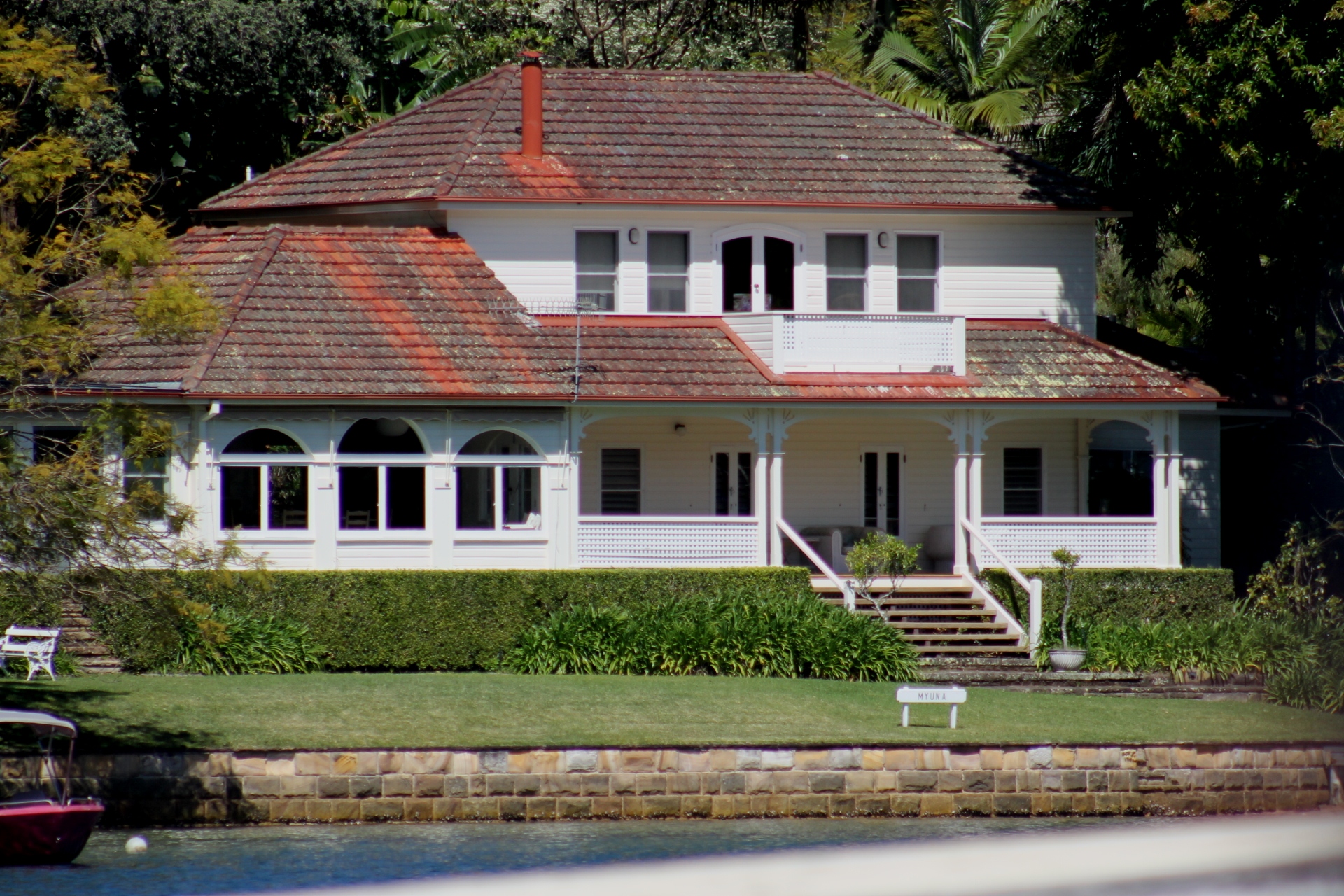
'Myuna'
RETREAT FOR RAFFERTYS - HOUSE FROM AN OLD ROATSHED
By ANNE BRADLEY, staff reporter
Chips Rafferty and his tiny wife, Quentin, retreat from the rush and hustle of the city to their house near Church Point as often as they can, and according to Chips, "It's the only thing that keeps us sane in the madcap film business."
THE house, on the waterfront of Pittwater's Lovett Bay, 20 miles north of Sydney, is accessible only by boat. This gives the Raffertys, whenever they are down there, the feeling that they are completely cut off from the rest of the world.
They listen to the calls of the birds, the jumping of fish, and often see wallabies hop-ping through their garden at dusk or dawn.
The Rafferty house was a humble boat-shed when they bought it 11 years ago. The boatshed is now a spacious living-room with double doors opening on to a verandah. In fine weather the sun floods through the room all day, and on chilly nights a log fire blazes on the big open hearth.
The Raffertys love to entertain their friends at weekend house-parties, so they have devoted all the upstairs space to bedrooms containing 11 beds, each room with big windows commanding panoramic views of Lovett Bay and Pittwater.
Chips has done most of the remodelling of the house himself. He has built rock walls and stone steps, a long jetty, and a workshop. He has begun work on a rock-enclosed swimming-pool near the jetty, and plans to dump sand on the rocky shore to make a private beach.
At Lovett Bay, Chips and Quentin wear their oldest clothes and spend the days lazing in the sun, fishing, or swimming. At night they often play dominoes, scrabble, or chess. And they always bet on the results.
"We challenge each other to whatever game we play," said Quentin, "or bet on who catches the first and biggest fish. We keep a point score for each competition and play each other for a shilling."
With no electricity supply, they have a generator driven by a kerosene motor to light the house. For cooking they use a small portable stove.
In this out-of-this-world setting, Chips is no longer the film star or producer. Most of his friends call him John, a reminder that he was born John Goffage, in Broken Hill, N.S.W., in 1909. Chips, standing 6ft. 6in. in his socks, is all that people overseas imagine an Australian to be. ...
With practically no experience beyond an interest in amateur theatricals, Chips began his film career at the age of 30. He was soon chosen for one of the leading roles in "40,000 Horsemen."
Five years ago he formed Southern International Films, the company which has successfully made "King of the Coral Sea," "Walk Into Paradise," and, very recently, "The Stowaway," co-starring Martine Carol.
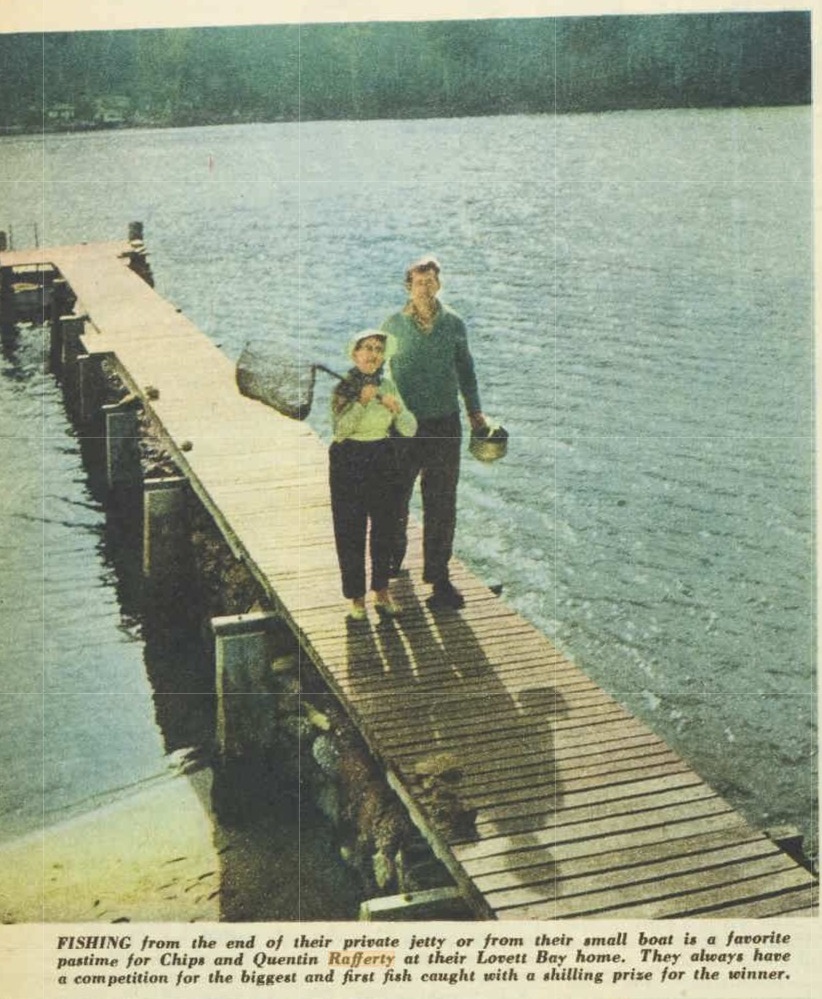
ABOVE: Chips collecting oysters from the rocks right outside his front door. He uses them for one of his favorite dishes — or as bait for his fishing excursions. THE RAFFERTYS and two of their guests admire the view from the verandah outside the living-room of their Lovett Bay home. The pictures are by staff photographer Ron Berg.
RETREAT FOR RAFFERTYS HOUSE FROM AN OLD BOATSHED (1958, May 21). The Australian Women's Weekly (1933 - 1982), p. 29. Retrieved from http://nla.gov.au/nla.news-article47508024 - More photos and text are available in the article at link
PITTWATER.
100 ACRES MAGNIFICENT LAND, on the southern shore, opposite the Pittwater Hotel
TO BE SOLD IN ONE BLOCK.
This land immediately adjoins the rapidly improving orchard property belonging to Mr. M'Keown. The new road has been completed right along this property, giving direct communication from Manly.
The soil is of the richest possible description, and the land gently rises from the water, commanding most Beautiful views of the charming Hawkesbury scenery.
Plans in course of preparation.
HARDIE and GORMAN have received instructions to sell by public auction, at their Rooms, Pitt-street, at 11.50 o'clock, WEDNESDAY, 20th September, 100 acres of land at Pittwater, the choicest spot In the whole district, and which was selected by the present owner as a site for a residence. Advertising (1882, September 7). The Sydney Morning Herald (NSW : 1842 - 1954), p. 15. Retrieved from http://nla.gov.au/nla.news-article28376790
Visit: Roads IN Pittwater: The Bayview Road
Mills and Pile - RICH ORCHARD BLOCKS. — Fronting Pittwater, suitable for gentlernen's country residences, .£25 per acre; splendid shelter for early fruit. Advertising (1890, June 28). Freeman's Journal (Sydney, NSW : 1850 - 1932), p. 11. Retrieved from http://nla.gov.au/nla.news-article111121455
FIVE POUNDS EACH - Water-frontage Allotments, Pittwater, free deeds, Plans Houghton Bros., 295 Pitt-st. Advertising (1890, July 8). The Sydney Morning Herald (NSW : 1842 - 1954), p. 9. Retrieved from http://nla.gov.au/nla.news-article13785510
UNIVERSITY OF SYDNEY.
The following are the results of the Civil Service examination held on Monday, April 21st, and of the Law Matriculation examination held on the same and following days :
CIVIL SERVICE EXAMINATION.
A.E. Chave, Public school, Pittwater; UNIVERSITY OF SYDNEY. (1890, May 6). The Sydney Morning Herald (NSW : 1842 - 1954), p. 8. Retrieved from http://nla.gov.au/nla.news-article13787747
Chave, Alfred Edward, Public school, Pittwater. English history; B; geography; A, English, B; Arithmetic, B ; Geometry, B. SYDNEY UNIVERSITY. (1890, November 3). The Sydney Morning Herald (NSW : 1842 - 1954), p. 2. Retrieved from http://nla.gov.au/nla.news-article13799217
Mr. William Champion to be a member of the Public School Board for the sub-district of Pittwater. GOVERNMENT GAZETTE. (1890, December 13). The Sydney Morning Herald (NSW : 1842 - 1954), p. 5. Retrieved from http://nla.gov.au/nla.news-article13775812
CHAVE. — August 3rd, at his late residence, Pittwater, Frederick Chave, aged 66 years. Burial To-day, Thursday, 3 p.m., at Church Point. Family Notices (1898, August 4). The Daily Telegraph (Sydney, NSW : 1883 - 1930), p. 1. Retrieved from http://nla.gov.au/nla.news-article239558692
MORRIS.— April 19, at Pittwater, Broken Bay, John Morris, aged 47, a native of Dover, and an old respected resident of the above place. Family Notices (1878, May 4). The Sydney Mail and New South Wales Advertiser (NSW : 1871 - 1912), p. 589. Retrieved from http://nla.gov.au/nla.news-article162690683
HOLIDAY RESORT_Bay View House, Newport, Pittwater extensive grounds, boating, fishing, bathing, comfort and attention; Intending visitors should apply early W. BULLARD, late D. Scott. Advertising (1892, December 19). The Sydney Morning Herald (NSW : 1842 - 1954), p. 2. Retrieved from http://nla.gov.au/nla.news-article13890303
AT Ventnor. Bay View, Pittwater.— Board, Residence, fising, boat'g, bathing etc. terms mod. Mrs. Ridgway. Advertising (1904, November 26). The Daily Telegraph (Sydney, NSW : 1883 - 1930), p. 5. Retrieved from http://nla.gov.au/nla.news-article237855259
LAMBERT. —March 9, at St. Vincent' s Hospital, William Lambert, late of Ripley, Bayview, Pittwater, in his 75th year. Late of Tramway Department, and for many years a member of the Sydney Philharmonic Soc. Interred at Rookwood March 10. Family Notices (1917, March 12). The Sydney Morning Herald (NSW : 1842 - 1954), p. 6. Retrieved from http://nla.gov.au/nla.news-article15723833
Next Saturday Batt, Rodd, and Purves, Limited, hold an important sale of land in the Baroona estate, Church Point, Bayview, Pittwater. This land was formerly owned by Mrs. A. T. Black, and the property was in possession of the family for over 30 years. Splendid scenic views are an attraction, easy terms are announced, and a free service of motor cars will run from the Narrabeen tram terminus to the property on the day of sale. REAL ESTATE. (1918, January 19). The Sydney Morning Herald (NSW : 1842 - 1954), p. 9. Retrieved from http://nla.gov.au/nla.news-article15767843
Bloomfields', Ltd, will hold an auction In the Real Estate Sale Rooms, on Thursday next, when the Hat will Include a substantial two-storied residence, Sharrow, 29 Mona-road, Darling Point, also the property Vailele, at Pittwater, formerly the residence of the late John Williams, situate opposite Church Point, with residence, Jetty, baths, boatshed, and 11 ½ acres of land, Including 600ft frontage to high-water mark. REAL ESTATE. (1927, March 5). The Sydney Morning Herald (NSW : 1842 - 1954), p. 12. Retrieved from http://nla.gov.au/nla.news-article16359163
Colonial Statistics.
BROKEN BAY AND BRISBANE WATER.
THERE is no part the colony within a hundred miles of Sydney, which has either been so long settled, or so little frequented by travellers from our colonial capital, as the country intervening between Port Jackson and Broken Bay. It is a broken, sterile, and uninteresting country for the most part ; but there are particular spots in it of a much superior character, and the scenery in certain localities, especially along the coast, on the Narrabeen Lagoon and the inlet called Pitt Water is exceedingly fine. We happened to make a pedestrian tour from Manly Cove, on the north side of the harbour near the Heads, to Broken Bay a few weeks ago; and, although we cannot say much either for the country or the road, there is nevertheless sufficient to be gleaned by a careful observer ever in such a tour as to prevent us from saying, " it is all barren." In fact, as the finest flowers and shrubbery are generally found on the most barren land, it is not always the best land that will furnish the best subject for a good literary article. An extensive bottom, as the farmers would call it, of the richest alluvial soil may be exhibiting to the delighted eye of the settler a splendid crop of maize; or a series of "flats," with not a tree upon them in their natural state, may present the finest wheat land in the world ; but we confess there is very little bottom for a good article in either case, and even a good writer soon becomes flat enough unless he takes a kangaroo leap to some subject of a more interesting or spirit-stirring character. To be threading one's way, how-ever, through a tangled wood while the loud roar of the vast Pacific's big ocean waves breaking ever and anon on the ironbound coast of this vast terra incognita, is sounding in one's ear like distant thunder, or like the roar of artillery — to mount one of those barren hills that stretch along the coast to catch a glimpse of the wild, but romantic scenery around from its rocky summit — to be walking by moonlight along one of the sandy beaches that line the shores of Pitt Water, the exact counterpart of one of our finest Scotch Highland lochs—to be arriving late in the even-ing at some small settler's farm, who has just been six months on his land, to be regaled with tea without sugar out of a common water-jug, and a piece of a damper—to sleep, or rather to attempt to sleep with a host of active little combatants as numerous and as formidable as a Roman legion— and finally to lose one's way for five or six hours in the bush, and to arrive at the North Shore with one's clothes so torn with the prickly shrubbery of that locality as to render it necessary to bivouac for a time till the sun has gone down on the town of Sydney, and darkness covers the land—these are the subjects which one can either write upon, or read about without getting tired or complaining of flatness.
There is a respectable family of the humbler walks of life settled at Manly Cove whose establishment exhibits in a very strong light, the immense benefits which this colony will eventually derive from the introduction of reputable and industrious families of a similar class in society into its extensive territory, under the admirable system introduced by the Whig ministry, in appropriating for that most important purpose the proceeds of all Crown land sold in the colony. The family we allude to is of the name of Parker. It consists of a husband and wife, rather past the middle age, and two stout young men, their sons. The father is a gardener, who emigrated with his family from England to the Cape of Good Hope a good many years ago, but preferring this colony, from all he had heard and read of it both in England and at the Cape, came on to New South Wales, leaving his third son in business at Cape Town. One of Mr. Parker's other two sons is a stonemason, and the other a carpenter and cabinetmaker, each of whom appears to be as much an adept in his own business as his father, who is a remarkably intelligent, shrewd, and well-principled old man, evidently is in his. Mr. Parker has purchased twenty acres of land and rocks on the eastern side of the cove, part of which he has laid out very tastefully, his two sons having been occupied in the mean time in erecting a neat stone walled cottage with suitable outhouses, part of the walls of both being the solid rock, which has been hewn away in certain places, and allowed to remain in others to suit the taste or convenience of the proprietor. In short the combination of mechanical force which Mr. P.'s virtuous and respectable family have been able to bring to bear on their little property is one of the happiest we have witnessed in the colony, and the result, we are confident, within a very few years hence will be the transformation of their twenty acres of rocks and land, hitherto deemed good for nothing, into one of the best cultivated, most romantic, and most valuable properties of its size within a day's journey of the capital. Mr. P.'s object has been to establish himself as a gardener and nurseryman, to supply the Sydney market with vegetables, fruit, fruit-trees, and shrubs. As soon as a few small steam boats, such as ply on the river Mersey between Liverpool and the numerous little thriving villages along the Cheshire shore, are procured and set to work in our harbour of Port Jackson to ply between Sydney and the more important localities on the opposite shore, every acre of available land within a reasonable distance of the North Shore, will be increased in value several hundred per. cent. We are happy to find that an experiment of this kind is about to be tried by the establishment of a Steam Ferry Boat between Dawes' Battery and Billy Blue's Point. The establishment of such a boat will not only lead to the formation of several thriving villages on the North Shore, but will set an example which some people will soon follow by placing boats of a similar kind on other short courses within the harbour.
Within a few miles of Manly Cove, from which there is a tolerable road for a considerable distance towards Broken Bay, there is more available land than we anticipated finding, and there is already something doing also in the way of improvement ; the important operations of felling, fencing, and cultivating, being pursued by certain proprietors in that neighbourhood with some vigour. A very large portion of the land, however, is irreclaimably and hopelessly sterile. On the banks of the Narrabeen Lagoon, a pretty extensive and romantic sheet of water situated about nine miles from Manly Cove, and communicating with the ocean in high floods there is a small extent of superior land for cultivation with a considerable tract of very fair pasture land belonging to the family of the late Mr. Jenkins, of Sydney ; and about three miles farther on, towards the head of Pitt Water, there is a very fair cultivation farm leased to a small settler of the name of Foley. But the patches of arable land all along from Port Jackson to Broken Bay, are generally of such limited extent and the pasture land of such inferior quality to the forest land of the interior, that there must always be a very limited and widely scattered population in that part of the territory.
The South Head of Broken Bay is called by its native name, Barranjoey. It is a bold, rocky headland, situated at the extremity of a long narrow strip of land separating the main ocean from Pitt Water, and has evidently been an island at some former period, with a spit of sand running out from it towards the south. This sand-spit would be gradually extended by every gale till the island was at length married indissolubly to the main, the ceremony of joining hands having been performed by Father Neptune himself. There is a small patch of alluvial land of the first-rate quality near Barranjoey Head, on which a very industrious small settler of the name of Sullivan has set down, within the last few months, on a lease from Mr. Wentworth, the proprietor. The extent of land he has managed to clear and put into crop in so short a time, is as creditable to the settler as the splendid crop of maize and tobacco it bears is to the land. The neighbour-hood of Pitt Water and Brisbane Water is considered particularly favourable for the growth of onions, and the raising of that useful article of horticultural produce for the Sydney market, is the main dependence of the small settlers in these districts. The past season has been considered rather unfavourable, however, for this crop, the late rains, which have come in such good time for the maize, having been too late for the onions ; but we found a very tolerable crop notwithistanding on various farms in both districts.
The scenery near Barranjoey is romantic and interesting in a very high degree, the land and water being finely disposed for a picture, and the forest trees on the low ground along Pitt Water being remarkably umbrageous and beautiful, while the view from the Head itself — including the vast Pacific ; Pitt Water separated from it by the narrow strip of land above-mentioned, and running up for the remaining part of its extent between two ranges of considerable elevation, and losing itself at length in the distance ; Broken Bay, with the lofty, precipitous rocky island, called Mount Ellis, guarding the entrance of the Hawkesbury, and standing off, like a sentinel on duty, from its opposite shore, while the lower reaches of that noble river are seen stretching far inland between the lofty and barren ranges that line the whole extent of its course from the Blue Mountains to the ocean — all this is uncommonly fine. Second or third-rate writers of literary articles of this kind regularly wish for the pencil of a Claude, or a Salvator Rosa, when they find themselves in such situations as we found our-selves in, to our no small gratification and delight, when we stood perched for a time on Barranjoey Head ; but as such idle wishes would not save any of our readers who might be desirous of experiencing the same pleasurable emotions, the trouble and fatigue of a long pedestrian tour through the bush, we shall not put ourselves to the trouble of uttering them. If any of our readers should be desirous of visiting the district of Brisbane Water, which we can assure them is well worth visiting, we would by all means advise them to postpone their visit till some of our enterprising colonial speculators shall have put a steam-boat on the course between Sydney and Brisbane Water.
For our own part we crossed Broken Bay in Sullivan, the small settler's small boat ; and as there is a large extent of shallow water on the north side of the Bay, on which the sea breaks violently (whence its appropriate name, Broken Bay) whenever there is the least wind from certain quarters, we confess that sailing in such a vessel is somewhat dangerous. Rollers rise instantaneously, even in the mildest weather, in the Bay, and when one of these breaks on a small boat she is almost sure to be swamped, and all on board drowned.
Brisbane Water is an inlet from Broken Bay, opening into the land at its north-eastern extremity. There is a reef of rocks extending for a considerable distance across the entrance from south to north, but the channel is sufficiently wide for those who are at all acquainted with the locality. The inlet, for a considerable distance up, is exactly like the embouchure of a large river, and as there are several other inlets of a similar kind opening into the main one, as Broad Water, Kingcumber or Cockle Creek, the district is a complete alternation of land and water, affording excellent means of communication for the settlers and most delightful scenery. Both along the banks of the main inlet and the other two just mentioned, there are settlers' houses for the most part picturesquely situated with a greater or smaller ex- tent of land in cultivation around them according to circumstances. There is much alluvial land of the first quality in the district, and the crop of maize, wherever we had an opportunity of ob-serving it, was quite magnificent. Maize, onions, shingles, and sawed timber are the principle productions and exports of the district, and from the large quantity of these articles that have been exported to Sydney during the last few years, the settlers generally, we were happy to find, are in a thriving condition. Indeed, the district of Brisbane Water has sufficient resources for the sustentation and employment of a large population, and its vicinity to the capital will certainly attract numerous and reputable families and individuals as permanent residents in it whenever it is thrown open to the public by the establish-ment of a steam communication with the capital. From the want of such a communication at present Brisbane Water, although within four or five hours sail of Sydney, is virtually as distant from it as Port Macquarie, and till such a mode of communication with it is established, its re-sources will never be developed nor its rapid advancement both in population and in importance generally secured. It is a matter of astonishment, therefore, to us, that while there is such a rage exhibited in the colony, on the part of certain of our colonial speculators, for the extension of steam communication with Hunter's River, the capabilities of a district, so much less extensive it is true, but so much nearer hand, should hitherto have been so totally neglected.
There are at present three steam boats running between Sydney and Hunter's river, and a fourth is expected to commence plying immediately. Now, whether this is over-doing the thing or not we have no means of deter-mining ; but as the smallest and tardiest of these vessels will in all likelihood stand but an indifferent chance of success in competing with the others, we would by all means advise the proprietor to try the experiment of changing her course by causing her to ply alternately between Sydney and Brisbane Water, and Sydney and Illawarra. Neither of these districts is sup- posed to be at present sufficiently advanced to afford constant employment to a steam vessel of the size of the Maitland, but knowing both of them, as we happen to do, we are confident they would afford such employment to any vessel that would make a voyage from the capital to each alternately. The machinery of the Maitland is scarcely powerful enough for her size, and although a good sea boat she is unable to make much progress against a head sea. She will therefore run the risk of being driven off the course when a third powerful vessel, to ply twice a week, is placed on the Hunter's river line. But her slower rate of sailing than that of the other Hunters' river vessels would be no objection either at Illawarra or at Brisbane Water ; and although the proprietor might not realise his expectations by placing her on that course at the very first, we are confident that the rapid advancement of both of these districts, beyond all former precedent would not only be the certain result, but would amply and speedily repay him for all his original outlay. Verbum sat sapienti. The Rev. Mr. Rodgers of the Church of England, and the Rev. Malcolm Colquhoun, of the Church of Scotland, have both recently gone to settle as ministers of the gospel at Brisbane Water. We most heartily wish them both all success. Colonial Statistics. (1838, February 28). The Colonist (Sydney, NSW : 1835 - 1840), p. 2. Retrieved from http://nla.gov.au/nla.news-article31720524
Thomas William Willans
Mr. T. W. Willans was born in Leeds, Yorkshire in 1854, the second son of Obadiah, textile mill owner in Dublin, and Clerk of Petty Sessions of New South Wales, and Annabella (nee Geoghegan). He had five sisters and two brothers. The family emigrated in 1861, when he was 7 years old, arriving per the 'Akbar' on April 19th, 1861. He trained as a surveyor and engineer.
WILLANS — JOHNSON. — December 2, at All Saints', Woollahra, by the Rev. H. Williams, assisted by the Rev. George North Ash, Thomas William, second son of O. Willans, Queanbeyan, to Emily Isabel, eldest daughter of Whittingdale Johnson. Family Notices (1885, December 19). The Sydney Mail and New South Wales Advertiser (NSW : 1871 - 1912), p. 1320. Retrieved from http://nla.gov.au/nla.news-article162823041
DISSOLUTION OF PARTNERSHIP.
NOTICE is hereby given that the partnership hitherto subsisting between us, the undersigned Thomas William Willans and John Haydon Cardew, carrying on business as surveyors and consulting engineers, under the style or firm of "Willans & Cardew," at 163, King-street, Sydney, has this day been dissolved by mutual consent. All debts owing to or by the firm will be received and paid by Mr. W. S. Buchanan, of 17, O'Connell-street, Sydney.—As witness our hands, this 1st day of June, 1886.
T. W. WILLANS. J. H. CARDEW. Witness,—E. Herbert Crossman, Solr., 177, Pitt-street, Sydney. DISSOLUTION OF PARTNERSHIP. (1886, June 4). New South Wales Government Gazette (Sydney, NSW : 1832 - 1900), p. 3887. Retrieved from http://nla.gov.au/nla.news-article221685633
A little about his father and father-in- law:
It is with regret that we have to announce the death of Mr. O. Willans, which occurred on Monday evening. The deceased had been ailing for many years, and had not been able to leave his home for some time. He was about 80 years of age, and had been a resident of the district for a great many years. At one time he filled the office of C.P.S., and afterwards acted as council clerk, prior to the appointment of Mr. Hincksman. The deceased gentleman, who recently celebrated his golden wedding, was highly respected, and leaves a large number of relatives and friends to mourn their loss. The funeral will take place on Wednesday afternoon, the remains being taken to Christ Church at 3 o'clock. At the Police Court on Tuesday, the Bench of Magistrates referred with regret to the death of Mr. Obadiah Willans, who had for 31 years served on the Queanbeyan bench, and in his official capacity as C.P.S. (Deceased was father of Mr. O. A. Willans, Crown lands agent, Goulburn.) QUEANBEYAN. (1896, January 16). Goulburn Evening Penny Post (NSW : 1881 - 1940), p. 4. Retrieved from http://nla.gov.au/nla.news-article98567400
Mr. Whittingdale Johnson.
The Register furnishes with its Friday's issue a portrait of Mr. Whittingdale Johnson, and supplies the following biographical notes :Mr. Whittingdale Johnson was born in 1830, his father having been an officer in the Royal Artillery, and subsequently Colonial Surgeon at Auckland, New Zealand. Mr. Johnson arrived in New South Wales in 1848, and was first employed in the public service in the Survey Department. In 1851 he went to the Turon goldfield, and in the following year was made Junior Gold Commissioner for the Western District, where he remained until 1874, during the last 10 years acting as Commissioner in charge of the whole of the Western District. For the next 10 years he was Commissioner for holding Land Courts in the western district of the colony; and when the Land Board was appointed in 1884 Mr. Johnson was appointed one of the six Stipendiary Magistrates in Sydney-a position which he has held ever since, -and he is at Broken Hill only temporarily. He has been on several Special Commissions, including an inquiry into the distress following on the Bourke floods. Mr. Whittingdale Johnson. (1892, October 1). Barrier Miner (Broken Hill, NSW : 1888 - 1954), p. 2. Retrieved from http://nla.gov.au/nla.news-article44075695
MR. WHITTINGDALE JOHNSON.
Mr. Whittingdale Johnson died at Albany on Thursday, a strong man and of good fame, whose lapse leaves a gap. He was one of the old order of magistrates who graduated in the days when life was wild in the colony, and throughout Australia. In the days when a strong hand held thirty thousand turbulent miners within the limits of a bad law at Bendigo, while halting councils permitted a lesser number to rise in disastrous revolt on Ballarat. He was on the goldfields staff in '52, a commissioner in '62, and stipendiary magistrate in Sydney in 1884. The reputation he had established through forty years of service justified his appointment at the time when Broken Hill seethed, and seemed in imminent danger of a boil over, and his conduct there kept the Queen's peace, and enhanced his own fame. Always courteous, always impartial, always sure, he was a magistrate who might almost serve as a model to his class. A good colonist, and a good officer, who had filled in the measure of a full life's work, and, yet, as it was hoped till yesterday, had not altogether completed his record. MR. WHITTINGDALE JOHNSON. (1898, November 25). Albury Banner and Wodonga Express (NSW : 1896 - 1938), p. 28. Retrieved from http://nla.gov.au/nla.news-article99978498
DEATH OF MR WHITTINGALE JOHNSON.
On the 17th instant our Albany correspondent telegraphed as follows : Mr Whittingdale Johnson, Stipendary Magistrate at Sydney, died to-day. He came here from Sydney for the benefit of his health, having arrived on Sunday. His condition did not improve on the voyage, and he had made arrangements to return by the Austral, but yesterday he had another seizure. His remains will be interred to-morrow.
Deep regret was expressed in Sydney. The fatal termination of the deceased's illness came as a shock to his friends, who expected that the sea trip would have resulted in benefiting his health. Requiring a release from magisterial duties, Mr. Johnson was at the end of October granted leave of absence for a month. Accompanied by Mr. George O'Malley Clarke, ex-S. M. , he decided to take an ocean excursion. He was siom. His health became worse d urine the voyage, and in a private telegram received here it was stated that be died on the night of the 16th instant. He was appointed to the bench of Stipendiary Magistrates on May 1,1835, being selected for that position three years and three months after Mr. G. O' Malley Clarke and Mr. G. W. F. Addison, S.M., the chairman of the Central Licensing Court. His first appointment under the New South Wales Government was on July 10, 1849. He presided at the Broken Hill Police Court during the hearing of the proceedings arising out of the strike of miners, and recently he was the Royal Commissioner chosen by the Government to hear the inquiry in regard to Constable Quelch. In other matters he was also chosen on behalf of the State to administer judicially. Before joining the police court Bench the deceased held important positions in the Civil service in the country, having for many years been a warden and gold commissioner. The deceased, who was about 66 years of age, leaves a widow and several grown-up children.
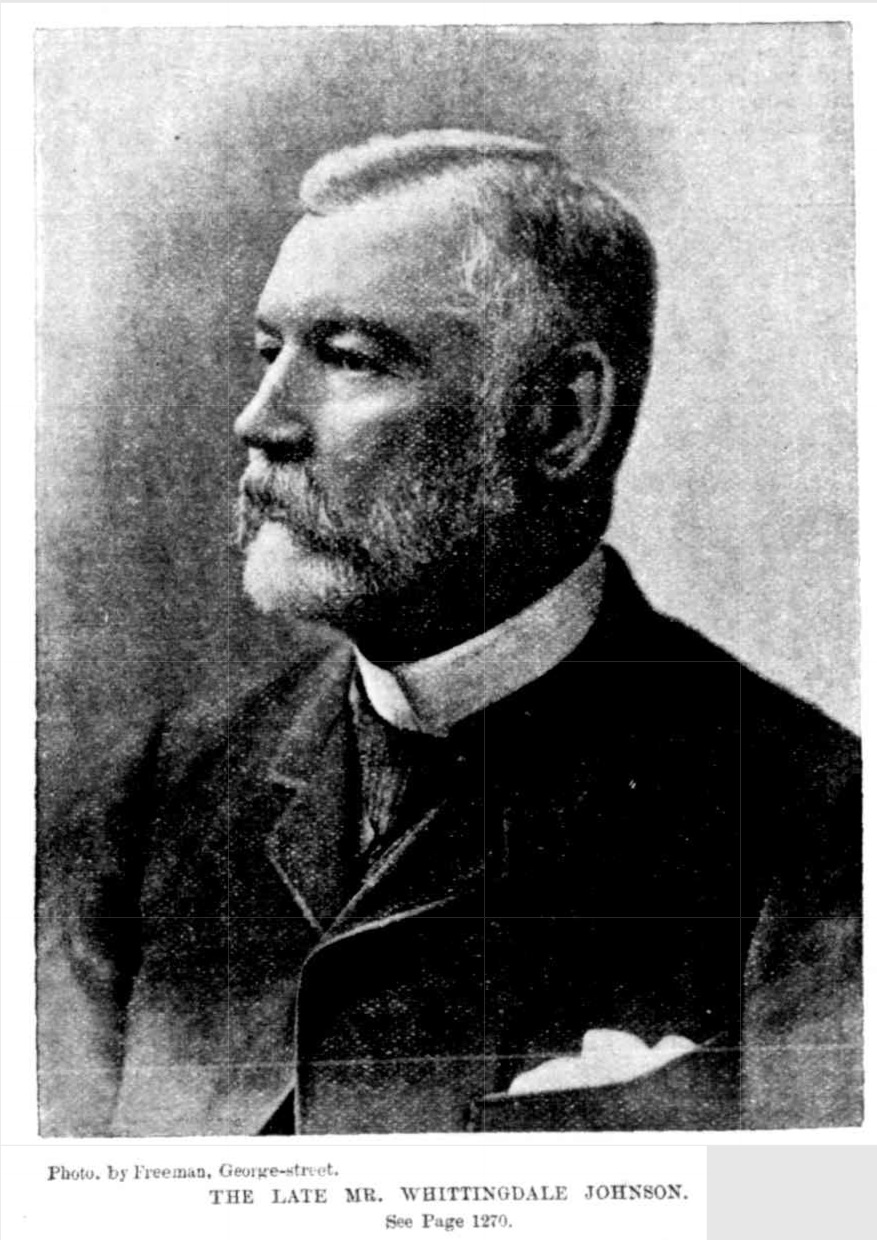
Photo, by Freeman, George-street. THE LATE ME. WHITTINGDALE JOHNSON. See Page 1270.
Death of Mr. Whittingdale Johnson. (1898, November 26). The Sydney Mail and New South Wales Advertiser (NSW : 1871 - 1912), p. 1270. Retrieved from http://nla.gov.au/nla.news-article163812216
MRS. WHITTINGDALE JOHNSON
The death of Mrs. Whittingdale Johnson, widow of Mr. Whittingdale Johnson, S.M., at the age of 84 years, took place on Monday. She was the daughter of the late Mr. Andrew Kerr, of Wellwood, Orange, one of the earliest settlers in the west, and a sister of the late Mr. Andrew Kerr, M.L.C. She is survived by three sons - Messrs. W. K., H. W., and H. C. Johnson - and three daughters - Mrs. T. W. Williams, Mrs. Claude Robertson, and Mrs. W. L. Hickson. The remains were privately interred at Waverley Cemetery yesterday. MRS. WHITTINGDALE JOHNSON. (1923, August 30). The Sydney Morning Herald (NSW : 1842 - 1954), p. 11. Retrieved from http://nla.gov.au/nla.news-article28076011
Despite losing The Peninsula through being unable to meet the costs of borrowed money, Mr. Willans advocated for this a few times when standing for the old Sydney City Council. The ideas he put forward are interesting as they come from the point of someone who was an engineer and who installed the water scheme on the Rocky Point peninsula:
Mr. T. Willan.
On Wednesday night Mr. T. Willan addressed about 60 electors of the East Ward in the Theatre, Royal. Mr. J. See presided, and read several apologies.
The candidate stated that he consented to stand In response to a numerously signed requisition. After impressing on his audience the importance of good men to represent them, he said that a change of some of the present Council would be an advantage. He took an interest In establishing markets in the city, and it had been ungenerously said that he did this from selfish motives, he was ridiculed for agitating In this matter In the Chamber of Commerce. He was told that municipal markets had been a failure, and they could not be run successfully by Councils. But there was a reserve for markets, and it should be utilised in some way or another. Markets could be run successfully on co-operative-lines, and he submitted a scheme, which was at present being- considered. His scheme was of a co-operative character, and he fully explained Its provisions. He referred to the fountain erected by the W.C.T.U in Prince-street, through which no water percolated, and he approved of the Council not allowing it to pass through, as it was not good. He applied for permission to have a horse trough in the street, but the privilege was not granted. He condemned the temporary water supply scheme, which was a, huge failure, The Councillors are unwise in adopting that scheme, and were misled by an Inexperienced person. They were losing money on this scheme year by year. It was time that the Council adopted a scheme that would prove up-to-date, and the Nymboida appeared the most feasible. Public health should be the first consideration, and the existing sanitary system was rotten. Sewerage could be Introduced with a water supply, and with a sewage farm it could be made profitable, It was said that the Council had given the right of lighting the city to the Gas Co., but he could not see that this was the case. He would not consent to rob the Gas. Co., who should be paid value on the plant. They could borrow money for the purchase of the works at n low rate, and he believed that the investment would return £300 to £400 a year. The Nymboida water scheme would provide power to generate electric light. The streets should be improved, and for this he advocated borrowing money, at a low rate of interest. A stone-breaking machine would be a great convenience, and would provide metal at a substantial reduction on hand broken metal. He explained the rating clauses of the new Act,, and contended that Ald. Johnson's contention was wrong in his speech a few evenings' previously. A couple of questions were asked, and votes of thanks to the candidate and the chairman, concluded the meeting. Mr. T. Willan. (1908, February 1). Clarence and Richmond Examiner (Grafton, NSW : 1889 - 1915), p. 5. Retrieved from http://nla.gov.au/nla.news-article61545253
CHAMBER OF COMMERCE.
A meeting of tho Chamber was hold on Tuesday evening, when there were present Messrs. A, Thompson (President), ...T. Matheson, T. Willan, E. H. Cotton, S. W. Chadwick, C. E. Attwater,...CHAMBER OF COMMERCE. (1908, September 26). Clarence and Richmond Examiner (Grafton, NSW : 1889 - 1915), p. 2. Retrieved from http://nla.gov.au/nla.news-article61555907
Race Privileges.
...Mr. T. Willan, of the Freemason's hotel, purchased the right to the grand stand booth for £10, ...Race Privileges. (1908, November 10). Clarence and Richmond Examiner (Grafton, NSW : 1889 - 1915), p. 5. Retrieved from http://nla.gov.au/nla.news-article61558156
DEATH. WILLANS. —February 2, 1908, at her residence, Hibernia Lodge, Queanbeyan, MARY, widow of the late OBADIAH WILLANS, aged 80 years. Family Notices (1908, February 7). Queanbeyan Age (NSW : 1907 - 1915), p. 6 (AFTERNOONS.). Retrieved from http://nla.gov.au/nla.news-article31382958
In late 1923 they lost their home:
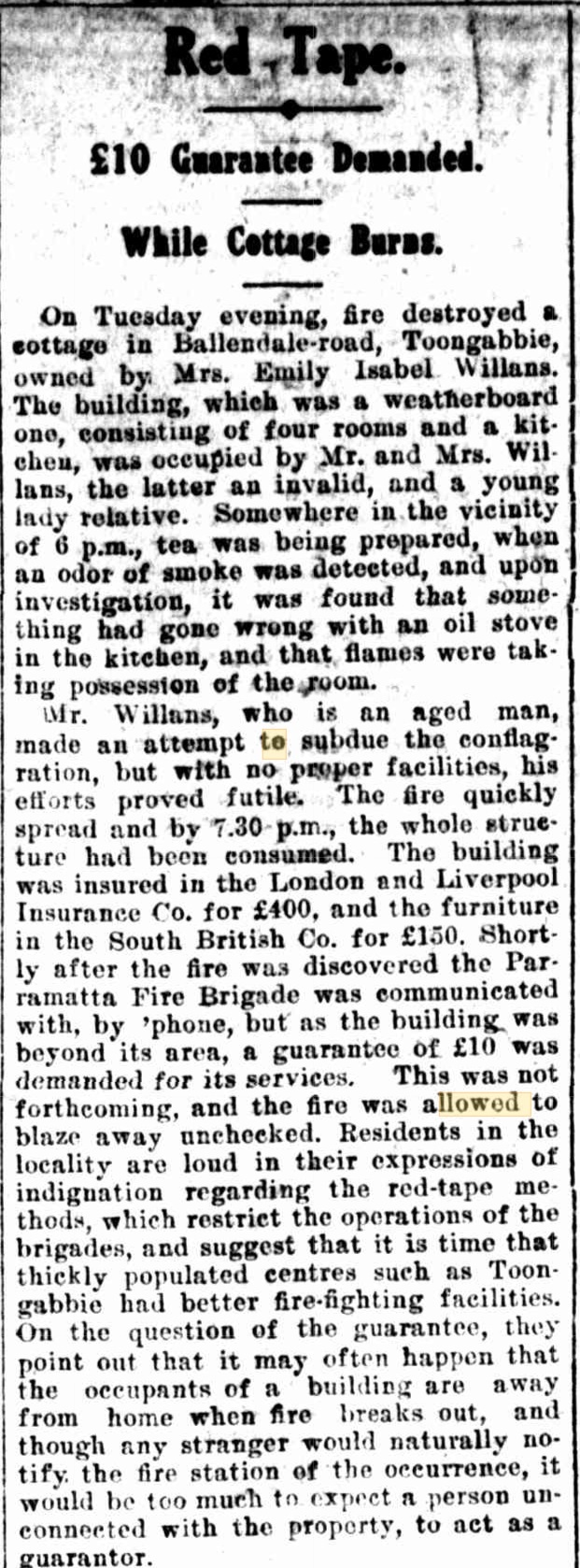
Red Tape. (1923, December 1). The Cumberland Argus and Fruitgrowers Advocate (Parramatta, NSW : 1888 - 1950), p. 3. Retrieved from http://nla.gov.au/nla.news-article105912606
Emily and Thomas passed away within years of each other:
WILLANS.—July 17, 1939, at 35 Forsyth Street, Willoughby, Emily Isobel, beloved wife of Thomas William Willans, late of Toongabbie, aged 75 years. Family Notices (1939, July 18). The Sydney Morning Herald (NSW : 1842 - 1954), p. 10. Retrieved from http://nla.gov.au/nla.news-article17607177
WILLANS. - July 17, 1942, at a private hospital, Thomas William Willans, late of Toongabbie, in his 88th year. Family Notices (1942, July 18). The Sydney Morning Herald (NSW : 1842 - 1954), p. 18. Retrieved from http://nla.gov.au/nla.news-article17827835
William Oliver
William Oliver was born 27 September 1805, the son of Henry and Margaret Oliver. Henry had a 45 acre grant of land on present Pacific Highway, Killara, opposite the turn-off to Fidden’s Wharf. The Olivers were engaged in cutting timber, and as the land was cleared it was cultivated. William looked further afield, and found good stands of timber on the shores of Pittwater in the 1830s.
He was at Pittwater in 1837 when District Constable Robert Melville needed assistance in capturing three bushrangers. William Oliver was later identified as the man who shot Bara through the leg. [Sydney Gazette, 10 Jan 1837]
“Some time since a Frenchman named Lazarus Bara in company with two of the revolted Jamaica Negroes, absconded from Hyde Park Barracks, and found their way to Pitt Water, the neighbour-hood of which they have been keeping in a state of alarm ever since. On Sunday last Mr. District Constable Melville accompanied by his son, and one or two hands, took a boat and pulled to the spot, where the fellows were supposed to lie secreted, a remarkable rocky piece of ground, and very precipitous; having made the place as near as was thought prudent, they brought up, and laid perdu; this was in the evening; the following morning about the time of the morning star, rising, they left the boat, and clambered with considerable difficulty up the rocks; in the distance, they saw a man approaching evidently to look out; catching a view of them, he took to his heels and escaped into the bush, on proceeding up the ascent, they came upon a cave in which were two men; one a black, the other the Frenchman, they both upon seeing the party endeavoured to run away, Melville’s son called out to fire, which three of the party did; when Bara fell, the black escaped. On examining Bara it was found, that a bullet had passed through his thigh, and another had grazed his leg. He was secured. Upon searching the cave a loaded musket was found, and half a cannister of powder, some cartridges and pieces of files and nail rod iron, cut up to serve as shot. There were also potatoes, onions and beef, the latter of which to preserve had been roasted in hide. There was a fire, and pots upon it as though they had been breakfasting. The country surrounding this spot is of an excessively impassable character, intersected at every few yards with ravines and gulleys, independent of an almost impervious scrub, which rendering the capture of this man still more praiseworthy. Parties well acquainted with this spot stated that twenty men might be within a few yards of them without any risk of discovery.”
A second party of bushrangers, after holding up John Clarke (Phoenix) at North Narrabeen, paid Pittwater a visit. [Sydney Gazette 6 April 1837] “Bushrangers are again out in the district of Brisbane Water [i.e. Pitt Water]. On Saturday last four men supposed to be runaway prisoners of the crown, piratically seized a boat belonging to a man named Sullivan, with which they crossed the creek towards the house of a person named Oliver, a publican; the fellows were armed to the teeth; three of them left the boat and made towards the house, in which there was a man and a boy, but the only arms they possessed was a loaded pistol, and a musket unloaded; thinking that it would be dangerous to be found with loaded arms, the pistol was thrown under the bed, and they waited the approach of the marauders, who were shortly at the door demanding admittance, it was granted, and they entered the premises enquiring for Mr Oliver, whom they were told was not at home, they sneeringly replied, they supposed he was gone to give information respecting the bushrangers, knowing that he was an active man and had been instrumental in the capture of several. They then proceeded to rob the house, and took a pistol, a musket, an iron pot, gimblet, tommahawk, a quantity of ammunition, and two bags of wheat; they then killed a pig belonging to Oliver, and a heifer the property of a person named Foley; with this plunder they loaded the boat, and then made sail among the hiding places of the Brisbane Water. The boy, who kept his eye upon the men at their departure, is of opinion that he could recognize two of them, they standing, according to his idea, upwards of six feet in height, the other was a short man; as regards the man in the boat, the distance was too great to distinguish whether he was white or black. Both Mr Oliver and Mr Sullivan have gone down, each with a party of constables from Sydney, to scour the district.”
The three bushrangers were finally captured and committed for trial for the various robberies. [SMH 17 April 1837] “BUSHRANGERS. - Our readers will recollect that about a month since three men named Joseph Bennett, William Wicks, and William Smith, absconded from Goat Island during the night. Nothing was heard of them for several days, when a report was made to the Police of several robberies that had been committed in the district of Brisbane Water [i.e. Pitt Water]. District Constable Shields, of the North Shore, and Constables Hogan, Brophy, and Loveitt, were sent in pursuit, and were out for some time before they came in sight of them. On Wednesday, the 5th instant, they saw the prisoners in a boat; but having no boat themselves they were unable to follow them. They then borrowed a boat and went in the direction of the spot where they had seen the boat. The following day they found the boat near Mooney Mooney Creek, full of stolen property, guarded by Wicks, who was armed with a fowling-piece. Shields called to him to surrender, but he ran away, upon which several shots were fired at him, but he made his escape up the rocks followed by Shields, who found him about half an hour afterwards concealed under a rock with the fowling-piece laid at his feet. Shields then left Wicks in charge of Brophy and Hogan, and with Loveitt proceeded in search of the other men. On the following Tuesday (the 11th instant) a black-fellow named Bowen told Brophy that the other bushrangers were on an island near Mooney Mooney Creek, upon which, leaving Hogan in charge of Wicks, he started by himself in the boat towards the place described by the black-fellow. On his way thither he saw the two men on a raft making their way from the island to the main land. He called on them to put down their arms, when they replied they had no arms, and surrendered. The next morning Shields joined the party, and they made the best of their way to Sydney On Friday morning they were placed at the bar of the Police Office, when, after the evidence of the Police to the above facts had been taken, witnesses to prove the following facts were called: - A Mr. Clark, residing at Pittwater [i.e. North Narrabeen], had occasion to leave his house for a few minutes to give directions to some men that were at work on his farm, and on his return saw the three prisoners come out of his house with nearly all the property there was in it, made into bundles, and the prisoner Wicks had his gun in his hand, which he presented at a dog that ran at him, upon which Mr. C thought it more prudent to go into the house without making any resistance. An elderly man named William Lowe, residing near Melville’s, at Pittwater, stated, that one day in March, on returning to the house where himself and three old men resided, he found that the house had been broken open and all their clothes taken away. Mr. Michael Sullivan lost his boat, which was taken from a neighbour’s wharf in the night. On the 1st instant the prisoners went to the house of Mr. Oliver, who was out, and took away a pig, a pistol, two bushels of wheat, a quantity of ammunition, and several other articles. They enquired several times for Mr. Oliver, whom they said they wished to see very particularly, as he was so fond of taking bushrangers. (Mr. Oliver was very active when the two negroes and the Frenchman were in the district, and it was Mr. O who shot the Frenchman through the leg.) The whole of these witnesses identified portions of the property found in the boat in charge of Wicks, and Mr. Oliver identified the boat Mr. Ryan identified the prisoners as being prisoners for life by the Lady Kennaway, belonging to the second class of Convicts at Goat Island; and Mr. Walter Scott, Superintendent at Goat Island, proved that they had absconded. The prisoners were committed to take their trials for the different robberies, and the Bench found them guilty of absconding, but reserved their sentence.”
William Oliver had married Mary Brown in 1830. They had 14 children, one of whom, a male, was unnamed. William (b.1835) and Henry (b.1837) - these two older boys of the family drowned in a boating accident at Pittwater around 1854. Mary Ann (b.1838) married Gerald Archbold in 1855. Emma (b.1841) married James Heaton in 1869. Thomas Albert (b.1843) married Martha Shaw in 1871. Frederick (b.1845) was killed in a fall from a horse in 1867. His grave is at Lovett Bay. Charlotte Margaret (b.1847 or 1848) married George J.H. Leonard in 1880. Eliza married Joseph Cario or Carriel in 1871. Frances (Fanny) (b.1852) married Thomas Wilson in 1870. Louisa (b.1853) married Charles Johnson in January 1870. There were two Charles Johnsons. This was probably not her cousin Charles, the son of John and Charlotte Johnson (née Oliver). George. There were two George Olivers. One married Anne Jane Mildwater in 1873, while the other married Cecilia Terry in 1879. Both had some connection with the Peninsula. Ann (b.1859) married James Shaw in 1874. Sydney (b.1861) married Martha -.
His two eldest sons, William and Henry, were drowned around 1854 and the boys were buried on the peninsula. Frederick his grandson died of injuries suffered when he fell from his horse in 1867 and he is also buried on the peninsula. At that time there was no designated burial ground. - Nan Bosler, The Fascinating History of Pittwater, 1997.
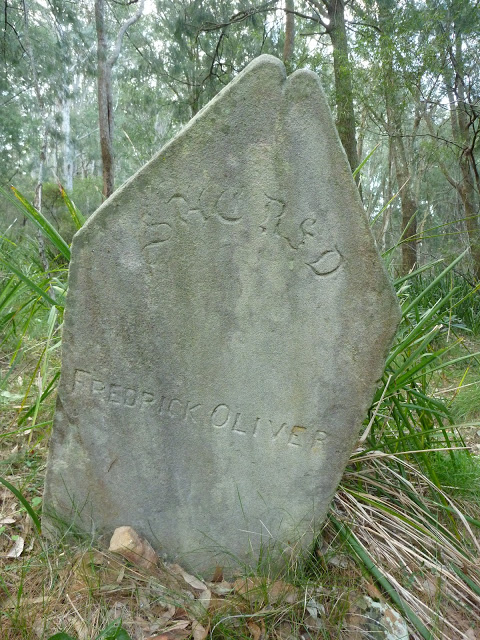
Frederick Oliver's gravesite at Elvina Bay - consists of a Headstone and Footstone
On 22 October 1838 William Oliver of Pitt Water applied for permission to purchase 25 acres of land, “bounded on the east by the waters of a small bay about one mile south west of Scotland Island ...” He added, “My intention is to convert the same into a market garden. His application was approved on 9 January 1839, but he does not appear to have proceeded with this purchase. [AO Reel 1169] Instead, on 28 December 1839 William Oliver purchased 50 acres of land at the Basin from Robert McIntosh II for £50. [LTO Book Q No.489] He sold this land to William Small for £300 on 5 December 1854. [LTO Book 35 No.78]
William Oliver’s first grant of land at Pittwater was 30 acres of land opposite Scotland Island, at the head of Elvina Bay, which he purchased on 9 March 1842 for £45. [AO Reel 1169] This was granted to him on 18 April 1842. [LTO SN75/10] According to Thomas Oliver, the family moved to Pittwater in 1844, before he was one year old. At first, they lived on this grant, and also worked the land at the Basin. William conveyed the Elvina Bay land to Thomas Oliver for £100 on 28 November 1881. [LTO Book 238 No.125] Thomas, farmer and master mariner, conveyed part to Arthur Wood, Master of Petersham Public School, for £40 on 7 May 1884. [LTO Book 291 No. 547] He also conveyed 31 acres (of the nominal 30 acre grant) to John George Cousins on 4 November 1885, for which he received £523. [LTO Book 329 No.477]
William Oliver’s second land grant was 40 acres at Lovett Bay, adjacent to his Elvina Bay land. He became the purchaser by Conditional Sale for £40 on 4 March 1862, and it was formally granted to him on 27 September 1866. [LTO Vol.34 Fol.84] This land became their family home. Ownership was transferred to Samuel Crawford on 15 July 1881; it then passed to Thomas William Willians on 16 June 1886.
William Oliver’s third grant of land was 66 acres at Church Point. He paid £66 for it on 16 June 1864, but it was not formally granted to him until 25 January 1871. [LTO Vol.115 Fol.110] Soon afterwards, on 28 September 1871, part of this land was transferred to William Henry McKeown, George McIntosh, William Oliver, James Jones, Thomas Oliver, John Alderton, and William Baker. They were all local residents except McKeown, who lived at Lane Cove (Gordon). The purpose was for a community church which was to be built on the land, and a burying ground. The residue of the land was transferred to two sons-in-law of William, Thomas Wilson and Charles Johnson, on 21 July 1875. [LTO Vol.129 Fol.63]
On 29 October 1880 the Rev. Frank Firth and W.H. McKeown, both Wesleyan, applied for aid for a provisional school, to be held in the church at Church Point. [AO 5/17356] It was stated that the owner of the property, which consisted of one acre of land, was the Wesleyan Church, and that a lease of £1 per annum was to be paid to W.H. McKeown, trustee. There were 22 children living within a two mile radius of the proposed school, and three others about three miles away. 11 of the 22 were grandchildren of William and Mary Oliver: 3 children of Thomas and Martha Oliver, 4 children of Charles and Louisa Johnson, 3 children of Thomas and Fanny Wilson, and one son of Joseph and Eliza Cario. The proposed school building (the church) was described as weatherboard, 25 feet by 18 feet, in very good repair, and provided with sufficient school furniture. The Inspector described it as “large, healthy, and comfortable”. He also reported, “All the applicants, except one, are small holders of land and settled in the locality. They live chiefly by obtaining wood for Sydney and growing a little fruit and vegetables, which they sell in Manly or Sydney.” (Thomas Oliver owned a vessel, Thomas & Martha, and Joseph Cario owned the Maid of Australia.) He added, “The people profess to be very anxious to have the school established and promise to use their best efforts to maintain it when it is established.” The first teacher, young and newly trained, was Martha Perry (1881-83), then Matilda Cannon (1883-84). Samuel Morrison took up duty on 1 May 1884, and the school was made a Public School from 21 July 1884. On 25 April 1885, District Inspector McIntyre recommended the resumption of one acre of land for a Public School site from Mr A.T. Black, excised from land originally granted to George Weller. Frank E. Collins’ tender to erect Public School buildings at Pittwater for a total cost of £615 was approved on 19 July 1887, and the land was resumed from A.T. Black in April 1888. School lessons were held in the church, therefore, from 1881 to 1888, before moving to the more permanent Public School site.
Mary Oliver died in 1879, and William Oliver died on 15 May 1882. Their memorial is at Church Point. Some interesting statements were made by Thomas Oliver and others in connection with James Macdonald’s grant at Salt Pan Cove. [LTO PA 10712, 26684] In a Statutory Declaration dated 30 April 1891, Thomas Albert Oliver of Pittwater, timber merchant, said he had lived at Pittwater ever since his father took the family there, before he was one year old. (He was born in 1843.) He told how he used to get green wattle bark from Macdonald’s grant, to tie up shingles. Both Oliver and Cario had cut wood on the land, while Thomas Wilson had obtained firewood there. Thomas Oliver rented the land for some years from 1891
FREDERICK OLIVER’S GRAVE.
About one hundred yards distant in the bracken near the track to Linda Falls is the lonely grave of Frederick Oliver, who died in the year 1867. William Oliver (the donor of the land to the Methodist Church) applied for a portion of forty acres, conditional purchase, in 1865, and he had his farm on the neck of the peninsula. As we approach the falls secluded in the gully, we observe through the tall trees the blue waters of Lovett Bay and the flora of Kuring-gai Chase. The cascade pours over a sheer fall of rock of about one hundred feet, and was probably one of three which Governor Phillip saw falling from a ''height” during his visit to Pittwater in March, 1788. The fall is prominent from the bay in time of rain. The name of Lovett first appears on a plan dated 1862 of a survey by Surveyor George Commins of forty acres on the shores of the bay. John Lovett lived at Pittwater in 1836.
From a pool at the top of Linda Falls a water supply was obtained in a two-inch iron pipe sheer down the cliff. This pipe ran the full length of the peninsula to the highest point, on which a huge concrete reservoir had been built. With the constant flow of water it was always full, and in time of drought a supply was reticulated to the three homes on the peninsula, viz., “Trincomalee,” "Fairhaven," and “Ventnor,” from this reservoir.
Kuring-gai Chase National Park.
Across Lovett Bay is the Pittwater shore of Kuring-gai Chase, dedicated as a National Park for North Sydney on December 14, 1894. The first trustees were Hon. Henry Copeland, President; T. A. Dibbs, Vice-President; E .du Faur, Managing Trustee; and E. J. Sievers, Hon. Secretary pro. tem. Four men were employed at Lovett Bay at, six shillings per day in April, 1895, to make the tracks to ‘‘The Lookout,’’ the Flat Rock and the waterfall. The causeway and jetty were built at that time. The cause way was dedicated on January 3, 1907.
In the ’eighties, an Italian, Joe Carrio, a son-in-law of William Oliver, had a selection of forty acres adjacent to this causeway. I remember the remnants there of a few fruit trees. Carrio owned a ketch named The Maid of Australia, in which he made frequent trips to Sydney, taking firewood, with staghorns and tree-ferns as a side line. On the return trip he brought supplies for the settlers living on the side of the bay. There is a beautiful pool with cascades at the head of the bay.
A new track was made to Coal and Candle Creek about 1917, distant two and a half miles. It is a stiff climb up the zigzag track to “The Lookout.” The altitude is about six hundred feet, and there is a tunnel through the rock at this spot—a curious example of weathering. Viscount Hampden, Governor of New South Wales (1895-1899) was escorted to this spot by Mr du Faur.
Near the north entrance to Lovett Bay, F. Chave had in the ’eighties the finest orchard in the district, and his family is notable among the early residents of Bayview. [3]
Marriages
27/1855 V1855427 43B ARCHBOLD GERALD OLIVER MARY A NU
DEATHS.
ARCHBOLD-October 26, 1906 at her residence, Taraville, Clanville road Roseville, Mary Ann beloved wife of Gerald Archbold, aged 69 years RIP Family Notices (1906, October 27). The Sydney Morning Herald (NSW : 1842 - 1954), p. 12. Retrieved from http://nla.gov.au/nla.news-article14802613
MRS. M. A. ARCHBOLD.
The death took place on October 26th at her residence, 'Taraville,' Roseville, of Mrs. Mary Ann Archbold, wife of Mr. Gerald Archbold, an old and respected pioneer of the district, where she had ever since resided. Fifty one years ago she was married at St. Thomas's Church to Mr. Gerald Archbold, and their family of six sons and four daughters, most of whom are married, resided with their families round about the district, and it is not too much to say that on the North Shore line no family is better known or more respected than the Archbolds. In all good movements Mrs. Archbold was always a well-known figure, and won the name of a good and devoted Catholic. She had been ailing twelve years, and bore her illness with Christian fortitude. She was a devout member of the Sacred Heart Society, and was visited constantly in her illness by the Sisters of Mercy from Chatswood and Pymble convents. The funeral, which, took place on the 24th, was one of the largest ever seen in Gore Hill Cemetery, nearly 700 persons attending, thus testifying to the great respect in which the family is held. Amongst those present at the graveside were 0. J. Archbold, F. Archbold, J. Archbold, A. Archbold (sons), Mrs. T. H. Duffy, Mrs. W. J. Gibson, Mrs. G. Wilson, and Mrs. J. White, (daughters), and a large number of friends. Floral tributes were sent by the following: — Mrs. Anderson, Mrs. Montgomery, Mrs. Leak, Mr. Macintosh, Mrs. Heaton, Mrs. Russen, Mrs. Jenkins, Mrs. Hahn, Miss Steers, Miss J. Archbold, Mrs. White, Mrs. Harris, Mrs. F. Gibson, Mrs. O. Archbold, Mrs. F. Archbold. Deceased leaves ten children, thirty-two grandchildren, and seven great-grandchildren. The funeral arrangements, in the hands of Mr. W. N. Bull, were carried out in his usual capable manner. MRS. M. A. ARCHBOLD. (1906, November 17). Freeman's Journal (Sydney, NSW : 1850 - 1932), p. 26. Retrieved from http://nla.gov.au/nla.news-article108027548
a reward of £25, in addition to one of a similar amount offered by Mr. Archbold, for similar information as to the persons who destroyed a number of fruit trees, the property of Mr. Gerald Archbold, of Gordon, North Sydney, on the night of the 30th ultimo ; Government Rewards. (1893, May 13). Evening News (Sydney, NSW : 1869 - 1931), p. 3. Retrieved from http://nla.gov.au/nla.news-article112603360
Late Gerald Archbold.
' ONE OF THE OLDEST.'
Referring to the death of the father of Erina Shire's President, the Bangalow Herald says : — Mr. Gerald Archbold, of Roseville, near Sydney, died at his residence on Wednesday, 18th instant, age about 89 years. Deceased was the grandfather of Mr. G. F. Gibson, of Byron Bay, and was born at Roseville. At the time of his death he was one of the oldest native-born residents of the Commonwealth. He was a most active man right to the last, and was knocked down by a bolting horse from the Chatswood Catholic Church about a year ago. No doubt this accident hastened his end. Deceased was a yearly visitor to the Royal Sydney Show, and last Easter paid three visits with several of his grandchildren, being well able to take care of himself in the city streets without any assistance. He was a regular trader to Richmond River, Brunswick and Byron Bay ports before the gold rush broke out. Like most other traders, he gave up the boat for the diggings as he could get no one to work the boat. On the other hand he knew if he did get the cedar to Sydney there would be no buyers, as everyone had developed the gold fever. Deceased had informed the writer of some most interesting events on the Richmond, such as a boat wrecked on the north side of the Brunswick when a man travelling from that township to the Tweed found her dry on the beach He thought someone might be inside and to his surprise found such to be the case He hastened back to Brunswick for assistance and willing hands soon released the only survivors of the gale. The Archbold family are well known and respected from Milson's Point to Hornsby. Deceased leaves a large family of sons and daughters, also a number of grand-children, and great-grandchildren to mourn his loss. Late Gerald Archbold. (1918, September 26). The Gosford Times and Wyong District Advocate(NSW : 1906 - 1954), p. 7. Retrieved from http://nla.gov.au/nla.news-article166856636
DEATHS.
'ARCHBOLD.— September 18th, 1918, at his late residence, "Taraville," Clanville Road, Roseville, Gerald Archbold, beloved father of Gerald, William, Oswald, Fred R., Jim, Arthur, Sarah, Edith, Mary, Geraldine, in his 89th year. R.I.P Family Notices (1918, September 19). The Sydney Morning Herald (NSW : 1842 - 1954), p. 6. Retrieved from http://nla.gov.au/nla.news-article15803311
FUNERALS.
ARCHBOLD.—The Friends of Messrs. GERALD, WILLIAM, OSWALD, FRED R., JIM, and ARTHUR ARCHBOLD, Mrs. T. H. DUFFY, Mrs. W. J. GIBSON, Mrs. G. WILSON, and Mrs. JAMES WHITE are invited to attend the Funeral of their beloved FATHER, Gerald Archbold; to leave his late residence, Taraville, Clanville-road, Roseville, THIS AFTERNOON, at 2.30 o'clock, for Catholic Cemetery, Gore Hill. WOOD, COFFILL, and COMPANY, Ltd. Family Notices (1918, September 20). The Sydney Morning Herald (NSW : 1842 - 1954), p. 5. Retrieved from http://nla.gov.au/nla.news-article15803426
Roseville estate to be sold off in October 1924 ARCHBOLD ESTATE (1924, October 11). The Daily Telegraph (Sydney, NSW : 1883 - 1930), p. 7. Retrieved from http://nla.gov.au/nla.news-article245464601
MR. CHARLES ARCHBOLD.
Mr. Charles Archbold, who died recently at the age of 76 years, was an orchardist in the Roseville district. He was a son of the late Mr Richard Archbold, and a grandson of Captain Isaac Wilson. Captain Wilson's old home was named Roseville, and when it was demolished and a railway station built on the site, it was decided to call it Roseville. Mr Archbold, who was married twice, Is survived by nine sons and seven daughters. MR. CHARLES ARCHBOLD. (1932, May 21). The Sydney Morning Herald (NSW : 1842 - 1954), p. 18. Retrieved from http://nla.gov.au/nla.news-article16865022
Joseph And James Shaw
Joseph Shaw was residing at Pittwater when John Andrews agreed to sell him six acres “to commence and be taken from the western boundary” of his farm at Coasters Retreat, on 4 May 1849. Andrews agreed to give Shaw legal title “at any time he may require” on condition of the purchase money being paid. John Collins drew up and witnessed the agreement. [LTO Book 82 No.492]
James Shaw, dealer in shells for lime at Pitt Water, was listed in the Sydney Commercial Directory for 1851. Joseph Shaw, with a freehold house and land at Pitt Water, was listed in the electoral roll (St. Leonards) for 1859-60.
Marriage: 1958/1844 V18441958 76 SHAW JOSEPH FORD HANNAH JN - IN Presbyterian at Parramatta
Children of Joseph and Susan (Hannah )Shaw
SHAW JAMES 1704/1849 V18491704 42A JOSEPH SUSAN
SHAW JOSEPH 1703/1847 V18471703 42A JOSEPH SUSAN
SHAW HANNAH 1529/1844 V18441529 28 JOSEPH SUSAN
SHAW MARY 1706/1854 V18541706 42A JOSEPH SUSAN
SHAW MARTHA 1705/1852 V18521705 42A JOSEPH SUSAN
The agreement for sale, indicating that Shaw paid £6 for the six acres of land at Coasters Retreat, was registered on 8 April 1863, suggesting that this had been, and was then, the Shaws’ place of residence. Joseph Shaw could not sign his name, and John Collins witnessed his mark. However, in a statutory declaration dated 6 July 1889, Collins’ widow Honorah stated, “At the time the conversation took place between Joseph Shaw and John Collins, Shaw said, ‘I have no money to give you for the land,’ when Collins replied, ‘I do not want any.’ My late husband put the receipt on the document at Andrews’ request.” On 10 October 1872 Andrews’ grant was conveyed to John Collins. A query arose later as to whether the Shaws had some legal right to the land, but this was discounted by the authorities, on Mrs Collins’ statement. [LTO PA 7492]
The Shaws must have been close friends of the Oliver family, who lived nearby, as Martha married Thomas Albert Oliver in 1871, and James married Ann Oliver in 1874.
A Joseph Shaw died in 1872, aged 77, and a Susan Shaw died in 1876, aged 72.
James Shaw, residing at Towler’s Bay, Pitt Water, was listed in the 1869-70 electoral roll; James Shaw and Joseph Shaw junior were listed in 1873-74. A Conditional Purchase of 40 acres of land at Towler’s Bay by Joseph Shaw lapsed, and was taken up by Arthur Wood, being granted to him on 10 July 1889. [LTO Vol.931 Fol.231]
From Hawkesbury River.— Rover, Shaw, wheat and maize. (June 16.) SHIPPING INTELLIGENCE. (1845, June 17). The Australian (Sydney, NSW : 1824 - 1848), p. 2. Retrieved from http://nla.gov.au/nla.news-article37157795
SHAW—ARCHBOLD.—October 14, at the Wesleyan Church Willoughby, by the Rev. J. J. Rodd, Walter Shaw to Annie Archbold. Family Notices (1891, November 2). The Sydney Morning Herald (NSW : 1842 - 1954), p. 7. Retrieved from http://nla.gov.au/nla.news-article13842339
Shaw Family at Coasters Retreat - The Basin:
John Andrews, of Pitt Water, was charged, on the information of Joseph Shaw, with having wilfully and maliciously killed a calf, the property of informant. Mr. Borton appeared-for plaintiff; Mr. Moffatt for defendant. Several witnesses were examined, from whose evidence it appeared that about midnight of the 21st day of last month, prisoner entered plaintiff's ground adjoining his own at Pitt Water, and with a stick beat a calf belonging to complainant, from the effects of which the animal died the following day. Its head having been much bruised and its neck broken. The attorney for the prosecution having omitted to place complainant in the box to swear in support of the information, and to identify prisoner as the John Andrews there mentioned, defendant's attorney on those grounds raised an objection, which was ruled by the Bench to be fatal to complainant's case, and it was therefore dismissed. WATER POLICE COURT. (1859, October 5). The Sydney Morning Herald (NSW : 1842 - 1954), p. 3. Retrieved from http://nla.gov.au/nla.news-article13031574
Owen Golden, James Scott, and Margaret Downs were, on the information of John Smith, charged with having committed an assault upon him. Smith stated that he was a farmer, residing at Pittwater. On the 14th of November last he went down to Pittwater to see some land he had purchased from John Andrews, when he found the prisoner Downs living there. He asked her if she was going to leave the place, as he wanted the land. She replied, " I will not leave it so long as there's a stick stands up in the building." The two other defendants were present. Smith showed them his title and deed of purchase, asking them to read the documents ; but they said there was no necessity. He then told them he should take the door down," and he tipped it off the wire, and took it to his house, which was at a short distance. Subsequently he went back, and knocked one of the slabs off the house, and went inside. Golden then took up one of the laths from the sofa, and struck Smith with it on the arm ; Downs seized the kettle and threw some boiling water over him. Whilst he way trying to remove a slab near the chimney Downs attacked him with a piece of burning wood ; but he kept her away with an axe until the three defendants set upon him, got him down, and took the axe from him. The house was empty when Smith purchased the land (which was a grant to Andrews), and whilst he was in Sydney prisoners took possession of it; the house was about fifteen rods within the boundary. The only thing that Scott did was to take the axe from Smith; Golden struck him on the wrist with a batten. John Andrews deposed to having sold the land and house to Smith, and when he put Smith in possession of them no one was living in the house.
Some seven or eight years ago it was in the possession of a man named Joseph Shaw, to whom he agreed to sell it, with six acres of land ; Shaw built the house and was to give Andrews £6 for it, for the fulfilment of which he gave £1 as a deposit. There was a written agreement which Shaw kept, but he deserted the place in September last. Andrews then sold the place to Smith, the agreement with Shaw not having been completed. Smith (who lived with Andrews) on the day of the assault came home with his shirt nearly torn off his back, and his shoulders and loins so scalded that the skin came off in a day or two. He had also a cut on his arm which he could not use for several days, as well as a sear on his cheek like a burn. Downs, in defence, said her husband took possession of the house from Mr. Ross, custom-house officer, at Broken Bay. Scott was discharged, and Golden and Downs committed for trial at the next Quarter Sessions. Bail allowed. WATER POLICE COURT. (1860, June 5). The Sydney Morning Herald (NSW : 1842 - 1954), p. 3. Retrieved from http://nla.gov.au/nla.news-article13041403
A Man Missing from Balmain -
Barrenjoey, Tuesday. — Nothing further has been heard of Joseph Shaw, the man who is missing from Balmain. He is supposed to have, under temporary insanity, left his home at Balmain on the 6th instant, and attempted to reach Broken Bay in a small open boat. There can be little doubt but that the unfortunate man has met with a watery grave, the weather at the time being very severe on the coast. The police have been making every possible search on the coast without result. A Man Missing from Balmain. (1884, October 16). The Daily Telegraph (Sydney, NSW : 1883 - 1930), p. 5. Retrieved from http://nla.gov.au/nla.news-article237221672
Shaw's Creek - Cahill Creek
A short watercourse at the southern tip of Pittwater. It rises near Suzanne Road Bayview, and is joined by two smaller branches within Bayview Golf Course. It enters Pittwater through a lined channel at Winji Jimmi Bay. Known as Winnererremy Swamp in the early days of European settlement, the name was applied to the Bayview area. Water drained into the swamp from the surrounding hillsides and flowed into Pittwater through a meandering mangrove lined channel called the "Newport Maze" on the eastern side of Pittwater Road.
Later, the creek was known as Shaw's Creek after the local blacksmith, who also built boats near the creek.
To the west of The Maze is Shaw’s Creek. I often saw old Jack Shaw stealing along silently in his ketch about dusk up McCarr’s Creek, like the “Old Grey Man of the Sea.”
In the creek which passes under the Bayview Road, the Shaw brothers, old pioneers, kept the ketches which they built thirty years ago or more.
Close at hand is the home of Mr and Mrs James Shaw, pioneers of the district. Mrs Shaw, who was formerly Miss Ann Oliver, was born on the peninsula, Lovett Bay, in 1856. Before that, her father, William Oliver, lived in a cottage on Cape’s Flat, near the Fig-tree, the site of which has been swallowed up by encroaching tides. Mrs Shaw told me that she had a vivid recollection of a black fellow spearing fish under a mangrove on the point of the flat just below Baker’s orchard. That was when she was a young girl. “I can see that blackfellow now,” said she, “with the fish quivering on the spear just as I see the leaves shaking on that tree.” On the bank of the small creek near the Bayview Post Office a blackboy who nursed her brother Tom was buried. Mrs Shaw said that probably the grave was covered over when the road was made to Church Point. - JSN Wheeler,
Mr. Johnson has a postcard, dated 1906, showing Pittwater Rd., Mona Vale with the three brick houses on the right, two houses and a wooden Church on the left of the road. Two of the brick houses were named “Esbank” and “Lithgow” (“Bowenfels” may have been the name of the third.) The two wooden houses were occupied by Wilsons and Aldridges. He cannot recall the occupant of the third wooden house. There are two tall cabbage tree palms on either side of the road, opposite house A.
There is a line or telegraph poles on the left-hand side of the road. Mr. Shaw built boats and launched them at the nearby creek.
Joseph Shaw Snr. - father of Joseph and James - wife was Hannah (nee Ford)
FORD Hannah Mary 1823 31/901 Ticket of Leave [4/4081; Reel 916] District: Parramatta; Tried: MGD
FORD Hannah Mary 1823 41/623 Ticket of Leave [4/4149; Reel 939] District: Windsor; Tried: MGD
Ticket of leave granted at Windsor and Parramatta – tried at MGD
Death of child:
SHAW HANNAH 6419/1865 Parents JOSEPH HANNAH WINDSOR (?)
SHAW MARY 2417/1878 JOSEPH SUSAN BALMAIN
Death
SHAW SUSAN 1250/1876 parents: UNKNOWN DIED SYDNEY
SHAW SUSAN 1022/1876 V18761022 102 AGE 72
James Shaw marriage (Ann is a daughter of William Oliver)
1256/1874 SHAW JAMES OLLIVER ANN at: BALMAIN
Children
SHAW ANN S 3418/1876 JAMES ANN BALMAIN
SHAW REBECCA M 3908/1879 JAMES ANN BALMAIN
SHAW JAMES J S 4059/1881 JAMES ANN BALMAIN
SHAW—OLLIVER—July 18, at the Wesleyan Church, Balmain, by the Rev. Richard Sellors, James Shaw, of Balmain, to Ann, daughter of William Olliver, of Pittwater. Family Notices (1874, July 31). The Sydney Morning Herald (NSW : 1842 - 1954), p. 8. Retrieved from http://nla.gov.au/nla.news-article13346696
For assaulting John Tancred, James Shaw was fined 40s, with £2 3s 8d costs, or in default two months. BALMAIN. (1889, August 24). Evening News (Sydney, NSW : 1869 - 1931), p. 6. Retrieved from http://nla.gov.au/nla.news-article108104546
Index to Gaol Photos:
SHAW Joseph 1872 Sydney Darlinghurst 10-08-11 11944 106 NRS2138 [3/6077] Alias: WILSON, James Alias: SHAW, James 2138_a006_a00603_6077000106r
Births
SHAW JOSEPH WILLIAM 4881/1872 JOSEPH MARY ANN WATERLOO
COTTAGE DESTROYED BY FIRE.
A fire broke out in a cottage at 16 Reuss street, Balmain, about 9 o'clock last night. It was owned by Mr. James Shaw, of Bayview, Pittwater, and occupied by Mrs. Amelia Morling. Brigades from Balmain and Rozelle were soon on the scene, and although every effort was made to save the building, which was of weatherboard, it was completely destroyed. The house was insured in the United Insurance Company for £200. COTTAGE DESTROYED BY FIRE. (1912, October 20). Sunday Times (Sydney, NSW : 1895 - 1930), p. 8. Retrieved from http://nla.gov.au/nla.news-article120678240
FIRE AT BALMAIN.
Just before 9 o'clock last night a five-roomed weatherboard house at 16 Reuss-street, Balmain, was destroyed by fire. The house was owned by Mr. James Shaw, senr., of Bay-view, Pittwater, and occupied by Mrs. E. Morling, No one was at home at the time, Mrs. Morling having gone out to a picture show about an hour previously. The house was in a thickly populated quarter, and the buildings on either side were damaged before the fire was extinguished. FIRE AT BALMAIN. (1912, October 20). The Sun (Sydney, NSW : 1910 - 1954), p. 4. Retrieved from http://nla.gov.au/nla.news-article228844837
SHAW.—March 19, 1933, at Collaroy, Joseph, dearly loved brother of James Shaw, of Bayview, aged 85 years. Family Notices (1933, March 20). The Sydney Morning Herald (NSW : 1842 - 1954), p. 8. Retrieved from http://nla.gov.au/nla.news-article16981660
SHAW.— The Relatives and Friends of Mr. and Mrs. JAMES SHAW and FAMILY, of Bayview, are kindly invited to attend the Funeral of their late beloved brother and uncle, Joseph Shaw, to leave our Chapel, 14 Belgrave Street, Manly, THIS MONDAY, at 3 p.m., for Gordon Road Cemetery, Mona Vale. WOOD COFFILL LIMITED, Motor Funeral Directors. Family Notices (1933, March 20). The Daily Telegraph (Sydney, NSW : 1931 - 1954), p. 6. Retrieved from http://nla.gov.au/nla.news-article247114305
SHAW Joseph Bayview near Manly, 19/03/1933 16/05/1933 Pre A 073708 [20/1741] - Occupation: retired master mariner
SHAW. — January 18, 1939, at his residence. Bay-view Road Bayview, James, dearly beloved husband of Ann Shaw, and loving father of Jim and Bee. Aged 89 years. Family Notices (1939, January 19). The Daily Telegraph (Sydney, NSW : 1931 - 1954), p. 20. Retrieved from http://nla.gov.au/nla.news-article247454326
SHAW JAMES 5426/1939 Parents: JOSEPH SUSAN MANLY - NSW BDM's Records
TO CORRESPONDENTS
JAMES SHAW (Balmain) : Corrimal v Metters match resulted in a draw, three-all. TO CORRESPONDENTS (1929, May 9). The Labor Daily (Sydney, NSW : 1924 - 1938), p. 3. Retrieved from http://nla.gov.au/nla.news-article239902349
Brother Joseph’s marriage (?): 1897 Or in 1874
431/1874 SHAW JOSEPH CHADWICK JOANNA SYDNEY
641/1897 SHAW JOSEPH E O'HARA FLORENCE A L BALMAIN SOUTH
DEATHS.
On the 7th instant, at her residence, the Western Road, Parramatta, after a short and painful illness, in the 60th year of her age, MARY, the relict of the late EDWARD LAKEMAN, and the beloved wife of JAMES CONNOR ; also, the beloved sister of Thomas Shaw, of Petersham ; also, of James Shaw, of Balmain ; also, of Joseph Shaw, of Wangarrata, Victoria ; also, of John Shaw, of the Paterson, leaving a bereaved husband and a large circle of relations and friends to mourn their loss. Family Notices (1874, February 12). The Sydney Morning Herald (NSW : 1842 - 1954), p. 1. Retrieved from http://nla.gov.au/nla.news-article28411542
CONNOR MARY 7061/1874 father: THOMAS DIED PARRAMATTA PARRAMATTA
Or death: SHAW HANNAH 6419/1865 Parents JOSEPH HANNAH WINDSOR
John ANDREWS
John Andrews was born in the village of Severnstokes, Worcestershire, in 1795, the eldest child of Charles and Mary (or Martha) Andrews, farmers. When he joined the 80th Regiment of Foot (the Stafford Volunteers) on 13 May 1816 he could neither read nor write, but he learnt to do so while in the Regiment. John came to New South Wales in the advance guard of the Regiment, arriving on the Lady Kennaway on 12 October 1836. His duties in the next few years included guarding the iron gangs of convicts who were building roads around Hartley and Lithgow.
Sergeant John Andrews was discharged on 30 April 1841, after 25 years’ service. He received a pension, and also applied for and obtained the authorised remission in the purchase price of land, for which he was eligible. [AO Reel 1083] On 8 February 1842, fifty acres of land at the Basin, Pittwater, were advertised for sale as Lot 8. John Andrews purchased the land with the £50 remission to which he was entitled, and it was granted to him on 18 April 1842. [LTO SN75/1]
He married a widow, Hannah Jackson, on 4 January 1849. Both gave their place of residence as Broken Bay.
John Andrews agreed to sell six acres “to commence and be taken from the western boundary” of his farm to Joseph Shaw on 4 May 1849. He agreed to give Shaw legal title “at any time he may require” on condition of the purchase money being paid. John Collins was witness to the agreement. [LTO Book 82 No.492] See Joseph Shaw.
On 4 November 1859 John Andrews sold his grant to John Smith for £150. [LTO Book 71 No.929] John Smith made his will on 11 April 1862, just three days before he died, leaving the land to Hannah Andrews. Probate was granted to Hannah Andrews on 11 April 1872. On 10 October 1872 John and Hannah Andrews exchanged their land, which is still known as Soldiers Point, for a much smaller block of land at Careel Bay, belonging to John Collins, on which Collins had built a cottage. [LTO Book 132 Nos.923 & 924] This block of land was Lot 1 of Section XIII, bounded by John Street on the south, William Street on the west, and the creek on the north.
Bedridden since April 1877, John Andrews died on 12 May 1879 at the home of John Gould, Brighton Cottage, Whistler Street, Manly. He had no children. [2.]
ANDREWS, Charles
Charles Andrews was the younger brother of John Andrews. Born in 1799, in March 1818 he joined the 80th Regiment of Foot (the Stafford Volunteers), in which his brother was already serving. The Regiment came to Australia in 1836.
100 acres of land at Cabbage Tree Bay (North Manly) was advertised as Lot 7 on 8 February 1842. Charles teamed up with Christopher Skally to purchase the land, both of them being due for discharge. Under the regulations of 15 February 1840, a remission of £50 was authorised for Charles as a late Sergeant in the 80th Regiment, and a remission of £25 was authorised for Christopher Skally as a late Private in the 28th Regiment of Foot. The purchase price of £60 was well covered, and the land was granted to them on 9 May 1842. [LTO SN75/18]
Charles Andrews, settler of Manly Cove, and his wife Jane Isabella, and Christopher Skally of Windsor, and his wife Bridget, sold the land in 1847. 10 acres went to Isaac Lowry on 2 August 1847 for £10 [LTO Book 13 No.241]; 16 acres went to John Whaley on 9 August 1847 for £16 [LTO Book 35 No.160]; and 74 acres went to John Sims on 9 August 1847 for £63 [LTO Book 13 No.235]. John and Mary Anne Sims sold the 74 acres to Henry Miles, Thomas Youl, Thomas Kirby and Robert Symon on 19 December 1850. Symon sold his share for £8 to the other three, who partitioned the land among themselves on 27 November 1854. [LTO Book 35 No.799] Kirby immediately sold his share to Henry Gilbert Smith for £140, while Henry Miles, gardener, and Thomas Youl, stonemason, sold part of their land to Smith, but remained as residents. Whaley sold his 16 acres to Smith for £200 on 30 January 1855. This gave H.G. Smith ownership of all land along the ocean front north of the Corso, except a small part near Manly Lagoon, which still belonged to Thomas Youl. Isaac Lowry’s 10 acres passed through a number of hands before being purchased by James Farrell on 14 July 1871. This was the land commonly known as Farrell’s Paddock. [2.]
Joseph Washington Flood And Edward Flood
Joseph Washington Flood was the youngest son of Edward Flood MLC. Edward Flood was born June 24th 1805 in Sydney, the illegitimate son of Irish convict Joseph Flood (1774-1808) and Ann Germaine (1778-1823). He had four brothers and a sister.
Joseph Flood Snr., Irish, arrived as a convict aboard the ship 'Boddingtons' on August 7th, 1793.
Edward married Charlotte Hannam, eldest daughter of Reuben and Elizabeth Hannam (nee Hews) on May 22nd, 1826 at St. James Church, Sydney. Charlotte came out on the Northampton with her younger brother David and mother to live with her transported as a convict father. The Ships List notes she is 9 years of age and her brother 7. The ship arrived in Sydney on June 18th and after a Muster those aboard on June 21st were given permission to debark on June 23rd.
It was on this ship that a Mary 'Stokes' came as a free settler too, a son she named 'James' (later changed to 'Robert') was born January 18th, at sea. Mary subsequently joined James Oatley, already arrived in 1814, transported as a convict. The Northampton sailed from Portsmouth on January 1st 1815 with 110 women convicts (4 died enroute) and 35 'free' women and 40 children (6 died enroute).
SHIP NEWS.-The ship 'Northampton', Captain Tween, arrived from England on Sunday with 106 female prisoners, having lost 4 of her original complement during the voyage; namely, Eliz. Cowan, and Ann Turner, at Rio; the latter of whom fell overboard and was drowned, Susan Frost died at sea after leaving Rio; and Mrs. Shirwell died a fortnight before the vessel's arrival at this Port. Mrs. Dedman, a free passenger, and her two children, were buried at Rio; Mrs. Noble lost one child, Mrs Drake two, and Mrs Higgins one: The prisoners were landed yesterday morning, and appear all to be very healthy, and well satisfied at their usage during the passage. A number of free women have also arrived, some of whom have families, to join their husbands. Sydney, SITTING MAGISTRATE—S. LORD, Esq. (1815, June 24 - Saturday). The Sydney Gazette and New South Wales Advertiser (NSW : 1803 - 1842), p. 2. Retrieved from http://nla.gov.au/nla.news-article629133
Reuben Hannam became a publican. The 1928 Census lists:
Hannam, Richd., absolute pardon, Gambier 181, life, Protestant, publican in Bathurst Street
Hannam, Elizabeth came free, Northm. 1815
Hannam, David, 23 came free, Northampt. 1813, settler, Botany, 100 acres, 20 cleared and cultivated, 5 horses and 14 horned cattle
Hannam, Mary 17 born in the colony
Flood, Edward, 23, born in the colony, shoemaker Elizabeth Street Sydney
Flood, Charlotte 18, born in the colony
Flood, Elizabeth 1 1/2 born in the colony
Edward and Charlotte's children were Elizabeth Flood (1827–1893) George Flood (1829–1897) Edward Flood (1832–1916) Walter Flood (1834–1899) Caroline Amelia Flood (1836–1904) Charlotte Louisa Flood (1839–1890)
NB: Mother uncertain for these two: Australia John Flood (1842–1892 - died November 25th after a fall from his horse at Singleton - Family Notices states he is fourth son. November 28: THE Funeral of the late AUSTRALIA JOHN FLOOD will leave Ebrais, 36 Point Piper rd., Paddington, THIS (MONDAY) AFTERNOON, at quarter to 3 o'clock, to Waverley Cemetery NSW BDM's: FLOOD AUSTRALIA J 12044/1892 Parents: EDWARD and ELIZABETH.) and Joseph Washington Flood (1844–1890 NSW BDM's Records: Parents EDWARD and UNKNOWN).
Edward Flood was apprenticed as a carpenter and was soon a Builder. He was also after land, lots of land. Land Grants from the 1820's show:
NOTICE — Persons falling Timber, Cutting Grass, or otherwise Trespassing on the Farms of REUBEN HANNAM, DAVID HANNAM, and EDWARD FLOOD, situate at Cook's-river, after this Notice, will be prosecuted, and all Cattle found thereon will be impounded forthwith. Sydney, June 16,1827. R. HANNAM. Classified Advertising (1827, July 2). The Sydney Gazette and New South Wales Advertiser (NSW : 1803 - 1842), p. 4. Retrieved from http://nla.gov.au/nla.news-article2188516
Government Notice.
Colonial Secretary's Office, Sydney,
October 14, 1831. GRANTS OF LAND.
THE following description of GRANTS of LAND, in the County of CUMBERLAND, with the names of the persons to whom they were respectively promised, are published for general in-formation, in order that all parties concerned may have an opportunity of correcting any errors and omissions which may have been made inadvertently.
And Notice is hereby given, that at the end of One Month from the present date, unless written Caveats be previously lodged in this Office, Deeds of Grant will be prepared accordingly.
It is requested that all Christian and Surnames may be communicated to this Office, at full length, together with the intended name of the property.
SAINT GEORGE.
4. David Hannam, 60, sixty acres; bounded on the north east by William Packer by a line north west 29 chains; on the north by a line west 7 chains from Reuben Hannam's south east corner; on the west by a line south thirty-two chains ; on the south by a line east twenty-seven chains fifty links; and on the east by a line north eleven chains and fifty links to W. Parker's south east corner-promised by Sir Thomas Brisbane on 11th November, 1825; Quit rent, 10s sterling per annum, commencing 1st January, 1833.
5. Reuben Hannam, 100, one hundred acres; bounded on the north, west by Woollar Creek; on the north east by Wilshire, bearing south east forty-one chains; and on the south by a line west sixty-one chains to a creek, commencing from W. Parker's south west corner-promised by Sir Thomas Brisbane on 1st November, 1825 ; Quit rent, 16s 8d sterling per annum, commencing 1st January, 1833.
6. Edward Flood, 60, sixty acres; bounded on the east by a line south twenty-three chains, commencing from David Hannam's south east corner; on the south by a line west twenty-seven chains and fifty links; on the west side by a line north twenty-three chains; and on the north by D. Hannam and a line east (27) twenty-seven chains and fifty links-promised by Sir Thomas Brisbane on 15th November, 1825; Quit rent, 10s sterling per annum, commencing 1st January, 1833.
12. James Oatley, 300, three hundred acres; bounded on the north east and north west by Dr. Townson ; on the west side by a line south 73 chains to George's River, commencing 58 chains north west from Dr. Townson's south corner ; on the south to George's River ; and on the east by a creek or gully 32 chains from Dr. Townson’s south corner-promised by Sir Thomas Brisbane on 15th August, 1825; Quit rent, £2 10s sterling per annum, commencing 1st January, 1833. …
By Command of His Excellency the Governor,
ALEXANDER M'LEAY.
Government Notice. (1831, October 24). The Sydney Herald (NSW : 1831 - 1842), p. 1 (Supplement to the Sydney Herald.). Retrieved from http://nla.gov.au/nla.news-article12843617
TITLE DEEDS.
THE undermentioned DEEDS of GRANTS of LAND have been transmitted from this Office to the Registrar of the Supreme Court, during the current month, to be by him forwarded, in the usual manner, through the Surveyor General to the Collector of Internal Revenue, and will be delivered by the last-mentioned Officer, on application after the 1st February next ; viz.
Advertised in the Notice of 14th October, 1831.
SAINT GEORGE.
2. David Hannam, Grant ...................... No. 4.
3. Reuben Hannam .................................... 5.
4. Edward Flood ......................................... 6.
5. James Oatley ....................................... 12.
Deeds all dated 31st August, 1833. By Command of His Excellency the Governor, ALEXANDER M'LEAY. TITLE DEEDS. (1833, December 24). New South Wales Government Gazette (Sydney, NSW : 1832 - 1900), p. 531. Retrieved from http://nla.gov.au/nla.news-article230391270
Edward Flood became a BIG land acquirer with lands that included Narrandera station and large tracts of Pyrmont and Waverley in Sydney and the Clarence River, Lachlan, Maranoa and Warrego districts. By 1866 he had sold most of his Riverina property but still held 31 runs in New South Wales in 1871.
By 1844 he was a building contractor with premises in Dowling Street, Surry Hills, and had also acquired the schooner Marion Wave. In 1842, Flood, in partnership with Henry Perdriau, commenced the Balmain Ferry Service. He became Chairman of the Queensland Steam Navigation Company, was a director of the Mutual Fire Insurance Association, and a founder of the Sydney Mechanics’ School of Arts,the director of four insurance and two mining companies, a trustee of the Savings Bank of New South Wales and a committee member of the Benevolent Society, the Society for the Suppression of Cattle-Stealing, and the Agricultural Society of NSW.
Established by Act of Parliament in 1842, the City of Sydney is the oldest, and the oldest-surviving, local government authority in New South Wales. The oldest in Australia is the City of Adelaide Council, which was established in 1840. Edward Flood became the Foundation Councillor for Phillip Ward on November 1st 1842. He was elected Alderman in place of Robert Owen on March 7th 1843 and was a vocal member of Council until his resignation on January 21st 1847. He advocated the extension of the city franchise to all householders. He was re-elected for Macquarie Ward, November 1st 1848 to 2 August 1852. Edward Flood was Mayor in 1849.
He was an Alderman on the Sydney District Council at the same time as running as running his building business, and was Chairman of that Council's Board of Works. One of these 'minutes' of meetings published shows an ongoing relationship with Frederick Oatley, second son of James, for whose Will Edward was a Witness:
City Council
MONDAY, JULY 15, 1844.
Present : The Mayor, Aldermen Broughton, Flood, and Macdermott, Councillors Cowlishaw, Agars, Smidmore, Jenkins, Neale, Chapman, "Brown, Coyle, Holden, Thurlow, and llyan.
Drainage.
Alderman Flood presented the Report of the Board of Works with respect to the drainage of the city, which was read and received. city works. Alderman Flood presented a Report of the works performed under the recommendation and direction of the Board of Works for the last six months. The works enumerated comprised surface draining, paving, leveling, and metaling the streets, sundry sewers, &c. &c. The expense of these works was stated to be upwards of £3000. The Report was read and received.
Minutes of the council.
Alderman Flood moved that the resolution ordering a duplicate minute book to be kept by the Mayor should be rescinded. After an expression of opinion from the Mayor that the duplicate record of proceedings was unnecessary, the motion was carried without dissent. water report. Alderman Macdermott moved that the Report of the Water Committee of the 1st July should be adopted. On the motion of Alderman Flood to go into Committee on the Report, the motion of Alderman Macdermott was withdrawn. The Council having gone into Committee Alderman Macdermott again moved that the Report be adopted. The Report having been read by the Town Clerk-Alderman Flood thought the Report should have stated more definitely as to the nature of the supply of water. It was said some four or five years ago that there was only a few weeks water in the Lachlan Swamp, and he thought it would be unwise to borrow money to buy pipes until they had ascertained that the supply of water would be plentiful in times of drought. Mr. Cowlishaw thought the alarm that had been raised about the deficiency of water was a very vague one : it had been caused in the first instance by. Colonel Bainey ; but a very few days labour was sufficient to cause abundance of water to run into the swamp. '
Alderman Flood then requested an explanation as to that part of the Report which proposed to erect a steam engine at Hyde Park, for the purpose of forcing a supply of water into the pipes, when it was explained that the more elevated parts of the city could , not be supplied properly with water at present on account of the level of the pipes, and also for the purpose of forcing an extra supply in case of fire. Alderman Flood then objected to the recommendation of the Committee to borrow money on the security of the water. The water was general city property, and had no business to be pledged for the benefit of any part of the city. If money was to be borrowed let it be borrowed on the city, not on the water. He also expected that the Report would have proposed to sink public wells in such parts of the city as could not be reached by the pipes. Alderman Macdermott explained that it was proposed to borrow the money on the security of the water only in order to show the citizens that they did not wish to impose extra rates upon them, and to mortgage their property to be redeemed by extra taxation. He had no objection to borrow the money on the city revenue. Alderman Flood suggested that the rate of interest should be named or limited. An amendment by Alderman Flood, that the money should be borrowed on the city rate generally.and that the rate of interest should be laid before the Council before the money was borrowed, was opposed by Alderman Macdermott, who contended that the object in borrowing the money on the water rate only was, that the city rate might be kept separate for other purposes. All, in fact, that Report recommended was that the money should be borrowed on the credit of the Corporation, and that the water rate account should be kept separate in order to repay the same. The report was ultimately altered, by the words " on the security of revenue derivable from the water" being struck out, having the recommendation simply that the money be borrowed — and thus amended was adopted. The Council then resumed its sittings, and the Report, as amended, was adopted. Queen's-place. The motion of Alderman Broughton to order the City Surveyor to report on the condition of Queen's-place was carried.
City Clocks.
Mr. Thurlow moved that the Tender of Mr. Frederick Oatley, for keeping the city clocks in repair, be accepted. Mr. Ryan moved that the Tender of Mr. Dawson be accepted, being three guineas less than Mr. Oatley. Mr. Cowlishaw explained that Mr. Oatley had already performed repairs to the clocks to an amount beyond the difference in the Tender. The amendment was lost, and Mr. Oatley 's Tender was accepted.
Finance. The Standing Orders were suspended; and in order that the report of the Finance Committee recommending the payment of certain accounts, might be considered. The Report was adopted.
Securities.
Mr. Thomas Fuller, of Lane Cove, and Mr. Mathew Wellington, builder, of Parramatta-street, were accepted as securities for Mr. Wright, the market wharfinger. Letters were read from the various Collectors of rates, offering securities for the performance of their duties, and the various names proposed were adopted. town hall rent. The Quarter's Rent of the Council Chambers, £02 10s., was ordered to be paid. Lighting. The Petition of the inhabitants of Church-hill and the neighbourhood, for the lighting of that, part of the city, was read, and Mr. Agars moved the prayer should be complied with. Alderman Flood thought that the petitioners had a good right to come to the Council to ask for lights, but he should oppose any contract being-entered into with the Gas Company until fair terms were offered. The Petition was ultimately rejected as informal.
Report of the Board of Works
Committee on the most desirable and economical plan for the general drainage of the City. In consequence of a resolution of the City Council, passed at a meeting on the 9th May last, to the following effect: — "That the Board of Works be requested to report on the most desirable and economical plan for the general drainage of the City." Your Committee obtained permission to withdraw a Report on this subject, presented and received by the Council at a previous meeting, on the 19th February last, for the purpose of re-considering and amending the same. At a special meeting of the Board of Works, held on the 22nd May, the subject was again brought under their consideration, when the following resolution was carried; and your Committee have now the honour of submitting the same for the approval of the Council : — " That the main drains or sewers, with the branch drains, be built according to the plans and specifications furnished by the City Surveyor, and hereto annexed : that the whole work be performed by contract, and all stone required for the purpose he quarried from the cut now in progress in Argyle-street, or from some approved quarry in the City; that Tenders be invited for the due performance of the work, which is to be wholly of brick, or wholly of stone separate Tenders to be given for brick and stone."
EDWARD FLOOD, Chairman. City Council. (1844, July 20). The Guardian (Sydney, NSW : 1844), p. 246. Retrieved from http://nla.gov.au/nla.news-article228063241
To the Editors of the Sydney Morning Herald.
Gentlemen,-In your paper of Tuesday last, appears a letter from Mr. Richard Hill, the brother-in-law of Mr. W. C. Wentworth, denying the truth of a statement made by me in my place in the City Council, to the effect that a don of hovels belonging to the latter gentleman were leased for fifty years, by which means he had got rid of all responsibility as to the payment of rates. Mr. Hill states, the property is leased for twenty-one years (not fifty), which may be true, although my information was derived from a member of the same family, whose' accuracy I have no reason to doubt. But whether fifty years or five were the term of the lease, this can make no difference to the argument, which applies as much to the one term as to the other, and was intended to show that Mr. Wentworth's legislation would not affect his own interest as a proprietor, in the way in which it might affect others.
This being the case, I cannot conceive what "injury" to Mr, Wentworth's reputation this distinction can remedy, nor what greater safety that reputation enjoys in the keeping of the "small fry," whose highest honour " it still is to be ranked among his supporters, than it does in mine.
I am, gentlemen,
Your most obedient servant.
EDWARD FLOOD,
Alderman.
Surry Hills, September 13.
To the Editors of the Sydney Morning Herald. (1844, September 16). The Sydney Morning Herald (NSW : 1842 - 1954), p. 4. Retrieved from http://nla.gov.au/nla.news-article12421130
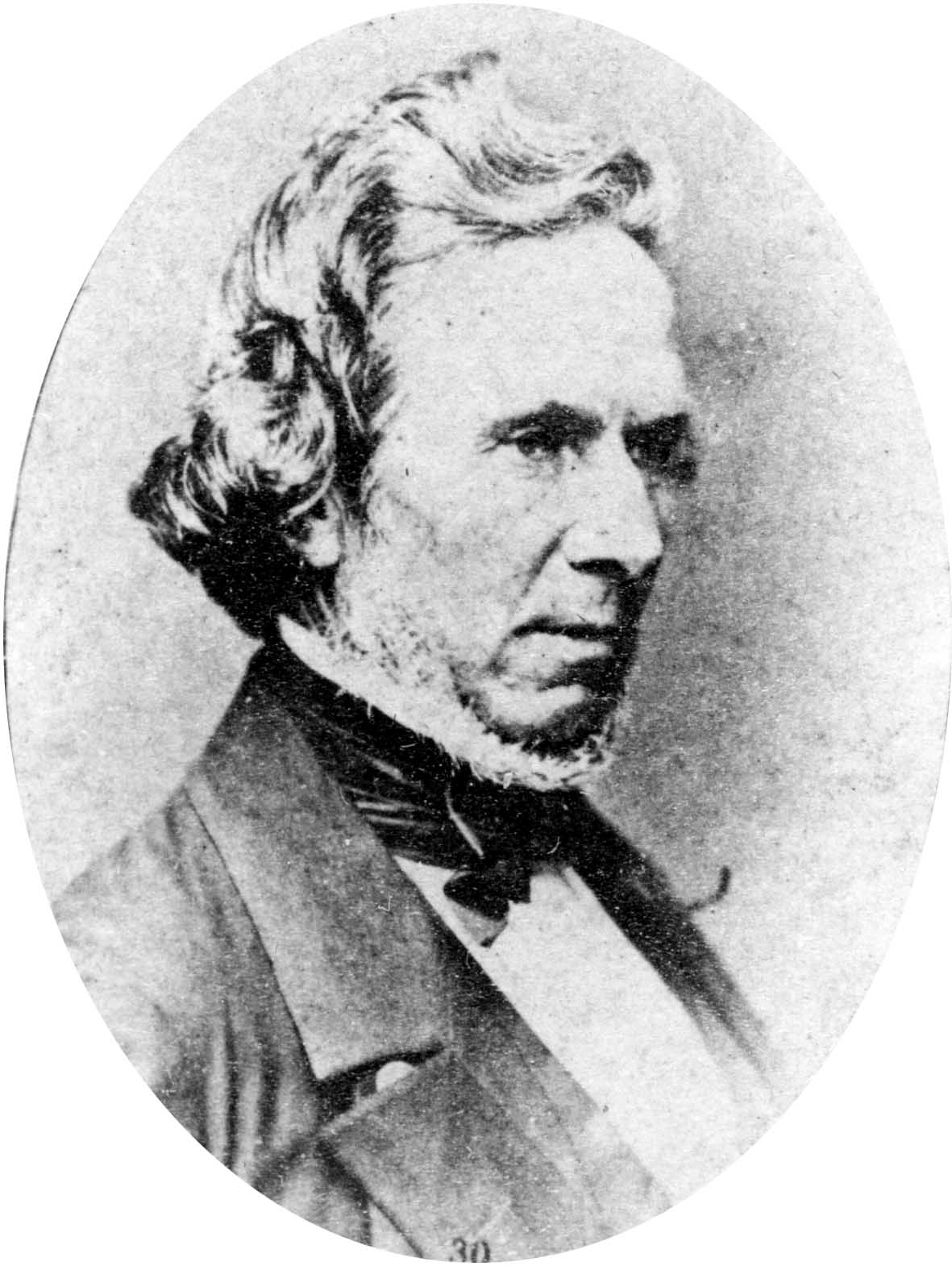
Edward Flood, photograph from New South Wales Parliamentary Archives
He went into State politics. The Flood, Edward (1805–1888) entry by R. W. Rathbone in the Australian Dictionary of Biography (1972) states
Radical in politics, Flood supported William Charles Wentworth in the 1843 election for the Legislative Council but later broke with him. An opponent of renewed transportation, he employed two convicts from the Hashemy but later denied it. In 1850 he suggested abolishing governorships, perhaps because his refusal to toady to 'autocrats' had brought him into conflict with Sir Charles FitzRoy. In 1851-56 Flood represented the North-Eastern Boroughs in the Legislative Council and belonged to the native-born faction. His political friendship with James Martin and Henry Parkes began before responsible government. In 1856-57 Flood held the North-Eastern Boroughs in the Legislative Assembly and supported Charles Cowper and John Robertson. In 1858-59 he represented the South Riding of Cumberland and Canterbury in 1859-60. On 1 October 1859 he became Cowper's secretary for public works but the government fell on the 26th. In a poem, 'Conscience and Flood', in the Southern Cross he was savagely accused by William Forster of being 'bought by place and pay' and of treachery to his friends. In return Flood was a fiery critic of Forster's government until he resigned from parliament on 13 January 1860. In 1861 Flood joined the committees of the Society for the Suppression of Cattle-Stealing and the Agricultural Society of New South Wales.
In pastoral affairs Flood was conservative and complained to Parkes that 'we are now quite at the Mercy of the Labouring Classes'. Flood's landholdings are somewhat obscure but by 1851 he seems to have held runs in the Clarence River district, over 650,000 acres (263,049 ha) on the Lower Darling in addition to Narrandera and runs in the Lachlan district. In the late 1840s, probably with inside knowledge, he offered high tenders for leases on the Lachlan held by James Tyson who had to buy them back for a large sum. By 1866 Flood had sold most of his runs in the Riverina but had acquired twenty-five other runs in New South Wales, one in partnership with Tyson. With Samuel Gordon he held runs of nearly 800 square miles (207200 ha) on the Maranoa and Warrego Rivers in Queensland. By 1871 he held thirty-one runs in New South Wales and with partners eighteen in Queensland; he was also sole owner of Gowrie station (Charleville). In 1875-76 he sold a 'large amount of property' but still held Narrandera, Quambone, Nimben and other runs. In the 1860s Flood built the Blackwall wool stores on Circular Quay and set up a wool-pressing business in Sydney. He also built the first flour-mill on the Murrumbidgee at Gundagai. He was a director of four insurance companies, chairman of the Queensland Steam Navigation Co., a trustee of the Savings Bank of New South Wales and later a director of two mining companies.
A long life and lots of activities are shown in the tributes that followed his death. However he was known as a hard headed businessman who would lavish expensive 'gifts' on those in his favour and left his wife to die in poverty.
His will favours only one of his children - his first born son Edward seems to have acquired one of the larger pastoral tracts long before his death, but all else are left with a small token only with two sons of Frederick Oatley favoured with a third share each of a rather large estate. Some historians have attributed this to a 'liaison' with Jane Oatley, wife of Frederick in the years preceding his death and hers, stating he lived with her and her children 'for a long time' prior to her death and her two sons unduly influenced him. Both would have been in their 70's while this was going on and he was in his 80's when he passed away. On the obverse of the 'liaison' claim, it is the Oatley home the teacher of their female children in her dotage, 'Madame Dubost', who once owned a Girls School in Elizabeth street, leaves from on her passing away in the decade prior to the affair happening and Frederick did serve on Woollahra Council up until a month prior to his wife's death, perhaps retiring to look after her in a final illness - so kindness is indicated, and a willingness to look after others in their senior years:
On the 18th instant, at the residence of Frederick Oatley, Esq., Sandy Knowe, Woollahra, Madame Dubost, in the 71st year of her age. Family Notices (1869, February 20). Empire (Sydney, NSW : 1850 - 1875), p. 1. Retrieved from http://nla.gov.au/nla.news-article60832121
FUNERAL.—The Friends of the late Madame DUBOST are respectfully invited to attend her Funeral TO-MORROW (Saturday) AFTERNOON, at half-past 2 o'clock ; to move from the residence of Fredk. Oatley, Esq., Ocean-street, Woollahra, at the above hour precisely. C. KINSELA and SON, Undertakers, Sussex-st Family Notices (1869, February 19). The Sydney Morning Herald (NSW : 1842 - 1954), p. 8. Retrieved from http://nla.gov.au/nla.news-article13188184
One of those named in Edward's Will, a son of Frederick and Jane, Ernest Edward Allan Oatley, was also advertising for business from the Edward Flood wool stores down on the harbour from 1878,
WANTED, Volunteer Land Orders ; highest price guaranteed, E. Oatley, Blackwall Stores, Cir. Q. Advertising (1878, February 11). The Sydney Morning Herald (NSW : 1842 - 1954), p. 1. Retrieved from http://nla.gov.au/nla.news-article13407539
Although risque elements are reported by some, it may simply be kindness for someone with whom a lifelong association had already been formed. Edward was also serving at State level of politics during the reported years of an affair and although the times of then did not report such matters on the scale we see today when a politician is doing the wrong thing by the good wife, there would certainly be some indication of a 'whiff of a scandal' by at least one thread in the papers of the day if something obvious was going on. Kindness would decree that it was actually kindness itself that was going on - which does not excuse his apparent abandonment to poverty of his wife
The late Mr. Edward Flood, M.L.C.
In the death of Edward Flood, which was announced in our yesterday's issue, a striking figure has passed away from the people of New South Wales. Many personal attributes made him from the first a man to be singled out from the crowd. His tall, upright form and handsome face bore the stamp of frankness, energy and resolution, and the actions of his whole life exemplified those sterling qualities.
For fully three-score years Edward Flood was identified with the community by various important undertakings, and by a uniform course of honorable conduct. In early life he carried on the business of a builder, and his transactions were extensive. Many of the buildings erected by him still remain to bear testimony to the honest, durable character of his work. But in the course of time he engaged in pastoral pursuits, and during the last 30 years his operations in this field of activity were extensive. While thus actively employed in looking after his own private affairs, Mr. Flood took upon himself his full share in the public life of the country.
When Sydney was first incorporated he was elected one of the aldermen, and more than 40 years ago he became Mayor of the city, the duties of which office he performed to the general satisfaction of the citizens. In the early political struggles of the colony Mr. Flood was an active supporter of Mr. Wentworth, and throughout his life he was the friend and adviser of the late Sir James Martin. In taking part in political movements he was one of those who " left no stone unturned " to serve the cause be espoused. His time and his money were given freely to whatever he took in hand and his fidelity to men and principles was unfailing. As an illustration of this feature of his character, he took up the election of the present Premier Sir Henry Parkes) when the latter was first returned for Sydney in 1854, and he was among the most active of his sup-porters on that occasion, and continued his firm political adherent unto the last. The two friends spent some time together on the last Sunday before Mr. Flood's death, when the deceased went over again some of the early political struggles of this colony.
Mr. Flood was born in Pitt-street, in a house long since removed, on the east side of the street, a little north of the Post-office, on June 24, 1805. His father, Mr. Joseph Flood, is also reported to have been a man of strong character. In January, 1808, when his son Edward was not three years old, he was one of the signers of the invitation to Major Johnstone to arrest Governor Bligh. Other anecdotes are told of him which show him to have been a resolute persevering colonist. His son Edward received but scant educational advantages ; indeed, the colony at that time did not contain the means of affording a good primary education. Young Flood from his early years had to fight his own way in life. His sense of the trials he had had himself to contend against made him exacting in his view of the duty of others. He could not well understand why other men could not put forth the same energies which had been awakened and strengthened by his own struggles. The first election to the old partly nominated Council took place in 1843, when Wentworth, Bland, Richard Windeyer, Charles Cowper, Dr. Lang, C. A. Murray and other able men were returned by the newly-enfranchised people.
No man took a more earnest part on the liberal side in these elections than Mr. Flood, and henceforth he became one of the most constant and trustworthy of the band of men who fought for and secured the liberties of the country. Naturally his prominence in the political life of the time, and his indisputable services marked him out as a candidate for the Legislature; and in 1851 he was elected for the north-eastern boroughs, which included Newcastle as the principal place. During the debates on the Constitution Bill Mr. Flood steadily voted with the small band of eight or nine members, including the late Mr. Charles Cowper and Sir John B. Darvall, who opposed the more illiberal provisions of Mr. Wentworth's measure, such as the proposal to create colonial titles, the clause which made a majority of two-thirds of the new Parliament necessary to any alteration of the Act, and the nominee principle in the construction of the Upper House. From this time Mr. Flood modified his support of Mr. Wentworth, and in the Assembly elected under the new Constitution in 1856 he took his place with the Liberal party led by Mr. Charles Cowper, as opposed to the party led by Mr. Stuart Alexander Donaldson.
For some years he successfully represented the North-Eastern boroughs, South Cumberland and Canterbury, giving close attention to his Parliamentary duties and regularly voting with his political friends. Mr. Flood was the first Minister for Works after the office was made a separate department in 1859, but the Ministry went out of office shortly after his appointment, and he never afterwards accepted office. Some time after his retirement from the Assembly, Sir Henry Parkes offered to recommend Mr. Flood for appointment to the Upper House, but at that time he declined on account of the pressure of his private occupations. A few years later he accepted a seat at the hands of the same Minister. In consequence of the extent of his private engagements of late years, Mr. Flood was perhaps better known to the last generation than to the present ; but he belonged to a body of men who in days long past rendered invaluable services to the cause of freedom in New South Wales. One by one they have mostly all disappeared from the scene, and no one more forcibly connects the days of Wentworth and Bland with our own than Edward Flood. In those latter days, before the advent of responsible government, there was a higher and more patriotic public spirit in the land than is anywhere seen at the present time. The power and patronage were in the hands of irresponsible rulers appointed in Westminster, and every man of ability and liberal instincts united in opposition to the existing state of things. With the full possession of our freedom under the Constitution, small grounds of difference separated us into parties, not always with worthy aims. Mr. Flood was an actor in both periods of our political history and worthily he did his part in both. Mr. Flood has left a large family, and it is understood that he died the possessor of large wealth. The funeral takes place this afternoon at Waverley Cemetery. The cortege will leave the deceased's late residence, Devonshire and Elizabeth streets, at half-past 2 o'clock. THE LATE MR. EDWARD FLOOD, M.L.C. (1888, September 11). The Daily Telegraph (Sydney, NSW : 1883 - 1930), p. 5. Retrieved from http://nla.gov.au/nla.news-article235696752
A Worthy Colonist.
THE LATE MR. EDWARD FLOOD, M.L.C.
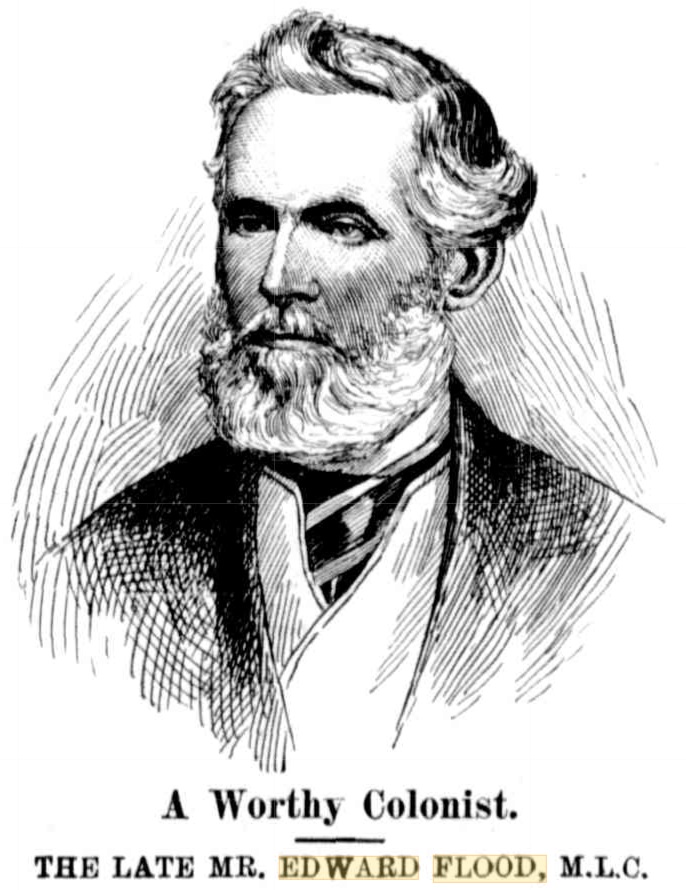
Mr. Edward Flood, an account of whose death appeared in the obituary column of last week's TOWN AND COUNTRY JOURNAL, was born in Pitt-street, Sydney, in June 24, 1805, in a house which stood a little to the north of where the General Post-office now stands, but which has long since made way for more pretentious buildings. His father, Mr. Joseph Flood, was one of those who, in January, 1808, signed the invitation to Major Johnstone to arrest Governor Bligh. He was a man of strong and resolute character; and his son Edward resembled him in this respect. Young Edward had but little chance of gaining a good education. There were no public schools at that time; and very little attention was paid to primary education. Young Flood had to earn his own living at an early age as a carpenter; and, by perseverance and industry, he rose from the condition of a workman to that of an employer of labor. He became a builder and contractor; and many of the old buildings of Sydney, erected by him, could be pointed out as examples of the substantial manner in which this class of work was carried out forty years ago.
He entered into pastoral pursuits, and took up country in various parts of New South Wales, and near Charleville (Queensland), over a quarter of a century ago. He was an advocate for constitutional government, and took an active part in the first election of members to the old partly nominated Council in 1843, when Dr. Lang, Charles Cowper, Wentworth, Bland, Murray, Windeyer, and other able men were returned.
In 1851 Mr. Flood was himself elected for the North-eastern Boroughs, of which Newcastle was the principal. Mr. Flood joined the liberal party, and fought hard for constitutional rights, and strongly opposed such provisions in Wentworth's Constitution Bill as the proposal to create colonial titles, a nominee Upper House, the necessity for a two-thirds majority for an alteration of the Act, and other illiberal measures. In 1856 he was elected under the new Constitution, and took his place in the House with the liberal party, led by Charles Cowper. For some years he represented the North-eastern Boroughs, South Cumberland, and Canterbury; and on his retirement he was offered a seat in the Legislative Council by Sir Henry Parkes, but declined on account of the pressure of his private business. He found time amid his other numerous engagements to take an active part in the foundation of the Sydney Mechanics' School of Arts, and in otherwise advancing the interests of the colonists. He was Mayor of Sydney forty years ago.
Mr. Flood was appointed Minister of Works in the Cowper Administration of 1859, but held office for only about a month, when the Government went out of office. In October, 1879, he was nominated a member of the Legislative Council; and he held that position until he died. He was regular in his attendance, and took a quiet and unobtrusive, but interested, part in the discussions on all subjects affecting the interests of the country, until the last two years, when his failing health caused him to be frequently absent from his place in the House. He has left three daughters and five sons, all married but one. He built the block of stores at the Circular Quay, known as the Waterloo Stores, and established the wool-pressing business in Sydney. He passed the last few months of his life very quietly in his residence at the corner of Elizabeth and Devonshire streets, Sydney. A Worthy Colonist. (1888, September 22). Australian Town and Country Journal (Sydney, NSW : 1870 - 1907), p. 28. Retrieved from http://nla.gov.au/nla.news-article71102540
In the Supreme Court of New South Wales.
ECCLESIASTICAL JURISDICTION.
In the will of The Honorable Edward Flood, late of Sydney, in the Colony of New South Wales, a Member of the Legislative Council of the said Colony, deceased.
NOTICE is hereby given that, after the expiration of fourteen days from the publication hereof in the New South Wales Government Gazette, application will be made to this Honorable. Court, in its Ecclesiastical Jurisdiction, that probate of the last will and testament of the above-named deceased may be granted to Joseph Washington Flood, of Sydney, in the Colony of New South Wales, Barrister-at-law, Ernest Edward Allen Oatley, of Sydney aforesaid, auctioneer, Frederick Augustus Oatley, and Charles Oliver, also of Sydney, aforesaid, Esquires, the executors and trustees in the said will named.—Dated this 13th day of September, A.D. 1888.
HOLDSWORTH & EVANS, Proctors for the said Executors, 115, Pitt-street, Sydney.
In the Supreme Court of New South Wales. ECCLESIASTICAL JURISDICTION. (1888, September 14). New South Wales Government Gazette (Sydney, NSW : 1832 - 1900), p. 6526. Retrieved from http://nla.gov.au/nla.news-article219881927
Some records state the rest of the family objected to this Will, however by 1890 it went through, unchanged:
THE WILL OF THE LATE HON. EDWARD FLOOD
In the Equity Court this afternoon, before his Honor Mr. Justice Owen, the will case of Flood v Flood was called on. Dr. Coglilan, who appeared for the plaintiff, stated that the defendants had withdrawn their statement of defence, and that a settlement had been come to. His Honor granted a decree in favour of the plaintiff. His Honor then granted probate in the will of the late Hon Edward Flood for an amount under £500,000. The trustees are Messrs. Joseph Washington Flood, Edward Ernest Allen Oatley, Frederick Augustus Oatley, and Charles Nicholson Jewell Oliver. We are informed that the bequests under the will, a list of which was recently published in the Star, will be paid over shortly. THE WILL OF THE LATE HON. E. FLOOD. (1888, November 21). The Australian Star (Sydney, NSW : 1887 - 1909), p. 6 (FIRST EDITION). Retrieved from http://nla.gov.au/nla.news-article228418804
THE HON. E. FLOOD'S WILL.
Under the will of the late Hon. A. Flood, M.L A., the following bequests are made:-
F. A. Oatley, £500 per annum while trustees.
Charlotte Louisa Flood, £200 per annum in lieu of present £150, Elizabeth Reid, £200 per annum for life. Australia John Flood, £200 per annum upon condition that he does not reside upon estate of deceased.
Walter Flood, £200 per annum. Jessie Ann Newman, £2500.
Frederika Mary Roberts, £1000. Florence Broughton, £1000.
Editha Constance McKenny, £1000. Charlotte Elizabeth Burrowes, £500. Agnes Gilder, £500. W. Neill, £1000.
Mrs Robert Hill, £500.
Fanny Fitzwilliam Hill, £500.
C. Oliver (late Under-Secretary for Lands), £500 as trustee.
Rev. John Hargrave, £500
Charles Edward Flood, £300. George Les. Wilson, £200. Henry Ainge, £150.
Wilhelmina Falconer, £100.
Sydney Bethel Union, £250.
Industrial Blind Institution, Boomerang street, £250.
Destitute Children's Asylum, Randwick, £250.
Benevolent Society of New South Wales, £250.
Prince Alfred Hospital, £250. St. Vincent's Hospital, £250 Dubbo Hospital, £250.
Narrandera Hospital, £250. Glen Innes Hospital, £250.
Growie (Queensland) Hospital, £250.
All the residue to Joseph Washington Flood, Edwin Earnest Allan Oatley, and F. Oatley equally. We understand that the residuary legatees will get about £150,000 each. THE HON. E. FLOOD'S WILL. (1888, December 1). Wagga Wagga Advertiser (NSW : 1875 - 1910), p. 2. Retrieved from http://nla.gov.au/nla.news-article101951267
In the Supreme Court of New South Wales, ECCLESIASTICAL JURISDICTION.
In the will of the Honorable Edward Flood, late of Sydney, in the Colony of New South Wales, a Member of the Legislative Council of the said Colony, deceased.
NOTICE is hereby given that all creditors and other persons having any debt or claim upon or affecting the estate of the Honorable Edward Flood, the abovenamed deceased, who died on or about the 9th day of September, 1888, and probate of whose will was granted by the Supreme Court of New South Wales, in its Ecclesiastical Jurisdiction, on the 23rd day of December, 1888, to Joseph Washington Flood, Edwin Ernest Allen Oatley, Frederick Augustus Oatley, and Charles Nicholson Jewel Oliver, the Executors appointed in and by the said will are hereby required to Bend in particulars of their claims to the said Frederick Augustus Oatley, Number 123, Bathurst-street, Sydney aforesaid, or to the undersigned, Messieurs Holdsworth & Evans, their proctors, on or before the 2nd day of July next, at the expiration of which time the said Joseph Washington Flood, Edwin Ernest Allen Oatley, Frederick Augustus Oatley, and Charles Nicholson Jewel Oliver will proceed-to distribute the assets of the said deceased among the parties entitled thereto, having regard, to the debts and claims of which they shall then have had notice ; and the said Joseph Washington Flood, Edwin Ernest Allen Oatley, Frederick Augustus Oatley, and Charles Nicholson Jewel Oliver will not be liable for the assets so distributed to any person of whose debt, or claim they shall not have had notice at the time of such distribution.
HOLDSWORTH & EVANS, Proctors for the said Executors, 75, Pitt-street, Sydney. In the Supreme Court of New South Wales. ECCLESIASTICAL JURISDICTION. (1890, May 20). New South Wales Government Gazette (Sydney, NSW : 1832 - 1900), p. 3996. Retrieved from http://nla.gov.au/nla.news-article219920376
Charles Nicholson Jewel Oliver (1848-1920), civil servant, was born on 24 April 1848 in Hobart Town, son of Thomas Jewell Oliver, civil servant, and his wife Phoebe, née Nicholson. He was educated by Rev. David Boyd before moving in 1857 with his family to Sydney, where he attended the academies of Alfred Cane and Rev. Robert Boag. When 15 Oliver started work with the law stationer William Hemming. On 27 March 1866 he joined the Department of Lands as a junior clerk in the occupation of lands office. After rapid promotion he became inspector of lands offices in 1877 and acting under-secretary of lands in July 1880. Confirmed in office on 7 November, he prepared Sir John Robertson's unsuccessful crown lands bill of 1882 and J. S. Farnell's Crown Lands Act of 1884 for which W. B. Dalley commended him. At the Wesleyan parsonage, Benalla, Victoria, he married Selina Phoebe Pigott on 24 August 1887.
When Sir Henry Parkes handed over day to day control of the colony's railways to a commission of three in 1888, it was considered that a proven senior civil servant was needed. A somewhat reluctant Oliver was appointed third commissioner under Chief Commissioner E. M. G. Eddyand W. M. Fehon. A heavy programme of upgrading facilities and rolling stock was undertaken and the expansion of the system continued. Oliver's administrative abilities and wide experience of the colony contributed to the commissioners' achievements, made in the face of considerable hostility and obstruction, much of it directed against Eddy. It was Oliver who persuaded him not to resign in January 1895.
Upon Eddy's death in 1897 Oliver, with the concurrence of Fehon, became chief commissioner and David Kirkcaldie was appointed third commissioner. In April-December 1900 Oliver visited North America and Europe to negotiate the supply of electrical appliances and attended the International Railway Congress. In Sydney, meeting the same animosity as Eddy, he allowed himself to become isolated and 'impatient of opposition'. The picture of the chief commissioner eating his sandwiches at his desk, as he had done throughout his career, while his two colleagues lunched at their club, is illuminating, while his desire to have the same informal power as Eddy aggravated matters.
The growing difficulties resulted in the 1906 royal commission on railway administration. E. W. Knox, in his minority report before resigning, vindicated Oliver's opposition to the Western Collieries' Association contracts, and described as 'fatal to all rule, to all authority' the provision in the Railways Act that allowed two commissioners to set aside the opinion of the chief commissioner. However the other royal commissioners made Oliver the scapegoat for 'the inharmonious relations' between the railway commissioners. Next April the three-man commission was abolished and Oliver's long public service ended: both his 'opponents' Fehon and Kirkcaldie expressed disapproval of his going, and its manner.
In his youth Oliver had been a successful oarsman and a first-class cricketer who played regularly for New South Wales in 1865-74. From 1882 he was a trustee and was sometime chairman of the Sydney Cricket Ground. In 1896 he visited Norfolk Island in H.M.S. Royalist to report privately on the 'reign of misrule' there to the secretary for lands (Sir) Joseph Carruthers. He was a member of the Union Club from 1899.
A photograph of Oliver later in life shows heavy, dark eyebrows, a handlebar moustache and pointed beard. He became involved in various business interests in his retirement when for some years he was chairman of the Electric Light and Power Supply Corporation Ltd. Oliver died of heart disease at his Manly home on 14 June 1920 and was buried in the Anglican section of Rookwood cemetery. His wife and two of their four daughters survived him.
BY J. D. Walker, 'Oliver, Charles Nicholson Jewel (1848–1920)', Australian Dictionary of Biography, National Centre of Biography, Australian National University, http://adb.anu.edu.au/biography/oliver-charles-nicholson-jewel-7902/text13741, published first in hardcopy 1988
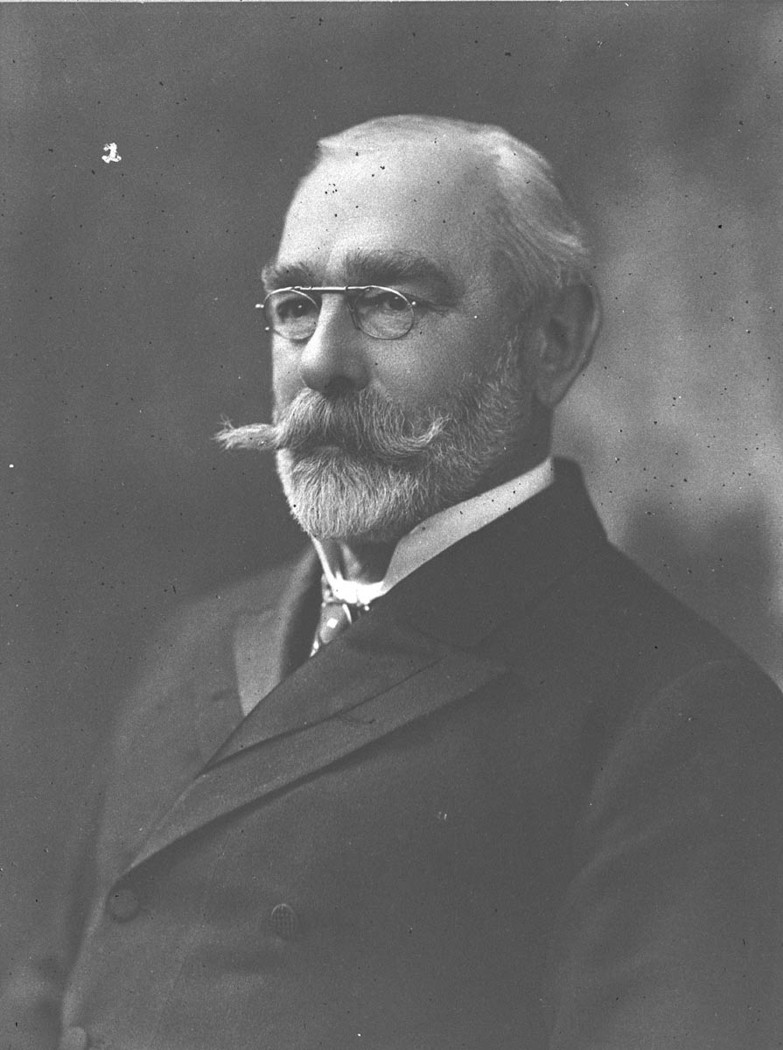
Charles Nicholson Jewel Oliver (1848-1920), by unknown photographer, 1913, courtesy State Library of New South Wales, Image No.: GPO 1 - 17211
Some of the land holdings then bequeathed to the family and Oatley men:
Primary Application - Joseph Washington Flood & Frederick Augustus Oatley Parts Land in Parish Bankstown County Cumberland Volume 1066 Folios 180 & 181 1863 - 1892
Primary Application - Joseph Washington Flood, Frederick Augustus Oatley, Edwin Ernest Allen Oatley, Charles Nicholsen & Jewel Oliver Part Land on Cooks River Tempe in Parish Petersham County Cumberland Volume 952 Folios 222 & 224
1863 – 1889
Primary Application - The Honourable Edward Flood 10 acres at Little Coogee in Parish Alexandria County Cumberland Volume 590 Folio 96 1881 - 1882
Primary Application - Honourable Edward Flood 20 acres 1 roods 22 perches in Parish Alexandria County Cumberland Volume 753 Folio 118 1863 - 1885
Primary Application - Frederick Oatley 16 acres 3 3/4 perches at Parramatta Road & Flood Street Leichhardt in Parish Petersham County Cumberland Volume 977 Folio 106 1863 - 1890
Primary Application - Edward Flood 6 acres 111/2 perches in Brighton Estate Parish Liberty Plains Volume 588 Folio 112 - 1863 - 1882
Edward's wife death notice does not include the word so often used then, 'beloved'. Also notable is that when her son Joseph Washington Flood died his mother is listed as 'unknown', indicating his wife, whom he married in 1877, did not know who his mother was or who his birth mother is was in dispute. Family records state he was the son of Edward and Charlotte. No record of him being born in NSW appears in NSW Births, Death Marriage records. However, his elder brother and wife lose a son of the same name when that boy is just a baby. Charlotte's Death Notice:
FLOOD.-May 5, at Islington Cottage, Macdonald Town, Charlotte, wife of Edward Flood, aged 73 years. Family Notices (1879, May 6). The Sydney Morning Herald (NSW : 1842 - 1954), p. 1. Retrieved from http://nla.gov.au/nla.news-article13433999
Charlotte's creditors went to court to satisfy debts after her death. The following Notice is interesting as they must have known who her husband was in allowing her to accrue debt and address her next of kin, without naming him, in seeking payment for:
In the Supreme Court of New South Wales.
ECCLESIASTICAL JURISDICTION.
Victoria, by the Grace of God, of the United Kingdom of Great Britain and Ireland, Queen, Defender of the Faith, &c., &c.
To the next of kin of Charlotte Flood, late of Macdonald Town, near Sydney, in the Colony of New South Wales, married woman, deceased, intestate.
Greeting ;
WHEREAS it hath been represented to us, in our Supreme Court of New South Wales, that Charlotte Flood, late of Macdonald Town, near Sydney, in the said Colony, married woman, departed this life on or about the fifth day of May last past, intestate, having at the time of her death goods, chattels, and credits, in the said Colony, we do therefore hereby peremptorily cite you, and each of you, to appear personally, or by your proctor, before our said Court, at the Court House, in King-street, Sydney, on the twenty-sixth day of December, one thousand eight hundred and seventy-nine, at the hour of eleven o'clock in the forenoon, and there to abide, if occasion shall require, during the sitting of the said Court, and then and there to accept or refuse letters of administration of all and singular, the goods, chattels, and credits of the said deceased, or otherwise to show sufficient cause, if you or either of you have or know any, why the same should not be committed to William Farmer, John Pope, William Seaward, and George Fitzgerald, trading as "Farmer and Company," of the City of Sydney, in the said Colony, drapers, as creditors of the said deceased.
Witness, the Honorable Sir James Martin, Knight Companion of the Bath, our Chief Justice of our said Court, at Sydney, this ninth day of December, a.d. 1879.
T. M. SLATTERY,
Prothonotary. Gannon and M'Laughlin, Proctors, Temple Court. King-street. ECCLESIASTICAL JURISDICTION. (1879, December 12). New South Wales Government Gazette (Sydney, NSW : 1832 - 1900), p. 5508. Retrieved from http://nla.gov.au/nla.news-article223125247
His daughter, named after her mother, Charlotte Louisa, seems to have been left to flounder as well during the 1870's:
[Notice of Compulsory Sequestration.]
In the Supreme Court of New South Wales. (11,558)
IN INSOLVENCY.
In the matter of the petition of Samuel Bennett, of George street, Sydney, in the Colony of New South Wales, wholesale and retail grocer, praying that the estate of Charlotte Louisa Flood, of Randwick, near Sydney aforesaid, may be sequestrated for the benefit of her creditors according to law.
WHEREAS, on the petition of Samuel Bennett, of George-street, Sydney wholesale and retail grocer, the estate of Charlotte Louisa Flood, the abovenamed insolvent, was, on the nineteenth day of June, A.D. one thousand eight hundred and seventy-three, by order of His Honor the Chief Commissioner of Insolvent Estates for the Colony of New South Wales, placed under sequestration until the same should by sentence of His Honor be adjudged to be sequestrated for the benefit of the creditors of the said Charlotte Louisa Flood, or the said petition be discharged according to law: And His Honor did appoint Thursday, the third day of July, one thousand eight hundred and seventy-three, for the said Charlotte Louisa Flood to appear before him to show cause why her estate should not by such sentence be adjudged to be so sequestrated : His Honor did, at the same time, appoint John Piper Mackenzie, Esquire, of Sydney, one of the Official Assignees of Insolvent Estates within the said Colony, to be Official Assignee of this estate.—Dated at Sydney, this 19th day of June, A.D. 1873.
ARTHUR HENRY, Registrar in Insolvency. IN INSOLVENCY. (1873, June 20). New South Wales Government Gazette (Sydney, NSW : 1832 - 1900), p. 1723. Retrieved from http://nla.gov.au/nla.news-article223100876
FLOOD.—April 3, at Prospect, Charlotte Louise Flood, aged 50.
THE FRIENDS of Miss CHARLOTTE L. FLOOD are respectfully invited to attend her Funeral; to move from her Sister's (Mrs. T. Mulholland's) residence, Prospect, THIS (Friday) AFTERNOON, at 3.30, for the Church of England Cemetery, Prospect. WHITE and MET-CALFE, Undertakers, Church-street, Parramatta.
THE FRIENDS of Mrs. P. MULLHOLLAND are respectfully invited to the Funeral of her dearly beloved SISTER Charlotte L. Flood; to move from her late residence, Prospect, at 3.30, THIS DAY, Friday, for the Church of England Cemetery, Prospect. WHITE and METCALFE, Undertakers, Church-street, Parramatta
THE FRIENDS of Mr. T. W. MULHOLLAND are respectfully invited to attend the Funeral of CHARLOTTE L. FLOOD; to move from her late residence, Prospect, THIS (Friday) AFTERNOON, at 3.30 p.m., for the Church of England Cemetery, Prospect. WHITE and METCALFE, Undertakers, Church-street, Parramatta. Family Notices (1890, April 4). The Sydney Morning Herald (NSW : 1842 - 1954), p. 12. Retrieved from http://nla.gov.au/nla.news-article28278560
Her mother and father passed away in 1852:
On the 3rd instant, at her late residence, Cook's River Road, Elizabeth, the beloved wife of Mr. Reuben Hannam, in the 62nd year of her age. Family Notices (1852, February 5). The Sydney Morning Herald (NSW : 1842 - 1954), p. 3. Retrieved from http://nla.gov.au/nla.news-article12934095
After a short illness, on the 14th instant, at his late residence, Cook River, Mr. Reuben Hannam, an old and respected colonist, in his 73rd year. FUNERAL.—The friends of the late Mr. REUBEN HANNAM are respectfully requested to attend his Funeral, which will take place on Friday next, the 17th instant, at two o'clock. His remains will be moved from his late residence, Cook River, to the Campertown [sic] Cemetery, at the hour above mentioned precisely.
No circulars will be issued.
HENRY THOMAS, Undertaker, 7137 King-street West. Family Notices (1852, December 16). The Sydney Morning Herald (NSW : 1842 - 1954), p. 3. Retrieved from http://nla.gov.au/nla.news-article28643573
Reuben and Elizabeth Hannam had more children - all born in Australia. When David, Charlotte's brother who came out on the Northampton, died in 1872, it is apparent that a son of Edward's brother Thomas Flood has married a daughter of David Hannam:
MARRIAGES
FLOOD-HANNAM - On the 14th June, by special license, at St. James' Church, by the Rev. G. H. Moreton, George Edward, third son of Thomas Flood, Esq., to Sarah Jane, fifth daughter of David Hannam, Esq., Sydney. No cards. Family Notices (1866, June 16). Empire (Sydney, NSW : 1850 - 1875), p. 1. Retrieved from http://nla.gov.au/nla.news-article60597568
FUNERALS.
THE FRIENDS of G. E. FLOOD are invited to attend the Funeral of his deceased FATHER-IN-LAW, Mr. David Hannam, sen.; to move from his late residence, Arncliff, Cook's River, THIS (Saturday) AFTERNOON.
THE FRIENDS of the late Mr. DAVID HANNAM, senior, are invited to attend his Funeral ; to move from his late residence, Cook's River, THIS (Saturday) AFTERNOON, at 2 o'clock, and proceed to Rocky Point Cemetery. J. and G. SHYING and CO., Undertakers, 719, George-street ; 60, Riley-street, Woolloomooloo, late Hill's, 120, South Head Road, near Palmer-street.
THE FRIENDS of Messrs. REUBEN, JOHN, DAVID, and JAMES HANNAM are invited to attend the Funeral of their late beloved FATHER, David ; to move from his late residence, Cook's River, THIS (Saturday) AFTERNOON, at 2 o'clock, and proceed to Rocky Point Cemetery. J. and G. SHYING and CO., Undertakers, 60, Riley-street, Woolloomooloo, late Hill's ; 120, South Head Road, near Palmer-st, ; 719, George-st. S. Family Notices (1872, September 7). The Sydney Morning Herald (NSW : 1842 - 1954), p. 18. Retrieved from http://nla.gov.au/nla.news-article13263199
Joseph's Elder brother and Sister - a few insights:
MARRIED. On the 26th January, at St. Paul's Church, by the Reverend W. H. Walsh, Edward, second son of Edward Flood, Esq., M.L.A., to Eliza, second daughter of John McIntosh, Esq., of Redfern. Family Notices (1857, February 2). Empire (Sydney, NSW : 1850 - 1875), p. 4. Retrieved from http://nla.gov.au/nla.news-article60276143
FLOOD-On the 31st August, at the residence of Edward Flood, Esq., Botany-street, the wife of Mr Edward Flood, Junior, of a son. Family Notices (1861, September 3). Empire (Sydney, NSW : 1850 - 1875), p. 1. Retrieved from http://nla.gov.au/nla.news-article60486453
On the 22nd instant, at the residence of Edward Flood, Esq., Botany-street, Surry Hills, Joseph Washington, the infant son of Mr. Edward Flood, jun., aged eight months and three weeks. Family Notices (1862, May 24). The Sydney Morning Herald (NSW : 1842 - 1954), p. 1. Retrieved from http://nla.gov.au/nla.news-article13229143
Birth: FLOOD JOSEPH W 1912/1861 Parents: EDWARD ELIZA SYDNEY
NOTICE is hereby given that the partnership which has for sometime past been carried on by the Honorable Edward Flood and Edward Flood, the younger, under the name of Edward Flood & Company, in the Bligh District, in the Colony of New South Wales, in the business of graziers and sheep farmers, on the stations known as Quambone and Berida, was this day dissolved by mutual consent.—As witness our hands this fifteenth day of November, one thousand eight hundred and eighty-six.
EDWD. FLOOD.
Witness to the signature of the Honorable Edwd. Flood,— William Neill.
EDWARD FLOOD, June. Witness to the signature of Edward Flood, the younger,— James Linton Waddell, Quambone. 8484 5s. NOTICE is hereby given that the partnership which has for sometime past been carried on by the Honorable Edward Flood (1886, December 3). New South Wales Government Gazette (Sydney, NSW : 1832 - 1900), p. 8302. Retrieved from http://nla.gov.au/nla.news-article223780844
Edward Flood's first born child - Elizabeth, second and first Marriage Notices:
MARRIED.
By special licence, on the 3rd April, at Yass, by the Rev. C. F. Brigstocke, James Peter, Esq., youngest son of William Peter, Esq., J.P., Glasgow, to Elizabeth, eldest daughter of E. Flood, Esq., J.P., Sydney. Family Notices (1850, April 10). The Sydney Morning Herald (NSW : 1842 - 1954), p. 4. Retrieved from http://nla.gov.au/nla.news-article12916990
Children with first husband: William Peter (1851–1896), James Peter (1853–1854) Charlotte Elizabeth Peter (1855–) and:
On the 30th March, at Warandarra [sic], near Wagga Wagga, the wife of James Peter, Esq., of a daughter. Family Notices (1857, April 9). The Sydney Morning Herald (NSW : 1842 - 1954), p. 9. Retrieved from http://nla.gov.au/nla.news-article12993936
James Peter, her husband, died in 1857, just months after the above daughter was born:
DEATHS. On 9th September, near Berrembed, the station of John Lupton, Esq., James Peter, Esq., late of Narrandarai, Murrumbidgee. The unfortunate gentleman was accidentally drowned on his way from his late residence, Narrandarai [sic], to Wagga Wagga, whither he was proceeding on a visit to his relatives. Family Notices (1857, October 27). Empire (Sydney, NSW : 1850 - 1875), p. 4. Retrieved from http://nla.gov.au/nla.news-article60263922
On the 21st January, 1862, at St. James' Church, Piccadilly, by the Venerable William Hale Hale, M.A., Archdeacon of London, Master of the Charterhouse, Reginald Bligh, eldest son of Dr. Read, 1, Guildford-place, Russell-square, to Elizabeth, widow of the late James Peter, Esq., of Sydney, New South Wales, eldest daughter of Edward Flood, Esq., late Minister for Works,Sydney. Family Notices (1862, March 18). The Sydney Morning Herald (NSW : 1842 - 1954), p. 1. Retrieved from http://nla.gov.au/nla.news-article13225992
Died 13 June 1893 (Age 67) - NSW BDM's Records: 12570/1893 READ ELIZABETH Parents: EDWARD CHARLOTTE Registered at RANDWICK
READ.— June 16, at her residence, The Firs, Coogee, Elizabeth Read, aged 67 years.
THE FUNERAL of the late Mrs. ELIZABETH READ will leave her late residence, The Firs, Belmore-road, Coogee Bay, THIS (Saturday) AFTERNOON, at half-past 2 o'clock, to family vault Randwick Cemetery. CHARLES KINSELA, 116 Oxford-street; and 765 George- street. Telephone, 992. Family Notices (1893, June 17). The Sydney Morning Herald (NSW : 1842 - 1954), p. 16. Retrieved from http://nla.gov.au/nla.news-article13923204
BIRTHS. FLOOD.—April 14, at Carrabea, the wife of Edward Flood, jun., of a son. Family Notices (1876, May 1). The Sydney Morning Herald (NSW : 1842 - 1954), p. 1. Retrieved from http://nla.gov.au/nla.news-article28398750
Joseph Washington Flood and Florence Adelaide Suttor were married in 1877:
FLOOD— SUTTOR.- July 21, at Holy Trinity Church, Wattle Flat, by the Rev. Arthur R. Blackett, M.A., Incumbent of Kelso, Joseph Washington, youngest son of Edward Flood, Esq., Sydney, to Florence Adelaide, third daughter of John Bligh Suttor, Esq., Wyagdon, Bathurst. Family Notices (1877, July 31). Evening News (Sydney, NSW : 1869 - 1931), p. 2. Retrieved from http://nla.gov.au/nla.news-article108199442
John Bligh Suttor (1809-1886) was a large-scale pastoralist, represented East Macquarie in the Legislative Assembly in 1867-72 and was a member of the Legislative Council in 1881-86. He was a son of George Suttor (1774- 1859) brother of William Henry Suttor (1805-1877), pastoralist and politician, was born on 12 December 1805 at Baulkham Hills, New South Wales, and third son of George Suttor and his wife Sarah Maria, née Dobinson. He was educated by his parents and an assigned convict.
In 1822 William became overseer of his father's 320-acre (130 ha) grant at Brucedale, Peel, taking it over in 1834, and by September 1838 was managing his father's 10,020 acres (4055 ha) and occupying his own 3344 (1353 ha) acres. In the 1840s these properties were let to Irish tenants. In 1845 with his father he bought Alloway Bank from John Piper and in 1852 Cangoura, an adjoining 5000 acres (2024 ha). In 1843 he had formed stations at Walandra, Lachlan River, and Beau Desert, Logan River (Moreton Bay); by 1865 he occupied over 600,000 acres (242,814 ha) on the lower Lachlan, Darling, Macquarie and Bogan rivers. He also served in the NSW Government.
ROXBURGH
89 Trustees of Mrs. W. B. Suttor, formerly Miss S. C. Suttor, Six hundred and forty acres, parish un-named, at Clear Creek Promised by Sir Ralph Darling, on 17th February, 1830 ; and possession authorised on the 6th September, 1830, as a marriage portion. Quit-rent £5 6s 8d sterling, per annum, commencing 1st January, 1838. Government Gazette. (1836, August 23). The Sydney Gazette and New South Wales Advertiser (NSW : 1803 - 1842), p. 4. Retrieved from http://nla.gov.au/nla.news-article2206175
John Bligh Suttor's Obituary states:
On the 27th May another old colonist was taken from us in the person of the person of John Bligh Suttor, M.L.C. He was a brother of the late Mr. George H. Suttor, of Bathurst, and uncle of the Hon. William Henry Suttor, M.L.C., and Hon. Francis Bathurst Suttor, Post-Master-General. For some years he represented the electorate of East Macquarie in the Legislative Assembly, and up to the time of his death was a member of the Legislative Council. OBITUARY. (1886, June 10). The Sydney Morning Herald (NSW : 1842 - 1954), p. 13. Retrieved from http://nla.gov.au/nla.news-article13634806
Joseph and Florence had two girls, Florence Hylda, born 1878 and registered at Bathurst and Olive Agnes, born 1879, birth registered at Hill End. Olive married Harley Lord Hixson in 1900. Florence married Percy Owens. Joseph passed away before the girls weddings. When his death is recorded his mother is listed as 'unknown'.
He did, however, get to give away the sister of his wife:
A FASHIONABLE WEDDING.
A very pretty wedding was celebrated on Tuesday, 25th ult., at St. John's, Darlinghurst, when Mr. William Charles, second son of the late Mr. William Rose, of Fig Tree Point, Balmain, married Miss Agnes Irene Suttor, fifth daughter of the late Hon. J. Bligh Suttor, of Wyagdon, Bathurst. The Church was beautifully decorated with ivy and chrysanthemums by the girl friends of the bride, and the ceremony was performed by the Rev. Arthur Pain, B.A. The bride was given away by her brother-in-law, Mr. J. W. Flood, from whose house she was married. The bridal gown was of ivory white satin, with Watteau train, with full frills falling over largely puffed sleeves. A long tulle veil fell in graceful folds almost to the ground. The bride carried a beautiful shower bouquet of choice white flowers. Mr. Charles Rose acted as best man. The bride was accompanied by four bridesmaids, Miss Helen Mackenzie occupying the place of honor, followed by the Misses Hylda and Olive Flood, and Miss Dorothy Suttor, all four her neices. They were most becomingly attired in ivory figured grenadine with handsome brocaded sashes to match, and wore picture hats trimmed with ribbon and pink roses. The pretty pink posies, which completed these charming costumes, were presented by tbc bridegroom. The voluntary and wedding march were sympathetically played by Mr. Gordon Burnside.
At the conclusion of the ceremony the bridal party returned to Fairhaven, Potts' Point, where the cake was cut, and Mrs. Flood entertained a large number of relations and intimate friends at the wedding dejeuner. The bride looked particularly well in her going away gown of brown check tweed with Zouave jacket of brown velvet, sleeves and trimming to match. This becoming costume was stylishly completed by a brown straw hat, trimmed with velvet and some beautiful ostrich feathers. Among the guests were recognised : Hon. W. H. and Mrs. Suttor, the Misses Suttor, Hon. F. B. and Mrs. F. B. Suttor, Miss Mary Suttor, Judge and Mrs. Wilkinson, Miss Lucy Wilkinson, Mr. and Mrs. Hirst, Mr. and Mrs. Walter Tucker, Mr. and Mrs. J. Dowling Brown, the Misses Dowling Brown, Mr. and Mrs. Le Brun Brown, Mrs. Herbert Suttor, Colonel and Mrs. Douglas M'Kenzie, Miss Douglas M'Kenzie, Captain and Mrs. Turner, Captain and Mrs. Bloomfield, Mr. and Mrs. Walter Hall, Mr. and Mrs. Horace Suttor, Mr. and Mrs. Consett Stephen, Mr. and Mrs. W. Mitchell, Dr. and Mrs. Carruthers, Mr. and Mrs. Murdock, Mr. and Mrs. John Manning, Mr. and Mrs. Holdship, Mr. and Mrs. Hamilton Salusbury, Rev. Mr. and Mrs. Pain, Mr. and Mrs. Sandeman Collum, Mr. Hale, Mr. Gordon Burnside, Capt. Leo, N.S.W. Cavalry, Mr. Rolleston, Mr. Hay Clark and others. A FASHIONABLE WEDDING. (1893, April 27). National Advocate (Bathurst, NSW : 1889 - 1954), p. 2. Retrieved from http://nla.gov.au/nla.news-article156675857
FLOOD.—January 17, 1896, at his residence, Woodside, Strathfield, J.W. Flood, barrister-at-law, youngest son of the late Hon Edward Flood MLC. For funeral notice see evening papers.
FLOOD.—January 17, at his residence, Woodside, Boulevard, Strathfield, J.W. Flood. Family Notices (1896, January 18). The Sydney Morning Herald (NSW : 1842 - 1954), p. 1. Retrieved from http://nla.gov.au/nla.news-article14033518
FLOOD. — The Funeral of the late J. W. FLOOD will move from Woodside. Boulevard. Strathlield, TOMORROVV (SUNDAY), at half-past 12 o'clock, for Strathlield station, en route to the Mortuary station, Resetit-st., leaving there at half-past 1 o'clock for Waverley Cemetery. Mrs. F. KIRBY and SON, Undertakers. Family Notices (1896, January 18). The Daily Telegraph (Sydney, NSW : 1883 - 1930), p. 8. Retrieved from http://nla.gov.au/nla.news-article238698769
THE LATE MR. FLOOD.
The remains of the late Mr. J. W. Flood were interred yesterday afternoon in the 'Warerley Cemetery in the presence .of a large number of relatives and friends. The cortege proceeded by train from Strathfield to Sydney, and the cemetery was reached at 3 p.m., the Bar. George North. Ash, of Neutral Bay, conducting the service.
Among those present were-: Messrs. W. H. Suttor, F. B. Suttor, J. B. Suttor, B. A. Oatley, H. Holdship, Wynne Robertson. H. Hale, H. Clarke, T. Garrett, J. Williams, P. E. Allt, F. O. Marks, Macpherson, Salusbury, W.F. Mitchell, Consett Stephen, Stanley Griffiths, Dudley Mackenzie, Keith Mackenzie, T. Simpson, A. B. Simpson, Dr. Murray Oram, Colonel Mackenzie, Major Dodd, and Major Broughton. A number of beautiful floral wreaths were supplied by friends and relatives. Funerals. (1896, January 20). Evening News (Sydney, NSW : 1869 - 1931), p. 3. Retrieved from http://nla.gov.au/nla.news-article109920495
Death of Mr. J. W. Flood.
The interment has taken place in the Waverley Cemetery of the remains of the late Mr. J. W. Flood, in the presence of a large number of friends and relations, including Hons. W. H. and F. B. Suttor, Messrs. J. B. Suttor, Cousett Stephen, Salusbury, Colonel MacKenzie and many others. The deceased gentleman was a son of the late Mr. Edward Flood, of Sydney, and resided for a short time in this city. He once contested East Macquarie in the protectionist interest, and was married to a daughter of the late Mr. J. B. Suttor, of Wyagdon. The deceased gentleman was well known in the metropolis, and was very highly esteemed for his many excellent qualities. Death of Mr. J. W. Flood. (1896, January 22). National Advocate (Bathurst, NSW : 1889 - 1954), p. 3. Retrieved from http://nla.gov.au/nla.news-article156716439
FLOOD JOSEPH H 1383/1896 parents: EDWARD UNKNOWN CANTERBURY - NSW BDM's Records.
WEDDINGS.
OWEN—FLOOD.
The marriage of Captain Percy Owen, Head quarters' Staff New South Wales military forces, second son of Colonel Owen, of Bellambi, Wollongong, to Miss Florence Hylda Flood, eldest daughter of the late Mr. J. W. Flood and Mrs. Flood, of Atherfield, Darling Point, took place at St. Mark's Church, Darling Point, on the 10th instant.
The building had been prettily decorated with palms and flowers, a floral arch having been erected over the chancel steps, from the centre of which hung red and white horseshoe, Captain Owen's regimental colours. The bride, who was given away by her uncle, Mr. F. B. Suttor, wore a dress of white satin brocade, made with a court train, and much trimmed with white chiffon and sprays of orange blossom. Her wreath of the same flowers was covered with a long tulle veil, and she wore a necklace of aqua marines, and carried a shower bouquet, both given her by the bridegroom. The two bridesmaids — Miss Olive Flood and Miss Helen Mackenzie — were dressed alike in white muslin dresses trimmed with 'Valenciennes lace and insertion, worn with large white hats trimmed with feathers, chiffon, and ribbon, their shower bouquets being of waterlilies and roses tied with white satin ribbon. Their gold bangles were given by the bridegroom, whose best man was Captain Dangar. The service was performed by the Rev. Canon Kemmis, assisted by the Rev. C. North Ash. The wedding reception took place at Petty's Hotel, refreshments being served in the drawing room, where the wedding presents were also displayed. The guests included Major-General and Mrs. French, Colonel and Mrs. Owen, Miss Owen, Colonel and Mrs. Douglas Mackenzie, the Misses Mackenzie, Mr. and Mrs. F. B. Suttor, Miss Suttor, Mrs. Burdekin, Miss Eadith Walker, Mrs. J. Suttor, Lieutenant-Colonel and Mrs. Savage, Lieutenant Colonel and Mrs. H. P. Airey, Major and Mrs. Bridges, Mr. and Mrs. Forbes- Angus, Dr. and Mrs. Murray Oram, Major and Mrs. Lee, Canon and Mrs. Kemmis, the Rev. C. North-Ash and Mrs. North Ash, Colonel and Mrs. Campbell Williams, Mrs. Andrew Loughnan and Miss Maclean, Miss Pringle, Miss L. Marks, Major Baynes, Captain Kyngdon, Captain Antill, Mr. H. Owen, Mr. Neville Dangar, Mr. R. Suttor, Mr. D. Mackenzie, Mr. Hale, and Mr. Hixson. Captain and Mrs. Owen intend spending their honeymoon in Tasmania. The bride's travelling dress was of navy blue braided with black, worn with a white satin vest, a straw hat trimmed with pink roses and bows of chine ribbon. Weddings. (1897, February 20). The Sydney Mail and New South Wales Advertiser (NSW : 1871 - 1912), p. 400. Retrieved from http://nla.gov.au/nla.news-article163790842
FASHIONABLE WEDDING.
A wedding took place at St. Mark's, Darling Point, yesterday between Capt. Percy Owen, of the Headquartered Staff, second son of Lieutenant- Colonel and Mrs. Owen, of Beliambi, Illawarra, and Miss Florence Hylda Flood, eldest daughter of the late Mr. J. W. Flood. The youthful bride, who was given away by, the Hon. F. B. Suttor, looked charmingly fresh and girlish in her simply-made gown of ivory brocade, with a girdle and chatelaine of orange blossoms, a coronet of the same bridal flowers, and a plain tulle veil. She was attended by her sister, Miss Olive Flood; and her cousin, Miss Helen Douglas Mackenzie, both of whom wore pretty frocks of white 'muslin, made with, tucked bodices, trimmed with lace, white I satin sashes, and hats of white fancy straw with white satin ribbons and feathers. The ceremony was performed by the Rev. Canon Kemmis and the Rev. G. North-Ash. Captain Dangar acted as best man, and Lieutenant AntilI as groomsman.
A reception was afterwards held at Petty's Hotel by Mrs. J. W. Flood, the guests who accepted her invitation including Major-General and Mrs. French, Lieutenant-Colonel, Mrs. and Miss Owen, Captain C. Owen, Mrs. J. Bligh Suttor, Colonel, Mrs. and the Misses Douglas Mackenzie, Mr. and Mrs. Harry Owen, Mr. and Mrs. F. A. Oatley, Colonel and Mrs. Savage, Colonel and Mrs. Sawe, Canon and Mrs. Kemmis, Mr. and Mrs. W. EL Suttor, Mr. and Mrs. F. B. Suttor, Major and Mrs. Bridges, Colonel and Mrs. Williams, Major and Mrs. Lee, the Rev. G. and Mrs. North-Ash, Major and Miss Dodds, Mr. and Mrs. W. R. Hall, Miss Eadith Walker, Mr. and Mrs. Sydney Burdekin, Dr. and Mrs. Murray Oram, Dr. and Mrs. Brady, Mr. Salisbury, Captain Morris, and Colonel and Mrs. H. P. Airey.
The bride's travelling dress was a very becoming and smartly-cut navy blue cloth, the skirt and bodice braided a la militaire In the exact design used on the staff uniform, a ...pale pink roses. The happy couple left by the express for Melbourne, where the honeymoon will be spent. The presents were numerous, the majority being exceedingly handsome and costly. Amongst .them were gifts from the staff officers of the N.S.W. Corps of Engineers (beautiful cabinet set), Lieut-Colonel and Mrs. Owen, patents of the bridegroom (afternoon tea set), Lieut-Colonel P. B. Walker, Mr. John M'Pherson (set of ivory brushes and combs), Miss Eadith Walker (silver cream and sugar basins and claret jug), Mr. and Mrs. Smythe Willis, Captain Dangar (cake basket), Mr. A. J. Dodds (set of cake trays), Miss Sydney Burdekin (set of brushes dressed in China and gold), Miss Pringle (afternoon tea set), Major Baines (set of decanters), Mr. W. M. M'Farlane (silver cigarette holder), Mr. and Mrs. F. B. Suttor (set of silver fish and fruit knives and forks), Mr. and Mrs. W. R. Hall (silver pen, pencil, and penknife), Major-General French (toilet set), Colonel and Mrs. Savage, Dr. and Mrs. Chisholm, Dr. Murray Oram, Mrs. John and Miss Marks, Messrs. Dudley and Keith M'Kenzie, Mr. and Mrs. F. A. Oatley (set of silver tea spoons), Mr. Harry Owen (silver mounted flask, and silver buckle and set of buttons), Lieut.-Colonel Airey, Mr. and Mrs. Consett Stephen (silver puff box), Captain Dangar, and Mr. and Mrs. Le B. Brown. Social. (1897, February 11). Evening News (Sydney, NSW : 1869 - 1931), p. 5. Retrieved from http://nla.gov.au/nla.news-article108863140
As seen above, Olive Agnes married Harley Lord Hixson in 1900 and they had one child, Colleen, prior to his passing away. One item seems to show Olive inherited lands from her father:
In the Supreme Court of New South Wales,
Sheriff's Office, Sydney,
3lst August, 1909.
Roberta v. Shadler, A. C.
ON Tuesday, the fifth clay of October, 1909, at noon, unlets the writ of fieri facias herein be previously satisfied, the sheriff will cause to be sold by public auction, at the Sales Room, Supreme Court, Sydney,—All the right, title, and interest of Adolph Caesar Shadier, the defendant herein, of, in, and to all that the equity of redemption and all other the right, title, and interest (if any) of him the said defendant, of, in, and to,—
All that piece of land situated at Abbotsford, Municipality of Drummoyne, parish of Concord, and County of Cumberland, being the residue of the land comprised in Certificate of Title, date 11th July, 1907, volume 1,700, folio 215.
Subject to a mortgage to the City Mutual Life Assurance Society, dated 30th January, 1907, No. 478,870.
Also, mortgage to John Stinson, of Sydney, solicitor, dated 10th February, 1907, No. 472,871. And also of, in, and to all that piece of land situated in the Municipality of North Sydney, parish of Willoughby, and county of Cumberland, being plot of the land compiled in Certificate of Title, dated 5th September, 1908, volume 1905, folio 98, and being the residue of the land in the said certificate, excluding thereout the land comprised in transfer, dated 24th August, 1909, to Frederick Horatio Jones, of North Sydney, hotel keeper.
The last-mentioned land is subject to the balance of principal and interest due on a certain mortgage to John McPherson, of Sydney, gentleman, and Harley Lord Hickson, No. 4K 1,402.
Also subject to a claim under a caveat, No. 483,329, on behalf of J. A. Smith, claiming a mortgagee under a mortgage dated the 0th January, 1908.
Terms, Cash.
C. F. B. MAYBURY, Sheriff. Laurence, Son, & Macdonald, Plaintiff's Attorney, 122, Pitt-street, Sydney. Roberts v. Shadler, A. C. (1909, September 1). Government Gazette of the State of New South Wales (Sydney, NSW : 1901 - 2001), p. 4893. Retrieved from http://nla.gov.au/nla.news-article226578242
J. W. Flood's wife Florence remarried:
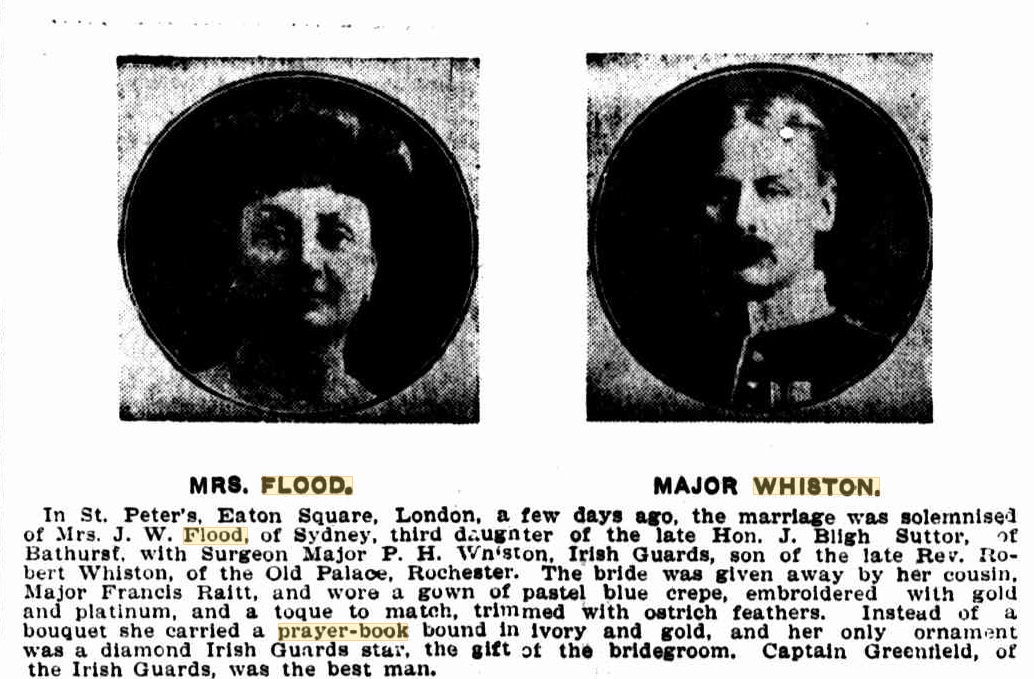
No title (1907, April 14). The Sunday Sun (Sydney, NSW : 1903 - 1910), p. 6. Retrieved from http://nla.gov.au/nla.news-article227142364
Seven years later she is still living in London when women from here and living there are busy helping out with WWI needs. Her daughter is shown as being with her there (see above). A decade on the next generation is emabrking on their great adventures:
Many old friends of the Eaton family in Wagga and the surrounding district will read with interest the account of the marriage in London of Hugh Seymour Eaton, only son of the late Horace Eaton, a grandson of the late Mr. Henry Eaton and of Sir Hugh Dixson, of Abergeldie, Summer Hill, Sydney. When Mrs. Eaton was in Sydney visiting relatives she was accompanied by her son; who possessed a very charming personality and made friends wherever he – went.
The pretty bride of the wedding, which was solemnised by the Rev. Prebendary Gough of the Holy Trinity Church, Brompton, London, was also Australian-born and both parents claimed Sydney as their birthplace. Mrs. H. Eaton was Miss Colleen Harley Hickson, only daughter of the late Mr. Harley Hickson (a brother of Mesdames G. and J. O. Fairfax), her mother being a Miss Flood, a member the Suttor family, Bathurst. The bride, who looked very dainty in her bridal robes of white, and silver tissue and rare old lace, was given away by her step-grandfather, Colonel Philip Whiston, and was attended by Miss Isabel Maclagan (another Australian) daughter of Major-General and Mrs. Maclagan, and granddaughter of the late Major General French. It is like a glimpse of Sydney twenty years ago; to meet so many of one's girlhood friends; remarked one of the guests at the reception, held at the Hans Crescent Hotel by Colonel, and Mrs. Percy Owen (aunt of the bride). Many handsome presents, as well as cables, were received from Australian friends at home and abroad by the young couple, who spent their honeymoon in Scotland. SOCIAL GOSSIP. (1924, December 27). Daily Advertiser (Wagga Wagga, NSW : 1911 - 1954), p. 1. Retrieved from http://nla.gov.au/nla.news-article143338936
Two girls, both only children, were recently married in London, whose mothers (both dead) were well known in Sydney two decades ago. One was the daughter of Mr. Edward Rundle, whose wife was Miss Nellie Hill. Lady Cooper and Mrs. Macnamara were sisters of Mrs. Rundle. Lady Cooper brought up her niece. The other girl was Miss Colleen Harley Hickson, whose mother was Miss Olive Flood. Her aunt, Mrs. Percy Owen, gave the wedding reception. Her step-grandfather, Colonel Philip Winstone, gave her away, and Miss Isobel Maclagan was bridesmaid. Miss Maclagan's mother was the eldest daughter of General French. When Colonel Winstone married Mrs. Flood, General French was commanding the troops here. Miss Hickson (who is a niece of Mrs. Geoffrey and Mrs. J. O. Fairfax, on her father's side) married the son of Mr. Seymour Eaton, of Wagga Wagga, who is grandson of Sir Hugh Dixson. AN IDLE WOMAN'S DIARY (1925, January 2). Newcastle Morning Herald and Miners' Advocate (NSW : 1876 - 1954), p. 3. Retrieved from http://nla.gov.au/nla.news-article137482100
Worth keeping in this record is a trip another Suttor took on the Hawkesbury during the years the Flood-Suttor-Oatley families came into possession of that lovely peninsula of Pittwater:
A summer trip on the Hawkesbury river
(BY W. H. SUTTOR, M.L.C.)
There is a common idea that what may be seen at any time is not worth going to look at. I fear this applies to the trip which, on Tuesday last, December 22, I had the exceeding great pleasure to perform. It is one which is occasionally done by the steamship General Gordon. She goes both ways generally, leaving Hawkesbury on Saturday and returning from Windsor on the following Tuesday. Just now the round trip, as it is called, is particularly enjoyable, for the country is in its greenest garb, and one gets away from the heat and dust of the city and its ways, and under the shady covering of the General Gordon sails down the river whose early settlement is among the most interesting of the historical records of Australia.
In August, 1783, Governor Phillip and a party explored the country about what was called by him Pittwater, and some of the other arms of the bay were then examined. In the month of June, 1789, another party, consisting of the Governor, Captain Collins, Captain Johnstone, Mr. Surgeon White, Captain Hunter and some others, again made an expedition for further discovery. Boats were sent round to meet them at Pittwater. It was during this year that the small-pox in a most extraordinary manner broke out among the blacks at Sydney, when they died in hundreds, and on this expedition dead bodies were found in the bush, and an unfortunate black girl of about 13 years of age and a small child were found, the girl recovering from the offsets of the disease, and presented " the most miserable spectacle in the human shape I," says Hunter "ever beheld." She had a child with her about two years old, who, however, does not appear to have had the disease, as it is described as a fine little infant.
After examining again Mullet Island they then went up Mullet Creek, Mooney Mooney Creek and Cowan's Creek, and spent the night on Mullet, near Dangar's Island. The next morning they struck their tents, and proceeded in the boats to examine a point of high land which has the appearance of an island, evidently "Long Island," from which the great bridge is built which spans the river, 2912ft. in length, nearly four and a half furlongs, something over half a mile. Here they discovered evidently the opening of a largo river. They proceeded up for many miles, rowing the whole day, and in the evening camped upon a low, marshy shore. The next day they still continued their course up the river, finding good depth of water and strong tides, which they thought wore indications of a considerable river. They then reached a point where the water was scarcely brackish, and then further on to where the water was quite fresh. As their provisions wore nearly exhausted, they filled their water casks and gave up the pursuit. The general depth was found to be from three to seven fathoms, and the breadth from 300ft. to 900ft. They returned from a point about 20 miles from the entrance to Cowan's Creek.
Another expedition left Sydney on Sunday, June 28, of the same year, and after a very fatiguing march they again reached the boats at Pittwater. Proceeding up the river and having gone a little beyond the farthest point previously reached, the river was found to divide into two branches. The point previously reached must have been a short distance below Wiseman's Ferry, as the branch referred to is evidently the McDonald River. They wound up this branch a short distance, but it soon proved too narrow for the boats, and they returned to the main stream.
At seven or eight miles more the river again divided into two branches; up the new branch, the Colo, they rowed for some 13 miles. Here they saw some
natives, who tied at their approach. Again going up the main stream they reached near the junction of the Grose. Here they named the hills on either side of this valley. Those on the left bank of the Hawkesbury above the junction of the Grose River the Governor named the Camarthen Hills, and the Landsdown those on the north side of the Grose. They now found the water too shallow for the boats, and so returned. Here they found marks of high floods, upwards of 40ft. above the river bed, and high lip on the trees logs and quantities of grass weeds which had been loft by the water.
On January, 1791, the first settlers were allowed to cultivate land on the Hawkesbury ; these were James Ruse and Charles Williams and some others at about 24 miles from Parramatta. Ruse's farm can still be pointed out on the occupation of a 21r. Hannabus, and is on the South Creek. Collins says "They chose for themselves allotments of ground conveniently situated for water and not much burdened with timber, beginning with much spirit, and forming to themselves very sanguine hopes of success. At the end of the month they had been so active as to have cleared several acres, and were in some forwardness with a few huts. The natives had not given them any interruption. No diminution in the fertility of this land is noticeable since this day, upwards of 98 years ago.
However, to tell my own story, we left Sydney by the 9.5 a.in. train on Tuesday, and reached Windsor at about 11 o'clock. ; The whole country as we passed along was beautifully green, and after leaving Blacktown, the once cultivated and pretty Quaker hill is seen on the left, now a big trig station; thence onwards past Breakfast Creek, a once cultivated valley, now used as pasture land, and almost in sight of the old Blacktown aboriginal mission station, through Riverstone, where the enterprising Mr. Richards has established a large butchering establishment, and go to Mulgrave, from which point a lovely view down the river presents itself.
Arrived at Windsor, we find coaches to take us down to Pittwater, where the General Gordon and her worthy old commander Captain Murray are in waiting for us. The drive from Windsor to Pittwater is not the least enjoyable of the trip. The magnificently rich lands, the beautiful willows now at their very greenest, the brilliantly green young crops of maize glistening in the sun and spreading over hundreds of thousands of acres, the distant view of Windsor and of Richmond in their green and grassy slopes, backed up by the range of blue mountains, Mount King George, Mount Hay and Mount Tomah, overlooking all, and the view up the great precipitous valley of the Grose form a panorama not easily to be excelled for natural beauty.
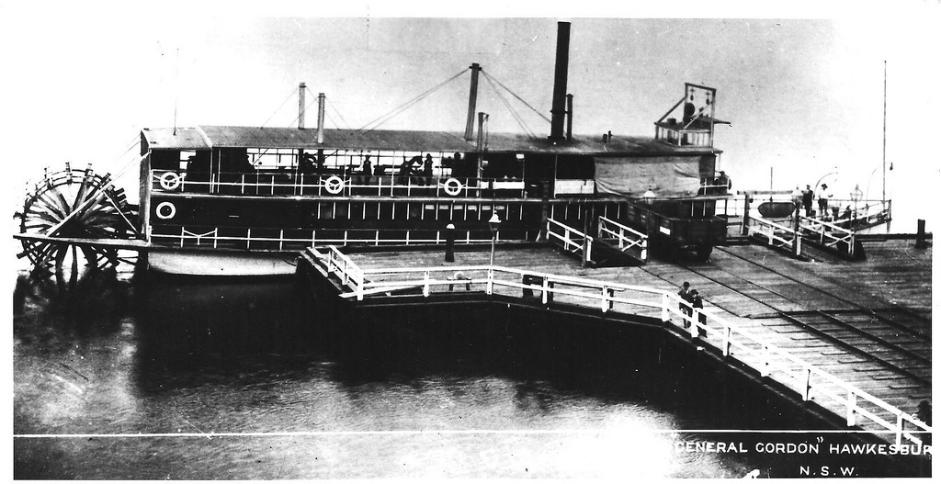
Above: Paddle steamer General Gordon on the Hawkesbury, circa 1898, built by Tom Davis at Terrigal in 1886.
Having reached the Pitt Town wharf, some five and twenty passengers only are there and take advantage of the trip. We start off punctually at 12 o'clock, some little backing and going ahead being necessary before the boat can be turned in the narrow river. However, it is accomplished at last, and we speed on our way at the rate of 10 miles an hour. Here we see marks of last June's flood high upon the banks, but the banks are so high that little of the country can be seen from the deck of the vessel. River oaks and willows line the stream, which is here some 250ft. across and 5ft. or 6ft. deep. Even here occasionally the Hawkesbury sandstone is seen on the outer bend of the elbow, the inner banks showing immense depth of rich alluvial soil. The river meanders throughout, in some places almost turns back upon itself.
In an hour's' time we pass Lower Cattai Greek, and about here are many farmhouses and orange orchards, the fresh water, clear and sparkling. On the way we pass some old raised homesteads of early Australian architectures. Newer style, I presume, has since then taken their place. At 16 miles from the starting point we pass the Lubra's Leap, a great rock rising some 70 or 80 or more feet sheer out of the water. Here tradition has it that some of the tribes escaped from their pursuers by leaping into the river and swimming across. The water under the rock is said to be 90ft. deep. Whether true or not I do not know, at all events it is just as well to believe what is told; so far romantic incidents as connected with the country are so scarce that it is just as well to accept all such tales as gospel.
The next interesting place is Sackville Reach, looking down what is perhaps one of the most beautiful of all the views on the river. It is a long straight reach with a pretty church on the left side and several farmhouses. The water here, I am told, is of great depth— in one place over 100ft. This is at the large pool at the upper end. On the right hand side the river is bound by a high sandstone range, covered, however, with vegetation. Showing out at the lower end is a commodious farmhouse built of stone perched high on the hillside. Here we are quite ready for lunch, of which, thanks to the steward of the vessel, a very good one is provided at an extremely cheap and liberal rate.
Now we run on past the Colo Junction, some 30 miles from our starting-place, and we are getting into the more decided rock-bound parts of the river. Somewhere near here, perched on a high bank, is the dwelling of a very aged couple, husband and wife, said to be respectively 90 and 80 years of age, to whom, as our worthy captain waves his handkerchief the old couple reply in the same manner. They seem to pass their time in sitting on the verandah of their little slab hut and watching the river. Poor old people, slowly waiting for the end.
As we descend further we notice that every available piece of land lit for cultivation is occupied and used for a purpose. Now and then there are fine orchards with settlers' houses nestling in the valleys under the hills. Now we pass down the Milkmaid's Reach, before we come to the M'Donald River, so-called from a fancied resemblance of a great white figure on the face of a rock, supposed to bear likeness to a milkmaid with her cow and pails, and then the M’Donald junction and Wiseman's Ferry.
Gruesome stories are told of what was done in the old days under a great rock at Wiseman's called the " Court-house," of sentences of floggings and the horrors of the old convict times. At present, however, the most interesting object at Wiseman's is the great length of electric telegraph wire stretched across the river from one side quite up to the mountain top on the other. There are eight wires ; their length I am not able to give, but it is said to be some thousands of feet. We could just detect them many feet over our heads its we passed under, projected upon small floating clouds in the sky.
Wiseman’s Ferry is 42 miles from Pitt Town, and shortly after passing we came to the salt water. The one surprising thing is the immense amount of fresh water on the river. By the river it is about 50 miles from Windsor to this point, and it is, on an average, nearly 250ft. wide and at least 6ft, deep.
After leaving Wiseman's the river widens considerably, the cultivated fiats become narrower, the sandstone cliffs are more imposing, the scenery generally much more rugged and grand, and with the exception of the small isolated cultivated spots quite in its primeval condition. The stream winds and turns about through the hills in the most circuitous manner. I amused myself taking a few sketches, which I only wish I could reproduce. In this connection, I should think a landscape painter could put in a very profitable 12 months on the river. The infinite variety of the scenery and the lower parts, more like some inland mountain lake than a river, should surely tempt many to paint its beauties.
I cannot sufficiently recommend your readers to take the trip. It is best to take it both ways, that is from Hawkesbury to Windsor, and from Windsor to Hawkesbury. In October last I took the trip up the river, and nothing could surpass the view across the rich flats at Windsor. The sun was just setting behind the western hills, a misty delicate haze softened all the outlines ; the town itself, set upon a high bank, was etherealized, the waiving cornfields, the delicate green of the willows, the patches of green lucerne, altogether made a scene replete with peace and plenty. It may be truly said of this river “age cannot wither nor custom stale its infinite variety."
I must not forget the worthy Captain Murray. He is a man who has seen many lands and many peoples; has been the first to navigate rivers in other parts of the world, the Fraser river in British Columbia, and one of the earliest navigators in our own River Murray. As he works hard at the helm all the way down the river he will keep up most interesting talk about his experiences in other parts, and is one whom it is pleasant to know. I wish for his sake his steamer was more largely patronised. We arrived at the Hawkesbury station at 7 o'clock, just as the sun was setting, having been just eight hours from the railway station at Windsor. I fear I have very inadequately described the many beauties of this river, its cultivated corn lands, its orange, apricot and peach orchards, its farmhouses nestling under the everlasting hills, its rocky precipices, its magnificent readies form a richly varied whole well worth inspecting. The evening view of the rugged ranges of the lower parts, suffused and softened in the evening sunlight, and shrouded in mellow mist, was also very pleasing. A SUMMER TRIP ON THE HAWKESBURY RIVER. (1892, January 4). The Daily Telegraph (Sydney, NSW : 1883 - 1930), p. 4. Retrieved from http://nla.gov.au/nla.news-article236047916
William Henry junior (1834-1905), pastoralist and politician, was born on 14 November 1834 at Brucedale. Educated by Dr William Woolls, at 16 he managed his father's runs, becoming an excellent bushman. By 1865 he was in partnership with his father and also occupying 64,000 acres (25,900 ha) in the Albert District. He sold these runs in the 1880s after trouble with selectors, and engaged in sheep-breeding on Curranyalpa, Budda, Tilpa and his other runs on the Darling. At the same time he entered pastoral partnerships with his brother Walter and E. U. Bowler, and with William Kite and T. C. Ashe. In July 1890 he was founding president of the Pastoralists' Union of New South Wales for some months, but by 1892 all his runs were mortgaged to the Commercial Banking Co. of Sydney.
From January 1875 to July 1879 Suttor sat for East Macquarie in the Legislative Assembly as a free trader and in 1877-78 was minister for mines in J. S. Farnell's ministry. In December 1880 he was nominated to the Legislative Council; in 1889-91 he was vice-president of the Executive Council and government representative in the council in Sir Henry Parkes's last ministry: a loyal supporter of Parkes, he never sought office, doubting his abilities and facing bankruptcy. In 1894-95 he held the same offices in (Sir) George Reid's first government.
Quiet, unassuming and genial, 'Willie' Suttor often gave public readings for charities. His contributions to the Daily Telegraph were reprinted as Australian Stories Retold and Sketches of Country Life (Bathurst, 1887); for its centenary supplement (23 January 1888) he wrote an article on the pastoral industry reprinted in Centenary of Australia (Sydney, 1888), and for the issue of 22 June 1889 on 'Early Christian missions among the Aborigines' (reprinted, Sydney, 1889). He lived at Cangoura after 1873 and until 1891 was a trustee of the Bathurst Hospital, president of the Bathurst Agricultural, Horticultural and Pastoral Association, captain in the reserve rifle company, president of the Bathurst Mechanics' School of Arts, member of the public school board, warden of Holy Trinity Church, Kelso, and member of the Anglican diocesan council.
In March 1862 Suttor had married Adelaide Agnes Henrietta Bowler (d.1920), who bore him one son and six daughters. He died in Sydney on 20 October 1905, leaving assets valued at £8102 and debts of £118,188. From: Ruth Teale, 'Suttor, John Bligh (1859–1925)', Australian Dictionary of Biography, National Centre of Biography, Australian National University, http://adb.anu.edu.au/biography/suttor-john-bligh-4937/text7733, published first in hardcopy 1976
James Oatley - Frederick And Jane Oatley And James And Frederick A. Oatley
James Oatley was one of 200 convicts transported on the ship Marquis of Wellington, August 1814. He was Convicted at Southampton Assizes for a term of life on March 7th, 1814. The Salisbury and Winchester Journal of Monday March 14 1814 p. 4, states
The following prisoners were fully convicted and received sentence of death, but have been since reprieved...James Oatley, for stealing two beds and other articles from the dwelling-house of Wm. Love Esq.
He was married in 1902, according to some records, to a Sarah Bennet. However, a daughter who died here, a half sister to his sons James and Frederick, has as her parents on her Death Certificate 'James' and 'Sophia'. Marianne/Marion Oatley (c1808-22 March 1866): died as Mrs Borrett:
BORRETT.—On the 22nd March, at her residence, Whittle's-buildings, after a long and painful illness, Mrs. Marianne Borrett, in her 57th year. Family Notices (1866, March 24). Empire (Sydney, NSW : 1850 - 1875), p. 1. Retrieved from http://nla.gov.au/nla.news-article60598022
Death Notice states mother was Sophia and she was born in 1809 or 1808: BORRETT MARION 340/1866 parents: JAMES SOPHIA SYDNEY
FUNERAL.—The Friends of JAMES and FREDERICK OATLEY, Esqs., are respectfully invited to attend the Funeral of their departed Sister, MARIANNE BORRETT ; to move from her late residence, No. 17, Washington-street, Whittle's-buildings, THIS MORNING, at 8 o'clock. THOMAS, Undertaker. Family Notices (1866, March 23). The Sydney Morning Herald (NSW : 1842 - 1954), p. 8. Retrieved from http://nla.gov.au/nla.news-article13128469
James Oatley arrived in Sydney on January 27th, 1815. James Oatley and Mary Stokes lived together in Sydney and their first child, James Jnr., was born June 17th, 1817, Frederick, on April 14th, 1819 and George in 1820. George died in 1821 as an infant.
James Snr. was a watch and clock maker prior to transportation and it is in that capacity that he was employed to build and provide the 'Town Clock' for the Hyde Park Prisoner's Barracks in 1819. His business was in George Street, opposite the site of the present Town Hall.
In 1821 Oatley received a conditional pardon from Governor Macquarie. During the 1920's he was given land grants of over 500 acres, including 300 acres near the George’s River, located in the area that later took his name. These were close to those of Edward Flood and his relatives in law, the Hannam family - see above.
The 1825 Census records:
Oatley, James, conditional pardon, Wellington, 1813, life, watchmaker, Sydney
Oatley, James, 9 born in the colony, child of above
Oatley, Frederick, 7 born in the colony, child of above
Oatley, Mary, came free, Northampton, 1814, housekeeper, Sydney
Oatley, Robert, 11, came free, Northampton, 1814, son of above
In 1828:
Oatley, James, watchmaker, George Street Sydney
Oatley, Mrs
Oatley, Robert, 14
Oatley, James 12
Oatley, Frederick 10
James Oatley was known as a kind man by many. From the year 1820 (Sydney Gazette) - a few threads;
TWENTY GUINEAS REWARD. - LOST, a GOLD WATCH, Maker's Name, Letherland, Liverpool, A. D. 1818; with Gold Chain, Seals, and Key. -Any Person bringing the same to Mr. James Oatley, Watch-maker, near the Burial Ground, Sydney, shall immediately receive the above Reward Classified Advertising (1820, April 22). The Sydney Gazette and New South Wales Advertiser (NSW : 1803 - 1842), p. 2. Retrieved from http://nla.gov.au/nla.news-article2179398
James Oatley, Keeper, Town Clock | 2 | 10 – November 1820
1821: - Mr. Thomas Oatley, Clock-keeper, Sydney, Salary to the 31st | | March | 8 | 15 | 0 - this relates to the Hyde Park Barracks clock - see above
WANTS A SITUATION-The Advertiser is a free Man, and would undertake the entire Management of a Stock Farm, being well conversant in the treatment of cattle, shearing of sheep, &c. and also experienced in agriculture ; can keep accounts, and give the most respectable reference and» security for any trust which may be confided to his charge. Application, or letter addressed to Mr. James Oatley, Watch-maker, Sydney, for J. M. will be duly and respectfully attended to.
Sydney Gazette, October 7th, 1823 William Higgins was indicted for stealing a watch from the dwelling-house of James Oatley. Guilty— 7 years transportation.
Sydney Gazette, May 26th 1825: Two soldiers were brought up charged with having in their possession a silver watch, stolen from the house of Mr. Oatley, watchmaker, in George-street, several months since ; but as it came out on evidence that the watch had been bought by one of the soldiers in the street, at Sydney, the latter end of January last, and that £2 6s. (the full price of it) had been paid at the time, the Bench discharged the parties accused, with a suitable admonition to them, and to the public in general, to be very cautious in making purchases from persons they are not acquainted with, when perhaps, in the absence of evidence to prove the fact, they might be deemed in law as the principal delinquents.
Sydney Gazette June 1834 (Claims to Grants of Land : No. 493. By James Oatley, Upper George-street, Sydney, watch and clockmaker, to land described as follows : all that dwelling-house and premises,-lying and being situate in George-street, Sydney, aforesaid, No. 53, opposite the burial ground, containing by admeasurement, in the front 33 feet, and extending backward toward the east 44 yards.
James and Mary Stokes separated and they both married; Mary to Charles Howell in 1832 (posing as a widow and calling herself Mrs Johnstone); and James Oatley to Mary Ann Bogg in 1833. Mary Stokes (as Howell), died in 1838 at the home of her husband in Brickfield Hill. NSW BDM's Records: 77/1832 V1832277 73A HOWELL CHARLES JOHNSTONE MARY JA and HOWELL MARY 2383/1838 V18382383 22 AGE 55
Mary Ann Bogg was a widow, wife of Robert Bogg whom she had married in 1926. He died in 1929 and in 1930 she mortgaged a house in Elizabeth Street, Sydney to James Oatley, for the sum of £180. They wed in September 1833.
James Oatley wrote a will in March 1837 stating:
I give and bequeath to my lawful wife MARY ANN OATLEY …, a Stone built house and Premises lying and situated in the Parish of St Lawrence, in the Town of Sydney … at the date hereof tenanted by Mr Bates. Also a Farm of Land now called “Newton” containing 40 Acres,… Also the whole of the House hold Furniture, Wearing Apparel, Plate and Books which may be on my Estate named “Snugborough” at the date of my decease.
Oatley also made bequests to his sons, but in September 1839 he made an addition to the will:
CODICIL to this the last Will …of James Oatley, of Sydney, Watchmaker….And whereas in consequence of the extreme ill conduct of my wife MARY ANN OATLEY who absconded from me about eighteen months past and is at the date hereof living in a state of adultery, I hereby revoke, cancel and make null and void a certain bequest made by me to her in the said Will, of an Estate of land called “Newton” containing forty acres…
James Oatley stated he wanted to give that land to his 'adopted son' Frederick Oatley. His full Will has been made available online by the Hurstville Historical Society and may be accessed HERE. His estate, of lands, houses, farms and his watchmakers business, was split between his sons James and Frederick with the son of Mary Stokes born at sea receiving a gift of £100 and a suit of mourning.
Capper Pass, Edward Flood (above) and Peter Louis Bernie were the witnesses to the Will.
Mary Ann had left James around March 1838, possibly to live with James F. Hulle, whom she married in 1841.
On October 8th, 1839, James Oatley died, aged about 70 and was buried at his home Snugborough at Canterbury. The presence of his body in a vault gave rise to an interesting condition governing the future sales of Snugborough. The purchaser had to agree to take over the sepulchre and its occupants.
NOTICE.
ALL Persons having Claims or Demands upon the Estate of JAMES OATLEY, Clock and Watchmaker, George-street, deceased, are requested to send in the same to Mr. Frederick OATLEY, For liquidation; and all Persons indebted to the same, are requested to settle their accounts as early as possible.
JOHN URQUHART,
Sole Executor.
George Street, opposite the Old Burying Ground. Classified Advertising (1839, November 9). The Sydney Gazette and New South Wales Advertiser (NSW : 1803 - 1842), p. 3. Retrieved from http://nla.gov.au/nla.news-article2550699
Frederick carried on the business, as he had been doing for a while according to this Notice:
To Captains, Merchants, and Others.
FREDERICK OATLEY, trusting he may hope for the continued patronage so liberally enjoyed by his Father, James Oatley deceased, begs to state that he shall carry on the Business of Chronometer and Watch and Clock Manufacturer. F. O. moreover begs to state, that as he has for many years been the sole Agent for his Father, his known punctuality and despatch may secure to him a share of public encouragement, which he will most anxiously endeavour to preserve.
FREDERICK OATLEY.
George-street, opposite the Old Burying Ground. Classified Advertising (1839, November 12). The Sydney Gazette and New South Wales Advertiser (NSW : 1803 - 1842), p. 1. Retrieved from http://nla.gov.au/nla.news-article2546971
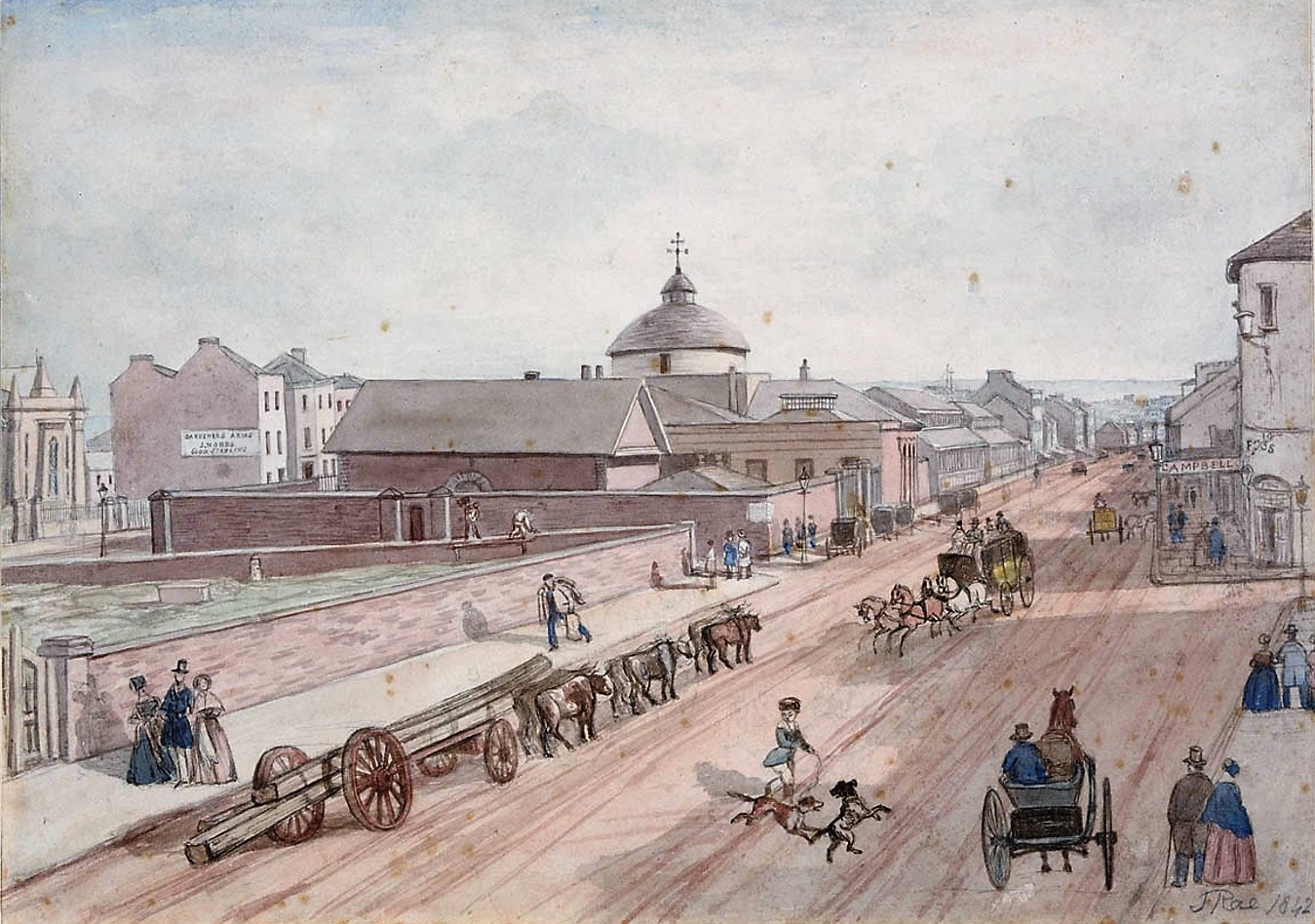
George St looking north, showing Jewish Synagogue, Police Offices, the Markets, old Burial Ground, now the site of the Town Hall, 1842 by John Rae (1813-1900) Image No.: a928368h, courtesy Dixson Galleries, State Library of New South Wales
James Oatley Jnr. was apprenticed to a coach-builder and when 30 was licensee of the Sportsman's Arms Hotel at the corner of Pitt and Goulburn Streets. He was a member of the old City Council and, when it was reconstituted as the Municipal Council in 1857, he was elected an alderman and in 1862 mayor. He was member for Canterbury in the Legislative Assembly in 1864-69. He died on 31 December 1878 at his home in Bourke Street, Woolloomooloo, and was buried at Camperdown cemetery.
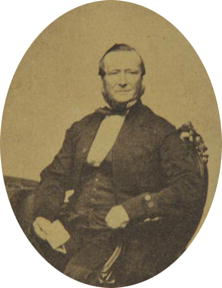
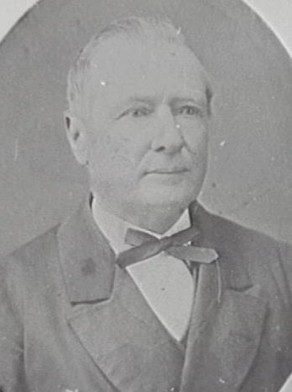
James Oatley Jnr. in 1868 and a later photo
James married Eleanor Johnson(also spelled Johnston in BDM's Records) with whom he had eight children. After Eleanor's death, James married Margaret Curtis, with whom he had one daughter.
By Special License, on Tuesday, the 1st January, by the Rev. J. McGarvie , Mr. James Oatley, Junior, to Miss Eleanor Johnson, of Sydney. Family Notices (1839, January 4). The Sydney Herald (NSW : 1831 - 1842), p. 3. Retrieved from http://nla.gov.au/nla.news-article28653556 - she died aged 43
MARRIAGE.
On the 29th September, at St. Peter's, Cook's River, by the Rev. George King, James Oatley, Esq., J.P., to Margaret, only daughter of the late Mr. Frederick J. Curtis, of Singleton. Family Notices (1870, October 5). Evening News (Sydney, NSW : 1869 - 1931), p. 2. Retrieved from http://nla.gov.au/nla.news-article107128004
He did a lot, and much can be sourced about him, but it is the other son of James Oatley Snr., Frederick, and his sons who have a direct connection with the sons who have that Rocky Point-Peninsula-Elvina connection.
Frederick Oatley ostensibly took over his father's watch and clock making business at the time of his passing, although some advertisements indicate he was employing others and renting out part of the premises. The 1844 Old Council of Sydney contract given shows he still had a hand in and that Edward Flood was still working, if behind the scenes and through influence only, on looking after the Oatleys. Frederick would soon hold a position through that same old City Council as an Inspector for Abattoirs.
He married soon after he came into his own as a 21 year old, when you were legally of age then:
MARRIED. By Special License, on Thursday last, at New Town Church, by the Reverend Mr. Steele, Mr. Frederick Oatley, of George-street, Sydney, to Miss Jane Weedon, of Parramatta Road. Family Notices (1841, February 22 - Monday). The Sydney Monitor and Commercial Advertiser (NSW : 1838 - 1841), p. 3 (MORNING). Retrieved from http://nla.gov.au/nla.news-article32188351
Jane’s parents: 1828 Census
Weedon, Thomas, 40, free by servitude, Ann, 1813, 7 years, shopkeeper, George Street Sydney
Weedom, Mary, 26, born in the colony
Weedon, Thomas, 7, born in the colony
Weedon, Jane, 5, born in the colony
Weedon, Joseph, 3, born in the colony
A few Thomas Weedon threads;
PETERSHAM PONY RACES, for Lombock and Timor Ponies only ; to come o if on Monduy, the 27th instant. Al) Ponies to be entered on or before the 24th instant, at Mr. Burt's, Queen's Wharf, or Mr. Weedon's,Parramatta Road, where particulars of the prizes, &.r., may be learned. Advertising (1841, December 23). The Sydney Herald (NSW : 1831 - 1842), p. 1. Retrieved from http://nla.gov.au/nla.news-article12872964
Town Grants in Sydney.
Deeds dated 30th November, 1840.
77. Thomas Weedon, thirteen perches TITLE DEEDS. (1841, January 9). Australasian Chronicle (Sydney, NSW : 1839 - 1843), p. 4. Retrieved from http://nla.gov.au/nla.news-article31730400
PUBLICANS' LICENSES. The following is a list of the publicans' licenses granted on Friday by the Sydney Bench: PARRAMATTA ROAD.-Rainbow Tavern, W. Toogood ; Old Cheshire Cheese, John Brown; Woolpack, Thomas M'Guiness ; Old Bay Mare, George. ; Cherry Tree, Thomas Weedon. PUBLICANS' LICENSES. (1841, May 3). The Sydney Monitor and Commercial Advertiser (NSW : 1838 - 1841), p. 2 (MORNING). Retrieved from http://nla.gov.au/nla.news-article32189082
1823;-23. Thomas Weedon, two roods fourteen perches, allotment No. 3. of section No. 23 ; bounded on the south by Thomas Horton James' allotment, north 76 degrees,' cast 414 links ; and the east by a line north degree, west 184 links; on the north by a line south 65 degrees, west 450 links to the Windsor Road ; and on the west by the Windsor Road south 22 degrees, east 91 links. This allotment was advertised for Thomas Waldon on 12th January, 1832. GRANTS OF TOWN ALLOTMENTS. (1841, January 23). The Sydney Herald (NSW : 1831 - 1842), p. 3. Retrieved from http://nla.gov.au/nla.news-article28652358
The Children of Frederick and Jane - although the Marriage Notices found in TROVE indicate a few more - Frederick Augustus and Edwin Ernest Allan, the 'Oatleys' of 'Flood & Oatley Estate' for example:
OATLEY JESSE J 1303/1850 V18501303 35 FREDERICK JANE
OATLEY HERBERT H 3343/1862 FREDERICK JANE PADDINGTON
OATLEY ALFRED W 646/1848 V1848646 33A FREDERICK JANE
OATLEY FREDERICA M 2798/1846 V18462798 32A FREDERICK JANE
OATLEY JAMES T 1022/1844 V18441022 28 FREDERICK JANE
OATLEY MARY E 2839/1854 V18542839 42B FREDERICK JANE
OATLEY FLORENCE 3041/1853 V18533041 39A FREDERICK JANE
BIRTHS. On 30th April, at her residence, Surry Hills, Mrs. Frederick Oatley, of a son. Family Notices (1856, May 14). The Sydney Morning Herald (NSW : 1842 - 1954), p. 1. Retrieved from http://nla.gov.au/nla.news-article12976628 - Frederick Augustus
SLAUGHTER HOUSES.-His Excellency the Governor has appointed Mr. Frederick Oatley, to be Inspector of Slaughter Houses and of cattle intended to be slaughtered in the Police district of Sydney. No title (1849, June 23). The Sydney Morning Herald (NSW : 1842 - 1954), p. 5. Retrieved from http://nla.gov.au/nla.news-article12902285
TO BE LET, with immediate possession, that commodious House and Premises immediately opposite the Old Burial Ground, George-street, now in the occupation of Mr. J. S. Beech. Apply to Mr. Frederick Oatley, or to the Mr, J. S. Beech, upon the premises. Advertising (1849, August 31). The Sydney Morning Herald (NSW : 1842 - 1954), p. 4. Retrieved from http://nla.gov.au/nla.news-article12902982
Frederick, alike Edward Flood, was part of the first council for one of Sydney's local areas - this time it was Woollahra and he was among those elected to the first term for that area. In this first 'election' a show of hands secured a nomination:
WOOLLAHRA MUNICIPALITY.
A public meeting of the electors of the above-named municipality was held at noon, yesterday, at the hustings in Ocean-street, for the purpose of nominating gentle-men, to fill the offices of councillors and auditors. There were about sixty persons present.
The Returning-Officer, Gerard Phillips, Esq., commenced the proceedings by reading the proclamation of bis Excellency, declaring Woollahra a municipality, and describing its boundaries. He then called upon those gentlemen who had candidates to propose to come upon the hustings.
The following gentlemen were then proposed and seconded, as fit and proper persons to fill the office of councillor :
Mr George Thornton, proposed by Mr. J. V. Gorman, seconded by Mr. Durham.
Mr. Joseph Trickett, proposed by Mr. Davis, seconded by Mr. Perry.
Mr. B. Hughes, proposed by Mr. Davis, seconded by Mr. Studd.
Mr. F. Oatley, proposed by Mr. Kilninster, seconded by Mr. Gedye.
Mr. Kingston, proposed by Mr. Seabrook, seconded by Mr. P. Brady.
Mr. R. Holdsworth, proposed by Mr. T. Bowden, seconded by Mr. W. Thomas.
Mr. Dunk, proposed by Mr. W. Thomas, seconded by Mr. Studd.
Mr. William Laidley, proposed by Mr. S. Thompson, seconded by Mr. Davis.
Mr. J. V. Gorman, proposed by Mr. Gedye, seconded by Mr. Kilminster.
Mr. Studd, proposed by Mr. Seabrook, seconded by Mr. Dunk.
Mr. T. Bowden, proposed by Mr. Dunk, seconded by Mr. W. Thomas.
Mr. William Lever, proposed by Mr. Hillman, seconded by Mr. Rasewell.
Mr. J. P. Edwards, proposed by Mr. Randall, seconded by Mr. Westland.
Mr. Lenehan, proposed by Mr. T. Bowden, seconded by Mr. Randall.
Mr. E. Salamon, proposed by Mr, Davis, seconded by Mr. Studd.
Mr. A. Toogood, proposed by Mr. Kilminster, seconded by Mr. Gorman.
Mr. Thos. Skinner, proposed by Mr. Randall, seconded by Mr. Oatley.
Mr. S. Thompson, proposed by Mr. Gorman, seconded by Mr. Davis.
Mr. J. S. Willis, proposed by Mr. S. Thompson, seconded by Mr. Studd.
Mr. Mark Dewberry, proposed by Mr. Studd, seconded by Mr. Westland.
Mr. J. Blackstone, proposed by Mr. Randall, seconded by Mr. Thompson.
Mr. John Goold, proposed by Mr. Thompson, seconded by Mr. Dunk.
The following gentlemen were then proposed and seconded as auditors :
Mr. Gedye, proposed by Mr. Seabrook, seconded by Mr. Studd.
Mr. Cane, proposed by Mr. Kilminster, seconded by Mr. Gorman.
Mr. Chizlett, proposed by Mr. S. Thompson, seconded by Mr. Davis.
Mr. M'Creagh, proposed by Mr. Seabrook, seconded by Mr. Studd.
Mr. Davis, proposed by Mr. S. Thompson, seconded by Mr. Seabrook.
The nominations having terminated, the Returning officer called for a show of hands in favour of each candidate, which, when given, he declared to the best of his knowledge to be in favour of Messrs. J. V. Gorman, S. Thompson, Joseph Trickett, Thomas Bowden, George Thornton, Frederick Oatley, A. Lenehan, A. Toogood, and James Kingston, as councillors; and Mr. Kane and Mr. Gedye as auditors. A poll being demanded by Mr. Lever, he announced that the polling would take place on Moaday next, at Edmond's public-house, at the junction of the Darling Point, Double Bay, and Paddington roads ; also at Waverley, and at Watson's Ray.
Mr. Gorman suggested that, for tho convenience of electors in the immediate vicinity of the hustings, it should be also declared a polling place.
The Returning-officer said be would consider the matter, and if it appeared necessary to do so, he would let the electors know by advertisement on Wednesday morning.
A vote of thanks to the Returning-officer was proposed by Mr. Gorman, and seconded by Mr. Bowden, which waa well responded to, after which the assemblage dispersed. WOOLLAHRA MUNICIPALITY. (1860, May 22). Empire (Sydney, NSW : 1850 - 1875), p. 8. Retrieved from http://nla.gov.au/nla.news-article60410596
When the Poll was held on Wednesday May 30th, 1860, Frederick came in with the most votes. Her served faithfully and well until a month before his wife passed away, when it it is held by local records, that he retired to look after and be with her during the last weeks of her life.
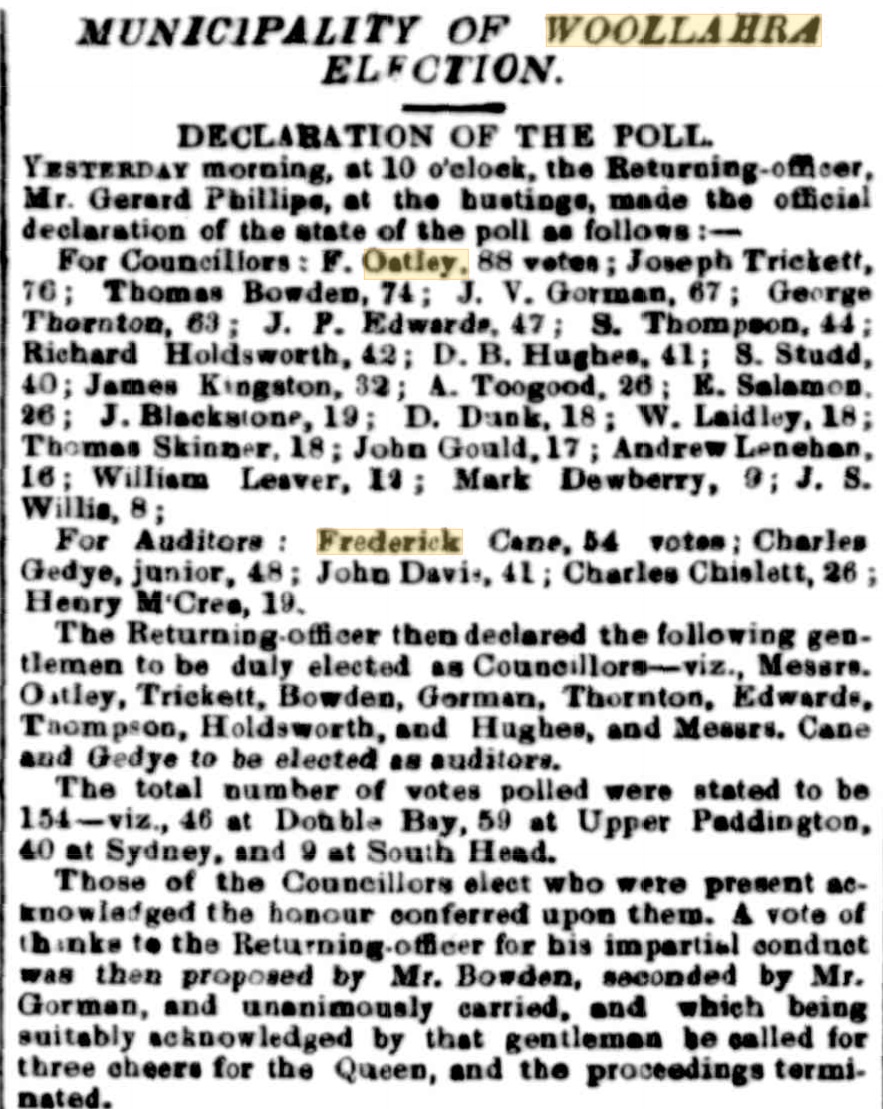
MUNICIPALITY OF WOOLLAHRA ELECTION. (1860, May 31 - Thursday). Empire (Sydney, NSW : 1850 - 1875), p. 5. Retrieved from http://nla.gov.au/nla.news-article60411034
THE CIVIC HISTORY OF WOOLLAHRA.
It is recorded that Woollahra and Paddington were gazetted on the same day, but that Woollahra had friends at Court who worked the thing so that she was placed first. The suburb was incorporated in April, 1860, in response to a petition signed by 144 residents of Upper Paddington, Darling Point, and Watson's Bay the year previously.
The first councillors were Mr. (now Hon. George) Thornton (Chairman), Messrs. J. Trickett (father of W. J. Trickett, ML C). S. Thompson, J. Gorman, Edwards, Oatley, Holdsworth. Hughes, and Bowden ; T. Weener being first Council Clerk.
There were then only about 1000 inhabitants, in the area incorporated, and the number of ratepayers about 600. SOME EASTERN SUBURBAN BUSINESS PLACES. (1900, September 1). Freeman's Journal (Sydney, NSW : 1850 - 1932), p. 16. Retrieved from http://nla.gov.au/nla.news-article111310053
In October 1860, Frederick tendered his resignation to the City Council as the Inspector of Slaughterhouses under the corporation, on account of the closing of the city slaughterhouse consequent upon the opening of the Glebe Island abattoir.
In 1861 he was appointed the Inspector of the Glebe Island facility, according to a letter published in the Herald defending the conduct of its workers. The letter is signed Frederick Oatley, Inspector of Glebe Island.
To the Editor of the Herald.
SIR,-In passing the Estimates for the Glebe Island Abbatoirs by the Assembly, on the 21st instant, your report makes several of the honorable members speak most disparaginglyof the doings at this establishment. Mr. Caldwell, it is said, "drew attention to the scenes of vice and immorality carried on, particularly on the Subbath;" while Mr. Parkes went a step further, and, according to the report, said, "that the vice and profligacy was committed by persons residents on the island." Now I am almost constantly, during the week days, present upon the island in the discharge of my duties, and I can only say that I have never observed any of the scenes of vice and immorality alluded to. The only persons resident upon the island are my assistant (Mr. Driver), the engineer Dowdall, the refreshment housekeeper, baker, and his brother, with two grooms belonging to the leasees. The whole of these persons, with the exception of Baker's brother, are married, and reside with their wives and families, and are of very respectable character. Indeed, instead of vice and immorality, the order at d decorum maintained at Glebe Island, considering the class of persons who work there, is most creditable, and worthy of praise rather than censure.
I may as well further mention that an inspector of police, with a constable, attends the island every Sunday. Upon my asking him, the inspector informed me that he has never witnessed, upon any occasion, the slightest breach of decorum or propriety.
I am, yours &c,
FREDERICK OATLEY,
Inspector of Glebe Island.
February 26th.
To the Editor of the Herald. (1861, February 26). The Sydney Morning Herald (NSW : 1842 - 1954), p. 8. Retrieved from http://nla.gov.au/nla.news-article13053312
Frederick was a parishioner at St Matthias’s Paddington, where he served for many years as a warden, and he was named in August 1874 as a trustee for land at Paddington dedicated for a Church of England School.
Mid 1868 started a whole lot of tragedy for Jane and Frederick Oatley, commecning with Janes mother passing away:
JANES parents died:
WEEDON THOMAS 2313/1869 AGE 85 YEARS DIED ST GEORGE ST GEORGE
Wife died:
WEEDON MARY 2276/1868 parents WILLIAM LETITIA PADDINGTON – nee Field
WEEDON—July 21st, at her residence, Elizabeth Cottage, Woollahra, Mary, the wife of Mr. Thomas Weedon,sen., aged 65 years. Family Notices (1868, July 25). Sydney Mail (NSW : 1860 - 1871), p. 2. Retrieved from http://nla.gov.au/nla.news-article166802326
FUNERAL.—The Friends of Mr. THOMAS WEEDON are respectfully invited to attend the funeral of his deceased wife MARY; to move from Elizabeth Cottage, Piper-street, Woollahra, THIS (Thursday) AFTERNOON, at half-past 2 o'clock precisely. THOMAS HILL, Undertaker, Burdekin-square, William-street, and Hill's Factory, Riley-street. Family Notices (1868, July 23). The Sydney Morning Herald (NSW : 1842 - 1954), p. 8. Retrieved from http://nla.gov.au/nla.news-article13169814
Later that same year:
DROWNING OF TWO BROTHERS IN THE HARBOUR.
'A VERY distressing occurrence took place in the harbour on Saturday evening, whereby two young men lost their lives. It appears that, on Saturday afternoon, Alfred Oatley and James Oatley, aged respectively nineteen and twenty-one years, sons of Mr. Frederick Oatley, of Ocean - street, Woollahra, went out on a fishing excursion. They were accompanied by a younger brother and a Mr. Ball and his son. After fishing for some time in Rose Bay, a short distance from Point Piper, and night coming on, they began, about half past 7 o'clock, to make preparations for returning home. The younger of the two unfortunate youths, in attempting to haul up the kedge, which had got entangled amongst some weeds, fell overboard, and sank almost immediately. The eldest at once jumped in after his brother, when, sad to say, ho loo sank; and neither of them it is said rose to the surface again. The oldest could swim very well, but the other could scarcely swim at all. The remainder of the party, after waiting for a short time and failing to see anything of either of the two youths, hastened to the shore, and the melancholy tidings were soon communicated to the parents; the police also were made acquainted with the occurrence. Early yesterday morning several gentlemen resident in the neighbourhood went out in boats and commenced a thorough search for the bodies; and the Water Police, on hearing of the accident, at once proceeded with two of their boats to the place where it occurred, and assisted in dragging for the missing youths. After dragging for some time in all directions the bodies were at last brought to the surface by Richard Elms, of Double Bay. The bodies were found a short distance from each other, but not far from the spot where they went down. They were taken on shore, and were then conveyed to the residence of the bereaved parents. Both youths were very much respected, and their sad and untimely fate has cast a gloom over the neighbourhood in which their parents reside. DROWNING OF TWO BROTHERS IN THE HARBOUR. (1868, November 30). The Sydney Morning Herald (NSW : 1842 - 1954), p. 5. Retrieved from http://nla.gov.au/nla.news-article13176471
Frederick Augustus Oatley, 12, stated that he was one of the party who were out fishing on Saturday last, after rowing about Rose Bay for some time they anchored the boat off Point Piper, ... THE LATE FATAL ACCIDENT IN THE HARBOUR. (1868, December 1). The Sydney Morning Herald (NSW : 1842 - 1954), p. 2. Retrieved from http://nla.gov.au/nla.news-article13176550
FATAL BOAT ACCIDENT.
TWO BROTHERS DROWNED.
A most deplorable boat accident occurred on Saturday afternoon, near Woollahra Point, Rose Bay, about one hundred yards from the shore, by which two young men were drowned. Three sons of Mr. Frederick Oatley, superintendent at the Glebe Island Abattoir, and brother to Mr. James Oatley, M.L.A., together with an elderly gentleman, named Mr. Ball, hired a skiff from Mr. S. Richardson, Double Bay, on Saturday morning, about 10 o'clock, and proceeded on a fishing excursion. They went round to Woollahra Point, Rose Bay, where they remained fishing for some time, and were about returning in the evening when the unfortunate occurrence happened. James Oatley, aged twenty years was in the act of pulling up the killick, when he by some means lost his balance and fell overboard.' It appears that he could not swim. His brother William, aged twenty-three, who was a good swimmer, immediately jumped into the water to save him. The third brother, aged about ten years, and Mr. Ball 'who were in the boat, were powerless to save, or to render assistance. William succeeded in getting to his brother James, but unfortunately the boat had drifted, some distance from where the two struggling brothers, rose to the surface. William called out for an oar to be thrown to him, but the gentleman in the boat was labouring under too much nervous excitement to comply with the request. William could not disentangle himself from his brother, who retained his grasp in the hope of being saved, for, as before said, he could not swim. The two brothers sank and rose, several times, clasped together, their struggles for life being of the most heartrending description. The last time they were seen to rise they were still struggling. If the boat had not drifted, or if the elderly gentleman or the younger brother had held on to the kellick, William would, in all probability, have succeeded in catching hold, of the boat and saved both himself and his brother from a death so calamitous. The witnesses of their struggles being incapable of rendering help saw both the brothers perish before their eyes.
Yesterday morning at 4 o'clock, Messrs Richardson and Holmes, of Double Bay, the former in charge of Mr. J. Cooper's, yacht Peri, and the latter in Messrs. Lassetter's and Fairfax's yacht Nereid, started for the scene of the accident. They provided themselves with drags, and lines, to which were attached hundreds of fishing hooks. After dragging for several hours, they succeeded in recovering both the bodies not far from each other. The bodies-bled freely in those parts where the hooks had penetrated. The shirt of the elder brother, William, was much torn, as if it had occurred in the struggle to release himself from the grasp of his younger brother. The police boat went down to Rose Bay after the bodies had been recovered and removed them to the residence of their afflicted parents at Woollahra. Much credit is due to Messers. Richardson and Helmes, for the prompt and effective way in which they went about the duty of recovering the bodies, The Coroner's inquest will be held to-day. FATAL BOAT ACCIDENT. (1868, November 30). Empire (Sydney, NSW : 1850 - 1875), p. 3. Retrieved from http://nla.gov.au/nla.news-article60829686
CORONER'S INQUESTS.
TWO BROTHERS DROWNED.
An inquest was hoed yesterday morning, at the Town Hall, Double Bay, on view of the bodies of James Thomas and Alfred Weedon Oatley, lying dead at the residence of their father adjacent.
Frederick Oatley said: I am the inspector of abattoirs, and reside at Woollahra. The dead bodies now viewed are those of my sons, aged 23 years, and 20 years respectively. Both were natives of the colony. James Thomas was accountant at the Government Printing Office, and Alfred Weedon was not in any occupation. The last time I saw them alive was on Saturday morning, when they left home. I was not present when the bodies were recovered. I saw no more of them till their dead bodies were brought to my residence on Sunday afternoon. They left home on Saturday on a fishing excursion, in company with my son Augustus, aged ten years. James Thomas could swim well. His brother could not swim.
Richard Helmes said: I am a mariner. Hearing that two young men had been drowned in Rose Bay, near Point Piper, I, on Sunday morning, went to the spot to drag for the bodies. The locality where the young men were said to have been drowned was pointed out to me, and I dragged about that spot. After dragging for some time I succeeded in recovering the body of Alfred. I got the body into the boat, and convoyed it to the shore, and returned to search for the other. Within a few minutes of recovering the first body I recovered the body of James Thomas Oatley. I also convoyed it on shore. I left the bodies in charge of Mr. Hill. The bodies now viewed are the same.
James Ball said: I am employed in the Rail-way ticket department at the Government Printing Office, and reside at Paddington. I was acquainted with deceased, and accompanied them on a fishing excursion on Saturday last. In the boat were the deceased, their little brother, my little son, and myself. We took the boat from Double Bay, and embarked about half-past 9 a.m. We fished in different parts of the bay, and about 7 o'clock or a few minutes after, we were at anchor in Rose Bay, off Point Piper, and about one hundred yards from the land. It was blowing very strong at the time. We were under shelter. The wind was blowing from the north-east. The boat was about fourteen feet in length. We had been fishing there about an hour, and were about to return home. I sat in the sternsheets to steer, at the suggestion of James, Alfred went into the bows to haul up the kellick. I saw him in the act of lifting the kellick. James Oatley was sitting on one of the seats facing me, with his back towards Alfred. Whilst Alfred was trying to haul in the kellick he fell overboard. James then said he would jump over after him. I said, "Oh, don't go in: we will save him." He would insist upon going, and jumped over. I then attempted to pull towards them, but found the kellick had not been hauled in, and I immediately went to take it in. I saw Alfred rise and his head come above water, then about sixty yards away. This was the last I saw of him. I then pulled ashore and gave the alarm. I was quite unnerved and did not think of throwing them a rope.
Frederick Augustus Oatley said : I am living with my father. I accompanied my brothers on Saturday on a fishing excursion. Mr. Ball was present. We went to various parts of the bay, and at 7 o'clock we were off Point Piper at anchor. It was then proposed to lift the kellick and come home. My brother Alfred went into the bows to lift the kellick, James was sitting on a seat in the stern winding up his line. Mr. Ball was sitting in the stern sheets, and I was forward. I saw my brother, whilst in the act of lifting the kellick, fall into the water. My brother was standing on the gun-wale of the boat, and was in the act of lifting the kellick in, when a wave struck the boat and caused him to fall in.
Directly after Alfred fell into the water, my brother James took off his coat, and said, "Good bye," and jumped into the water. I and Mr. Ball's son then shoved out the oars. As soon as James jumped over, he caught hold of Alfred, brought him back to the boat, sufficiently near to reach an oar. We then pulled but found the kellick was down. Mr. Ball appeared quite paralysed. With my assistance, Mr. Ball got the kellick on board. We were quite close to my brothers then, and James was calling out, "Keep up," and shortly afterwards I heard a faint voice call "Hand out the oar.'' This was not done. By this time the kellick was up. Alfred disappeared first. As he disappeared I saw him catch hold of James's foot. Then James disappeared. About ten minutes elapsed from the time my brothers fell into the water until they disappeared. I was just getting the kellick aboard when they disappeared. They were about thirteen yards away. My brothers knew well how to handle a boat. I attribute the fall of my brother into the water whilst lifting the kellick to an accident.
The medical testimony having been taken, the jury returned a verdict of accidental death. CORONER'S INQUESTS. (1868, December 1). Empire (Sydney, NSW : 1850 - 1875), p. 2. Retrieved from http://nla.gov.au/nla.news-article60829729
The friends of FREDERICK OATLEY are respectfully invited to attend the funeral of his late beloved sons JAMES THOMAS and ALFRED WEEDON ; the procession will move from his residence, Sandyknowe, Ocean-street, Woolahra, THIS (Monday) AFTERNOON, at half-past 2 o'clock. C. KINSELA and SON, Undertakers, Sussex-street S., near Oddfellows' Hall, and South-Head Rd , near Crown-st. Family Notices (1868, November 30). The Sydney Morning Herald (NSW : 1842 - 1954), p. 8. Retrieved from http://nla.gov.au/nla.news-article13176541
Frederick Oatley’s Sandy Knowe stood on part of an area of land leased from the Cooper estate in 1856 by fellow 1860s councillor Gerard Phillips, a three acre parcel bound by Ocean, Trelawney and Fullerton Streets – the latter known as Oatley Street until re-named in 1886 for Dr Fullerton’s adjoining 12-acre holding. The footprint of Sandy Knowe on the 1887 plan suggests a substantial dwelling situated on a parcel of land approximated in today’s terms by 12 and 12A Trelawney Street. This is almost certainly a reference to his house Sandy Knowe, located on the corner of Ocean and Trelawney Streets – Woollahra Council Local History unit.
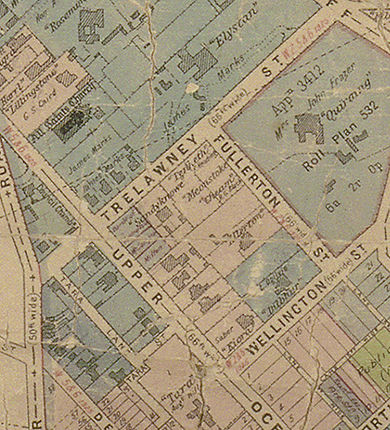
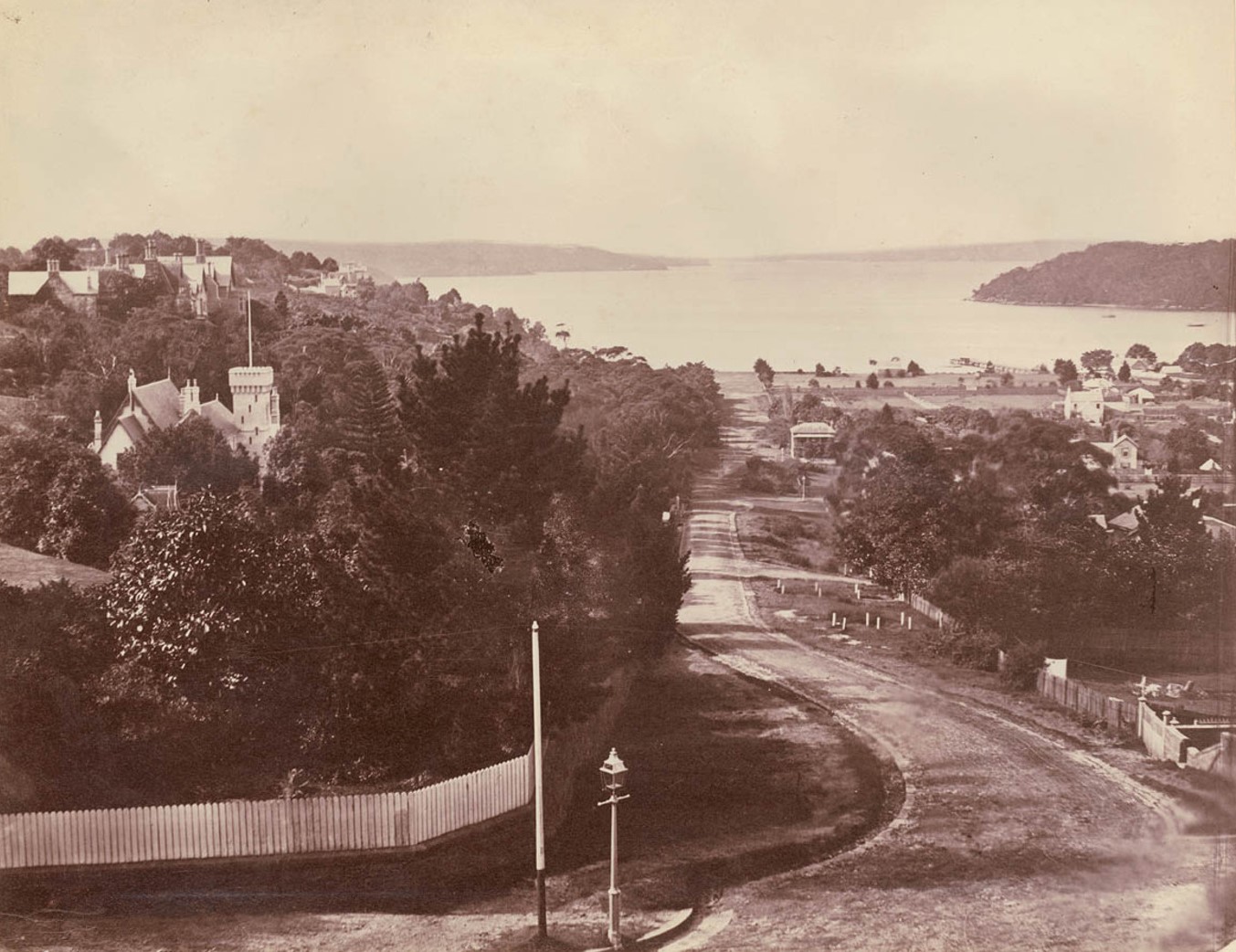
Ocean Street, Double Bay, N.S.W. in 1876, Darling Point residences `Ecclesbourne' (centre left) and `Greenoaks' above. Image No.: a089644h, courtesy the State Library of New South Wales.
A month later, Jane loses her father and Frederick his father in law:
WEEDON—January 25th, at his residence, Maryfield Cottage, Petersham, Mr. Thomas Weedon, aged 85 years. Family Notices (1869, January 29). The Sydney Morning Herald (NSW : 1842 - 1954), p. 8. Retrieved from http://nla.gov.au/nla.news-article13180619
Four loved ones lost within a year; how do you recover from that?
In the Supreme Court of New South Wales.
ECCLESIASTICAL JURISDICTION.
In the matter of the goods, chattels, credits, and effects of Thomas Weedon, late of Petersham, on the Parramatta Road, in the county of Cumberland, in the Colony of New South Wales, landowner, deceased, with the will annexed.
NOTICE is hereby given, that Frederick Oatley, of Woollahra, in the Colony of New South Wales, Inspector of Slaughter-houses, and Jane, his wife, of the same place, intend, after the expiration of fourteen days from the publication of this notice and advertisement, to apply to the said Supreme Court, in its Ecclesiastical Jurisdiction, for letters of administration, with the will annexed (the sole executor, George Wilkie, therein named, having departed this life on the first day of September last, during the lifetime of the said Thomas Weedon, deceased), of all and singular, the goods, chattels, credits, and effects of the said deceased may be granted to them, as the daughter and son-in-law of the said Thomas Weedon, deceased, being the devisees and legatees under the said will, bearing date the tenth day of September, one thousand eight hundred and sixty-four.—Dated this 4th day of February, in the year of our Lord one thousand eight hundred and sixty-nine.
E. J. CORY, Proctor for the said Frederick Oatley and Jane, his wife, 207, York-Street, Sydney. 632 6b. 6d. ECCLESIASTICAL JURISDICTION. (1869, February 5). New South Wales Government Gazette (Sydney, NSW : 1832 - 1900), p. 336. Retrieved from http://nla.gov.au/nla.news-article228676721
MARRIAGE. On the 19th December, at St. Matthias' church, Paddington, by the Rev. Dr. Barry, assisted by the Rev. Stanley Mitchell, Thomas Edward Luscombe, fourth son of Robert William Newman, Esq., of Mamhead, Waverley, and grandson of the late Henry Newman, Esq., H.B.M. Consul at Nantes, France, to Jessie Jane, second daughter of Frederick Oatley, Esq., of Sandy Knowe, Woollahra. Family Notices (1873, January 2). Empire (Sydney, NSW : 1850 - 1875), p. 1. Retrieved from http://nla.gov.au/nla.news-article63225733
OATLEY—RUSH.—July 11, at the residence of the bride's parents, by the Rev. Dr. Barry, Edwin Ernest Allan, eldest surviving son of Frederick Oatley, of Sandy Knowe, Woollahra, to Annie Louise, eldest surviving daughter of Waltham Rush, Maryville, Woollahra. Family Notices (1877, July 25). The Sydney Morning Herald (NSW : 1842 - 1954), p. 1. Retrieved from http://nla.gov.au/nla.news-article13397243
Marriages. BROUGHTON—OATLEY—August 15 at St Mattias Church. Paddington. by the Rev Dr. Barry Charles Henry, fourth son of Thomas Broughton of Bradley Glenmore Rd, to Florence Third daughter of Frederick Oatley, of Sandy Knowe, Woollahra. Family Notices (1878, August 22). Evening News (Sydney, NSW : 1869 - 1931), p. 2. Retrieved from http://nla.gov.au/nla.news-article107935774
WANTED, Volunteer Land Orders ; highest price guaranteed, E. Oatley, Blackwall Stores, Cir. Q. Advertising (1878, February 11). The Sydney Morning Herald (NSW : 1842 - 1954), p. 1. Retrieved from http://nla.gov.au/nla.news-article13407539
OATLEY.—May 18, at her residence, Piper-street, Woollahra, the wife of E. E. A. Oatley, of a son. Family Notices (1878, June 8). The Sydney Mail and New South Wales Advertiser (NSW : 1871 - 1912), p. 793. Retrieved from http://nla.gov.au/nla.news-article162691012
McKENNY—OATLEY.—July 10, at St. David's, Surry Hills, by the Rev. J. Hargrave, Edward Bailey, son of the late Henry William McKenny, of Sydney, to Edith Constance, youngest daughter of Frederick Oatley, of Sandy Knowe,Woollahra. Family Notices (1884, July 24). The Sydney Morning Herald (NSW : 1842 - 1954), p. 1. Retrieved from http://nla.gov.au/nla.news-article13562693
Woollahra.
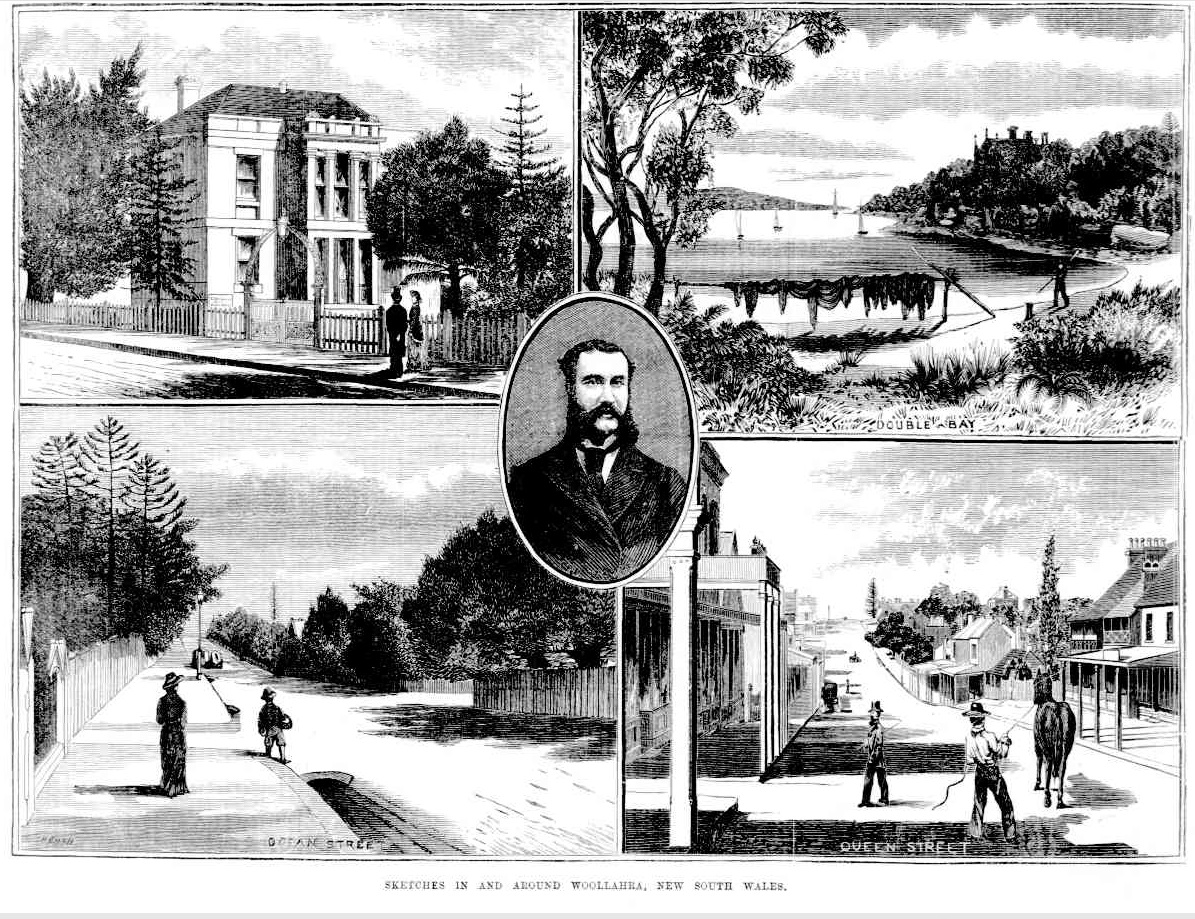
The portrait of Mr. W. J. Trickett, Mayor of Woollahra, occupies the centre of the series of sketches. ... Woollahra. (1880, August 21). Australian Town and Country Journal (Sydney, NSW : 1870 - 1907), p. 25. Retrieved from http://nla.gov.au/nla.news-article70946994
Jane passed away in 1884, apparently after a prolonged illness:
OATLEY.— March 6, at her residence, Sandy Knowe, Woollahra, Jane, the beloved wife of Frederick Oatley. Family Notices (1884, March 7). The Sydney Morning Herald (NSW : 1842 - 1954), p. 1. Retrieved from http://nla.gov.au/nla.news-article13552218
It is Edwin who makes a claim for her estate, six years later, and just months before his father passes away at the home of his sister Florence. It is unclear why Edwin did this and what his father was doing. Woollahra Council records show he retired from his position as an Alderman there a month prior to her passing and was only aged 64 then, and remained living at Woollahara until shortly before he passed away. His memory and name are perpetuated in Frederick Street, Oatley.
In the Supreme Court of New South Wales.
ECCLESIASTICAL JURISDICTION.
In the estate and effects of Jane Oatley, late of Trelawney-street, Woollahra, in the Colony of New South Wales (wife of Frederick Oatley), deceased intestate.
NOTICE is hereby given that after the expiration of fourteen days from the publication hereof in the New South Wales Government Gazette, application will be made to the Supreme Court of New South Wales, in its Ecclesiastical Jurisdiction, that letters of administration of all and singular the estate, goods, chattels, credits, and effects of Jane Oatley, late of Trelawney-street, Woolahra in the Colony of New South Wales, (wife of Frederick Oatley), deceased, intestate, who died on the 6th day of March, 1884, may be granted to Edwin Ernest Allan Oatley, of Sydney, in the Colony aforesaid, the eldest son and next of kin of the said deceased.—Dated at Sydney, this 23th day of January, a.d.1890.
ALFRED SHAW,
Proctor for the Administrator, 108, Pitt-street, Sydney, ECCLESIASTICAL JURISDICTION. (1890, January 24). New South Wales Government Gazette (Sydney, NSW : 1832 - 1900), p. 719. Retrieved from http://nla.gov.au/nla.news-article222058496
OATLEY JANE 4928/1884 Parents THOMAS W MARY WOOLLAHRA
OATLEY. —May 29, at the residence of his son-in-law, C. H. Broughton, Cambridge-street, Petersham, Frederick Oatley, in his 70th year. Family Notices (1890, May 30). The Sydney Morning Herald (NSW : 1842 - 1954), p. 1. Retrieved from http://nla.gov.au/nla.news-article13770167
In the Supreme Court of New South Wales.
ECCLESIASTICAL JURISDICTION.
In the will and codicil of Frederick Oatley, late of Woollahra, near Sydney, in the Colony of New South Wales, gentleman, deceased.
NOTICE Is hereby given that after the expiration of fourteen days from the publication hereof in the New South Wales Government Gazette application will be made to the Supreme Court of New South Wales, in its Ecclesiastical Jurisdiction, that probate of the last will and testament and codicil thereto of the abovenamed deceased, may be granted to Edwin Ernest Allan Oatley and Frederick Augustus Oatley, the executors in the said will and codicil named.—Dated this 9th day of June, a.d. 1890.
CARRUTHERS & HAWKINS,
Proctors for the said Executors,
122, Pitt-street, Sydney. In the Supreme Court of New South Wales. ECCLESIASTICAL JURISDICTION. (1890, June 10). New South Wales Government Gazette (Sydney, NSW : 1832 - 1900), p. 4597. Retrieved from http://nla.gov.au/nla.news-article219922029
The Flood-Oatley land holdings, and looking after those, continued. Thomas Willans was not the only one moved swiftly against:
LAW REPORT.
SUPREME COURT.-THURSDAY, DECEMBER 12.
No. 1 Jury Court - (Before the CHIEF JUSTICE and a jury of four.)
FLOOD AND OTHERS V. CAMPBELL.
Plaintiff, E A Oatley, appeared in person. Defendant did not appear. This was an action of ejectment, brought by Joseph Washington Flood, Ernest Allen Oatley, and Edward Bailey McKenny, trustees of the will of the late Edward Flood, against Sarah Campbell, of Tunstall station, near Lismore, to recover possession of 322 acres of land situated on Leycester Creek, county of Rous, parish of Lismore.
It was announced that this action had been settled, one of the terms of the settlement being that a verdict should be returned for the plaintiff. LAW REPORT. SUPREME COURT—THURSDAY, DECEMBER 12. (1895, December 13). The Sydney Morning Herald (NSW : 1842 - 1954), p. 6. Retrieved from http://nla.gov.au/nla.news-article14028863
Department of Lands,
Sydney, 1st October, 1897.
RENEWAL OF OCCUPATION LICENSES FOR 1898.
NOTICE is hereby given that the rates of License Pees for Occupation Licenses under section 81 of the Crown Lands Act of 1884, payable in advance for the year 1898, are set out and published in the annexed Schedule. All Occupation License Fees must be paid to the Colonial Treasurer within sixty days from the date of the publication of this notice, and if not so paid the Licenses shall be deemed not to have been renewed.
In the case of Preferential Occupation Licenses in the Central Division, the Provisional License Fees prescribed by the Act are payable pending appraisement. The estimated areas are those existing on the 80th June last, and the License Fees payable are based on those areas.
In those cases where the areas have been reduced up to 30th June last, an adjustment of the accounts will be made as early as practicable.
Attention is specially drawn to the fact that the sixty days' notice mentioned in paragraph 2 hereof will expire on the 30th November this year. [97-10,850 Occ.]
J. H. CARRUTHERS.
F. A. Oatley (for the Trustees of the late Hon. Edward Flood).
Joseph Washington Flood, Edwin Ernest Allen Oatley.
Frederick Augustus Oatley, and Edward Bailey M'Kenny (trustees of the will of the late Edward Flood) RENEWAL OF OCCUPATION LICENSES FOR 1898. (1897, October 1). New South Wales Government Gazette (Sydney, NSW : 1832 - 1900), p. 7133. Retrieved from http://nla.gov.au/nla.news-article222835096
Frederick Augustus Oatley
Frederick Augustus marriage; 1339/1881 OATLEY FREDERICK A JOHNS EMILY ALICE SYDNEY
OATLEY.—November 8, at Undine, William-street, Double Bay, the wife of Frederick A. Oatley, of a son. Family Notices (1884, November 12). The Sydney Morning Herald (NSW : 1842 - 1954), p. 1. Retrieved from http://nla.gov.au/nla.news-article28366221
MUNICIPAL DISTRICT OF CONCORD.
Extraordinary Vacancy.
NOTICE is hereby given that Frederick Augustus Oatley, Esq., has been elected as Alderman for the Municipal District of Concord, in place of J. A. E. Nash, Esq., resigned.
D. ZOELLER,
Mayor and Returning Officer. Council Chambers, Concord, 13th February, 1893. MUNICIPAL DISTRICT OF CONCORD. (1893, February 17). New South Wales Government Gazette (Sydney, NSW : 1832 - 1900), p. 1373. Retrieved from http://nla.gov.au/nla.news-article220966980
In March 1898 a law suit shows a split between the Oatley brothers:
THE FLOOD ESTATE.
Proceedings in acuity.
The hearing of the suit Flood and others against Oatley and others before his Honor Mr. Justice A. H. Simpson in Equity yesterday. Mr. Adrian Knox and Mr. Macarthur (Instructed by Messrs. Johnson, Minter, Simpson and Co.) appeared for the plaintiffs, Frederick Augustus Oatley, Florence Adelaide Flood and John M'Pherson. Mr. Gregory Walker, Q.C., and Mr. Lingen constructed by Messrs. Macnamara and Smith) appeared for Edward Ernest Allen Oatley; and Mr. Hemsley (of Messrs. Allen, Allen and Hemsley) appeared for Charles Westbrook and the Bank of New South Stiffs brought the suit against the-defendant, Oatley, for a foreclosure order in respect of two mortgages dated March 24 and 30, 1893. Second and third mortgages wore given to Charles Westbrook and the Bank of New South Wales. Under the will of the late Edward Flood, J. W. Flood E. A. Oatley, F. A. Oatley and C. and J. Oliver were appointed executors and trustees and the testator devised all his property upon trust to pay certain legacies and annuities under the will, and to stand possessed of the residue upon trust to divide the same equally between his son, J. W. Flood, E A. Oakley and F. A. Oatley.
E. Flood died on September 9, 1888, and Probate was granted to the executors on November 20 in that year. C. and J. Oliver and J. W. Flood retired from the trusts of the will, and the plaintiff, John M 'Pherson, and D-B, W. Kenny were appointed trustees. Edwin Oatley mortgaged, on March share in the testators estate to the Commercial Banking Co. to secure the sum of £17 274; As a further security for the repayment. J. W. Flood and F. A. Oatley executed a guarantee in favour of the bank. On March 30 1893, F. A. Oatley and J. W. Flood gave to the Bank of New South Wales a guarantee in respect of the sum of £12,000. On the same date E. Oatley executed a mortgage in favour of F. A. Oatley and. J. W. Flood to secure them in respect of the guarantee given to the Bank of New South Wales By a further Indenture, dated November li. 1896 Edwin Oatley further, charged his Interest In the estate of the late-J W Flood in favour of the defendant, Westbrook. On June 1. 1897, E. Oatley executed a further mortgage in favour of the Bank of New South Wales to secure all moneys then or thereafter due by Edwin Oatley to the bank.
J. W. Flood died on January 17, 1896, and appointed the plaintiff, John M'Pherson and Florence Adelaide Flood as executors and trustees. Demand having been made by the Commercial Bank F. A. Oatley and J. W. Flood, on October t, 1897 paid to the bank the sum of £28,148 19s, being the amount due on the mortgage and guarantee. On September 17, 1897, demand having been made by the Bank of New South Wales, F. A. Oatley and J. W. Flood paid to that bank £12,960, being the amount due under the guarantee.
The defendant Oatley counter-claimed for a partition of the properties which formed the subject matter of the suit and by his defence alleged that his share of the properties alone was worth over £76,000 while the utmost of plaintiff's claim was £41,300. It was admitted on behalf of the defendant Edwin Oatley that the facts alleged did not constitute a defence to the suit for foreclosure.
After argument his Honor dismissed the counter claim with costs, but without prejudice to the right of the defendants, or any of them, Instituting a fresh suit for partition or otherwise as they may be advised. He made the usual foreclosure order in the suit, six months to redeem, with liberty to defendants to apply within six months for an extension of time. THE FLOOD ESTATE. (1898, March 31). The Australian Star (Sydney, NSW : 1887 - 1909), p. 8. Retrieved from http://nla.gov.au/nla.news-article228436026
THE FLOOD ESTATE.
A FORECLOSURE SUIT.
The suit of Flood and others against Oatley and others was before Mr. Justice A. H. Simpson, sitting in Equity Jurisdiction yesterday. Mr. Adrian Knox, with him Mr. McArthur, instructed by Messrs. Johnson, Minter, Simpson, and Company, appeared for the plaintiffs, Frederick Augustus Oatley, Florence Adelaide Flood, and John McPherson; Mr. Gregory Walker Q.C., with him Mr. Lingen, instructed by Messrs. Macnamara and Smith, appeared for Edwin Ernest Allen Oatley; and Mr. Hemsley, of Messrs. Allen and Kemsley, appeared for Charles Westbrook and the Bank of New South Wales. The suit was one brought by the plaintiffs against the defendant Oatley for a foreclosure order in respect of two mortgages dated March 24 and 30, '93. Second and third mortgages were given to Chas. Westbrook and the Bank of New South Wales. Under the will of the late Edward Flood, J. W. Flood, E. A. Oatley, F. A. Oatley, and C. and J. Oliver were appointed executors and trustees, and the testator devised all of his property to them upon trust to pay certain legacies and annuities under the will, and to stand possessed of the residue upon trust to divide the same equally between his son, J. W. Flood, E. A. Oatley, and F. A. Oatley. E. Flood died on September 9, '88, and probate was on November 20 of that year granted to the executors. C. and J. Oliver and J. W. Flood retired from the trusts of the will, and the plaintiff John M'Pherson and E. B. W. Kenny were appointed trustees.
On March 24. '93, Edwin Oatley mortgaged his share in the testator's estate to the Commercial Banking Company to secure the sum of £17,274. As a further security for the repayment, J. W. Flood and F. A. Oatley executed a guarantee in favor of the bank. On March 30, '93, F. A. Oatley and J. W. Flood gave to the Bank of New South Wales a guarantee in respect of the sum of £12,000; and E. Oatley executed a mortgage in favor of F. A. Oatley and J. W. Flood to secure, them in respect of the guarantee given to the Bank of New South Wales. By a further indenture, dated November 17, '96, Edwin Oatley further charged his interest in the estate of the late J. W. Flood in favor of the defendant Westbrook. On June 1, '97, E. Oatley executed a further mortgage in favor of the Bank of New South Wales to secure all moneys then or thereafter due by Edwin Oatley to the bank. J. W. Flood died on January 17, '96, and appointed the plaintiff John McPherson and Florence Adelaide Flood as executors and trustees. Demand having been made by the Commercial Bank on October 1, '97, the bank was paid the sum of £28,148 19s, being the amount due on their mortgage and guarantee. On September 17, '97, demand having been made by the Bank of New South Wales, the sum of £12,560 was paid to that bank, that being the amount due under the guarantee. The defendant Oatley counter-claimed for a partition of the properties which formed the subject matter of the suit, and by his defence alleged that his share of the properties alone was worth over £76,000: whilst the utmost of the plaintiffs' claim was £41,300. It was admitted on behalf of the defendant Oatley that the facts alleged did not constitute a defence to the suit for foreclosure. After argument, his Honor dismissed the counter-claim, with costs; but without prejudice to the right of the defendants, or, any of them, to institute a fresh suit for partition or otherwise as they might be advised. He made the usual foreclosure order in the suit, six months to redeem, with liberty to the defendants to apply within six months for an extension of time. THE FLOOD ESTATE. (1898, March 31). Evening News (Sydney, NSW : 1869 - 1931), p. 5. Retrieved from http://nla.gov.au/nla.news-article108770978
Frederick Augustus passed away while out riding a bike with his wife soon afterwards:
Deaths. - -OATLEY,— June 14, suddenly, Frederick Augustus Oatley, Gladwyn, Concord-road, Concord. Family Notices (1898, June 16). The Australian Star (Sydney, NSW : 1887 - 1909), p. 1. Retrieved from http://nla.gov.au/nla.news-article228434902
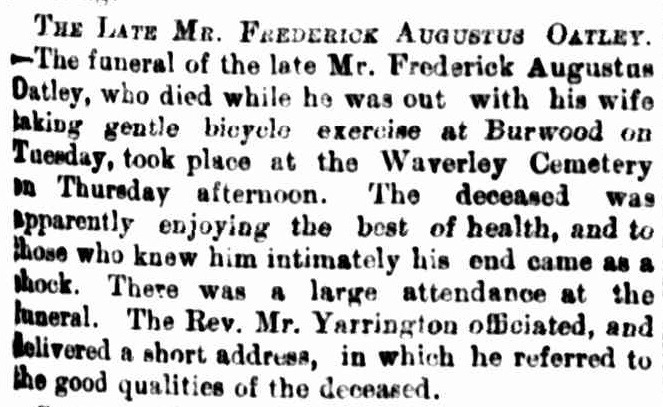
The Sydney Morning Herald. (1898, June 18). The Sydney Morning Herald (NSW : 1842 - 1954), p. 9. Retrieved January 6, 2019, from http://nla.gov.au/nla.news-article14169397
NSW BDM's Records: OATLEY FREDERICK A 5018/1898 parents FREDERICK JANE BURWOOD
As soon as he is gone his brother is back in court;
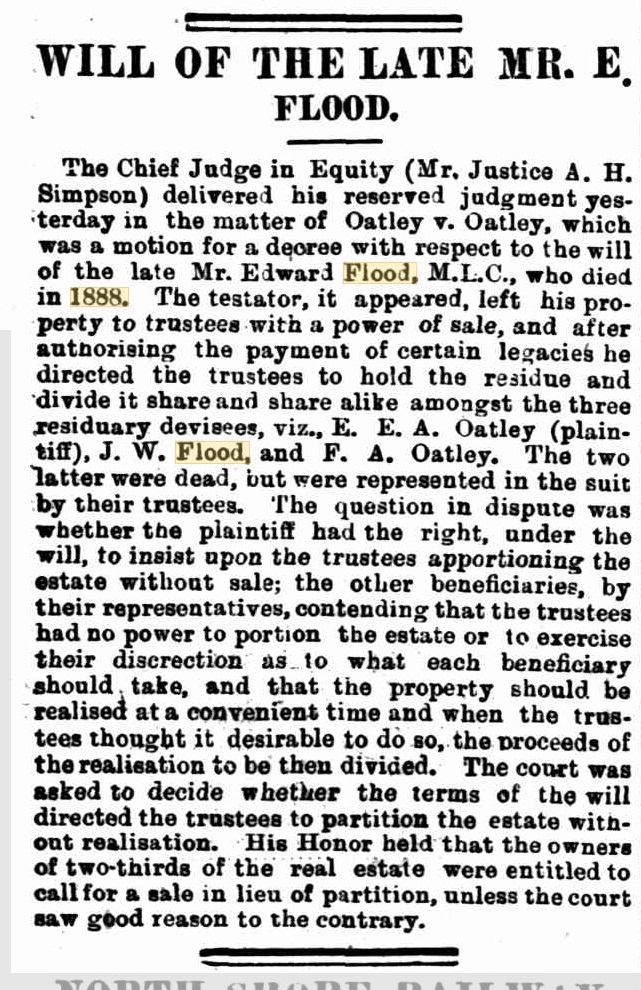
WILL OF THE LATE MR. E. FLOOD. (1898, September 6). Evening News (Sydney, NSW : 1869 - 1931), p. 6. Retrieved from http://nla.gov.au/nla.news-article113254446
WALLACE—OATLEY.—December 27, 1905 at St. David's Cathedral, Hobart, by the Rev. Dean Kite, Lancelot, second son of William Wallace, Esq., Halifax, England, to Elsie Weeden, only daughter of the late F. A. Oatley, Esq., Sydney. Family Notices (1906, January 31). The Sydney Morning Herald (NSW : 1842 - 1954), p. 8. Retrieved from http://nla.gov.au/nla.news-article14729061
The land, and those entitled to the assets, went on and on:
NOTICE UNDER REAL PROPERTY ACT.
APPLICATION having been made by the under mentioned persons to be registered as proprietors by transmission of the land hereunder described: Notice is hereby given of the intention of the Registrar-General to register such transmission after the expiration of one month from the date hereof, unless caveat be lodged on or before the expiration of such period :—
APPLICANTS:—Frederica Mary Roberts, Jessie Jane Newman, Florence Broughton, Edith Constance McKenny, John Johns and Edward Bailey McKenny as tenants in common. LAND :—39 ½ perches, Church-street, Parramatta, parish Field of Mars, being the whole of the land comprised in Certificate of Title vol. 1214, fol. 40.
TITLE CLAIMED: The said Frederica Mary Roberts, Jessie Jane Newman, Florence Broughton, and Edith Constance McKenny claim to be entitled as four of the children of Frederick and Jane Oatley, deceased, under and by virtue of the last Will and Testament of Thomas Weedon, deceased, and the said John Johns and Edward Bailey McKenny claim to be entitled as the legal personal representatives of Frederick Augustus Oatley, deceased, who held two-sixths shares in said land, one-sixth share as one of the children of the said Frederick and Jane Oatley and the other sixth share by deed of assignment, dated 10th October, 1892, from his brother Edwin Ernest Allan Oatley.
H. R. COLBORNE, Acting Registrar-General. 22nd July, 1914. NOTICE UNDER REAL PROPERTY ACT. (1914, July 22). Government Gazette of the State of New South Wales (Sydney, NSW : 1901 - 2001), p. 4188. Retrieved from http://nla.gov.au/nla.news-article227673744
OATLEY.-Edwin Ernest Allan; of Ostara. Dutruc-street Randwick, in his 69th year. Family Notices (1920, March 31). The Sydney Morning Herald (NSW : 1842 - 1954), p. 12. Retrieved from http://nla.gov.au/nla.news-article28095170
LATE MR. OATLEY'S ESTATE.
Probate has been granted of the will of Mr. Edwin Ernest Allan Oatley, the well-known sportsman, of 'Ostara,' Dutruc Street, Randwick, who died at Point Clare, Gosford, on March 22 last. The value of the estate was set down for probate purposes at £84,444, of which £20,314 was comprised In realty, and £41,251 shares in the 'Warwick Farm Racecourse Company, Limited (£35,136) ; Menangle Racing Company, Limited (£500) ; and Paul and Gray, Limited (£5615/17/). LATE MR. OATLEY'S ESTATE. (1920, July 8). The Gosford Times and Wyong District Advocate (NSW : 1906 - 1954), p. 16. Retrieved from http://nla.gov.au/nla.news-article166833122
Edwin appointed his widow, Annie Louise Oatley, and his son, Percy A. Oatley, executors and trustees.
RE will of EDWIN ERNEST ALLAN OATLEY, late of Randwick, in the State of New South gentleman, deceased,—Probate whereof was granted by the Supreme Court of New South Wales on the 1st day of July, 1920, to Annie Louise Oatley and Percy Allan Oatley.—-Pursuant to the Wills, Probate end Administration Act, 1898-1954, the Testator's Family Maintenance and Guardianship of Infants Act, 1916-1954, and the Trustee Act, 1925-1942, Norman Ellis Jones and Kenneth Charles Warby, the trustees of the estate of the said deceased, who died on the 22nd day of March, 1920, hereby give notice that creditors and others having any claim against or to the said estate are required to send particulars of their claims to the said trustees in care of the undersigned on or before the 21st day of June, 1967, at the expiration of which time the said trustees will distribute the assets of the said deceased, having regard only to the claims of which they then have notice,—-Dated the 14th day of April, 1967. DOWLING, TAYIBR, PRAIT & NICOL, Solicitors, 70 Pitt Street, Sydney. 1591—$3.25 RE will of EDWIN ERNEST ALLAN OATLEY, late of (1967, April 14). Government Gazette of the State of New South Wales (Sydney, NSW : 1901 - 2001), p. 1216. Retrieved from http://nla.gov.au/nla.news-article219983034
And it all began with:

CLOCK by James Oatley in 1823 Rim round face, columns at side of face, and the chunky feet, is in genuine colonial style. Furniture as the early colonials liked it (1953, October 3). The Daily Telegraph (Sydney, NSW : 1931 - 1954), p. 18. Retrieved from http://nla.gov.au/nla.news-article248608050
JAMES OATLEY, PIONEER WATCH AND CLOCKMAKER
'E.E.A.' (Hurstville) writes: — 'While out for a stroll yesterday I came across an old grave near what appears to have been a farm many years ago. This farm is situated on the country lying between Penshurst and Lakemba. On the slab of stone covering the grave is the following:
Sacred to the memory of JAMES OATLEY. Obit October 8, 1839. AETAT 70 years.
This grave aroused my curiosity very much, and being a constant reader of 'Truth' I am writing to ask if you can give me any information re the farm and the person who was buried there?'
Lakemba is included now in one of the oldest settlements outside Sydney, Canterbury. It was settled as far back as 1793. Amongst the earliest grantees being John Clapham, Richard Johnson, James Hunt Lucas, and Robert Campbell. James Oatley was an old and highly respected colonist whose descendants, now in the fourth or fifth generation, have kept the name unsullied. The original Oatley, he whose tomb my correspondent has discovered, was a watch and clock maker in George-street, Sydney, his shop being opposite the old burial ground, on which the Town Hall is now built. The business, after the old gentle-man's death, was carried on by Frederick Oatley until the late forties, when, I think, he sold out and accepted a lucrative job under the City Council, that of Inspector of Slaughter houses. James Oatley, as a clock-maker, will be remembered as long as the Hyde Park Barracks, and its clock remains, for we are told that James Oatley manufactured that clock, and got a grant of 700 acres out Canterbury way by way of payment. 'Mary Salmon' in an article published in September, 1904, mentions as a fact that Mr. Oatley's farm at Moorefield had been many times re-sold, and at the time that 'Mary Salmon' wrote, was in the possession of Mr. Judd, a condition being that whoever buys the estate also takes over the family sepulchre with the occupants thereof, 'Do you mind the old man being on the estate?' was the inquiry of the owner of one of these private vaults of a would-be land buyer. 'Not if he is quiet', was the reply, not knowing that he was questioned re a dead man, at least so saith 'Mary Salmon'.
This early-day watch and clock maker made at least six grandfather clocks in his time. I know where one is, and a fine specimen of the clock-maker's handicraft it is. It is still in the family, but should, and let us hope it will, find a corner in the Mitchell Library some day. A son of this early colonist, James Oatley, William, kept the Sportsman's Arms on the south-west corner of Goulburn and Pitt-streets; he was succeeded by James Oatley, who became a prominent member of the City Council, and was Mayor in 1862. Mr. Oatley retired from business in the first fifties, and devoted himself to his municipal duties. The curious in such matters will find a very much weather-worn water fountain on Phillip Park, near junction of Cathedral-street, Boomerang-road, and College-street, on which will be found inscribed: 'James Oatley, Mayor, 1862'. There is a railway station named Oatley on the Sydney-Waterfall railway line.
...'H. B.' OLD SYDNEY. (1921, May 8). Truth (Sydney, NSW : 1894 - 1954), p. 12. Retrieved from http://nla.gov.au/nla.news-article169184103
The above is incorrect in two points - James Oatley Jnr. was the publican and he did not get the land grants for the clock at Hyde Park Barracks, he was paid £75 for that work and the land grants were separate.
OATLEY'S TOMB.
It is not known to many of the present generation that for many years a lonely tomb, in which were interred the remains of James Oatley in 1839, has been preserved in a secluded spot on The Meadows Estate, Canary Hill, Dumbleton. The vault was surmounted with a large flat stone on which was recorded the fact that James Oatley, the pioneer of this great district, was buried there in 1839, he having reached the allotted span of 70 years. In the latter seventies or early eighties Oatley secured a large Government grant of land which started from the western portion of Hurstville to the banks of George's River, the township of Oatley and Oatley Bay being named after him. He had a large house erected at Canary Hill, which was built, of hand-made bricks by- convicts. The house was also surrounded by a high brick wall. Here Oatley lived with his family for many years, and when he died in 1839 his remains were interred in the vicinity of the house. The house has long since been demolished, but part of the foundations still remain. The grave was fenced in with a picket fence, and was now and again visited by descendants. But now the town-planner has arrived on the scene and relics of the past have been obliterated. Last week the old tomb was dug up, and many old-time bricks were unearthed. However, nothing was found of the remains or the coffin. OATLEY'S TOMB. (1924, August 1). The Propeller (Hurstville, NSW : 1911 - 1954), p. 1. Retrieved from http://nla.gov.au/nla.news-article236994220
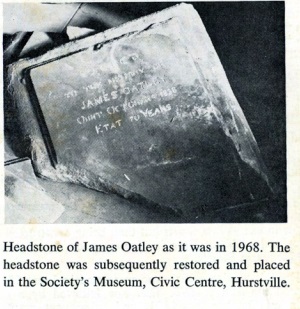
Hurstville Historical Society rescued the headstone.
Arthur Stevens - Arturo Steffani
A choice collection of the oil and water-colour paintings of Signor Steffani will be sold by auction at 61 Elizabeth-street, near King-street, this morning. Some of this artist's most admired works are to be disposed of, notably, amongst the oils, the fine view of "Barrenjoey," with its green headland and wind-swept bay. IN PARLIAMENT. (1893, May 12). The Sydney Morning Herald(NSW : 1842 - 1954), p. 4. Retrieved from http://nla.gov.au/nla.news-article13928448
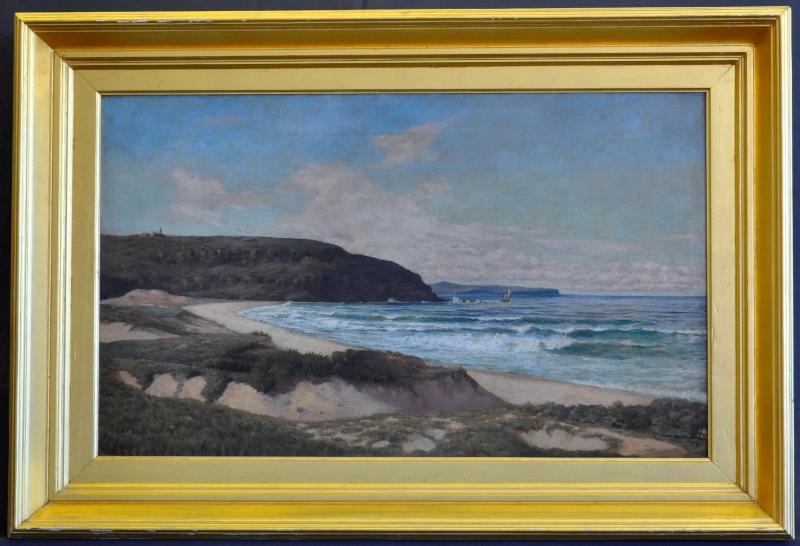
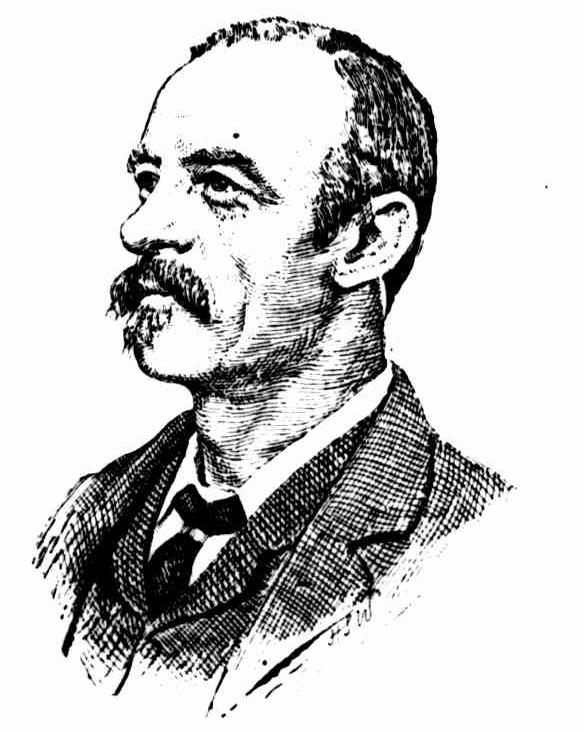
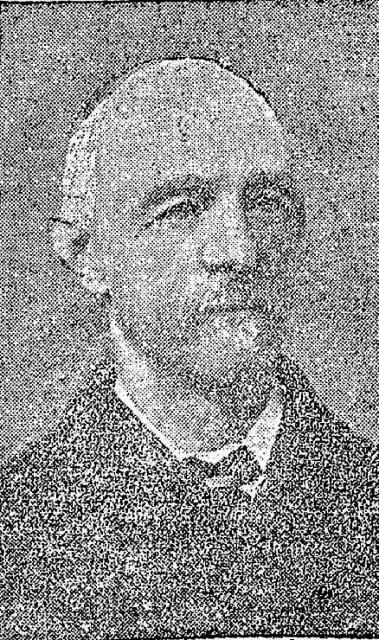
Steffani Dead.
Signor Steffani, who during the latter part of last century was Sydney's best teacher of voice culture-he trained the voices, among others, of Hetby Holroyd and Florence Schmidt -died in England last month. Steffani, who possessed a rich baritone voice, was 79 at the end. OLLA PODRIDA (1931, March 31). The Muswellbrook Chronicle (NSW : 1898 - 1955), p. 4. Retrieved from http://nla.gov.au/nla.news-article107598102
Arthur Branscombe Wood (Three Generations With Same Name):
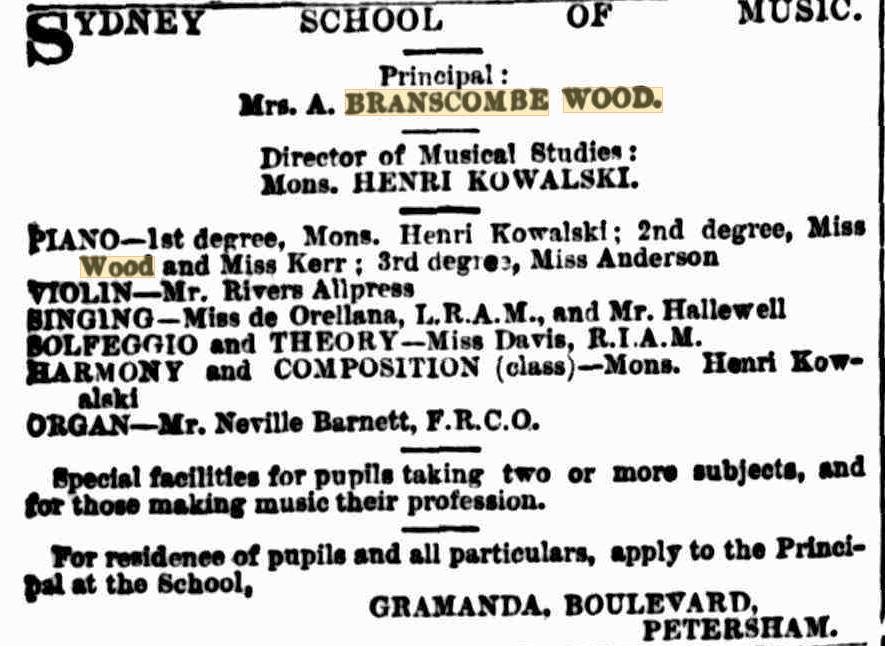
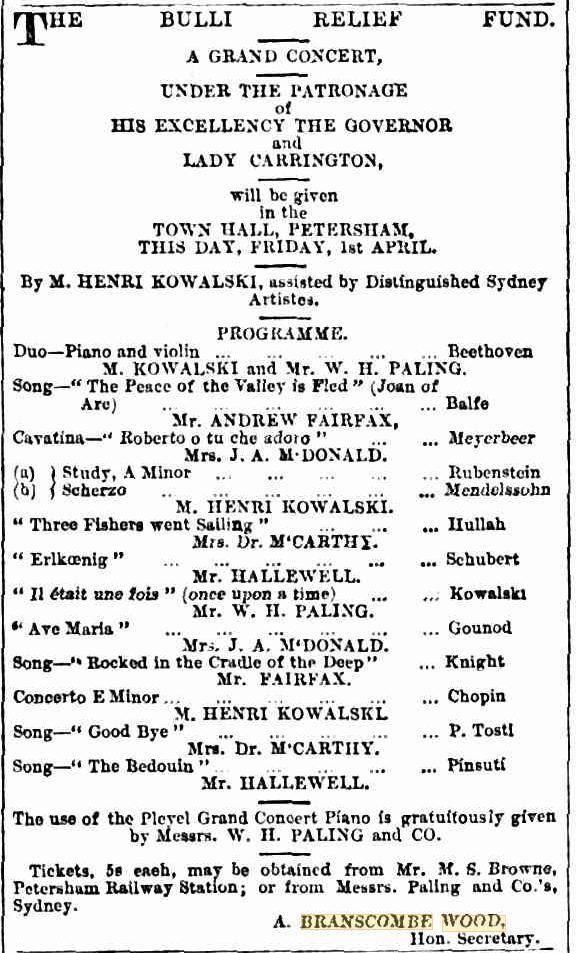
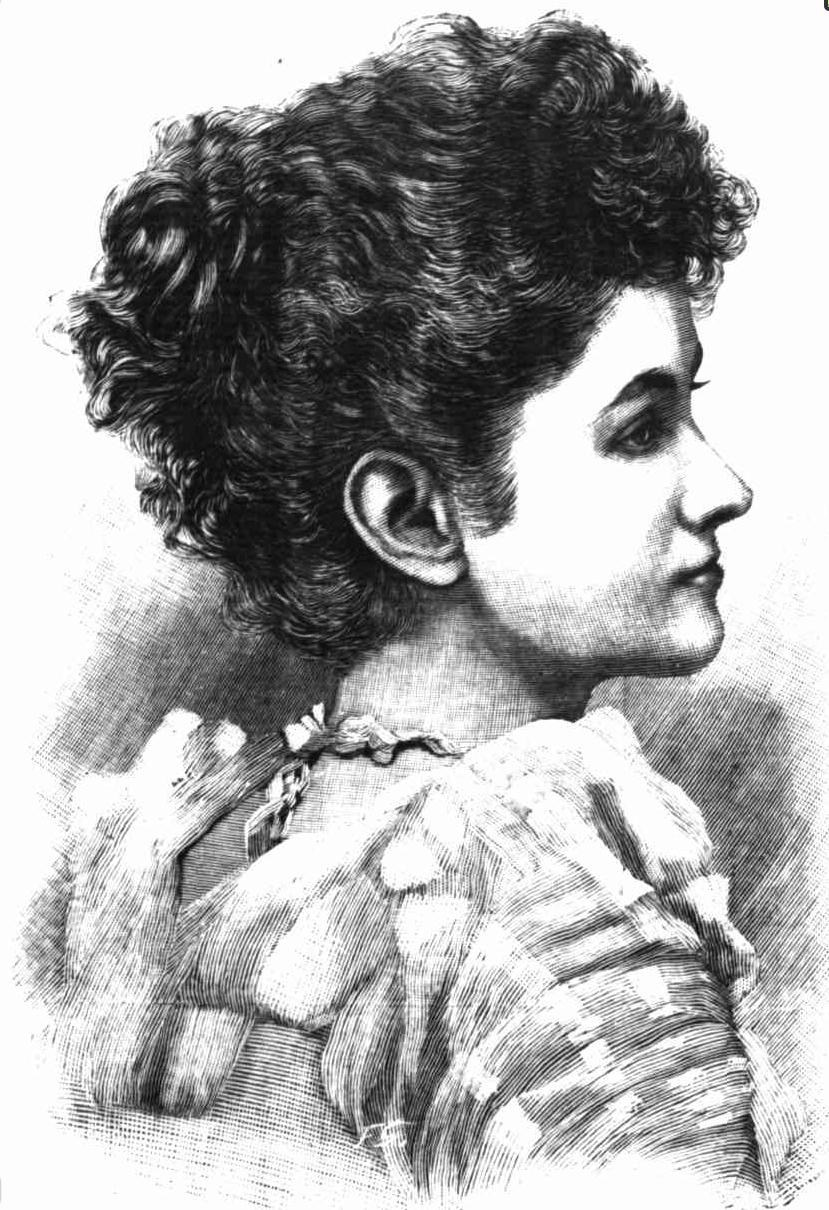
Maritana - The Opera
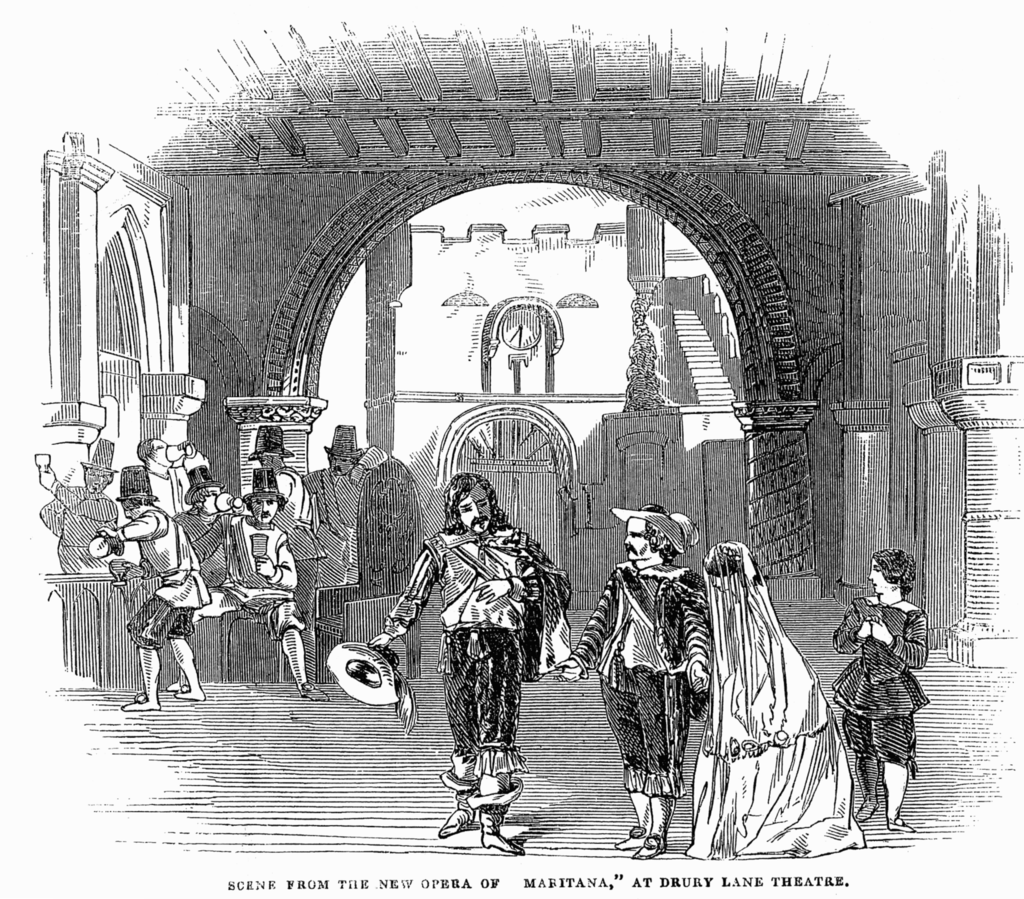
The Composer of ' Maritana.'
From Dr. Sparks's admirable work recently published entitled ' Musical Memories Past and Present' we extract a few items relative to William Vincent Wallace, the composer of the opera ' Maritana ' and numerous other works. Mr. Wallace was born at Waterford in the year 1814, and was the son of Mr. William Wallace, bandmaster of the 29th Regiment of the Line, himself an excellent practical musician, who could play nearly every wind instrument in the band, besides stringed instruments and the pianoforte. Vincent was 'all there' from his youth up-wards. He insisted on playing all the instruments upon which his father performed, and at the age of 15 he could quite excel him on the pianoforte and violin. At 18 Wallace directed a performance of Beethoven's 'Mount of Olives' in Dublin, and as his health broke down, he took the advice tendered to him by his physician, and went off to Australia, where he obtained renewed strength and vigor in the capacity of a sheep farmer. Ultimately, after visiting all the chief cities of the world, he returned to Great Britain, and with the friendly co-operation and advice of his true and trusty friend, Mr. Beale (Cramer, Beale, and Company), he made his mark on this 'tight little island' of ours.
Wallace was not only a brilliant pianist, but a fine performer on the violin — indeed, it is impossible to say upon which instrument he excelled the most. It was, however, as a pianist he took up his position in London, and that, too, when there were many distinguished players already in the field. I remember what he told me respecting his first compositions for the pianoforte, which he offered for sale to a leading London music publisher. 'I called on the principal in the firm, and played him one or two of my pieces — those which had been received in New York and other cities with great favor. The 'party' (as he called him) was very bland, and requested me to call again that day week, which I did, and was politely handed back all my MSS.— ' Declined with thanks.' '
After the triumphant success of his opera, ' Maritana,' the same publisher called at his rooms, and paid him 20gs for one of the very pieces he had formerly refused, even as a gift ; and then they both had a hearty laugh at the turn of fortune's wheel. Shortly after his arrival in London from New York, in 1845, Wallace was asked by the well-known librettist, Edward Fitzball, to compose music to an opera, entitled 'Don Caesar de Bazan.' The composer readily acquiesced, and the result was what we now know as 'Maritana.' Wallace was then in his prime, full of health, strength, vigor, intellect, and spirit. He worked with a will, rapidly, and with the greatest success; indeed, there is no English opera to surpass 'Maritana,' whether we regard its opulence of melody, its strictly harmonical correctness and construction, and its beautifully developed themes, from the first note of the overture to the last utterance of the final number, Mr. Frederick Beale (the father of our present famous Willert Beale, who writes such charming music and poetry under the nom de guerre of Walter Maynard), perceived at once the value of Wallace's music, and after hearing: from the composer the first act, walked off with the score under his arm, and closed with Mm as to terms, &c. Wallace found in Mr. Beale a great and good friend, and he migrated soon from his rooms in Berners-street to Albion Lodge, St. John's Wood, where he finished his opera 'Maritana,' and began another work, equally beautiful in its style, entitled 'Lurline' Beale arranged with the well-known Alfred Bunn to produce ' Maritana ' at Drury-lane. After the first rehearsal it was found that Miss Poole, the operatic contralto of the day, had no song, whereupon Wallace very shortly produced that charming air, now so popular, 'Alas! those chimes.'
Besides ' Maritana ' and ' Lurline,' Wallace subsequently produced 'The Amber Witch and ' The Desert Flower,' both of which operas contain music of unmistakable power and ... —though not of a character calculated to lay hold of the minds and taste of the general public - began another opera—' The Maid of Zurich — and he sketched out, when staying at Wiesbaden, two German operas, named 'Gulnare' and ' Olga.' Not only was Wallace great as an operatic composer, but he produced many pianoforte works, songs, and other fugitive pieces, all of which are, to use an old and useful aphorism, as full of music ' as an egg is of meat.' The eminent publishers, Messrs. Cox and Company, of New Burlington street, London, will furnish any applicant with a catalogue of their Wallace compositions, and I can assure all my readers that there is not one out of a large number unworthy of attention and study.
In the latter part of his career Wallace went to Paris, where he revelled in the fellowship of the most musical minds in the world. He was commissioned to write a work for the Grand Opera of Paris, a point of the highest ambition with all composers, and one of the most difficult for a foreigner to attain. He had not worked long at this prime work of his life before he was, like Milton, M» farren, Smart, and other great masters, afflicted with blindness. After enduring great agony and anxiety, he was ordered by his physician to take a trip to South America, and this undoubtedly secured for him a release from pain and ease from care; but he shortly returned w London, and then again visited France, where at the Chateau de Bagen, Haute-Garonne he breathed his last on October 12, 1865. The Composer of "Maritana." (1893, June 15). Evening News (Sydney, NSW : 1869 - 1931), p. 6. Retrieved from http://nla.gov.au/nla.news-article112607277
William Vincent Wallace (1812-1865), musician, was born in Colbeck street, Waterford, Ireland, the eldest son of the Irish band-sergeant of the 29th Regiment. His father, Spencer Wallace of County Mayo, one of four children, who was born in Killala, County Mayo in 1789, became a regimental bandmaster with the North Mayo Militia based in Ballina. William was born while the regiment was stationed for one year in Waterford, one of several successive postings in Ireland and the UK. The family returned to Ballina some four years later, in 1816, and William spent his formative years there, taking an active part in his father's band and already composing pieces by the age of nine for the band recitals.
The band, having a reputation for high standards, apart from regimental duties would have featured at social events in big houses in the area. Under the tuition of his father and uncle, he wrote pieces for the bands and orchestras of his native area. Wallace became accomplished in playing various band instruments before the family left the Army in 1826 (their regiment then being the 29th Foot), moving from Waterford to Dublin, and becoming active in music in the capital. Wallace learned to play several instruments as a boy, including the violin, clarinet, organ, and piano. In 1830, at the age of 18, he became organist of the Roman Catholic Cathedral at Thurles, County Tipperary, and taught music at the Ursuline Convent there. He fell in love with a pupil, Isabella Kelly, whose father consented to their marriage in 1832 on condition that Wallace become a Roman Catholic and change his name to Vincent. The couple soon moved to Dublin, where Wallace was employed as a violinist at the Theatre Royal. He returned to Dublin as sub-leader of the Theatre Royal orchestra; after hearing Paganini he practised night and day till he became a virtuoso.
The whole Wallace family decided to emigrate to Australia in 1835. Wallace, together with his wife Isabella and young son, Willy, travelled as free emigrants from Liverpool in July. His father, with his second wife Matilda and one child, travelled with the rest of the family, Elizabeth, a soprano, and Wellington, a flautist, as bounty emigrants from Cork that autumn.
The composer's party first landed at Hobart, Tasmania in late October, where they stayed several months, and then moved on to Sydney in January 1836, where, following the arrival of the rest of the family in February, the Wallaces opened the first Australian music academy in April. Wallace had already given many celebrity concerts in Sydney, and, being the first virtuoso to visit the Colony, became known as the "Australian Paganini". His sister Elizabeth, at age 19, in 1839 married an Australian singer John Bushelle, with whom she gave many recitals before his early death in 1843 on a tour of van Diemen's Land. Wallace was also active in the business of importing pianos from London, but his main activity involved many recitals in and around Sydney under the patronage of the Governor, General Sir Richard Bourke. The most significant musical events of this period were two large oratorio concerts at St. Mary's (Roman Catholic) Cathedral in Sydney in 1836 and 1838, on behalf of the organ fund, which were directed by Wallace, and which utilized all the available musical talent of the Colony, including the recently formed Philharmonic [Choral] Society.
In 1838, he separated from his wife, and began a roving career that took him around the globe. Wallace claimed that from Australia he went to New Zealand on a whaling-voyage in the South seas and while there encountered the Maori tribe Te Aupouri, and having crossed the Pacific, he visited Chile, Argentina, Peru, Jamaica, and Cuba, giving concerts in the large cities of those countries. In 1841, he conducted a season of Italian opera in Mexico City. Moving on to the United States, he stayed at New Orleans for some years, where he was feted as a virtuoso on violin and piano, before reaching New York, where he was equally celebrated, and published his first compositions (1843-44).
He arrived in London in 1845 and made various appearances as a pianist. In November of that year, his opera Maritana was performed at Drury Lane with great success, and was later presented internationally, including Dublin (1846), Vienna, Austria (1848), and in Australia. Wallace's sister, Elisabeth, appeared at Covent Garden in the title role in 1848. Maritana was followed by Matilda of Hungary (1847), Lurline (1847/60), The Amber Witch (1861), Love's Triumph (1862) and The Desert Flower (1863) (based on the libretto of Halévy's Jaguarita l'Indienne). He also published numerous compositions for the piano.
In 1854, Wallace became an American citizen after a (most likely common-law) marriage in New York with the German-born pianist Hélène Stoepel, sister of composer Robert Stoepel. In New York, in 1843–44, he had been associated with the early concert seasons of the New York Philharmonic Society, and in 1853 was elected an Honorary (Life) Member of the Society.
In later years, having returned to Europe for the premieres of his later operas, he developed a heart condition, for which he received treatment in Paris in 1864. He died in poor circumstances at the Château de Bagen, Sauveterre de Comminges, in the Haute Garonne (the home of Hélène's sister, Marie-Therese, Baroness de Saintegeme), on 12 October 1865, leaving two widows, a son, Willy, from his first marriage who died in 1909, and two sons by Hélène, Clarence Sutherland and Vincent St. John, the latter of whom, faced with a terminal condition in the French hospital in San Francisco in 1897, committed suicide.
Wallace was buried in Kensal Green Cemetery, London; the epitaph on his recently-refurbished headstone (from 2007) now reads "Music is an art that knows no locality but heaven – Wm. V. Wallace"
Wikipedia contributors. (2019, May 17). William Vincent Wallace. In Wikipedia, The Free Encyclopedia. Retrieved from https://en.wikipedia.org/w/index.php?title=William_Vincent_Wallace&oldid=897541837

William Vincent Wallace. Portrait by Mathew Brady, New York City, undated (Library of Congress)
Neil Donovan Smith


Charles Vincent Witt F.C.A. (Australia)
The Financial Conduct Authority (F.C.A.)is the conduct regulator for 58000 financial services firms and financial markets in the UK and the prudential regulator - Mr. Witt was an Accountant, a very good one, placing 4th in Australia during examinations.
Newport cricket team..Published 1939. Notes - R to L back row - S Smith, O Hockey, E Witt, H Solomon (scorer), S Smith, H Ruston, J Defrano. Front row R to L : G Sharp (treasurer), V Huniey (vice captain), J Orr (captain). English
Death
1971 Charles Vincent Witt – parents John Blanch and Johanna death registered at Sydney
Also brother – died 1966 – Herbert Leslie – parents John Blanche and Johannah – death registered at Lockhart
Father’s death:
WITT JOHN B 2834/1929 his parents WILLIAM HARRIETT H CHATSWOOD
OBITUARY.
THE LATE WILLIAM WITT.
We regret to record the demise of another pioneer of the colony, who, through the long period of 65 years, has resided in our midst. Born in the City of London on January 14, 1814 he was an infant at the time of the Battle of Waterloo. He always looked back with pride to the day in his youth when he received the badge of the Freedom of the City.
In October, 1833 no was married to Harriett Hannah Merry-a happy combination of names-Witt and Merry - and afterwards left London in the Royal George for Hobart Town arriving on February 7, 1837, ten months prior to the laying of the foundation stone of Melville-street Wesleyan Church, by Sir John Franklin on Boxing Day 1837 a church with which he has been identified almost continuously since his arrival. In 1845 he gave up for conscience sake the wine trade in which he was engaged, and at once identified himself with every movement - both religious and philanthropic-which had as its object the improvement of the moral and social condition of the community. Perhaps he was best known as the Registrar of the Benevolent Society a position he filled, from the year 1860, for many years, with satisfaction to the committee and the poor with whom he was, by virtue of his office, constantly brought into contact.
His shrewdness of character was soon recognised, and an efficient test of a beggars genuineness was to mention the name of Mr Witt, if a deserving case, they knew they had nothing to fear but if an impostor that it was no use calling to see the venerable registrar.
In 1883 he was spared to celebrate the golden anniversary of his wedding. The event was taken up by friends outside the family circle, and a large gathering, numbering over 300, was held in the Mechanics-hall when several illuminated addresses and purses of sovereigns, and other tokens of goodwill were presented by the Church Benevolent Society, citizens, etc , all classes and denominations joined in celebrating the happy event. A few years afterwards a severe accident and loss of sight compelled him to relinquish the position he had so long filled, and he retired to the quietude of private life. In 1893 the rare event of celebrating the 60th or diamond, anniversary of his wedding was granted him. In 1895 he received a severe shock by the death of her who had been the partner of all his joys and sorrows for the long period of 62 years. Since then he had lived a quiet life confined to his room but taking a keen interest in the public matters affecting Empire and State. He retained all his faculties almost up to the last and on the morning of the 19th instant passed quietly away. He leaves a grown-up family of four sons -Mr W Witt, North Hobart, Mr J B Witt of Sydney, Mr C Witt, residing with him, and Mr James Witt, of Longford -also three daughters -- two residing with him and the third the wife of Mr F Pedder, Superintendent of Police. OBITUARY. (1902, August 20). The Mercury (Hobart, Tas. : 1860 - 1954), p. 6. Retrieved from http://nla.gov.au/nla.news-article9586911
WITT—MERRY.—On October 7, 1833, at St. Botolph Bishopsgate Church, London, by Rev. Knox Child, William Witt to Harriett Hannah Merry. Diamond wedding. Family Notices (1893, October 7). The Mercury (Hobart, Tas. : 1860 - 1954), p. 1. Retrieved from http://nla.gov.au/nla.news-article13287816
WITT. -On August 5, at her late residence, 88, Bathurst-street, Harriet Hannah, the beloved wife of William Witt, sen., aged 81 years. The funeral will move from her late residence for the Queenborough Cemetery THIS AFTERNOON, August 7th, at 2.30. Family Notices (1895, August 7). The Mercury (Hobart, Tas. : 1860 - 1954), p. 1. Retrieved from http://nla.gov.au/nla.news-article9301736
WITT.-On August 19, at his late residence, Bathurst-street, William Witt, aged 88½ years. Family Notices (1902, August 30). The Mercury (Hobart, Tas. : 1860 - 1954), p. 2. Retrieved from http://nla.gov.au/nla.news-article9587406
D E A T H .
Witt.—On 14th November at her parents’ residence,'23 Smith street, Eva, the beloved daughter of William and Ann Witt, in her 20bh year, after a long and painful illness. Family Notices (1895, November 14). Tasmanian News (Hobart, Tas. : 1883 - 1911), p. 1 (SECOND EDITION). Retrieved from http://nla.gov.au/nla.news-article173886410
DEATHS
WITT. - On Sunday, March 10th. at Wllloughby. John Blanch Witt, aged 82, husband of Johanna Witt, father of Herbert L. Witt and Chas, V. Witt, and the late Mrs. W. Ackland. Family Notices (1929, March 11). The Sun (Sydney, NSW : 1910 - 1954), p. 7 (CRICKET-STUMPS). Retrieved from http://nla.gov.au/nla.news-article222695299
MARRIAGE.
Witt—Sargeant.—On the 18th December, at the residence of the bride's parents by the Rev. G. Clarke, John Blanch, third son of Mr. W. Witt, to Johannah, second daughter of Mr. D. Sargeant, Murray-street. Melbourne and New Zealand papers please copy. Family Notices (1873, December 23). The Tasmanian Tribune (Hobart Town, Tas. : 1872 - 1876), p. 2. Retrieved from http://nla.gov.au/nla.news-article201170281
MR. J. B. WITT DEAD
Mr. John Blanch Witt, of Laurel-st., Willoughby, died last night at the age of 82. Previous to his retirement 20 years ago, Mr. Witt was a well-known figure In Sydney commercial and horticultural circles. He married Johanna, daughter of the late Daniel Sergeant, of Hobart, and their golden wedding was celebrated five years ago. He is survived by his widow and two sons, Mr. Herbert L, Witt and Mr. Chas. V. Witt. MR. J. B. WITT DEAD (1929, March 11). Evening News (Sydney, NSW : 1869 - 1931), p. 12. Retrieved from http://nla.gov.au/nla.news-article118791845
John B. Witt, ironmonger, deposed that he resided next door to Mr. Hulbert, in Elizabeth-street. Witness could hear any noise proceeding from Hulbert's kitchen. On the 13th of last December witness was in his workshop off and on. Did not hear any crying in Hulbert's kitchen on that day. Never heard the plaintiff crying; never saw any ill-treatment on the part of Hulbert. CITY POLICE COURT. (1874, January 16). The Mercury (Hobart, Tas. : 1860 - 1954), p. 3. Retrieved from http://nla.gov.au/nla.news-article8927660
WITT—On 26th Sept., at Hobart Town, the wife of Mr. J. B.Witt, of a daughter. Family Notices (1874, October 6). Launceston Examiner (Tas. : 1842 - 1899), p. 4. Retrieved from http://nla.gov.au/nla.news-article52895501
Messrs; J. and W. Witt, of Elizabeth-street, have a very good collection of tinware of various kinds. LOCAL EXHIBITION. (1874, December 17). The Mercury (Hobart, Tas. : 1860 - 1954), p. 2. Retrieved from http://nla.gov.au/nla.news-article8934092
666. John Blanch Witt, 320, Flinders Lane West, Melbourne, Victoria—An improved means for cooling air gases and fluids. 8th May. Government Gazette Notices (1888, June 6). New South Wales Government Gazette (Sydney, NSW : 1832 - 1900), p. 3929. Retrieved from http://nla.gov.au/nla.news-article222762827
In the Supreme Court of New South Wales.
IN BANKRUPTCY.
(4,971)
Re John Blanch Witt, of Porter-street, Waverley, inventor.
NOTICE is hereby given that the Single Meeting of creditors in the above matter will be held at the Registrar's Court, Chancery-square, Sydney, on the 10th day of August, 1892, at 11 a.m., or as soon after as the course of business will permit. To entitle a creditor to vote thereat, his proof must be lodged with the Registrar in Bankruptcy, not later than the 6th day of August, 1892.
ARTHUR HENRY, Registrar in Bankruptcy. Official Assignee—Edward Milner Stephen. In the Supreme Court of New South Wales. IN BANKRUPTCY. (1892, June 28). New South Wales Government Gazette (Sydney, NSW : 1832 - 1900), p. 5276. Retrieved from http://nla.gov.au/nla.news-article222970427
4,777. John Blanch Witt, and Herbert William Downes, Sydney, N S.W.—An improved pump for pumping gases. 11th December, 1893. Government Gazette Notices (1894, March 8). New South Wales Government Gazette (Sydney, NSW : 1832 - 1900), p. 1557. Retrieved from http://nla.gov.au/nla.news-article222328439
J Blanch & Son
The first John Blanch was born in 1784 and at the age of 16 was apprenticed within the Farriers Company to Jackson Mortimer, a prestigious London gunmaker. In approximately 1807, having finished his apprenticeship, he married his master's daughter, Ann, and moved on to work for the famous John Manton, probably until 1809. He then established his own business although the precise nature and whereabouts are unknown. It has been suggested that he shared workshops with Alexander Wilson of 14 Titchbourn Street, London and this might seem reasonable as Alexander had been apprenticed to John Manton, setting up on his own in 1805.
Quite why Jackson Mortimer was a liveryman of the Farriers Company rather than the Gunmakers Company is unclear but it may be for historical reasons connected with the earliest origins of gunmakers within the blacksmith trade.
Whatever the reason, John Blanch went on to become a 'Freeman' of the Farriers Company in 1811, was elected 'Assistant' in 1827, 'Rento Warden' in 1831, 'Middle Warden' in 1832, 'Upper Warden' in 1833 and 'Master' in 1834. The 'Master' is the top appointment within the Farriers Company and confers great prestige upon its incumbent. It can be seen by his swift elevation within the Farriers Company, that John Blanch had become a highly respected businessman of the age.
However, I digress. In 1811 he returned to form a partnership with Jackson Mortimer as Mortimer & Blanch but this apparently only lasted one year and in 1813, at the age of 29, he set up on his own at 39 Fish Street Hill.
The move to 29 Gracechurch Street came in 1826 where the firm remained for 89 years.
John Blanch had three sons who were all apprenticed to him, again within the Farriers Company.
The eldest son, also John, born 1812, was apprenticed to his father in 1827 and became a freeman of the Farriers Company by patrimony in 1835, having married Sara Witt in 1833.
In 1832 John Blanch snr had bought the gunmaking concern of Robert Williamson at 26 Silver Street, Hull and in 1836 sent John Blanch jnr to run it. This was not a great success, John jnr emigrated to Australia later the same year and the business was sold to Samuel Mozeen in 1838.
John's emigration may have been connected to a legal dispute regarding a patent. In 1835 a Professor Murray patented a line throwing gun and commissioned a prototype from John Blanch in Hull. A short while later, John jnr was seen to be advertising this very same gun under his own name in breach of the patent protection and a legal action was initiated.
Sara was already pregnant when she and John sailed and their second son, William Harnett, was born as the ship crossed the equator.
The family settled in Tasmania and then moved to Melbourne in 1838.
On 17th December 1839 both Sara and John were blown up in their Melbourne shop in a cartridge loading accident. This was the day after his gunmaker uncle, Henry William Mortimer (child of Jackson Mortimer), arrived in Melbourne.
Retrieved from http://www.jblanchdatabase.co.uk/history.htm
Notice under Section 11 of the Bankruptcy Act, 1893.]
In the Supreme Court of New South Wales. (13,912)
BANKRUPTCY.
Re John Alexander Steel and John Blanch Witt, of Lemon Grove Road, Penrith, and 42, Porter-street, Waverley, cold storage warehousemen.
NOTICE is hereby given that a Sequestration Order has this day been made against the abovenamed bankrupts, on their own petition.—Dated at Sydney, this 14th day of February, A.D. 1900.
F. H. SALUSBURY, Acting Registrar in Bankruptcy. IN BANKRUPTCY. (1900, February 16). New South Wales Government Gazette (Sydney, NSW : 1832 - 1900), p. 1360. Retrieved from http://nla.gov.au/nla.news-article221014356
In the Supreme Court of New South Wales.
IN BANKRUPTCY.
Notice to Creditors.
ACCOUNTS with plans of distribution in the undermentioned estates, showing dividends as specified, are now filed in the Office of the Registrar in Bankruptcy, Citizens' Chambers, Moore-street, Sydney, for the inspection of persons interested, and notice is hereby given that such accounts and plans will be submitted to the Court for confirmation, on Monday, the 13th August, 1900, at 11 a.m., if not previously objected to:—
John Alexander Steel and John Blanch Witt, lately carrying on business in Bethel-lane, off George-street, Sydney, under the name of the Modern Ventilating and Refrigerating Coy. (No. 13,912), a first account and plan of distribution showing payment in full of two preferential claims for rent and rates (£45 4s. Id.), and a dividend of 6s. 3d. (six shillings and three pence) in the £ on all proved concurrent debts. IN BANKRUPTCY. (1900, July 27). New South Wales Government Gazette (Sydney, NSW : 1832 - 1900), p. 5896. Retrieved from http://nla.gov.au/nla.news-article222757099
Mother’s death: WITT JOHANNA 17033/1942 DANIEL SARAH CHATSWOOD
WITT.-Septemher 17, 1942, at a private hospital, Chatswood, Johanna, relict of the late John Blanch Witt and loved mother of Florence (Mrs. E. W. Ackland, deceased, Wellington, N.Z.), Herbert L., and Charles V. in her 96th year. Privately Interred. (Wellington, N.Z, and Hobart papers please copy.) Family Notices (1942, September 19). The Sydney Morning Herald (NSW : 1842 - 1954), p. 16. Retrieved from http://nla.gov.au/nla.news-article17826971
John Blanch WITT
Birth 20 DEC 1846 at Newtown (Hobart) TAS
Death 10 MAR 1929 at "Wheatleigh" Private Hospital Chatswood NSW
Burial/Cremation 12 MAR 1929 at Congregational Cemetery Northern Suburbs NSW
Occupation: Commercial Traveller : Managing director Atmospheric Company : Commercial Manager : Commercial Director : Clerk of Works : Independent Means : Estate Agent
Parents
Father William WITT
Mother Harriet Hannah MERRY
Wife Johannah SARGEANT
Marriage 18 DEC 1873 at Hobart TAS
Daughter Florence Lilian WITT
Son Herbert Leslie WITT
Son Tasman John WITT
Son Charles Vincent WITT
Son Frank Algernon WITT
Son Percy Lyndon WITT
Daughter Alice Madeline WITT
Son William Sargeant WITT
Charles Vincent WITT
Birth ABT 1881 at Timaru NZ
Death 23 MAY 1971 at Pymble (54 Bobbin Head Road) Sydney NSW
Burial/Cremation 25 MAY 1971 at Northern Suburbs Crematorium Sydney NSW
Occupation Chartered Accountant
Parents
Father John Blanch WITT
Mother Johannah SARGEANT
Wife Margaret Ann McPHERSON
Marriage 12 OCT 1905 at Woollahra Presbyterian Church Woollahra NSW
Daughter Dorothy L WITT
Daughter Margaret Joyce WITT
Daughter Hazel Jean WITT
Son Kenneth Charles WITT
Kenneth Charles WITT
Birth 10 DEC 1917 at Wollstonecraft/St Leonards NSW
Death 20 APR 1945 at Sandakan POW Camp Borneo SINGAPORE
Sergeant Kenneth Charles Witt
Paybook photograph, taken on enlistment, of NX58548 SergeantKenneth Charles Witt, No. 2 Company, Australian Army Service Corps. He was one of over 2000 Allied prisoners of war (POW) held in the Sandakan POW camp in north Borneo, having been transferred there from Singapore as a part of B Force. The 1494 POW's that made up B Force, were transported from Changi on 7 July 1942 on board the tramp ship Ubi Maru, arriving in Sandakan Harbour on 18 July 1942. Sergeant Witt, aged 27, died as a prisoner of the Japanese on 20 April 1945. He was the son of Charles Vincent Witt and Margaret Ann Witt, of Wollstonecraft, NSW. He is commemorated on the Labuan Memorial Panel 20. (Photograph copied from AWM232, items 4 and 5. Personal information from the Commonwealth War Graves Commission Database.)
Margaret Ann McPHERSON
Birth ABT 1878 at Liverpool Lancashire ENG
Arrival ABT 1883
Death 18 JUL 1963 at 3 Shirley Road Wollstonecraft NSW
Burial/Cremation 19 JUL 1963 at Northern Suburbs Crematorium Sydney NSW
Occupation Home Duties
Parents
Father Alexander McPHERSON
Mother Elizabeth BROADFOOT
Marriage
10927/1905 WITT CHARLES V MACPHERSON MARGARET A WOOLLAHRA
WITT— McPHERSON.— October 12, at Woollahra Presbyterian Church, by the Rev. R. G. Macintyre, M.A., B'.D., Charles V. Witt to Margaret A. McPherson. Family Notices (1905, November 1). The Sydney Mail and New South Wales Advertiser (NSW : 1871 - 1912), p. 1149. Retrieved from http://nla.gov.au/nla.news-article165003228
A wedding was celebrated In the Woollahra Presbyterian Church on Thursday, October 12, when Miss Margaret M'Pherson, eldest daughter of Mr. and Mrs. M'Pherson, of Barncleuth, Old South Head-road, Woollahra, was married to Mr. Charles V. Witt, second son of Mr. and Mrs. J. B. Witt, of Tennyson, Stanley- street, Waverley. The ceremony was conducted by the Rev. Ronald M'Intyre, the church being prettily decorated by the girl friends of the bride. The bride was attended by two bridesmaids, the Misses J. and Jessie M'Pherson Alderman Archdale Parkhill acted as best man, and Mr Alex M'Pherson, Junr, as groomsman After the ceremony a reception was held in the Congregational Hall. SOCIAL. (1905, November 4). The Sydney Morning Herald (NSW : 1842 - 1954), p. 10. Retrieved from http://nla.gov.au/nla.news-article14743520
Brother: WITT.- February 6, at her residence, Stroud-street, Bulahdelah, the wife of H. Leslie Witt- a daughter. Family Notices (1905, February 22). The Sydney Mail and New South Wales Advertiser (NSW : 1871 - 1912), p. 510. Retrieved from http://nla.gov.au/nla.news-article164032545
Children: Dorothy L (born 1906) Margaret J (born 1908) Hazel J (born 1910) – all births registered at Mosman.
WITT -September 19 at Peninah Thompson street Mosman, to Mr. and Mrs. C V Witt- a daughter. Family Notices (1906, September 22). The Sydney Morning Herald (NSW : 1842 - 1954), p. 12. Retrieved from http://nla.gov.au/nla.news-article14792649
He was 4th best Accountant in interstate examinations (e.g.; excellent and pretty smart):
ACCOUNTANTS' EXAMINATION.
The Australian interstate examination of accountants was held in October last. The following are the results:— Intermediate Section: Seventy-four candidates presented themselves for examination, of which 35 passed, in the following order of merit: — Douglas Croudace, New- South Wales; H. C. Trethowan, West Australia; P. :W. Marks, New South Wales; Chas. Vincent Witt, New South Wales; W.--C. Johnson, West Australia; ACCOUNTANTS' EXAMINATION. (1908, January 1). Evening News (Sydney, NSW : 1869 - 1931), p. 8. Retrieved from http://nla.gov.au/nla.news-article114097408
WITT. — November 2, 1908, to Mr. and' Mrs.. Charles V. Witt, Mosman. — a daughter. Family Notices (1908, November 7). The Daily Telegraph (Sydney, NSW : 1883 - 1930), p. 12. Retrieved from http://nla.gov.au/nla.news-article238196925
WITT -May 9, at Perunah Thompson street Mosman, to Mr md Mrs Chas V Witt-a daughter. Family Notices (1910, May 21). The Sydney Morning Herald (NSW : 1842 - 1954), p. 12. Retrieved from http://nla.gov.au/nla.news-article15145727
Real Estate ... No. 17,039. APPLICANT: —Johanna Witt, Bankstown. LAND :—Municipality of Bankstown, 8 acres, in Chapel-road, — lot 4, section 5, Dellwood Estate, and part 600 acres (portion 51 of parish), granted to George Morris; adjoining properties of C. V. Witt, Mrs. M. E. Archbold, Mrs. M. Tozeland, W. McKneight, E. J. Putdy, and A. E. Tozeland. NOTICE UNDER REAL PROPERTY ACT. (1911, May 24). Government Gazette of the State of New South Wales (Sydney, NSW : 1901 - 2001), p. 2935. Retrieved from http://nla.gov.au/nla.news-article226772980
Primary Application - Charles Vincent Witt & Elizabeth Martha Archbold Chapel Road & Georges River Road Municipality & Parish Bankstown Volume 1963 Folios 44 & 45
NOTICE is hereby given that the partnership heretofore subsisting between Herbert Leslie McDonald, Charles Vincent Witt and Arthur-Urquhart Ross, carrying on the business or profession of Public Accountants and Auditors, at Kembla Building, 60 Margaret-street, Sydney, under the name, style or firm of McDonald, Witt & Co., has been dissolved by mutual consent as from the twenty-eighth day of February, one thousand nine hundred and twenty-six. The said Charles Vincent Witt will henceforth practice on his own account as a Consulting Accountant, at the same address. The said Herbert Leslie McDonald and Arthur Urquhart Ross will henceforth practice as Public Accountants and Auditors at the same address, under the name, style or firm McDonald, Ross & Co. All debts due to and owing by the said late firm of McDonald, Witt & Co., will be received and paid respectively by the said firm of McDonald, Ross & Co.
Dated at Sydney, the first day of March, 1926.
CHARLES V. WITT, H. L. MCDONALD. A. U. ROSS. Witness,—G. G. Tremlett, Conveyancer-at-Law, 117 Pitt-street, Sydney. NOTICE is hereby given that the partnership heretofore (1926, March 5). Government Gazette of the State of New South Wales (Sydney, NSW : 1901 - 2001), p. 1165. Retrieved from http://nla.gov.au/nla.news-article219948501
NEW COMPANIES
Companies registered this morning were:— John Bardsley and Co., Ltd. — Capital, £500,000 In £1 shares. Object: To carry on the business of wholesale and retail provision merchants, grocers, and Italian warehousemen and Importers. To take over as from July 1, 1926, the property belonging ... of manufacturing grocers carried on by John Bardsley and Co. at Kent and Bathurst streets. Directors: John Edward Bardsley, Ernest Alexander Bordsloy, Philip Henry Jeffrey and Charles Vincent Witt. NEW COMPANIES (1927, January 25). The Sun (Sydney, NSW : 1910 - 1954), p. 2 (FINAL EXTRA). Retrieved from http://nla.gov.au/nla.news-article223471063
LESLIE T. POWELL AND COMPANY PTY. LIMITED.
AT an Extraordinary General Meeting of the abovenamed Company, duly convened and held at the registered office, 59 George street North, Sydney, on Saturday, the twenty-ninth day of June, 1940, the following Resolution was duly passed as a Special Resolution:— That the Company be wound up voluntarily.
And at such last mentioned Meeting Charles Vincent Witt, of 60 Margaret-street, Sydney, was appointed Liquidator, for the purposes of the winding-up.
Dated at Sydney, this third day of July, 1940.
LESLIE T. POWELL, Chairman of the Meeting. LESLIE T. POWELL AND COMPANY PTY. LIMITED. (1940, July 12). Government Gazette of the State of New South Wales (Sydney, NSW : 1901 - 2001), p. 2860. Retrieved from http://nla.gov.au/nla.news-article225106687
Nephew:
Wedding Bells WITT – BOGUS - St Hilda's Church of England was the scene of a very pretty wedding on Wednesday afternoon, when Mr Norman F. Witt, of Katoomba, son of Mr. and Mrs. Witt of Manly, was married to Miss. Lillian Bogus, sister of Mr. and Mrs. L. G. Bogus of Katoomba. The ceremony was performed by the Rev. W. E. Godson, and was fully Choral. The bride, who was given away by her brother, Private L. G. Bogus (In uniform) wore a dainty gown of white crepe de chine, trimmed with blonde lace and orange blossoms. The court train, which fell from the shoulders, was held in place with a pearl ornament, and was lined with pale pink ninon and adorned with orange blossoms. She also wore a wreath and an embroidered veil, and carried a bouquet of white chrysanthemums and asparagus fern, which, with a set of squirrel furs and silver chain bag, were gifts of the bridegroom. The bridesmaids were Miss. Annie Cooke and Miss. Vera Spriggs, friends of the bride. They wore dainty gowns of cream and pink ninon and hats of black panne velvet, with pink trimmings, and carried bouquets of white and pink chrysanthemums and asparagus fern, which with a wreath, pearl and turquoise brooch and a silver chain bag respectively, were the gifts of the bridegroom. The train-bearers Misses Alma Bogus and Winnie Davidge, two dainty little girls, who were attired in blonde lace over pink satin, with hats en suite. They were each presented with golf bracelets by the bridegroom. The bridegroom was supported by Mr. Walter Davidge, who acted as bestman, and Mr Allan Peacock was groomsman. Mr. Walter Leanev sang "Beloved, it is Morn" while the register was being signed. The reception was held in St. Hilda's hall where Mr. and Mrs. L. G. Bogus received the guests. The usual toasts were honoured and after the reception the happy couple left by motor for a tour of the South Coast, the bride travelling in a violet costume with a panne velvet hat en suite. At the breakfast, an invitation was extended from the management of the King's Theatre for the principal guests to attend the evening performance. The kindness was appreciated, and in addition to the principals, a party of 25 joined in. Wedding Bells (1916, May 12). The Blue Mountain Echo (NSW : 1909 - 1928), p. 4. Retrieved from http://nla.gov.au/nla.news-article108041736
PITTWATER REGATTA
At a public meeting lent night It was decided that the 1924 Pittwater Regatta be held on Saturday, December 27. The following office-bearers were elected:— Patrons, the Governor-General and the Governor; president, Mr Oscar Curtis, vice-president. Mr. F. J. S. Young; hon treasurers, Messrs. Alex. Henderson and S. J. Keegan; hon. secretary, Mr. J. Roche; assistant hon. secretary, Capt. Stanley Spain; hon. auditor, Mr. C. V. Witt. PITTWATER REGATTA (1924, September 30). The Sun (Sydney, NSW : 1910 - 1954), p. 5 (FINAL EXTRA). Retrieved from http://nla.gov.au/nla.news-article222317948
He was auditor throughout the 1930's for Pittwater Regattas too.

